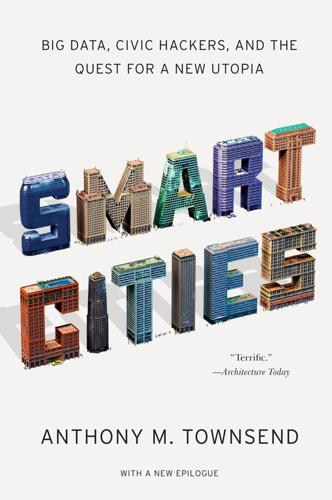
Smart Cities: Big Data, Civic Hackers, and the Quest for a New Utopia
by
Anthony M. Townsend
Published 29 Sep 2013
Miller, “Infrastructure 2011: A Strategic Priority,” Urban Land Institute and Ernst & Young, 2011, http://www.uli.org/ResearchAndPublications/%7E/media/Documents/ ResearchAndPublications/Reports/Infrastructure/Infrastructure2011.ashx. 29Ian Marlow, lecture, “X-Cities 4: Cities-as-Service,” Columbia University Studio-X, New York, April 19, 2012. 30“Global Investment in Smart City Technology Infrastructure,” Pike Research. 31“Smart City Technologies Will Grow Fivefold to Exceed $39 Billion in 2016,” ABI Research, last modified July 6, 2011, http://www.abiresearch.com/press/3715-Smart+City+Technologies+Will+Grow+Fivefold+to+Exceed+$39+Billion+in+2016. 32Colin Harrison, remarks, Ideas Economy: Intelligent Infrastructure, The Economist, New York City, February 16, 2011. 33“Smart Cities: Transforming the 21st century city via the creative use of technology,” ARUP, last modified September 1, 2010, http://www.arup.com/Publications/Smart_Cities.aspx. 34Stephen Graham, “The end of geography or the explosion of place?
…
In this new computational arms race, poor communities will be at the mercy of those who can measure and control them from a distance. Even if there is peace and equality, the smart city may come crashing down under its own weight because it is already buggy, brittle, and bugged, and will only become more so. Smart cities are almost guaranteed to be chock full of bugs, from smart toilets and faucets that won’t operate to public screens sporting Microsoft’s ominous Blue Screen of Death. But even when their code is clean, the innards of smart cities will be so complex that so-called normal accidents will be inevitable. The only questions will be when smart cities fail, and how much damage they cause when they crash. Layered atop the fragile power grid, already prone to overload during crises and open to sabotage, the communications networks that patch the smart city together are as brittle an infrastructure as we’ve ever had.
…
In chapter 4 we saw how places like New York University’s Interactive Telecommunications Program are generating new designs for technologies that could power more human-centered smart cities. But ITP is just one hub of a grassroots countercurrent of civic hacking, built on open-source and consumer technologies, that is crafting an alternative to the corporate smart cities we toured earlier. Across the globe, others are building on these foundations. In the future, they will create an entirely different kind of smart city, where computers and networks help us connect to each other and the things around us in new and weird but deeply human ways. But can their ideas about smart-city technology grow up and become a real force to be reckoned with?
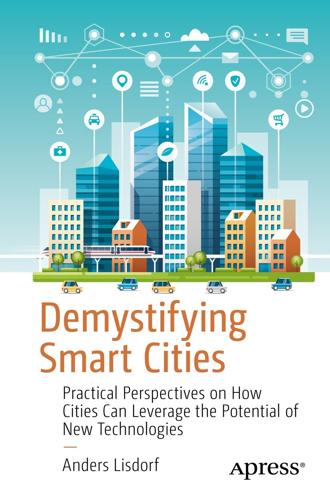
Demystifying Smart Cities
by
Anders Lisdorf
Apress Media, LLC is a California LLC and the sole member (owner) is Springer Science + Business Media Finance Inc (SSBM Finance Inc). SSBM Finance Inc is a Delaware corporation. Table of Contents Chapter 1: Introduction The history and future of cities The Smart City landscape Actors in the Smart City Areas of application of Smart City technology Outline of the book Summary Part I: Understanding smart cities Chapter 2: Connectivity Network topologies Point-to-point topology Tree topology Bus topology Star topology Mesh topology Connecting devices The anatomy of a connection Solution spotlights LinkNYC The Things Network: LoRaWAN NYC Mesh Summary Chapter 3: Devices What is a device?
…
This book is a guide to how we can change that. The Smart City landscape The concept of a smart city is not a self-explanatory one. Smart city projects are frequently airy visions fueled by vendor marketing. Mega vendors like IBM, GE, Siemens, Citrix, Samsung, and Hitachi have been banging the drums for a decade, but while their ideas are visionary, there is a huge gap between the ideas and the realization of them. Some may have heard of futuristic cities like Songdo in South Korea or Masdar in Abu Dhabi. They were envisioned as the smart cities of the future. However, they appear more like greenfield exhibits similar to Versailles than the real-life pulsating cities most people live in and want to live in.
…
Can a city not be a smart city if it copies all the best solutions from other cities? Similarly, it is difficult to validate whether the needs of future generations are really met. Strictly speaking, we would have to wait generations in order to find out if a city is indeed a smart city. Rather than getting lost on definitional details, let us focus on what seems to be the core of the smart city. We want to understand how technology can help a city deal with challenges and provide opportunities for its residents so as to make it a more sustainable, resilient, and livable city. Understanding the smart city is about understanding technology as the crucial component in softening stresses and shocks like disease, crime, and disasters and improving opportunities like employment, choice, and innovation.
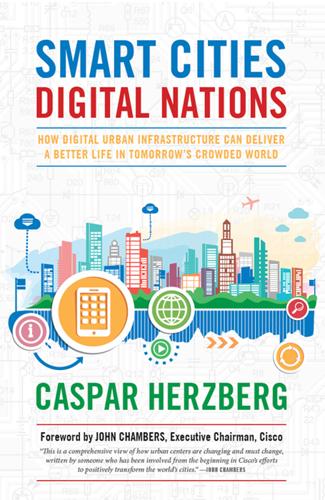
Smart Cities, Digital Nations
by
Caspar Herzberg
Published 13 Apr 2017
CONTENTS FOREWORD BY JOHN CHAMBERS MAP KEY SMART CITY PROJECTS, 2006-2017 CHAPTER 1 THE OPPORTUNITY AND NECESSITY OF THE SMART CITY CHAPTER 2 THE FLUID DEFINITION OF A SMART CITY— AND WHAT IT DOES CHAPTER 3 GENESIS: SAUDI ARABIA, 2005–2008 CHAPTER 4 SECOND CHANCE: SONGDO, KOREA, AND THE CITY LAB OF TOMORROW CHAPTER 5 ENTER THE DRAGON: CHINA’S CITIES OF THE FUTURE, TODAY CHAPTER 6 TRANSFORMING INDIA INTO A DIGITAL NATION, THE DEMOCRATIC WAY CHAPTER 7 THE INTERNET OF EVERYTHING TRANSFORMS BROWNFIELDS AND BEYOND CHAPTER 8 EGYPT, 2015: THE SMART CITY AS A PROMISING PERSPECTIVE CHAPTER 9 THEORIES ON SMART CITIES: SUSTAINABILITY IN A CROWDED WORLD CHAPTER 10 BEYOND SONGDO AND THE FUTURE OF THE CITY CONCLUSION INDEX ACKNOWLEDGMENTS FOREWORD FOR THE HUMAN RACE TO SUCCEED, our cities must succeed.
…
So while there is no single formula for successful digital modernization, ground has been broken on many new smart cities, and many more are planned in nations that desperately need them. This book identifies the challenges of smart cities and then explores their design and implementation, illustrated by firsthand experiences. And while much of the literature on smart cities focuses on what happens in the West, important contributions to the emergence of smart and globally connected cities have been made by a couple of daring, ambitious new cities in emerging and newly emerged countries. These new smart cities engage high-tech industrial pioneers to provide the digital infrastructure, and companies such as Cisco are finding success providing the Internet “plumbing” in this age of massive digital expansion.
…
. _____________________________________________ 1 “Global Health Observatory (GHO) data,” World Health Organization, 2016, www.who.int/gho/urban_health/situation_trends/urban_population_growth_text/en/. 2 “Energy Outlook for Asia and the Pacific,” Asia-Pacific Economic Cooperation and Asian Development Bank, October 2013, www.adb.org/sites/default/file/publication/30429/energy-outlook.pdf. 3 John Chambers and Wim Elfrink, “Cisco CEO: Why the future of the Internet is already here,” Fortune, July 14, 2014, http://fortune.com/2014/07/16/cisco-ceo-why-the-future-of-the-internet-is-already-here/. 4 Richard Dobbs, Sven Smit, Jaana Remes, James Manyika, Charles Roxburgh, Alejandra Restrepo, “Mapping the economic power of cities,” McKinsey Global Institute, March 2011, http://www.mckinsey.com/global-themes/urbanization/urban-world-mapping-the-economic-power-of-cities. THE FLUID DEFINITION OF A SMART CITY—AND WHAT IT DOES IN 2005, the smart city was more of a concept than a reality. A decade later, we have seen the first actual smart cities take shape, with many existing cities becoming more responsive and interactive with their residents. In another five years, it will be defined in new, often unexpected ways. This is progress, not dysfunction. Creation of a new technology is often messy and tangled at the outset. Nonetheless, for our purposes, we can establish a few definitions of what the smart city is today. The technology networking architecture companies produce and enable has far-reaching implications for every community it sup ports.
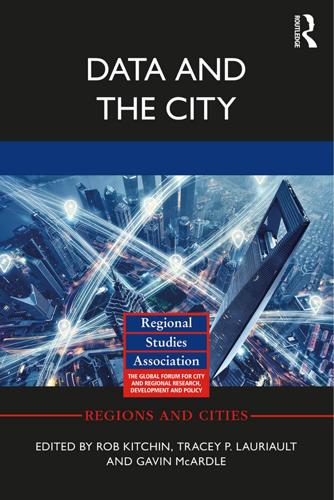
Data and the City
by
Rob Kitchin,Tracey P. Lauriault,Gavin McArdle
Published 2 Aug 2017
Burrows, R. and Gane, N. (2006) ‘Geodemographics, software and class’, Sociology 40(5): 793–812. Caragliu, A., del Bo, C. and Nijkamp, P. (2011) ‘Smart cities in Europe’, Journal of Urban Technology 18(2): 65–82. Castells, M. (2002) ‘The culture of cities in the information age’, in I. Susser and M. Castells (eds), The Castells Reader on Cities and Social Theory. Malden, MA: Blackwell, pp. 367–389. Coenen, T., van der Graaf, S. and Walravens, N. (2014) ‘Firing up the city: a smart city living lab methodology’, Interdisciplinary Studies Journal (Special Issue on Smart Cities) 3(4): 118–128. Concilio, G., Puerari, E. and Rizzo, F. (2013) Living Labs Models for co-designing in Urban and Public Space.
…
Graham, S. (2005) ‘Software-sorted geographies’, Progress in Human Geography 29(5): 562–580. Greenfield, A. (2013) Against the Smart City. New York: Do projects. Harrison, C. and Donnelly, I.A. (2011) ‘A theory of smart cities’, in Proceedings of the 55th Annual Meeting of the ISSS – 2011, Hull, UK, available from: http://journals.isss. org/index.php/proceedings55th/article/view/1703 [accessed 24 November 2016]. Hemment, D. and Townsend, A. (2013) Smart Citizens. Manchester: FutureEverything Publications. Hollands, R.G. (2008) ‘Will the real smart city please stand up? Intelligent, progressive or entrepreneurial?’, City 12(3): 303–320. Jacobs, J. (2000) The Death and Life of Great American Cities.
…
Batty, M. (2013) The New Science of Cities. Cambridge, MA: MIT Press. Batty, M. (2014) ‘Can it happen again? Planning support, Lee’s requiem and the rise of the smart cities movement’, Environment and Planning B: Planning and Design 41(3): 388–391. Batty, M., Hudson-Smith, A., Hugel, S. and Roumpani, F. (2015) ‘Visualising data for smart cities’, in A. Vesco and F. Ferrero (eds), Handbook of Research on Social, Economic, and Environmental Sustainability in the Development of Smart Cities. Hershey, PA: IGI Global, pp. 339–362. Berry, B.J.L. (1964) ‘Approaches to regional analysis: a synthesis’, Annals of the Association of American Geographers 54: 2–11.
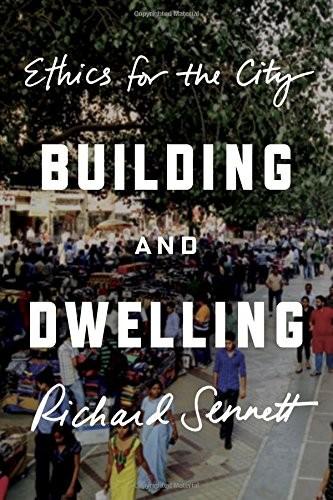
Building and Dwelling: Ethics for the City
by
Richard Sennett
Published 9 Apr 2018
In the modern city, how might high tech make us smarter, or dumb us down? IV. THE TWO SMART CITIES – PRESCRIBE OR COORDINATE There are two kinds of smart city, closed and open. The closed smart city will dumb us down, the open smart city will make us smarter. * * * Prescribe The closed smart city is a Googleplex enlarged, filled with Tocquevillian individuals, fuelled by user-friendly technology which stupefies its citizens. In this dystopia, as the Dutch planners Maarten Hajer and Ton Dassen write, ‘urban technologies will make cities safer, cleaner and, above all, more efficient … Smart cities will “sense” behaviour via big data and use this feedback to manage urban dynamics and fine-tune services.’
…
Systems of prescription are hermetic, while systems of coordination are hermeneutic – meaning that the complex calculations required to make the city work are, in the prescriptive smart city, hidden away from city-dwellers, just as Peter Merholz wants, whereas in the coordinative smart city, people have to get engaged in the data, interpreting it (the hermeneutic) and acting on it, for better or worse – a coordinative smart city can make mistakes. All of which forms a political contrast: the prescriptive smart city is inherently authoritarian, while the coordinative smart city is democratic. Democratic deliberation doesn’t mean much in Songdo, simply because there was little wiggle room built into the plan itself.
…
Bill Mitchell in the Media Lab was an early believer in this solution, convinced that the smart city could set right social relations. Since he wrote City of Bits, ‘the’ smart city has in fact become two different kinds of city. In the one, advanced technology prescribes how people should use the spaces they inhabit; the ville dictates to the cité. In the other, high-tech coordinates but does not erase messier activities in the cité. The prescriptive smart city does mental harm; it dumbs down its citizens. The coordinating smart city stimulates people mentally by engaging them in complex problems and human differences.
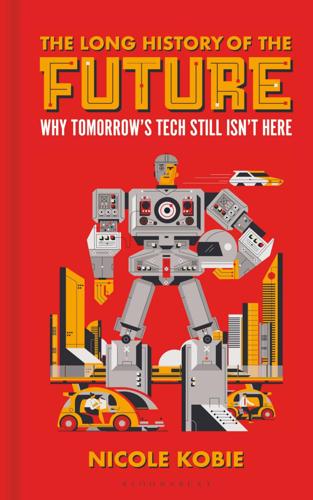
The Long History of the Future: Why Tomorrow's Technology Still Isn't Here
by
Nicole Kobie
Published 3 Jul 2024
‘We’re left with the sense that everything knowable and worth knowing about a city can fit on a screen – which simply isn’t true.’ If smart cities are so inherently flawed, why are they happening? The answer lies with a cohort of companies that effectively invented the idea to get their hooks into municipal budgets, with city authorities desperate to find solutions to growing problems – and politicians who want to look progressive by riding the tech wave. Depending on the definition of a smart city, they go back a very long time indeed, though arguably what’s required to be a smart city has changed over time as technology has advanced. Early smart cities, from well before the term was coined, collected and applied data to solve problems – we’ll see an example from the 1850s – and though that sounds smart it doesn’t always end well, especially once that data is plugged into algorithms or whacked into a dashboard with little other purpose than as a backdrop for politicians at press conferences
…
During my visit, a local government representative told me the plan now was to turn Cyberjaya into a living lab for smart city technologies – yes, this again – be it digital signage or smart traffic lights or whatever else your startup can think up. A local investor told me the government tried to encourage the right sort of companies to establish offices in Cyberjaya by offering them significant, long-running tax rebates. To get the cash, his company set up an office, but spent all their time in Kuala Lumpur. Because that’s where the people are. You can’t have a smart city without people. And here’s the thing: Kuala Lumpur is epic and exciting and brilliant. It is a smart city: it makes use of the various technologies for city management, has a smart city plan for future innovations, and most importantly, is a place where people want to be.
…
‘Smart cities are not an end in themselves but a means to an end,’ argues Antoni Vives in his memoir of the project. That’s echoed by Josep-Ramon Ferrer, the director of Barcelona’s smart city program. He advises in a paper basing a smart city centre not on what gadgets to choose and how to organise data, but on how to engage citizens, ensure appropriate governance and respond to local challenges – this isn’t smart city management, this is city management. Core to the project was an online consultation platform, set up by Francesca Bria, then chief technology and digital innovation officer for the city, that let citizens share their views on government plans. In most cities, consultations are obscure, complex and hard to find.
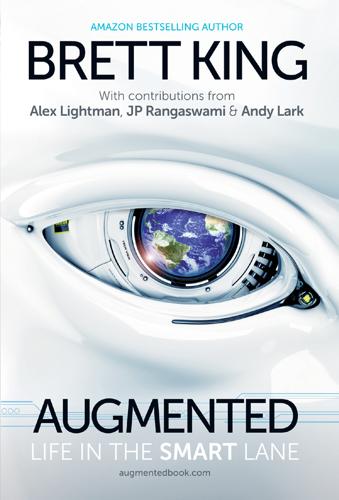
Augmented: Life in the Smart Lane
by
Brett King
Published 5 May 2016
A more nuanced definition should include elements such as: • An urban area that uses information and communications technologies (ICT) to improve the performance of urban services, to reduce the costs and consumption of resources, and that engages with its citizens as stakeholders.5 • Specific sectors that have been transformed with such technology include government services, traffic management, energy, health care and reduced air and water pollution.6 Smart cities are smart not only because of the services they offer their citizens, but also because of their responsiveness to critical issues such as natural disasters and their day-to-day utilisation of resources. As the effects of climate change impact more and more cities, the ability of a city to respond will be a key differentiator. However, the temptation will be for governments to focus on areas like support for start-ups with technology hubs or a few smart, green buildings and to then proclaim they are now a smart city. A real smart city will have to be re-engineered from the ground up around an urban environment that uses technology to make life better for its citizens, offers smart employment, transportation and living and enables a positive environmental impact (reversing pollution, etc.) including independence from fossil fuel generation.
…
Consequently, he fired almost the entire staff that was involved and replaced it with a more streamlined organisation. Citizen engagement via social media and through personal smart devices is critical to smart cities; in fact, prominent smart city experts such as Mark Deakin consider that a smart city is not possible without it. An increasing number of mobile apps have enabled citizens to report crimes, racist abuses, needed street repairs and corruption, as well as mudslides, fires and other dangers during emergencies or disasters.9 Whereas the volume of social media inputs such as Twitter feeds can be overwhelming, the Red Cross and others have developed smart AI tools that can filter and interpret such masses of citizen data.10 Twitter has been working with the United States Geological Survey (USGS) and researchers at Stanford University to measure earthquake impact in real time via Twitter activity and it appears to closely correlate with USGS monitoring data.11 New AI-based tools for smart cities will soon enhance the visibility and effectiveness of city management, as well as dramatically improve city planning and design processes.
…
Similar chaotic conditions occurred in Australia during the “Black Saturday” bushfires of 2009, in which different agencies sometimes worked against each other, with one group closing highways that others had tagged as evacuation routes; 173 people died, and hundreds were injured. Figure 11.5: The Rio Operations Center (Credit: IBM Smart Cities) Smart cities will overcome this by insisting that all relevant agencies have smart devices that have resiliency features to help overcome occasional transmission losses, use common terms, plan together, and train and exercise together frequently, using daily the systems that they will need to use during a period of crisis. An example of a smart city disaster management system that is integrated and used every day, not just during disasters, is the Rio de Janeiro public information management centre, the Rio Operations Center, located in Cidade Nova.
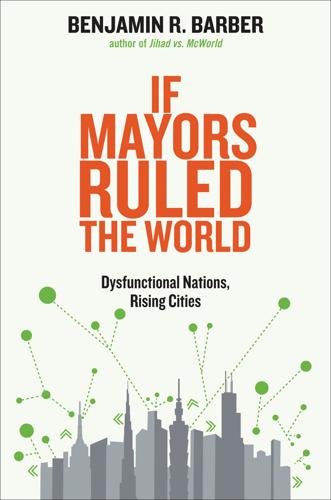
If Mayors Ruled the World: Dysfunctional Nations, Rising Cities
by
Benjamin R. Barber
Published 5 Nov 2013
On the day Obama announced there were 77 million blogs.”3 Back in 2004, Facebook was still a Harvard undergraduate’s experiment in girl-watching, it now has a half billion or more subscribers throughout the world. Yet even today, Trippi writes, “government seems to be the last place that’s taking advantage of it.” Except in cities. New, cutting edge smart cities. Smart cities are in the first instance simply tech-savvy towns that utilize digital innovation to do their business. But smart cities are also self-consciously interdependent cities that use technology to enhance communication, hoping to make smart cities wireless nodes in a global network and reinforce their natural inclination to connectivity and collaboration. For civic entities defined as much by interaction, creativity, and innovation as by place, maps, and topographical boundaries, the cloud isn’t a bad place to be.
…
Corporations have a fiscal obligation to their shareholders to make money off their urban technology, but cities need to be aware that the smart-city portion of the business sector was estimated to have earned as much as $34 billion in 2012 and has been projected to be able to earn $57 billion by 2015. Tech companies do not embrace smart-city initiatives disinterestedly in the name of public goods, though that certainly does not mean their partnerships cannot also serve such goals.11 A cursory hunt on any search engine under “smart cities” turns up multiple listings that mirror City Protocol’s Barcelona-Cisco partnership. IBM Smarter Cities, for example, is working with IBM in Birmingham, England, on mapping inputs and outputs on policy decisions.
…
IBM Smarter Cities, for example, is working with IBM in Birmingham, England, on mapping inputs and outputs on policy decisions. Then there is Siemens Smart Cities, along with dozens of other companies putting commercial applications to apparent political purposes, including Schneider Electric, the Thales Group, Oracle Corporation, and Wonderware. Many cities are developing planning programs, tech parks, and research centers that allow them to throw around heated if somewhat opaque self-descriptions like Smart City Málaga, Dubai Internet City, or Yokohama Smart City. Such handles often seem like little more than advertising slogans akin to The Big Apple (New York) or The Eternal City (Rome) or City of Sails (Auckland, New Zealand).
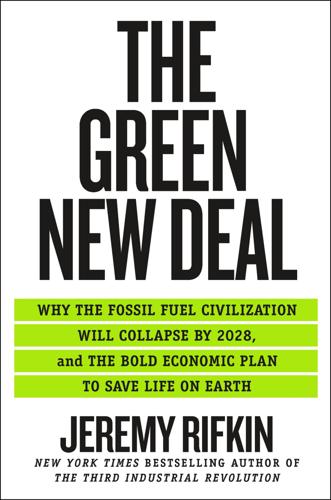
The Green New Deal: Why the Fossil Fuel Civilization Will Collapse by 2028, and the Bold Economic Plan to Save Life on Earth
by
Jeremy Rifkin
Published 9 Sep 2019
Jim Balsillie, “Sidewalk Toronto Has Only One Beneficiary, and It Is Not Toronto,” Globe and Mail, October 5, 2018, https://www.theglobeandmail.com/opinion/article-sidewalk-toronto-is-not-a-smart-city/ (accessed February 14, 2019). 33. Ibid. 34. Ibid. 35. Vipal Monga and Jacquie McNish, “Local Resistance Builds to Google’s ‘Smart City’ in Toronto,” Wall Street Journal, August 1, 2018, https://www.wsj.com/articles/local-resistance-builds-to-googles-smart-city-in-toronto-1533135550 (accessed February 2, 2019). 36. Ibid.; Ava Kofman, “Google’s ‘Smart City of Surveillance’ Faces New Resistance in Toronto,” The Intercept, November 13, 2018, https://theintercept.com/2018/11/13/google-quayside-toronto-smart-city/ (accessed February 2, 2019). 37.
…
At the press conference announcing the new partnership between Sidewalk Labs and Toronto, Schmidt thanked Canada for allowing Google in, saying that his company’s long-held dream had come true: for “someone to give us a city and put us in charge.”32 Writing in the Globe and Mail a year later, Jim Balsillie, the former chairman and co-CEO of Research In Motion, a company that commercializes intellectual property in more than 150 countries, summed up the significance of this first trial run in creating a privatized smart city that so excited Schmidt. Balsillie pointed out that “‘smart cities’ are the new battlefront for big tech because they serve as the most promising hotbed for additional intangible assets that hold the next trillion dollars to add to their market capitalizations.” The real commercial value, according to Balsillie, is that “‘smart cities’ rely on IP and data to make the vast array of city sensors more functionally valuable, and when under the control of private interests, an enormous new profit pool.”33 In the year since the official announcement, it has become even clearer that Sidewalk Labs wants Toronto’s blessing, but it does not relish the city’s active involvement and oversight in the build-out and management of the smart neighborhood on the waterfront.
…
What made her resignation particularly meaningful is that she was commissioned by Sidewalk Labs to help establish a “privacy by design” protocol for the development, only to find out later that third parties might enjoy access to “identifiable data.” In her resignation letter, Cavoukian said, “I imagined us creating a smart city of privacy as opposed to a smart city of surveillance.”37 The problem does not lie with Sidewalk Labs’ expertise. The company boasts some of the best talent available for establishing digitally connected, efficient, and environmentally sustainable smart cities. All to the good. Rather, it is the business model that is at fault, as is the case with any public-private partnership in which the commercial interest of the developer is primarily in securing lucrative revenue streams and profit over time; more often than not, this compromises the notion that infrastructure should be treated as a public good and a service everyone relies on and therefore best belongs in the hands of local governments that represent the will of all the citizenry.
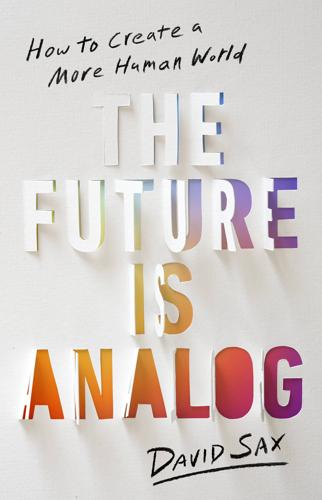
The Future Is Analog: How to Create a More Human World
by
David Sax
Published 15 Jan 2022
If it all looked and sounded like some Epcot ride on the city of the future, well, that was the point. “Smart cities are happier cities,” boasted Miguel Eiras Antunes, the global smart city leader at Deloitte, in an article posted on the company’s website last year. “Smart cities use data and digital technology to enhance the quality of life of their citizens. From safer streets to greener spaces, from a reasonable commute to access to art and culture, a smart city creates an environment that promotes the best of urban living and minimizes the hassles of city life.” Some governments proposed brand-new smart cities from the ground up, like NEOM (an acronym for New Enterprise Operating Model), a planned digital city on Saudi Arabia’s Red Sea coast that promised to raise an “accelerator of human progress” out of the sand, with the latest digital technology delivering “a new model for sustainable living” in every aspect of life, from energy and water use to education, tourism, and sport.
…
Not a day goes by where I don’t witness an Uber driver making a suicidal, blind U-turn on a busy street, or pulling over in the middle of a bike lane without a signal, or driving the wrong way on a one-way street (my damn street!), or, my favorite, driving into a park across a lawn because their phone told them to. “What the ‘smart city’ people have never done is understand what an actual smart city is,” Gratz said. “A smart city adapts innovative new things. But it doesn’t let innovative new technology control things. A city is about people, and people don’t want be controlled by technology. So instead of using technology in smart ways to improve the city, they tried creating a city out of technology.”
…
Infrastructure is the lynchpin that shapes how a city’s story unfolds. On its own, infrastructure is not enough to meet the needs of the city, but it makes everything that happens in the city possible. The smart city promised that our destiny lay in digitizing the city’s infrastructure, but the pandemic revealed a deeper truth about the analog heart of city life. The origins of the smart city date back to the 1930s and the rise of both automobiles and modernist design, when legendary architects such as Frank Lloyd Wright and Le Corbusier presented their sweeping visions for the future. Wright’s Broadacre City, Corbusier’s Radiant City, and, later, Buckminster Fuller’s insane plans to cover whole swaths of cities with giant glass structures were marvels of futurist technological utopianism.
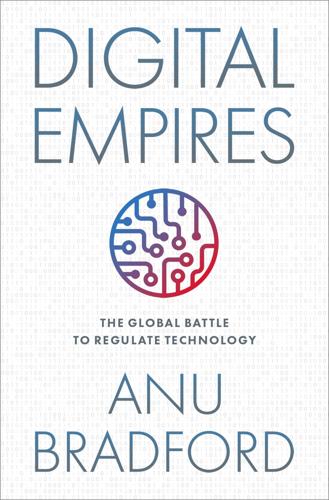
Digital Empires: The Global Battle to Regulate Technology
by
Anu Bradford
Published 25 Sep 2023
Indeed, eight out of the ten most surveilled cities in the world are in China.110 Out of the roughly 1,000 smart cities that are being built worldwide, around 500 can be found in China.111 While the government has emphasized the benevolent deployment of smart city technologies, such as smart traffic management or better management of power grids, little evidence supports the claim that those smart cities have to date significantly improved the lives of Chinese citizens. Instead, the smart city initiatives serve the governmental goal of installing an expansive surveillance system used to monitor and control the citizens.
…
In addition—and this is what critics fear the most—the Chinese government is potentially also gaining access to the data that flows through these AI systems empowering smart cities, given the closely intertwined relationship between the Chinese tech companies and the Chinese Communist Party (CCP).20 It is difficult to gain information about the precise scope of the smart city projects. According to a 2020 report by the US–China Economic and Security Review Commission, which was created by the US Congress to monitor the national security implications of US–China economic relations, Chinese companies have installed smart city technologies in 398 identified projects. Those projects span across 106 countries and involve 34 different Chinese firms, Huawei being the leading vendor.21 While the greatest demand for smart city contracts comes from authoritarian countries, liberal countries are also deploying Chinese technologies to optimize their governance.
…
This way, the DSR also paves the way for the Chinese government to externalize its state-driven regulatory model abroad—one DSR project at a time. While DSR projects come in many forms, so-called smart cities or safe cities can be highlighted as common yet contested examples of China’s global influence over digital infrastructures. While these two terms are often used interchangeably, including in this book, smart city initiatives typically refer to improving municipal operations such as automating traffic control or power distribution, whereas safe city initiatives typically refer to improving public safety by automating policing to detect criminal and other harmful behavior.18 What these initiatives have in common is their reliance on AI-powered technologies such as surveillance cameras, metering devices, sensors, and other similar monitoring technologies, combined with processing of data that these systems acquire.
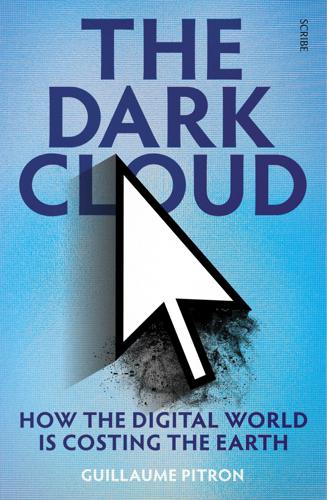
The Dark Cloud: How the Digital World Is Costing the Earth
by
Guillaume Pitron
Published 14 Jun 2023
The PRT also needed to be able to operate in a tunnel — a proposal/feature that was never applied. 8 The numerous anomalies in the measurement of water and air conditioning consumption have not been resolved, ‘and no one seems to understand why these features do not work’, Gökçe Günel reports in her book Spaceship in the Desert, op.cit. 9 ‘Masdar’s zero-carbon dream could become world’s first green ghost town’, The Guardian, 16 February 2016. 10 ‘Mapping Smart Cities in the EU’, Directorate General for Internal Policies, Policy Department, Economic and Scientific Policy, January 2014. 11 ‘Navigant Research’s smart city tacker 2Q19 highlights 443 projects spanning 286 cities around the world’, Business Wire, 20 June 2019. According to the market intelligence firm Navigant Research, the annual global technology market for smart cities, which stood at US$97.4 billion in 2019, is expected to total $263 billion by 2028. 12 Interview with Gökçe Günel, lecturer in anthropology at Rice University in Houston, Texas, 2020. 13 From 1994, in his paper Green Signals: the environmental role of telecommunications in cities, the UK researcher Simon J.
…
Marvin challenges the conventional thinking that telecommunications could actively contribute to the development of more sustainable cities. And in an article published in 2014 entitled ‘Smart cities and green growth: outsourcing democratic and environmental resilience to the global technology sector’, UK researchers Jenni Viitanen and Richard Kingston reference and follow on from Simon J. Marvin’s research, making tentative assumptions on the environmental impact of smart cities: ‘It is likely that the smarter a city gets the more e-waste it will create’. They conclude by calling on policy makers to ‘take a less naïve view about the risks and benefits’ of smart cities, without making any clear calculations. Finally, in 2016, the report by the Environmental Industries Commission, Getting the Green Light: will smart technology clean up city environments?
…
What makes this dune-locked city out of the space age so fascinating are the technologically ambitious plans in store for its development.1 The Emirati government plans to make Masdar — the Arabic word for ‘source’ — the world’s most sustainable eco-city, using the most modern digital technologies ever designed.2 By 2030, and with 17 billion euros in investments, Masdar promises to be the regional if not global model of smart urban design.3 One promotional video boasts that the city’s 50,000 future inhabitants will enjoy ‘the highest quality of life with the lowest possible environmental impact’.4 Masdar City is already a dream coming true, and that is to be one of the most enjoyable cities to live in on Earth. Smart cities in aid of the planet Masdar City is the embodiment of the hopes that have been pinned on smart cities and digital technology to improve our lives. And there’s good reason to believe that they can. Over half of the world’s population is now concentrated to urban areas, and while they only cover 2 per cent of the Earth’s surface, they are responsible for generating 75 per cent of the world’s power, and producing 80 per cent of the world’s carbon dioxide emissions.
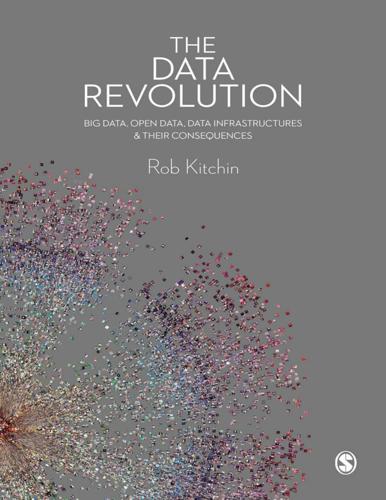
The Data Revolution: Big Data, Open Data, Data Infrastructures and Their Consequences
by
Rob Kitchin
Published 25 Aug 2014
Such big data provide a fine-grained, dynamic, cohesive understanding of cities and the inputs for systems that will create more liveable, secure, functional, competitive and sustainable places (Hancke et al. 2013; Townsend 2013). Such a smart city vision is being heavily promoted by a number of the world’s largest software services and hardware companies (e.g., IBM, CISCO, Microsoft, Intel, Siemens, Oracle, SAP) and being enthusiastically adopted by municipal, national and supranational institutions who foresee smart city technologies producing socio-economic progress and renewing urban centres as hubs of innovation and work (Kourtit et al. 2012). Whilst some smart city projects are being built from the ground up (e.g., Songdo or Masdar City), most are piecemeal and consist of retrofitting existing infrastructure with digital technology and data solutions.
…
Microsoft Research, Redmond, WA, pp. xvii–xxxi. Hilbert, M. and López, P. (2011) ‘The world’s technological capacity to store, communicate, and compute information’, Science, 10(331): 703–05. Hill, D. (2013) ‘On the smart city: or, a “manifesto” for smart citizens instead’, City of Sound, 1 February, http://www.cityofsound.com/blog/2013/02/on-the-smart-city-a-call-for-smart-citizensinstead.html (last accessed 5 February 2013). Hollands, R.G. (2008) ‘Will the real smart city please stand up?’, City, 12(3): 303–20. Hon, W.K., Millard, C. and Walden, I. (2011) The Problem of ‘Personal Data’ in Cloud Computing – What Information is Regulated?
…
As a consequence, over the past few decades, cities have embraced ICTs as a key component of their development strategies (Castells 1996; Graham and Marvin 1996; Kitchin 1998). The latest incarnation of such an ICT-led vision of urban development is the notion of smart cities, which conceives of places being increasingly composed of and monitored by pervasive and ubiquitous computing and whose economy and governance is driven by innovation, creativity and entrepreneurship, enacted by smart people. The smart city is densely instrumented and can be understood and regulated in real-time; it produces, shares, integrates, consumes and acts on big data (Kitchin 2014). Such big data provide a fine-grained, dynamic, cohesive understanding of cities and the inputs for systems that will create more liveable, secure, functional, competitive and sustainable places (Hancke et al. 2013; Townsend 2013).
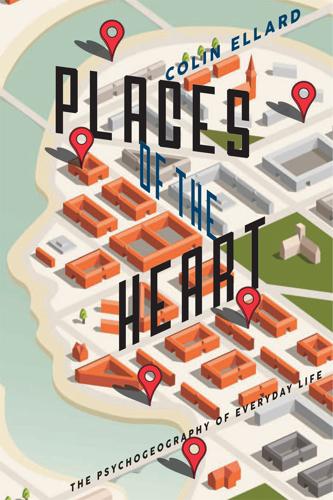
Places of the Heart: The Psychogeography of Everyday Life
by
Colin Ellard
Published 14 May 2015
What could be more appealing than the idea that we could wire everything together, attach it to a gleaming mission control headquarters filled with gargantuan computing devices that can comprehend and orchestrate all of the city’s business, leaving us free to bask in the care of a city that works automatically and in the best possible way? Nobody has done a better job of outlining the risks of smart city developments as they are currently envisioned than director of New York’s design practice Urbanscale, Adam Greenfield. In his pamphlet Against the Smart City, Greenfield pores through the public relations material offered by the big players in the smart city market—Siemens, Microsoft, and Cisco—to try to deconstruct what these techno-giants might envision for our near future.14 In his incisive analysis, he points out first that the schemes offered by these companies, at least according to the vision that they are trying to sell to the public and to the administrators of cities, appear to consist of one-size-fits-all system software designed to harness the collective power of the Internet of Things to optimize the function of a city using a set of all-encompassing algorithms.
…
If it’s really true that the use of a simple GPS system for wayfinding might cause changes in the organization of our brains, impoverishing neural systems through lack of use, then what effects would more comprehensive systems envisioned by smart city planners bring about? It’s hard not to imagine that a feeling of helpless dependence and infantilization might be one of them. Just as worrisome to me is the possibility that one-size-fits-all formulas imposed on cities from on high and designed for the generic human being might actually become self-fulfilling. Cushioned by a system of feedback loops that “protects” us from ourselves, it seems entirely possible—likely, in fact—that residents of a smart city, as envisioned by the current generation of smart city technology providers, might regress toward the mean.
…
Rather than concerning themselves with the wiring together of a few household appliances to make our morning routines easier, massive corporations like Siemens and Microsoft are pushing hard to develop comprehensive systems that can do for an entire city what a Nest thermostat, which learns to turn down the heat when you leave your house and can talk to you via your phone, does for an individual abode. Indeed, entire cities such as Songdo City in Korea or Masdar in the United Arab Emirates, are beginning to spring from the ground complete with so-called smart city infrastructure. The utopian vision of the smart city is one in which the entire place is networked together to realize every possible efficiency. There is no traffic congestion, there are instant automated responses to emergencies, adaptive HVAC systems manage energy balances in the most efficient way possible, and other systems designed all the way down to the minute details of the lives of individual residents are there to take care of us.
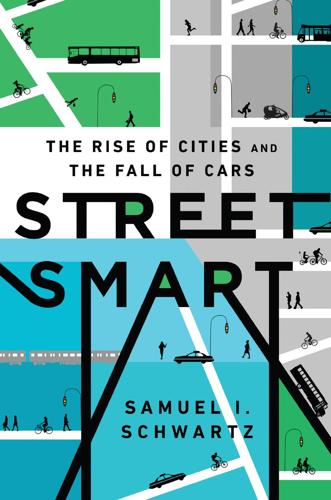
Street Smart: The Rise of Cities and the Fall of Cars
by
Samuel I. Schwartz
Published 17 Aug 2015
When ride-matching services like Uber and Lyft treat city streets as a free good, they’re just repeating the same conceptual mistake that the original champions of motordom did during the 1920s—the argument that, while streetcars and trains were responsible for maintenance of “their” right-of-way, streets were free for everyone. Smart cities shouldn’t insist on stupid regulation. But that doesn’t mean they can do without regulation at all. On Alice’s second trip through the looking glass, she meets Humpty Dumpty, who tells her that the word glory means the same thing as “a nice knock-down argument.” When she objects, he tells her, “When I use a word, it means just what I choose it to mean—neither more nor less.” Smart city is like that. Ever since the term smart cities started appearing in the early 2000s, it’s been used in a dozen different senses, from describing the sort of place that attracts creative industries like publishing, design, R&D, and advertisingg to one that is able to adapt to changing circumstances, to one that offers a more sustainable quality of life.
…
Until very recently, nearly everyone made travel decisions—Shall we walk or ride? Depart this morning or this afternoon?—using a very limited number of tools that were mostly just a combination of habit and guesswork. In many parts of the world, that’s still the case. In smart cities, though, these limits don’t exist anymore. In them, giant oceans of information about schedules, prices, and routes are easily navigated by just about everyone. It’s not that smart cities are filled with nothing but smart people (though it may be that they’re the first to realize the advantages of living in them). It’s that you don’t have to be a genius to get the most out of smart buses, smart streetcars, smart sidewalks, and, of course, smart streets.
…
Like the old-fashioned grid, a modern smart grid can shunt power to different portions of the network automatically, but it can also manage consumption. There are dozens of analogies for this kind of data collection and management in a smart city’s transportation grid. The four-thousand-plus sensors that Zurich Public Transport uses to manage automobile and streetcar traffic are one of them. Like an electrical utility adjusting the cycle of an industrial air conditioner because the system is operating at peak demand, Zurich allows only as many cars into its center city as can be accommodated without congestion. Just as important, though, for a smart city’s transportation system is the ever-growing network of hundreds of millions of GPS-enabled smartphones.
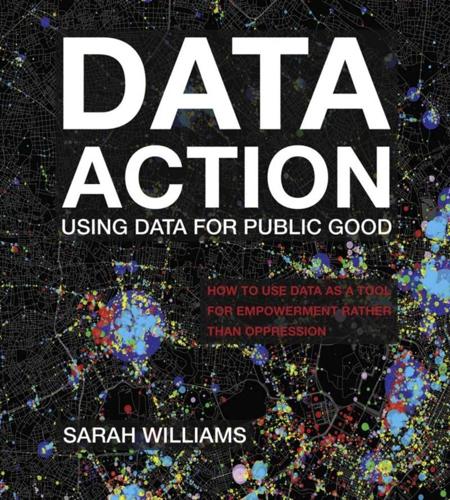
Data Action: Using Data for Public Good
by
Sarah Williams
Published 14 Sep 2020
Barnes, “Geography's Underworld: The Military–Industrial Complex, Mathematical Modelling and the Quantitative Revolution,” Geoforum 39, no. 1 (January 2008): 3–16, https://doi.org/10.1016/j.geoforum.2007.09.006. 78 Barnes, “Geography's Underworld.” 79 Peter Hall, “The Turbulent Eighth Decade: Challenges to American City Planning,” Journal of the American Planning Association 55, no. 3 (1989): 275–282, https://doi.org/10.1080/01944368908975415. 80 Forester, Planning in the Face of Power. 81 Light, From Warfare to Welfare. 82 Mark Vallianatos, “Uncovering the Early History of the ‘Big Data’ and the ‘Smart City’ in LA,” Boom, https://boomcalifornia.com/2015/06/16/uncovering-the-early-history-of-big-data-and-the-smart-city-in-la/. 83 Richard L Meier, A Communications Theory of Urban Growth (Cambridge, MA: MIT Press, 1962). 84 Anthony M. Townsend, Smart Cities: Big Data, Civic Hackers, and the Quest for a New Utopia (New York: Norton, 2013). 85 Ibid. 86 James N. Gray, David Pessel, and Pravin P. Varaiya, “A Critique of Forrester's Model of an Urban Area,” IEEE Transactions on Systems, Man, and Cybernetics, no. 2 (1972): 139–144. 87 Michael Batty and Paul M.
…
Data literacy is essential for these data enthusiasts as well as the general public. Smart Cities and Big Data: Urban Modeling Rebooted In the last decade there has been an upsurge of interest among private and public agencies in the uses of data for the design, planning, and management of cities and urban environments. Excitement around the potential of “big data” to change the way we see the world has created an enthusiasm for applying data to civic action and policy change. IBM developed its “Smart Cities” and “Smarter Planet” advertising campaigns in 2008 to promote the use of technology and data to analyze the problems of cities.98 In 2010, IBM created a partnership with Rio de Janeiro to make it a model Smart City.99 During that same year, Cisco launched its “Smart and Connected Communities” program, which is based on using data analysis and web-based interface programs to connect cities through technology.100 Also in 2010, the Economist magazine developed a series of stories called the “Data Deluge,” which explained the possibilities of using data to develop strategies for almost anything, including cities.
…
Craig, “The Democratization of Data: Bridging the Gap for Community Groups,” Journal of the American Planning Association 62, no. 4 (December 31, 1996): 512–523, https://doi.org/10.1080/01944369608975715; Rina Ghose, “Politics of Scale and Networks of Association in Public Participation GIS,” Environment and Planning A 39, no. 8 (2007): 1961–1980; Wendy A Kellogg, “From the Field: Observations on Using GIS to Develop a Neighborhood Environmental Information System for Community-Based Organizations” 11, no. 1 (1999): 19; Elwood, “GIS Use in Community Planning.” 98 “IBM Smarter Cities—Future Cities—United States,” August 3, 2016, http://www.ibm.com/smarterplanet/us/en/smarter_cities/overview/. 99 Natasha Singer, “IBM Takes ‘Smarter Cities’ Concept to Rio de Janeiro,” New York Times, March 3, 2012, https://www.nytimes.com/2012/03/04/business/ibm-takes-smarter-cities-concept-to-rio-de-janeiro.html. 100 Pete Swabey, “IBM, Cisco and the Business of Smart Cities,” Information Age, February 23, 2012, https://www.information-age.com/ibm-cisco-and-the-business-of-smart-cities-2087993/. 101 “The Data Deluge,” Economist, February 25, 2010, https://www.economist.com/leaders/2010/02/25/the-data-deluge. 102 “Microsoft CityNext: Coming to a City Near You,” Stories, July 10, 2013, https://news.microsoft.com/2013/07/10/microsoft-citynext-coming-to-a-city-near-you/. 103 Stephen Goldsmith and Susan Crawford, The Responsive City: Engaging Communities Through Data-Smart Governance (Hoboken, NJ: John Wiley & Sons, 2014). 104 Susan Fainstein and James DeFilippis, Readings in Planning Theory (Hoboken, NJ: John Wiley & Sons, 2015).
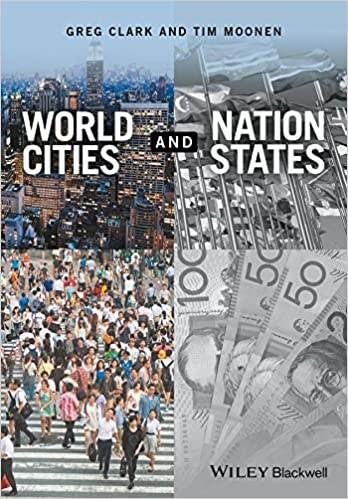
World Cities and Nation States
by
Greg Clark
and
Tim Moonen
Published 19 Dec 2016
The relaxation of these norms may allow land reclamation and the unlocking of development potential, especially for tourism. Complementing smart cities with smart governance agenda The Prime Minister of India, Narendra Modi, has initiated serious thinking about smart cities as he looks to boost smaller satellite cities and kick start inland industrial growth. The scheme promises to deliver public money in pri vate sector partnerships to deliver water supply, modern sewerage systems, solid waste management and infrastructure, if city bodies are able to execute them effectively (The Times of India, 2014). The attention directed at smart cities is welcome in incentivising better standards, but is just the start of a deeper process of reform.
…
Japan also positions Tokyo and other Japanese cities as pioneers of smart urban development, which attracts a great deal of interest from other national governments. Japanese smart city concepts (such as Kashiwa‐no‐ha, transit‐oriented development and urban area management) are welcomed by the national ministries, and are demonstrated to other countries in eastern and southern Asia for how cities can embed disaster 88 World Cities and Nation States prevention, health innovation and new cluster incubation (Kashiwa‐No‐Ha Smart City, 2015). The national system of cities: Tokyo and Japan Today, Tokyo is the only city in Japan governed as a metropolitan prefecture, and is one of 47 prefectures in Japan.
…
Available at http://indianexpress.com/article/cities/mumbai/govt‐ seeks‐to‐amend‐rent‐control‐act‐to‐keep‐out‐larger‐houses/#sthash.okQXJPrV.dpuf. Accessed 2016 Feb 9. 256 References The Times of India (2014). Govt plans to attract private players to help develop Smart Cities. The Times of India. Available at http://timesofindia.indiatimes.com/business/india‐business/ Govt‐plans‐to‐attract‐private‐players‐to‐help‐develop‐Smart‐Cities/articleshow/44735719. cms. Accessed 2016 Feb 9. World Bank (2014). Data by country. Available at http://data.worldbank.org/. Accessed 2016 Feb 9. World Economic Forum (2015). The Global Competitiveness Report 2015–16.
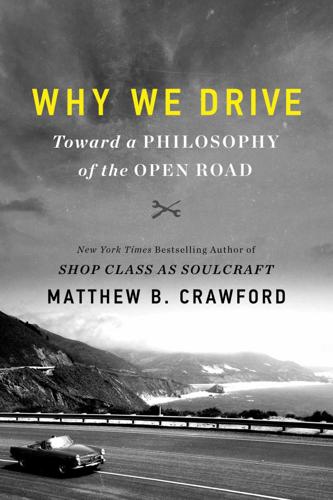
Why We Drive: Toward a Philosophy of the Open Road
by
Matthew B. Crawford
Published 8 Jun 2020
A Glorious, Collisionless Manner of Living The vision of smooth-flowing mobility that is offered on behalf of driverless cars can be fully laid out only as part of a larger vision, that of the “smart city.” The idea is that our movements through the city, the infrastructure we depend on, the police protections, trash collection, parking, deliveries and all the other services that make a city work, will be orchestrated by an “urban operating system.” As part of the smart city vision, driverless cars are thus one element in a striking intellectual movement. It is striking not least for its revival of a long-standing modernist ambition, that of transformative urban planning.
…
Lucsko, Junkyards, Gearheads, and Rust: Salvaging the Automotive Past (Baltimore: Johns Hopkins University Press, 2016), p. 128. 2.David Freiburger, “Patina,” Hot Rod Magazine, April 2007, p. 61, as quoted by Lucsko, Junkyards, Gearheads, and Rust, p. 128. 3.The 2017 Lexus NX hybrid gets a combined 31 city/highway mpg and has an MSRP of $39,720. 4.Lucsko, Junkyards, Gearheads, and Rust, p. 133. 5.Zelda Bronstein shows how light industry gets chased out of cities under the banner of progressive urbanism. Whole ecosystems of industrial know-how that took long to develop are vacated, to be replaced with urban landscapes devoted to “lifestyle” consumption, art galleries, and all the rest. Zelda Bronstein, “Industry and the Smart City,” Dissent, Summer 2009, https://www.dissentmagazine.org/article/industry-and-the-smart-city. Bronstein, whom I count a friend, is in her seventies and exemplifies an older left: her sympathies lie with production over consumption, and labor over rentiers. In this she has found herself out of joint with some of today’s progressives who seem to worry about gentrification, not out of a concern to preserve space for productive activities, but to block incursions of what they take to be a malignant force directed against innocents, a moral drama understood in racial terms. 6.Lucsko, Junkyards, Gearheads, and Rust, p. 134. 7.Michael Oakeshott, “On Being Conservative,” Rationalism in Politics (Indianapolis: Liberty Fund Press, 1991), p. 414. 8.Lucsko, p.
…
Something in the technocratic personality is easily tempted into a moral-intellectual space that floats free of the empirical, and has more in common with the nonfalsifiable commitments of religious faith. Grand visions are easy to criticize on these grounds, and I will mount such a criticism of the smart city shortly. But let’s begin by noting that usually it is more small-bore, uncoordinated attempts to assert control that, cumulatively, can lead to a clampdown on the human spirit in urban spaces. Yet, precisely because of the petty-tyrant character of such clampdowns—the obvious fact that they are clampdowns—they may summon a response in certain bold souls that is beautiful to behold.
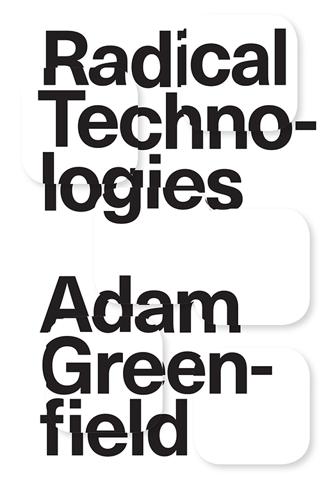
Radical Technologies: The Design of Everyday Life
by
Adam Greenfield
Published 29 May 2017
At this largest scale, the internet of things appears to us as a body of rhetoric around the performance and behavior of the so-called “smart city.” This is a place where the instrumentation of the urban fabric, and of all the people moving through the city, is driven by the desire to achieve a more efficient use of space, energy and other resources. If the ambition beneath the instrumentation of the body is a nominal self-mastery, and that of the home convenience, the ambition at the heart of the smart city is nothing other than control. Most of us are by now at least distantly aware that our phones, smart or otherwise, are constantly harvesting information about our whereabouts and activities.
…
The most prominent advocates of this approach appear to believe that the contingency of data capture is not an issue, nor is any particular act of interpretation involved in making use of whatever data is retrieved from the world in this way. When discussing their own smart-city venture, senior IBM executives argue,37 in so many words, that “the data is the data”: transcendent, limpid and uncompromised by human frailty. This mystification of “the data” goes unremarked upon and unchallenged in the overwhelming majority of discussions of the smart city. But surely these intelligent and experienced professionals know better. Different values for air pollution in a given location can be produced by varying the height at which a sensor is mounted by a few meters.
…
Examples like this counsel us to be wary of claims that any autonomous system will ever be entrusted with the regulation and control of civic resources—just as we ought to be wary of claims that the application of some single master algorithm could result in an Pareto-efficient distribution of resources, or that the complex urban ecology might be sufficiently characterized in data to permit the effective operation of such an algorithm in the first place. As matters now stand, the claim of perfect competence that is implicit in most smart-city rhetoric is incommensurate with everything we know about the way technical systems work. But it also flies in the face of everything we know about how cities work. The architects of the smart city have utterly failed to reckon with the reality of power, and the perennial ability of various elites to suppress policy directions they find uncongenial to—that word again—their interests. At best, the technocratic notion that the analysis of sensor-derived data would ever be permitted to drive resource-allocation decisions and other acts of municipal policy is naive.
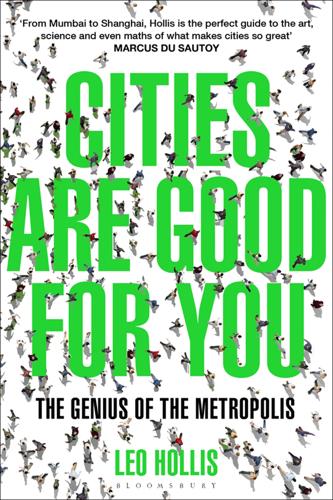
Cities Are Good for You: The Genius of the Metropolis
by
Leo Hollis
Published 31 Mar 2013
What if, as Anthony Townsend warns, ‘one company comes out on top, cities could see infrastructure end up in the control of a monopoly whose interests are not aligned with the city or its residents.’20 There is lots of money to be made from talking about the smart city. From theorists prophesying their visions, architects with their design innovations, management consultants who wish to sell their solutions, software companies who have developed the proprietary code to run the new world, making and marketing the smart city is big business. Big players such as IBM, Cisco, Siemans, Accenture, McKinsey and BoozAllen are all entering the debate on the intelligent city, the smart-grid, next-generation buildings, developing the tools to bring efficiency, sustainability and a connected metropolis.
…
As a result, in testing, the new smart grid improved 60–70 per cent of all taxi trips and made them significantly faster. The smart city is being built from a combination of big city-hall projects alongside major software companies as well as more humble schemes that can be found on the 3 or 4G mobile in your pocket or the sat nav on the dashboard. Yet the city of the future, however connected it may be, is only ever going to be as smart as the people who use it. Information is not an end in itself, it is a means to come up with better solutions to the problems of urban life. Yet it is surprising how thinking about the smart city forces us to reconsider other aspects of the city.
…
We certainly have the technology to improve the buildings in which we work and live. The very same innovation that is creating the smart city (see Chapter 8) can also be used to monitor and regulate energy usage and find efficiencies. As a result, the smart building can control lighting and heating and it uses the latest materials to reduce energy leakage. Once again, the big software firms like IBM and Siemens are investing heavily in promoting the concept of ‘smart building’ as a component of the smart city. In the US the LEED national standards for sustainable building were created, in the main, for developers constructing new homes or for the rich who can afford expensive turbines and solar panels to improve the value of their homes on the real-estate market.
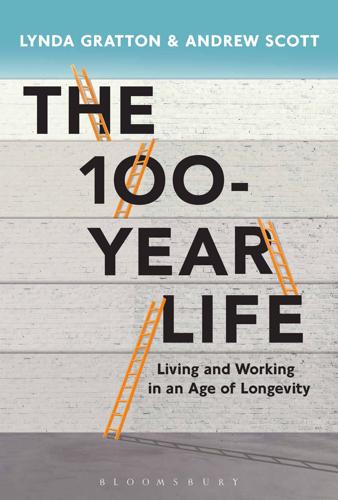
The 100-Year Life: Living and Working in an Age of Longevity
by
Lynda Gratton
and
Andrew Scott
Published 1 Jun 2016
In London, the one-million-square-foot Google Campus in King’s Cross is a short walk from Central St Martin’s and will grow to at least 4,500 people. The impact on job creation of smart cities with their highly skilled workers can be significant. In fact, according to Enrico Moretti5 of Berkeley, every one smart job creates five others. Some of these other jobs are highly skilled too, such as lawyers, accountants or consultants. Others are low-paid, such as gardeners, artisanal manufacturers, baristas or yoga teachers. At this rate, smart cities will become a better place to generate employment than the old manufacturing hubs. This growing importance of smart cities is also driven by social phenomena. The last few decades have seen a striking increase in what sociologists call assortative mating.
…
As we look forward we see more opportunities for the emerging ecosystems of work to erode this separation and enable work and life to be reintegrated. Flexible, smart cities will rise It is not just who you work for that will change, but also where you work. We are currently witnessing the most extraordinary migration that humanity has ever experienced. This is the migration from the countryside to the city. In 2010, 3.6 billion of the world population lived in cities. By 2050 the number is projected to be 6.3 billion – equivalent to the movement of 1.4 million people every week. Living in a city – and especially a smart city – is growing in importance and seems likely to continue. Why are people moving to cities in such numbers?
…
However, this is not the only story of migration. In advanced economies, people are also moving to the cities and this reflects the growing importance of proximity on ideas and high-level skills. So while some industrial cities such as Detroit have suffered from decline, other ‘smart cities’ like San Francisco, Seattle and Boston have flourished and their population has risen. These smart cities are becoming a nexus of people who have ideas and high-level skills and who want to be close to other highly skilled people. They know that innovation is occurring at a faster pace, and they want to be close to other smart people to push and challenge one another.
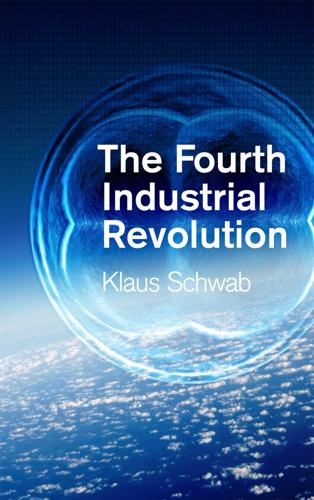
The Fourth Industrial Revolution
by
Klaus Schwab
Published 11 Jan 2016
Source: “Rosie or Jarvis: The future of the smart home is still in the air”, Richard Nieva, 14 January 2015, http://www.cnet.com/news/rosie-or-jarvis-the-future-of-the-smart-home-is-still-in-the-air/ Shift 10: Smart Cities Tipping point: The first city with more than 50,000 inhabitants and no traffic lights By 2025: 64% of respondents expected this tipping point to have occurred Many cities will connect services, utilities and roads to the internet. These smart cities will manage their energy, material flows, logistics and traffic. Progressive cities, such as Singapore and Barcelona, are already implementing many new data-driven services, including intelligent parking solutions, smart trash collection and intelligent lighting. Smart cities are continuously extending their network of sensor technology and working on their data platforms, which will be the core for connecting the different technology projects and adding future services based on data analytics and predictive modelling.
…
http://www3.weforum.org/docs/WEF_Collaborative_Innovation_report_2015.pdf 45 World Economic Forum, Global Information Technology Report 2015: ICTs for Inclusive Growth, Soumitra Dutta, Thierry Geiger and Bruno Lanvin, eds., 2015. 46 World Economic Forum, Data-Driven Development: Pathways for Progress, January 2015 http://www3.weforum.org/docs/WEFUSA_DataDrivenDevelopment_Report2015.pdf 47 Tom Saunders and Peter Baeck, “Rethinking Smart Cities From The Ground Up”, Nesta, June 2015. https://www.nesta.org.uk/sites/default/files/rethinking_smart_cities_from_the_ground_up_2015.pdf 48 Carolina Moreno, “Medellin, Colombia Named ‘Innovative City Of The Year’ In WSJ And Citi Global Competition”, Huffington Post, 2 March 2013 http://www.huffingtonpost.com/2013/03/02/medellin-named-innovative-city-of-the-year_n_2794425.html 49 World Economic Forum, Top Ten Urban Innovations, Global Agenda Council on the Future of Cities, World Economic Forum, October 2015.
…
Impact 3.1 Economy 3.1.1 Growth 3.1.2 Employment 3.1.3 The Nature of Work 3.2 Business 3.2.1 Consumer Expectations 3.2.2 Data-Enhanced Products 3.2.3 Collaborative Innovation 3.2.4 New Operating Models 3.3 National and Global 3.3.1 Governments 3.3.2 Countries, Regions and Cities 3.3.3 International Security 3.4 Society 3.4.1 Inequality and the Middle Class 3.4.2 Community 3.5 The Individual 3.5.1 Identity, Morality and Ethics 3.5.2 Human Connection 3.5.3 Managing Public and Private Information The Way Forward Acknowledgements Appendix: Deep Shift 1. Implantable Technologies 2. Our Digital Presence 3. Vision as the New Interface 4. Wearable Internet 5. Ubiquitous Computing 6. A Supercomputer in Your Pocket 7. Storage for All 8. The Internet of and for Things 9. The Connected Home 10. Smart Cities 11. Big Data for Decisions 12. Driverless Cars 13. Artificial Intelligence and Decision-Making 14. AI and White-Collar Jobs 15. Robotics and Services 16. Bitcoin and the Blockchain 17. The Sharing Economy 18. Governments and the Blockchain 19. 3D Printing and Manufacturing 20. 3D Printing and Human Health 21. 3D Printing and Consumer Products 22.
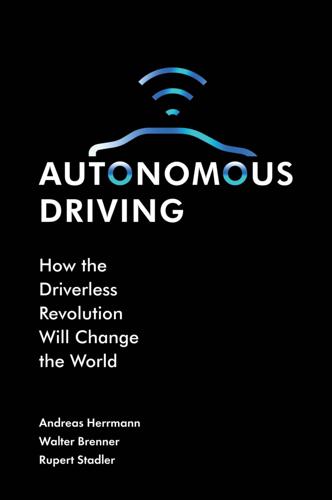
Autonomous Driving: How the Driverless Revolution Will Change the World
by
Andreas Herrmann
,
Walter Brenner
and
Rupert Stadler
Published 25 Mar 2018
In the meantime, Ford too has a series of mobility services designed for urban use, including a parking app (GoPark), a car-sharing service (GoDrive), a shuttle service (GoRide) and a mobility app (FordPass). SMART-CITY CHALLENGES Around the world, there have already been a number of smart-city challenges, all intended to improve the flow of traffic, reduce CO2 emissions and improve the quality of life in dramatically growing megacities. By the year 2030, some 50 per cent of the population of India will live in urban areas, with all of the challenges that entails for the traffic infrastructure, which is already overwhelmed. Consequently, India’s Ministry of Urban Development held a smart-city contest calling for solutions to severe traffic problems using the latest technology.
…
Industrial policy concepts are needed for the formation of clusters so that cities, regions and even countries can succeed in the competition for jobs, earnings and wealth. INTEGRATING AUTONOMOUS VEHICLES IN CITIES Many metropolises are currently on their way to becoming smart cities, accompanied by numerous competitors and benchmark studies. A feature of this initiative is the use of resource-saving technologies in order to become independent of fossil fuels. For this purpose, the infrastructure, buildings and mobility should be connected intelligently so that resources (energy, water and land) can be used efficiently. A smart city features more than an intelligent transport system in which future autonomous vehicles such as robo-cars play a major role.
…
Nevertheless, for ecological and economic reasons, everything should be done to make traffic more fluid. Digitisation makes car driving more comfortable, it ensures more traffic safety and less congestion. This is why the German automotive industry is so heavily involved in this field of innovation. transport. Robo-cars are the future of transporting passengers in the centres of smart cities. It will be possible to request such a car from the train using an app, and then to be picked up and driven home. The car will know the train timetable, the traveller’s final destination, and will find the best, fastest or shortest route to that destination, taking traffic conditions into consideration.
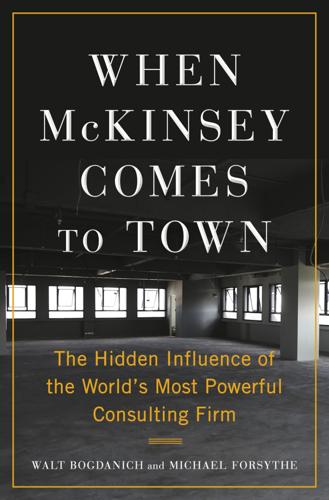
When McKinsey Comes to Town: The Hidden Influence of the World's Most Powerful Consulting Firm
by
Walt Bogdanich
and
Michael Forsythe
Published 3 Oct 2022
Another controversial project that McKinsey pushed in China focused on “smart cities.” The idea of smart cities is to make urban areas more livable by using networked cameras to better manage traffic, or to reduce water and electricity use through “smart” meters that can send information back to a central location. McKinsey promoted this idea around the world. McKinsey took part in a 2018 smart cities conference in southern China alongside a government commission that descended from the Mao-era state planning bureaucracy. In 2019 the senior partner Sha Sha, one of the firm’s first local hires, spoke at the China Smart City Expo. McKinsey partnered with its most reliable China client, Ping An, to help the insurer implement smart cities systems in the southern Chinese city of Nanning to monitor financial fraud.
…
McKinsey partnered with its most reliable China client, Ping An, to help the insurer implement smart cities systems in the southern Chinese city of Nanning to monitor financial fraud. But the idea of smart cities encompasses far more than using technology to better manage traffic or to save on electricity and water use. It also covers policing and the use of predictive analytics to help prevent crime, a fact McKinsey made clear to its audience in Chinese. “Police patrols cannot be everywhere, for instance, but predictive analytics can deploy them in the right place at the right time,” McKinsey wrote in a global report about smart cities, which the firm translated into Chinese.
…
GO TO NOTE REFERENCE IN TEXT McKinsey took part in a 2018: For details on the conference, including McKinsey’s involvement, see Hexun News, m.hexun.com/news/2018-08-15/193787173.html; McKinsey featured Sha Sha’s remarks on its website. See “打开智慧城市2.0时代的想象空间” (Open up the range of imagination for Smart Cities 2.0 era), posted on the McKinsey China website, June 21, 2019; Ping An’s work with McKinsey is detailed in “平安智慧城市,新旅程新机遇” (Ping An’s smart cities: New journeys, new opportunities), posted on the Sohu.com website, Sept. 7, 2018, www.sohu.com. GO TO NOTE REFERENCE IN TEXT A report issued by a U.S. congressional panel: Katherine Atha et al., “China’s Smart Cities Development” (research report prepared on behalf of the U.S.-China Economic and Security Review Commission, Jan. 2020), 2, www.uscc.gov.
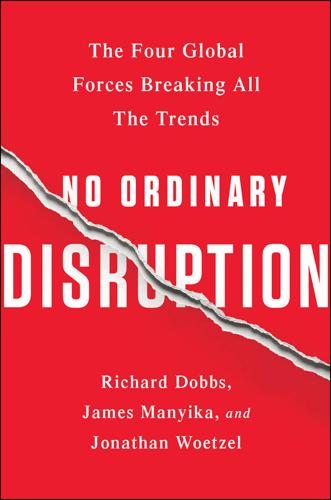
No Ordinary Disruption: The Four Global Forces Breaking All the Trends
by
Richard Dobbs
and
James Manyika
Published 12 May 2015
BillGuard pulls together information from all its users’ credit card transactions to highlight transactions and payments that are unwanted or even fraudulent to its users. The global smart city technology market—smart energy, water, transportation, buildings, and government—is expected to grow from $9 billion in 2014 to $27.5 billion by 2023.58 Companies are already working with pioneering cities such as San Francisco, Barcelona, and Amsterdam. The growth in the global smart city technology market has fueled growth in adjacent sectors, such as video surveillance. An opportunity also exists to capitalize on the search by governments for partners to provide public services.
…
Eric Braverman and Mary Kuntz, “Creating a ‘coalition of the positive’ in India: An interview with Nandan Nilekani” and Elana Berkowitz and Blaise Warren, “E-government in Estonia” in “Innovation in government: India and Estonia,” McKinsey & Company, June 2012. 57. Marcos Cruz and Alexandre Lazarow, “Innovation in government: Brazil,” McKinsey & Company, September 2012. 58. Smart Cities, Navigant Research, 2014, www.navigantresearch.com/research/smart-buildings/smart-cities.bus%20visi. 59. Vestas Annual Reports, 2005, 2009, and 2013. 60. Draft Grundfos response to the European Commission’s public consultation on resource efficiency, Grundfos, February 24, 2012, http://ec.europa.eu/environment/resource_efficiency/pdf/Grundfos.pdf; From solo enterprise to world leader, Danfoss Trata, www.trata.danfoss.com/xxNewsx/2b005275-98ff-4165-a0a5-78efe146264a_CNP1.html.
…
foreign direct investments from, 76 goods and services customization for, 103, 104–105 new competitor entry of, 170 new consuming class of, 96, 97–98 operational complexity management in, 29 public-private partnerships in, 198–199 renewable energy plan of, 126 smart city technology in, 41 space exploration by, 2–3 urbanization speed and scale in, 20 (fig.), 131–132 Indian cities Bangalore, 29, 105 Mumbai, 29, 131–132 Pune, 41 Surat, 25 Industrial Revolution, 16, 18, 33, 202 Infrastructure data and productivity gains, 196–197 deficit, 131–132, 133, 135–136 energy storage and, 36 financing partnerships, 29–30 policy and new business opportunity, 197–199 private partnerships for, 27–28, 29–30, 198–199 public spending, 188–189, 191–193 repurposed services for, 28 smart city technology and, 28, 41, 198 urban innovation in, 23, 28 See also Transportation Inner Mongolia, China, 135 Innovation acceleration of, 33–34, 35 (fig.), 42 ripple effect of, 202 time and betting on, 50–51 urbanization and, 23, 25–28 Instacart, 25 Insurance industry, 46 (fig.), 50, 173 Interconnection.
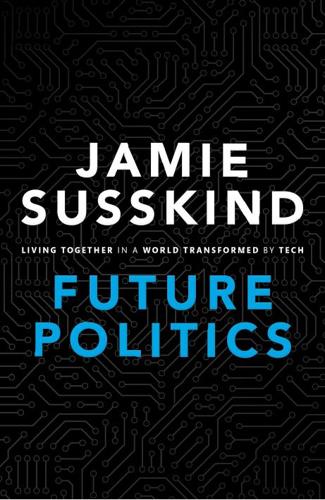
Future Politics: Living Together in a World Transformed by Tech
by
Jamie Susskind
Published 3 Sep 2018
Settlements organized in this way can be easily navigated and searched, their populations identified, taxed, conscripted, arrested, and otherwise processed.12 Though significant, the evolution from the higgledy-piggledy city of the middle ages to the planned metropolis of modernity will be dwarfed by the next phase of urban evolution: ‘smart cities’ embedded with dense networks of sensors that allow authorities to keep track of a dazzling array of variables, from noise, temperature, light, air toxicity, and utility usage, to the movement, location, and activity of vehicles and people. In the future, technology will allow authorities to monitor events and incidents not on paper maps but using surveillance and feedback systems that detail the activity of the city’s inhabitants. Even compared to the gridcities of the last few centuries, smart cities will be scrutable to an almost unimaginable degree.
…
Economist,‘How Cities Score’, 23 May 2016 <https://www.economist. com/news/special-report/21695194-better-use-data-could-make- OUP CORRECTED PROOF – FINAL, 30/05/18, SPi РЕЛИЗ ПОДГОТОВИЛА ГРУППА "What's News" VK.COM/WSNWS Notes 53. 54. 55. 56. 57. 58. 59. 60. 61. 62. 63. 64. 65. 66. 67. 381 cities-more-efficientand-more-democratic-how-cities-score> (accessed 30 November 2017). Kitchin, Data Revolution, 92; Margarita Angelidou, ‘Smart City Strategy: PlanIT Valley (Portugal)’, Urenio, 26 January 2015 <http:// www.urenio.org/2015/01/26/smart-city-strategy-planlt-valleyportugal/> (accessed 30 November 2017). Economist, ‘How Cities Score’. Greengard, Internet of Things, 48. Jane Wakefield, ‘Google, Facebook, Amazon Join Forces on Future of AI’, BBC News, 28 September 2016 <http://www.bbc.com/news/ technology-37494863> (accessed 30 November 2017).
…
‘Epidermal electronics’—small stretchy patches worn on the skin—will be able to record your sun exposure, heart rate, and blood oxygenation.14 Meanwhile, when you toss a ball around the garden, the pigskin itself will record the distance, velocity, spin rate, spiral, and catch rate for post-game analysis.15 In public, smart waste bins will know when they are full, highways will know when they are cracked, and supermarket shelves will know when they are empty. Each will feed information back to the persons (or machines) responsible for fixing the problem. Smart signs, streetlamps, and traffic lights will interact with the driverless cars that pass by.16 ‘Smart cities’ are expected to grow in number. Authorities in Louisville, Kentucky, have already embedded GPS trackers inside inhalers to measure which parts of their cities are hotspots of air pollution.17 Connective As well as permeating the physical world, technology will continue to grow more connective, facilitating the exchange of information between people, between people and machines, and between machines themselves.
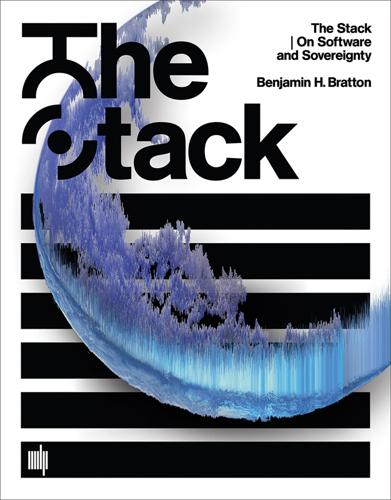
The Stack: On Software and Sovereignty
by
Benjamin H. Bratton
Published 19 Feb 2016
—Italo Calvino, Invisible Cities2 It is not the line that is between two points, but the point that is the intersection of many lines. —Gilles Deleuze, Pourparlers3 Whenever I hear the term smart cities, I reflexively think of Jacques Tati's satires on the follies of automated modern architecture. However dark the humor, for master-controlled megacities and stale visions of bland efficiency, mega-hijinks are sure to follow. The poverty of off-the-shelf smart city strategies is all the more distressing given how important the intelligent composition of computational systems at urban scale actually is, especially for new platform sovereignties.
…
We imagine Cedric Price's Fun Palace (1961) turned inside out by North Korean stadium pageants where the audience itself is the media content, but instead of free to play, each actor is instead rendered into disciplined pixel within a larger choreography of the spectacular image. We could mark an ancestral trace from Yona Friedman's La Ville Spatiale to the new Asian smart cities such as New Songdo City (“a ubiquitous city,” says its brochure) in South Korea's Incheon development, or see Paolo Soleri's Arcology as a first pass at Masdar, the massive “green” smart city in Abu Dhabi. (Both Songdo and Masdar were built with Cisco and IBM as key partners.) Is Situationist cut-and-paste psychogeography reborn or smashed to bits by Minecraft? What binds the hyperlibertarian secessionism of the Seasteading Institute, which would move whole populations offshore to live on massive ships floating from port to port unmolested by regulation and undesired publics (Facebook funder Peter Thiel is a key funder) with Archigram's Walking City project from 1967, which plotted for Star Wars Land Walker–like city machines to get up and amble away to greener pastures as needed?
…
As for the geopolitics of computation, we can point to another shift, around 2008 or so. Before this break, the growth of planetary-scale computing systems was seen more generally as a beneficent blossoming. The old order would be swept away and a new day illuminated with the power of networks, iStuff, Twitter revolutions, “Internet freedom,” and smart cities. After this break, however, the sky darkened, and now the Cloud portends instead state surveillance, tax evasion, structural unemployment, troll culture, and flash crashes. Reality, however, is actually more radical in both directions. The thesis of this book holds that the official utopia and the official dystopia are not particularly useful frames of reference, and that neither provide a robust and intelligent program for art, design, economics, or engineering.
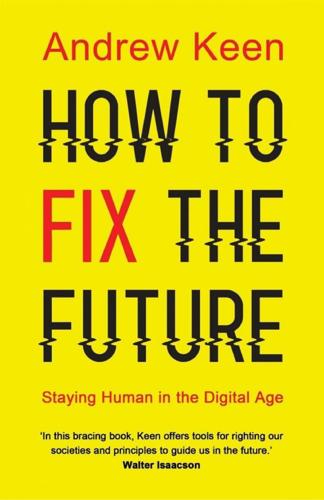
How to Fix the Future: Staying Human in the Digital Age
by
Andrew Keen
Published 1 Mar 2018
Rodolphe De Koninck, Julie Drolet, and Marc Girard, Singapore: An Atlas of Perpetual Territorial Transformation (National University of Singapore Press, 2008), 14. 3. Jake Maxwell Watts and Newley Purnell, “Singapore Is Taking the ‘Smart City’ to a Whole New Level,” Wall Street Journal, April 24, 2016. 4. More, Utopia, 59. 5. Watts and Purnell, “Singapore Is Taking the ‘Smart City’ to a Whole New Level.” 6. “The Government of Singapore Says It Welcomes Criticism, but Its Critics Still Suffer,” Economist, March 9, 2017. 7. Ibid. 8. Amnesty International, “Singapore: Government Critics, Bloggers and Human Rights Defenders Penalized for Speaking Out,” Online Citizen, June 19, 2016. 9.
…
Borthwick’s Five Bullets A cheerful, boyish-looking fellow with a mop of dark hair, Borthwick grins at my challenge. Rather than the personal computer or the internet, for him the new new thing is artificial intelligence—the technology behind networked smart machines, smart cars, smart algorithms, smart homes, and smart cities. It’s the superintelligent technology that some people fear could destroy humanity, and that’s what preoccupies Borthwick at first when he addresses my question. “Look, so much of our business is reality distortion,” he confesses about the tech industry, “so we don’t fucking know what AI is going to be.”
…
To some readers, particularly those, like Edward Snowden, who cherish their privacy, this ID system, with its radical transparency, might sound a little dystopian. But one of the unavoidable consequences of the digital revolution is the massive explosion of personal data on the network. Like it or not, this data is only going to grow exponentially with the development of smart homes, smart cars, smart cities, and, above all, all the other smart objects driving the internet of things. We don’t have a choice about any of this. But what we do have a choice about is the amount of transparency we demand of the governments or corporations that have access to our personal data. That’s why Viik’s attempt to create a blockchain-like transparency within the Estonian government’s database of information about its citizens is so important.
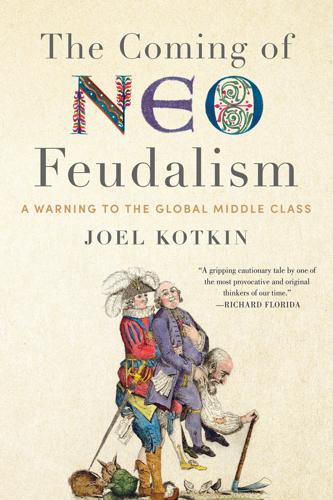
The Coming of Neo-Feudalism: A Warning to the Global Middle Class
by
Joel Kotkin
Published 11 May 2020
The same oligarchs who dominate our commercial culture, seek to profit from manipulating our moods, and influence the behavior of our children want to structure our living environment as well.1 Major tech firms—Y Combinator, Lyft, Cisco, Google, Facebook—are aiming to build what they call the “smart city.” Promoted as a way to improve efficiency in urban services, these plans will also provide more opportunity for oligarchs to monitor our lives, as well as sell more advertising. The “smart city” would replace organic urban growth with a regime running on algorithms designed to rationalize our activities and control our way of life.2 This urban vision appeals to tech oligarchs’ belief that their mission is to “change the world,” not simply make money by meeting customers’ needs and desires.
…
Ross, “In Silicon Valley, Age Can Be a Curse,” SFGate, August 20, 2013, https://www.sfgate.com/business/bottomline/article/In-Silicon-Valley-age-can-be-a-curse-4742365.php. 17 Susan Crawford, “Beware of Google’s Intentions,” Wired, February 1, 2018, https://www.wired.com/story/sidewalk-labs-toronto-google-risks/; Sidewalk Toronto, “Toronto Tomorrow,” https://sidewalktoronto.ca/#documents; Vipal Monga, “Toronto Oicials Question Alphabet Unit’s Ambitions for ‘Smart City,’” Wall Street Journal, June 24, 2019, https://www.wsj.com/articles/toronto-officials-question-alphabet-units-ambitions-for-smart-city-11561412851. 18 “Sidewalk Labs’s vision and your data privacy: A guide to the saga on Toronto’s waterfront,” Globe and Mail, June 24, 2019, https://www.theglobeandmail.com/canada/toronto/article-sidewalk-labs-quayside-toronto-waterfront-explainer/. 19 Crawford, “Beware of Google’s Intentions.” 20 “Albert Gidari,” Center for Internet and Society, Stanford Law School, http://cyberlaw.stanford.edu/about/people/albert-gidari. 21 Yulia Gorbunova, “Online and On All Fronts,” Human Rights Watch, July 18, 2017, https://www.hrw.org/report/2017/07/18/online-and-all-fronts/russias-assault-freedom-expression; Leopord Hakizimana and Dr.
…
The data gathered from monitoring people’s daily lives will also be fed into the advertising and marketing machine that generates the oligarchs’ fortunes. Meanwhile, the big tech firms will gain insights about urban life—including energy use, transit efficiency, climate mitigation strategies, and social service delivery—and sell the information to cities around the world.19 “The whole point of a smart city is that everything that can be collected will be collected,” says Al Gidari, the director of privacy at Stanford University’s Center for Internet and Society.20 Global Cities of the Damned Canadians, Americans, and most Europeans still have the option of objecting to heavy surveillance and control, but citizens of many other countries—Russia, China, and African nations—may have less ability to say no.21 Data collection is totally unfettered in China’s “techno-utilitarian” system, with no privacy protections for the individual.22 In its drive to dominate the next generation of artificial intelligence, the Chinese Communist Party works closely with tech oligarchs, both foreign and domestic, giving little consideration to public concerns.
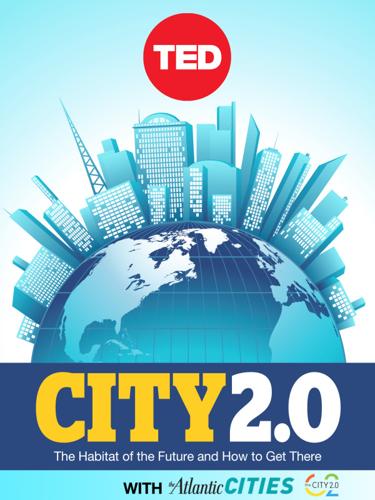
City 2.0: The Habitat of the Future and How to Get There
by
Ted Books
Published 20 Feb 2013
Cities now examine data (or, more accurately, a computer-aided interpretation of it) to anticipate spikes in electricity demand or to synchronize streetlights to prevent traffic snarls. In the urban context, information feedback loops are making it easier for us to optimize the ways our cities work. The so-called smart city we all keep hearing about is being built on a fundamental premise: With enough data and powerful analytical tools, we can make our cities better. Smartphones put this process into overdrive; they’re already collecting and sharing the sort of information that will underpin the future smart city. We can get directions, learn transit times, or find parking thanks to our Internet-equipped mobile phones. As smartphones advance technologically, their owners will become — knowingly or not — integral nodes in this vast and dynamic network.
…
Through visuals in the dashboard and physical cues like seat vibrators, the test cars are able to notify their drivers when they’re veering out of a lane too close to other cars or driving too fast toward stopped cars ahead. The goal of the test is to determine how well this technology can increase road safety, eventually paving the way for a requirement that all automakers install this type of car-to-car communication capability. For now, the sensors of choice for the smart city are our smartphones. Researchers at the Massachusetts Institute of Technology’s Senseable City Lab have been exploring the potential of various mobile devices for nearly a decade. Through several research projects, the lab has investigated ways to use sensors in the urban environment for understanding the dynamics and patterns of mobility and economics.
…
In this modern age, we think of cities as large institutions or machines. We talk about their failures as failures of management, coordination, governance. We think we could have “better” cities if we could only tune the machine to make it more “efficient.” The machine model is implicit in the popular language around “smart cities.” The promise is that shiny, smart boxes will figure out how to make our cities tick by smoothing traffic flow, monitoring crime, and allocating power through smart grids. Cities will be run by supersized versions of 2001: A Space Odyssey’s HAL crunching continuous streams of big data. As Donald Fagen of Steely Dan sang, “A just machine to make big decisions / Programmed by fellows with compassion and vision.”
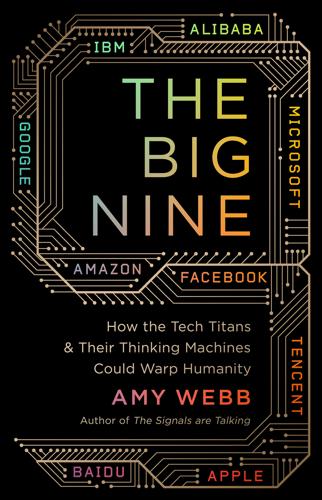
The Big Nine: How the Tech Titans and Their Thinking Machines Could Warp Humanity
by
Amy Webb
Published 5 Mar 2019
Rather than aiding and abetting misinformation bots, AI can ferret out propaganda, misleading claims, and disinformation campaigns. Our democracies are stronger as a result. The G-MAFIA studied the Chinese cities where smart city initiatives were piloted—such as Rongcheng, Beijing, Shenzhen, Shanghai—and identified best practices to pilot in the United States. We now have a few American smart cities—Baltimore, Detroit, Boulder, and Indianapolis—that are testing out a wide range of AI systems and services. Networks of cubesats overhead—tiny satellites the size of a Rubik’s Cube—feed real-time data into AI systems that can recognize objects, unique light patterns, and heat signatures.
…
It uses neural network–based voiceprint recognition technology to identify users, automatically authenticating them so they can shop and make purchases. More than 100,000 of Alibaba’s speakers are being installed in Marriott hotels throughout China. Alibaba has a bigger vision for AI, which it calls its ET City Brain. The program crunches huge amounts of local data, from smart city cameras and sensors to government records and individual social media accounts. Alibaba uses its AI framework for predictive modeling: to suss out in advance traffic management, urban development, public health needs, and whether there might be social unrest on the horizon. Under Ma’s direction, Alibaba has made inroads into delivery logistics, online video, data centers, and cloud computing, investing billions of dollars into various companies in an attempt to build a sprawling digital behemoth, connecting commerce, home, work, cities, and government.
…
Middle-class homes rely on AI to make life a little bit easier. Devices, platforms, and other services are interoperable even between countries, where decades earlier licensing and data restrictions prevented access across borders. Smart washers and driers use less energy, are more efficient, and synch up to our smart city systems to share data. With consent, we allow our laundry to be done when it causes the least amount of strain on our public water and electric utilities. ANI supports sensory computation, which means that we can collect and query the real world using sensory data: sight, smell, hearing, taste, and touch.
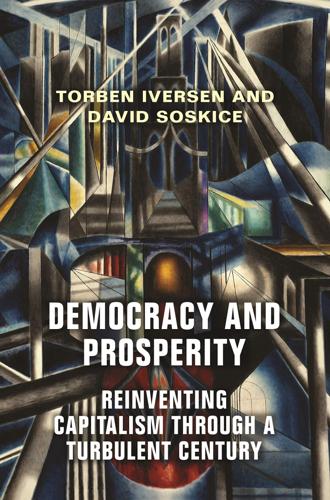
Democracy and Prosperity: Reinventing Capitalism Through a Turbulent Century
by
Torben Iversen
and
David Soskice
Published 5 Feb 2019
Size is not necessarily everything: what were originally just university towns (Chapel Hill or Austin in the United States, for example, and York, Norwich, or Brighton in the UK) with an initial range of higher value-added service sectors, can also become on a smaller scale graduate agglomerations, sometimes referred to as “smart cities.” By contrast, those cities or towns which had been prosperous in the Fordist era largely on the basis of single industrial sectors have found survival and growth much harder. Thus Baltimore, Cleveland, Cincinnati, Akron, and Detroit, as well as many more mainly industrial smaller towns, contrast with what are now highly skilled agglomerations like New York, Boston, Chicago, Washington, San Francisco, and San Diego.
…
By contrast the probability that in-migrants in 1995 had not come to enroll in higher education was unrelated (not statistically significant) to the graduate percentage, while the probability that out-migrants in 2000 had not come (originally) to enroll there in higher education was significantly positive. (Winters also notes interestingly that the bulk of in-migrants for higher education into a “smart city” come from within the state in question; so, of relevance to our subsequent discussion of populism, this geographical segregation between successful and left behind cities may be widely spread across the United States.) In equilibrium, a higher in-migration for the purpose of education and the lower outmigration of graduates will lead to a concentration of the high-skilled in cities, which is what has happened.
…
Cantwell, John, and Simona Iammarino. 2003. Multinational Corporations and European Regional Systems of Innovation. London: Routledge. Cantwell, John, and Ram Mudambi. 2005. “MNE Competence-Creating Subsidiary Mandates.” Strategic Management Journal 26 (12): 1109–28. Caragliu, Andrea, Chiara Del Bo, and Peter Nijkamp. 2011. “Smart Cities in Europe.” Journal of Urban Technology 18 (2): 65–82. Card, David. 2001. “Estimating the Return to Schooling: Progress on Some Persistent Econometric Problems.” Econometrica 69 (5): 1127–60. Carlin, W., and David Soskice. 2014. Macroeconomics: Institutions, Instability and the Financial System.
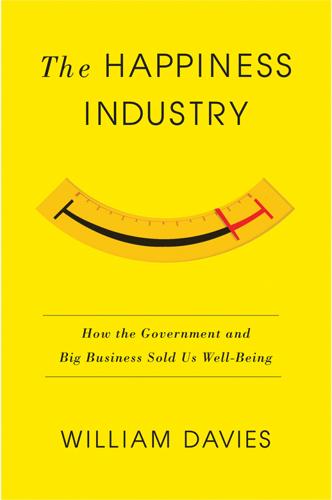
The Happiness Industry: How the Government and Big Business Sold Us Well-Being
by
William Davies
Published 11 May 2015
After all, we the public created it by swiping our smart cards, visiting websites, tweeting our thoughts, and so on. Big data should therefore be something available to all of us to analyse. What this more liberal approach tends to ignore is the fact that, even where data is being opened up, the tools to analyse it are not. As the ‘smart cities’ analyst Anthony Townsend has pointed out with regard to New York City’s open data regulations, they judiciously leave out the algorithms which are used by e-government contractors to analyse the data.6 While the liberal left continues to worry about the privatization of knowledge as enacted by intellectual property rights, a new problem of the privatization of theory has arisen, whereby algorithms which spot patterns and trends are shrouded in commercial secrecy.
…
This is a new type of power dynamic altogether, which is difficult to characterize purely in terms of surveillance and privacy. The accumulation of psychological data occurs unobtrusively in such a society, often thanks to the enthusiastic co-operation of individual consumers and social media users. Its rationale is typically to make life easier, healthier and happier for all. It offers environments, such as smart cities, which are constantly adapting around behaviour and real-time social trends, in ways that most people are scarcely aware of. And in keeping with Bentham’s fear of the ‘tyranny of sounds’, it replaces dialogue with expert management. After all, not everybody can inhabit a laboratory, no matter how big.
…
Human resource management is one of the latest fields to be swept up in data euphoria, with new techniques known as ‘talent analytics’ now available, which allow managers to evaluate their employees algorithmically, using data produced by workplace email traffic.20 The Boston-based company Sociometric Solutions goes further, producing gadgets to be worn by employees, to make their movements, tone of voice and conversations traceable by management. ‘Smart cities’ and ‘smart homes’, which are constantly reacting to and seeking to alter their inhabitants’ behaviour, are other areas where the new scientific utopia is being built. In an ironic twist in the history of consumerism, it has emerged that we could soon be relieved even of the responsibility for our purchasing decisions thanks to ‘predictive shopping’, in which companies mail products (such as books or groceries) directly to the consumer’s home, without being asked to, purely on the basis of algorithmic analysis or smart-home monitoring.21 The rhetoric of the data merchants is one of enlightenment: of moving from an age of guesswork to one of objective science, echoing how Bentham understood the impact of utilitarianism on law and punishment.
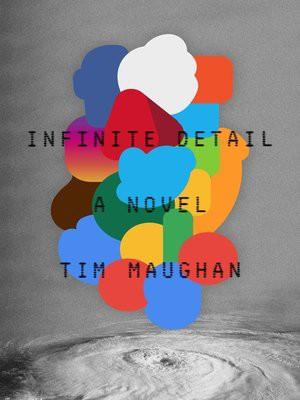
Infinite Detail
by
Tim Maughan
Published 1 Apr 2019
“To Crown Heights? Seems like a nice neighborhood.” “You know what I mean.” “Actually, no, Chris. Not sure I do.” “Well, I’d have thought you’d be pretty high up Homeland Security’s stop lists, what with the Republic being attached to that Boeing e-mail leak last month. Rush-zero-zero, the legendary smart city hacker. And that’s without even taking into account how often your name has personally been attached to all those high-level Anon and Dronegods ops.” It was the first time anyone had mentioned the Republic to him in days. “You shouldn’t believe everything you read on the Internet, Chris. In fact, I hear some of the people that write for the Internet are completely full of shit.”
…
“Whatever you’re going to Bristol for. I hope it’s worth all this shit.” “Yeah,” she says. “Yeah. So do I.” 4. BEFORE Dumb City: The Neighbourhood That Logged Off 7 July 2021 Neeta Singh BBC News magazine In a hip neighbourhood in Bristol, a controversial group of anarchists are rebelling against the smart city by blocking out the internet. Neeta Singh visits the People’s Republic of Stokes Croft to find out what life off-grid looks like in the centre of one of the UK’s most connected cities. The whole world around me is cycling with colours—every building down this busy Bristol street is covered with animated patterns: flocks of birds scroll across their surfaces; intricate, alien-looking plants burst forth from the architecture; and stylised faces look down on me with cool disdain.
…
My spex have been completely hijacked by secret, almost mystical, technologies hidden in the buildings around me, and I’ve no choice but to try and enjoy the ride. Welcome to the People’s Republic of Stokes Croft, a two-mile-long digital no-man’s-land right in the centre of Bristol, one of the UK’s leading smart cities. Part hippyster commune, part permanent art installation, and part political protest, the Croft (as the locals call it) claims to be a refuge from the physical and digital surveillance we associate with everyday life both in major cities and online. “Your first reaction might be ‘oh god, I can’t connect to anything,’ but the reality is that you’ve actually disappeared,” explains Rushdi Manaan, anti-surveillance activist and the PRSC’s most infamous founder.
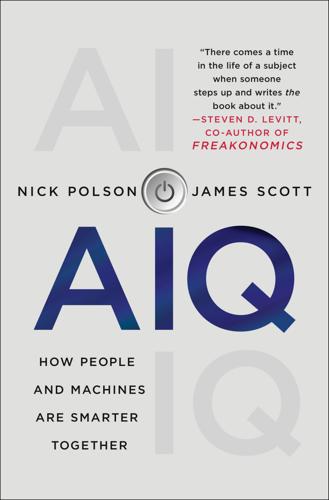
AIQ: How People and Machines Are Smarter Together
by
Nick Polson
and
James Scott
Published 14 May 2018
This can save lives and money, and it can lead to new insights about your data: • Banks use software that looks for anomalous spending patterns to detect that your credit card has been stolen. • Big companies monitor their networks for anomalous traffic to search for cybersecurity breaches. • Data analysts in “smart cities” look for anomalous concentrations of crime in a given area to improve policing strategies. • Investigators look for anomalies in medical-claims data to detect Medicare fraud. • Sports teams monitor the data from their players’ wearable gadgets, searching for anomalies that suggest a risk of injury.
…
Overall, Newton performed admirably in his new job—except on one crucial point, where he erred badly, by misunderstanding an important statistical principle that was staring him in the face for the better part of five years. Today, that principle sits at the heart of every real-time monitoring system powered by AI: in Silicon Valley, in smart cities, in the analytics office of every sports team, and in the fraud-prevention office of every bank. So if you want to understand any of these things, then you need to understand three major strands in the story of Newton at the Royal Mint. 1. A late-seventeenth-century crisis in the English economy, in which the Mint played a subtle but fundamental role. 2.
…
Facebook and Google, warehouses and grocery stores, airlines and oil rigs, senators and stock traders, the Cleveland Cavaliers and the weekend warriors … they all take measurements and average them together, algorithmically searching for anomalies in massive data sets. While the speed and scale of these systems have changed a lot in three centuries, the fundamental principle hasn’t: to detect an anomaly, you have to understand variability. Smart Cities: Big N, Big D Just ask the folks who work at the Mayor’s Office of Data Analytics, or MODA, in New York City. MODA was created in 2013 by then-mayor Michael Bloomberg to analyze the vast troves of municipal data collected by the city government—everything from 911 calls to building-inspection forms to horticultural reports on the city’s 5.2 million trees.
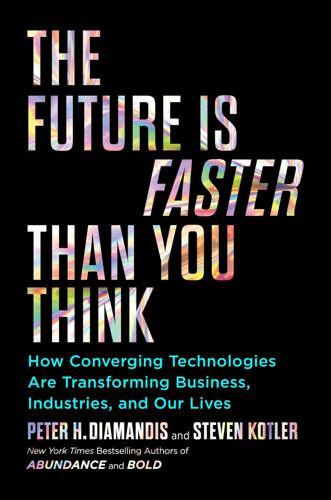
The Future Is Faster Than You Think: How Converging Technologies Are Transforming Business, Industries, and Our Lives
by
Peter H. Diamandis
and
Steven Kotler
Published 28 Jan 2020
The result is that cities are cleaner, more energy efficient, and emit less carbon dioxide. And smart cities could take this further. A 2018 McKinsey study found smart city solutions could reduce urban greenhouse gases some 15 percent, solid waste by 30 to 130 kilograms per person per year, and save water—some twenty-five to eighty gallons per person per day. In fact, using today’s technology, we could achieve 70 percent of the UN’s Sustainable Development Goals merely by transitioning to smart cities. Now the downside: Calamity is a definite possibility. Unplanned urbanization is a fantastic recipe for crime, disease, the cycle of poverty, and environmental devastation.
…
Santa Fe Institute physicist Geoffrey West: Jonah Lehrer, “A Physicist Solves the City,” New York Times, December 17, 2010. See: https://www.nytimes.com/2010/12/19/magazine/19Urban_West-t.html. 2018 McKinsey study: Katie Johnson, “Environmental Benefits of Smart City Solutions,” Foresight, July 19, 2018. See: https://www.climateforesight.eu/cities-coasts/environmental-benefits-of-smart-city-solutions/. Virtual Worlds three billion hours a week: Jane McGonigal, “We Spend 3 Billion Hours a Week as a Planet Playing Videogames. Is It Worth It? How Could It Be MORE Worth It?,” Ted, 2011. See: https://www.ted.com/conversations/44/we_spend_3_billion_hours_a_wee.html.
…
In this smart community slated for Toronto’s industrial waterfront, robots deliver the mail, AI uses sensor data to manage everything from air quality to traffic flow, and the entire cityscape is “climate positive,” that is, built to green standards and sustainably powered. But what makes this project more than just interesting real estate news is that all of the software systems developed for Quayside will be open sourced, so anyone can use them, speeding up progress in smart cities everywhere. Will any of this—from NASA’s asteroid detection plans to the Netherlands’ water-friendly redesign to Estonia’s nimble e-governance—be enough to de-risk exponential risk? The answer is somewhere between “not close” and “not yet.” But there are three reasons for optimism. First, technological empowerment.
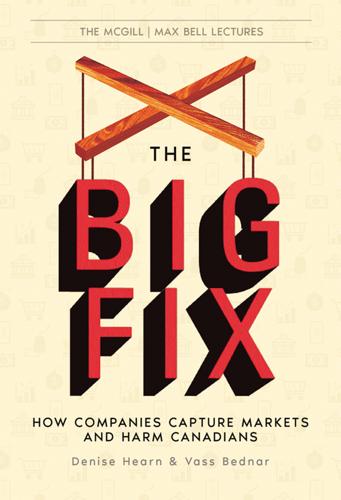
The Big Fix: How Companies Capture Markets and Harm Canadians
by
Denise Hearn
and
Vass Bednar
Published 14 Oct 2024
Accessed July 5, 2024. https://www.canada.ca/en/revenue-agency/services/charities-giving/charities/information-about-a-charity.html. 300 Corbett, Jessica, “Warning of ‘Surveillance Capitalism’ Nightmare, Big Tech Investor-Turned-Critic Pushes Toronto to Abandon ‘Smart City’ Waterfront Development,” Common Dreams, June 6, 2019. https://www.commondreams.org/news/2019/06/06/warning-surveillance-capitalism-nightmare-big-tech-investor-turned-critic-pushes. 301 Balsillie, Jim, “Sidewalk Toronto Has Only One Beneficiary, and It Is Not Toronto.” The Globe and Mail, October 5, 2018. https://www.theglobeandmail.com/opinion/article-sidewalk-toronto-is-not-a-smart-city/. 302 The Canadian Press, “Canadian Civil Liberties Association files lawsuit over Sidewalk Labs project.”
…
Sidewalk sought to impose its questionable tech-topian vision on Toronto’s waterfront, shaping it into a heavily surveilled world that would act as a blueprint for similar global projects. The Sidewalk Labs project was announced in October 2017 with the goal of developing Toronto’s Quayside waterfront community into a connected smart city. Sidewalk Labs planned to include a sensor network amassing vast quantities of data on energy consumption, traffic patterns, and citizen behaviour. Critics perceived the project as a corporate power grab, raising questions about whether a private company should possess such far-reaching influence over public infrastructure and the data it generated.
…
Roger McNamee, an early big tech investor that is now highly critical of the industry, called the project “the most highly evolved version to date of what Harvard professor Shoshana Zuboff calls ‘surveillance capitalism.’”300 The collection of resident data for corporate purposes raised significant ethical concerns regarding privacy rights, particularly those surrounding the consent of individuals and the potential exploitation of their personal information for private profit. Jim Balsillie wrote in 2018, “It is a colonising experiment in surveillance capitalism attempting to bulldoze important urban, civic, and political issues. Of all the misguided innovation strategies Canada has launched over the past three decades, this purported smart city is not only the dumbest, but also the most dangerous.”301 While the promise to make Toronto ground zero for an innovative new infrastructure development initially made Canadians feel benighted in the glow of a largely popular (at the time) global tech giant, the mood quickly soured and resistance to the project gained traction.
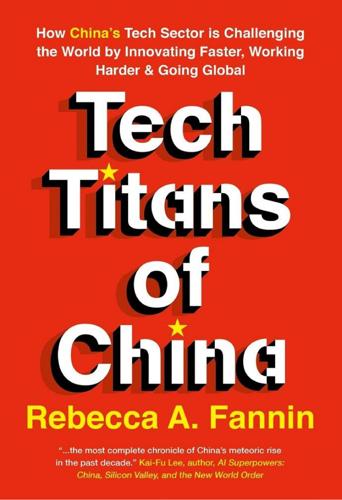
Tech Titans of China: How China's Tech Sector Is Challenging the World by Innovating Faster, Working Harder, and Going Global
by
Rebecca Fannin
Published 2 Sep 2019
The Chinese have arrived and are succeeding at: •buying into US cutting-edge startups, coinvesting with Sand Hill Road venture capital firms, and spanning out to Southeast Asia and Israel to counter American domination •fast-tracking and popularizing innovative business models in China that the West is copying: virtual gifts, social commerce, AI-powered news and video apps, and one-stop superapps •building giant consumer and enterprise ecosystems of mobile payments, online shopping, deliveries, games, and videos that new entrants can’t penetrate •owning and using technologies for smart cities, smart homes, smart workplaces, and smart cars •inventing the future for mass commercialization of electric cars and self-driving, errand-running humanoid robots, and combined AI and big data to improve cancer diagnoses and care China has shed its image as the world’s low-cost producer and flagrant copier of Western internet and mobile brands to become a breeding ground in today’s tech-centric world for disruptive breakthroughs not seen to such an extent since the Industrial Revolution of the eighteenth and nineteenth centuries.
…
Baidu faces a possible reentry of Google to the Middle Kingdom some 10 years after googling didn’t knock out China’s search leader. Baidu’s bid to own the future for AI with self-driving cars and facial recognition for payments is uncertain after Li lost two experts in a row who were leading Baidu’s AI charge while rivals chip into the sector: Alibaba in smart-city traffic management, Tencent in medical imaging and diagnostic tools, and startups SenseTime and Face++ with AI-enhanced face-matching technologies for IDs and public security. Alibaba’s lead in e-commerce is challenged too, by social commerce upstart Pinduoduo with an app that combines bargain bin merchandise, prizes, social sharing features, and gaming.
…
Dressed in his classic white shirt emblazoned with a Baidu logo, he put a positive spin on Baidu’s latest innovations in artificial intelligence—not so easy to be upbeat since he had to step back into the CEO seat after his star hire Lu left in May 2018 to launch and run a China offshoot of US accelerator Y Combinator. And that was only a year after AI superstar Andrew Ng departed Baidu for a new AI mission in Silicon Valley. As Li spoke, flashy surround-sound videos displayed Baidu’s new technologies for autonomous driving, smart-city projects in Beijing and Shanghai, and voice-activated speakers and lights. The crowd at the packed ballroom of the China World Hotel cheered loudly and clapped with each introduction: a pilot launch of 100 self-driving taxis in China’s central city Changsha, a partnership with Volvo to develop self-driving electric vehicles for the large China market, and an alliance with China’s large auto manufacturer FAW Group to produce autonomous passenger vehicles and start testing them in 2019 in Beijing and the northeast Chinese city Changchun.
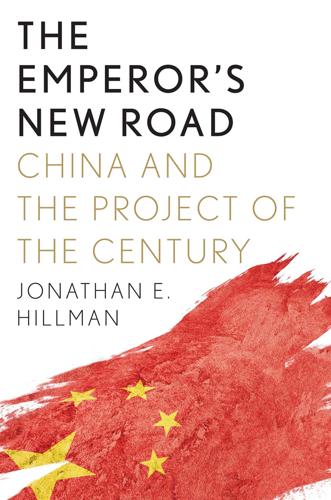
The Emperor's New Road: How China's New Silk Road Is Remaking the World
by
Jonathan Hillman
Published 28 Sep 2020
The result was that clients soon realized they could rely on Huawei 24 hours a day, seven days a week,” a former head of Huawei’s operations in Africa recounts.86 Ren Zhengfei claims to use military strategy to inform Huawei’s business operations, especially Mao’s focus on seizing the countryside before encircling and conquering cities.87 One of Mao’s ten principles of guerrilla warfare is, “Take small and medium cities and extensive rural areas first; take big cities later.”88 “First the countryside, then the smart cities” might be Huawei’s new mantra. In Nairobi, Huawei has installed eighteen hundred surveillance cameras that feed into central command centers for the local police. The system includes facial- and movement-recognition analysis and allows police officers to do real-time surveillance and browse recordings.89 Huawei has installed similar systems in Mombasa, and it has highlighted these cases as examples of its “Safe City” technology, a suite of products advertised as reducing crime in urban environments. The smart-city market is projected to grow to nearly $3.5 trillion by 2026 as cities grow and acquire new technologies.90 Smart cities, of course, are surveillance cities.
…
Okuttah Mark, “Safaricom Hands Over CCTV System to Police This Week,” Business Daily Africa, November 22, 2015, https://www.businessdailyafrica.com/Corporate-News/Safaricom-hands-over-CCTV-system-to-police-this-week/539550-2967242-slf222z/index.html. 90. Donal Power, “Global Smart Cities Market to Reach a Whopping $3.5 Trillion by 2026,” ReadWrite, January 7, 2017, https://readwrite.com/2017/01/07/smart-cities-market-will-grow-3-5-trillion-worldwide-2026-cl4/. 91. Huawei, “Safe City: Kenya,” April 10, 2018, https://e.huawei.com/en/videos/global/2018/201804101038. 92. Matthew Dalton, “Telecom Deal by China’s ZTE, Huawei in Ethiopia Faces Criticism,” Wall Street Journal, January 6, 2014, https://www.wsj.com/articles/telecom-deal-by-china8217s-zte-huawei-in-ethiopia-faces-criticism-1389064617. 93.
…
The smart-city market is projected to grow to nearly $3.5 trillion by 2026 as cities grow and acquire new technologies.90 Smart cities, of course, are surveillance cities. It just depends on who is watching. Huawei’s promotional materials can seem oblivious to concerns about technology eroding civil liberties. One video opens like an espionage thriller, using satellite photos to zoom into Nairobi from above. Then footage shows cameras installed in public places. “For some time now, Kenyans have been thinking that these CCTV cameras installed both in Nairobi and Mombasa counties are inactive,” a voice says. “However, this is far from the truth.
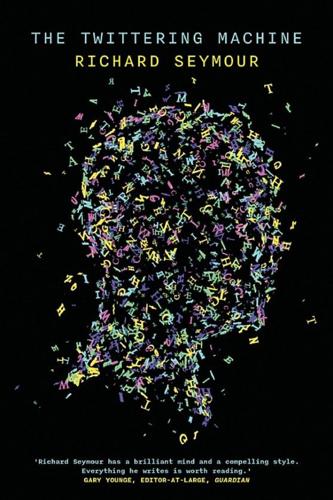
The Twittering Machine
by
Richard Seymour
Published 20 Aug 2019
Naturally, these structures can be used by political authority to promote governing norms, but they can also work as more insidious forms of control. The emerging ideal of the ‘smart city’, where sensors and data collectors determine the allocation of resources and assets, is a case in point. Such cities are already being built in Canada, China and India. While the Chinese government wants to use the technology to promote a ‘social credit’ scheme rewarding good behaviour, Google’s plans in Toronto are seemingly driven by human need. To be called Quayside, Google’s ‘smart city’ will use data collection and sensors to monitor traffic, weather, pollution and noise, to adjust the roads, paving and architecture in response to emerging issues.77 This has met stiff local opposition, for fear of what will be done with the data.
…
For an excellent dissection of ‘cloud’ ideology, see Tung-hui Hu, A Prehistory of the Cloud, MIT Press: Cambridge, MA, 2015. 76. . . . ‘everyware’ . . . Greenfield wrote of this trend long before the ubiquitous ownership of smartphones and similar devices. Adam Greenfield, Everyware: The Dawning Age of Ubiquitous Computing, New Riders: Berkeley, CA, 2006. 77. . . . Google’s ‘smart city’ . . . Ava Kaufman, ‘Google’s “Smart City Of Surveillance” Faces New Resistance In Toronto’, The Intercept, 13 November 2018; Nancy Scola, ‘Google Is Building a City of the Future in Toronto. Would Anyone Want to Live There?’, Politico, July/August 2018. 78. It closely resembles . . . Gilles Deleuze, ‘Postscript on the Societies of Control’, October, Vol. 59 (Winter, 1992), pp. 3–7. 79.
…
To be called Quayside, Google’s ‘smart city’ will use data collection and sensors to monitor traffic, weather, pollution and noise, to adjust the roads, paving and architecture in response to emerging issues.77 This has met stiff local opposition, for fear of what will be done with the data. However, the benevolent face of the ‘smart city’, the way it seems to make life easier, is also its dark side. It closely resembles French philosopher Gilles Deleuze’s idea of a ‘control society’.78 In the society of control, no one tells you what to do, whom to worship, or what is good and bad. You are simply presented with a range of tolerable options. Your reality is rewritten to exclude behaviours that the system finds intolerable. In the same way that online spending habits and clicking activities can determine how much debt you are allowed, or which advertisements you are likely to see, or what shops you will be pointed towards, your activity can be kept within a manageable bandwidth.
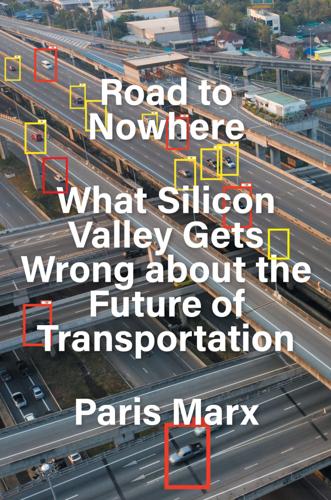
Road to Nowhere: What Silicon Valley Gets Wrong About the Future of Transportation
by
Paris Marx
Published 4 Jul 2022
As Amazon promises ever-faster delivery, its warehouses are dystopian environments with lower than industry average pay and double the industry standard injury rate, while its delivery drivers are under such high pressure they have to resort to peeing in bottles and even defecating in bags. Uber’s drivers have been reported to sleep in their cars, and many of the purportedly self-driving mobility systems rely on virtual human drivers located in the Global South to take over in the regular instances that the technology cannot navigate its environment. This even extends to the smart city with its constant promises of more efficient urban systems which hide the humans that are required to maintain them. The shut-in economy is a further example of the desire to keep people at home and work, where they can be delivered everything they need instead of going out to get it themselves, thus keeping the streets clear for autonomous delivery bots, cars, and other forms of mobility, as outlined in the second scenario.
…
Trudeau told attendees that he and Schmidt had been talking about it for a couple of years—calling into question the impartiality of the public tendering process—and asserted that the project would yield “smarter, greener, more inclusive cities”1 by using technology for public good. What was not to like? At the time of the announcement, it was still common for cities to roll out the red carpet for tech companies. Concern about their monopolistic practices was only beginning to gain mainstream traction, and emerging smart city companies were making bold claims about how their products would improve urban systems. Politicians still felt that embracing “innovation” was a good political strategy, especially after decades of privatizing city services. It was how things were done in the neoliberal city—but the shine quickly faded from the project.
…
They demanded the city halt the project after Sidewalks Labs “orchestrated a misleading, undemocratic engagement process that harm[ed] the public interest” and leaked documents confirmed it wanted to control a much larger area of the waterfront.4 Bianca Wylie, whose criticism of the project earned her the title of “Jane Jacobs of the smart city,” called the process “thoroughly anti-democratic.”5 Instead of identifying the needs of residents, then developing or contracting for technology to meet those needs (if that was what was appropriate), the city and Waterfront Toronto were bending over backwards to allow Sidewalk Labs to impose its vision and its priorities on the residents of Toronto.
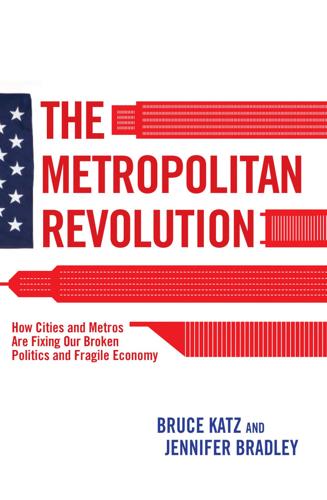
The Metropolitan Revolution: How Cities and Metros Are Fixing Our Broken Politics and Fragile Economy
by
Bruce Katz
and
Jennifer Bradley
Published 10 Jun 2013
“Less Energy, More Growth: Prosperity through Efficiency,” Lean Energy Cluster and Monday Morning (www.leanenergy.dk/media/44595/less_energy_ more_growth_lean_energy_publikation_printvenlig.pdf); “Copenhagen, Beyond Green: The Socioeconomic Benefits of Being a Green City,” Green Growth Leaders and Monday Morning (www.sustainia.me/resources/publications/mm/CPH%20 Beyond%20Green.pdf). 10-2151-2 notes.indd 242 5/20/13 7:00 PM NOTES TO PAGES 204–08 243 14. Bruce Katz, “Why the U.S. Government Should Embrace Smart Cities,” Brookings, July 26, 2011 (www.brookings.edu/research/opinions/2011/07/26-cities-katz). See also Boyd Cohen, “Singapore Is on Its Way to Becoming an Icon Smart City,” Fast Company, May 2012 (www.fastcoexist.com/1679819/singapore-is-on-its-wayto-becoming-an-iconic-smart-city); Greg Lindsay, “Cisco’s Big Bet on New Songdo: Creating Cities from Scratch,” Fast Company, February 1, 2010 (www.fastcompany. com/1514547/ciscos-big-bet-new-songdo-creating-cities-scratch). 15.
…
The center will also work with private industry partners, including IBM, Cisco, ConEdison, National Grid, Siemens, Xerox, AECOM, Arup, IDEO, Lutron, and Microsoft, and government labs, including the Livermore, Los Alamos, and Sandia National Laboratories. 02-2151-2 ch2.indd 28 5/20/13 6:48 PM NYC: INNOVATION AND THE NEXT ECONOMY 29 NEW YORK CITY’S APPLIED SCIENCES CAMPUSES 02-2151-2 ch2.indd 29 5/20/13 6:48 PM 30 NYC: INNOVATION AND THE NEXT ECONOMY In July 2012 Columbia University’s new Institute for Data Sciences and Engineering, located at its Morningside Heights and Washington Heights campuses in New York City, became the third Applied Sciences campus.37 At Columbia, students and faculty will focus on applications for new media, smart cities, health analytics, cybersecurity, and financial analytics, among other areas. Columbia’s deal, like NYU’s, includes $15 million in various forms from the city. In a rapidly urbanizing world, with more than 6 billion people expected to populate cities and metropolitan areas over the next several years, smart and sustainable municipal services, or what NYU is calling “urban science,” will be in high demand. Thus it’s no surprise to find that a “smart cities” or “built environment” thread runs through all the institutions selected for the Applied Sciences initiative.
…
Janna Anderson, Jan Lauren Boyles, and Lee Rainie, “The Future of Higher Education” (Washington: Pew Internet and American Life Project, July 2012). 18. See Techonomy website (www.techonomy.com) and Code for America website (www.codeforamerica.org). 19. Bruce Katz, “Why the U.S. Government Should Embrace Smart Cities,” Brookings, July 26, 2011 (www.brookings.edu/research/opinions/2011/07/26-cities-katz). 20. Alan Berube and Carey Anne Nadeau, “Metropolitan Areas and the Next Economy: A 50-State Analysis” (Brookings, 2011). 21. Ibid. 22. In 1776 the United States had a population of about 2.5 million; Philadelphia was the largest city, with 40,000 residents.
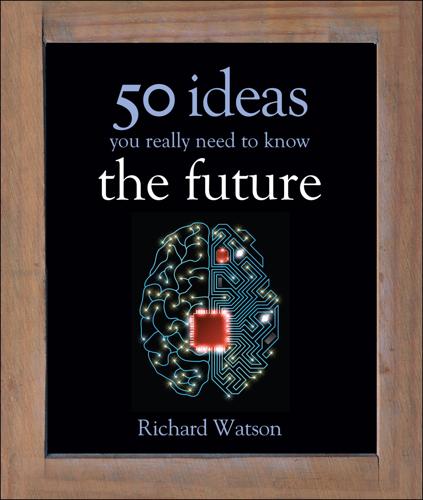
50 Future Ideas You Really Need to Know
by
Richard Watson
Published 5 Nov 2013
ISBN 978-1-62365-195-4 Distributed in the United States and Canada by Random House Publisher Services c/o Random House, 1745 Broadway New York, NY 10019 www.quercus.com Contents Introduction POLITICS & POWER 01 Ubiquitous surveillance 02 Digital democracy 03 Cyber & drone warfare 04 Water wars 05 Wane of the West ENERGY & ENVIRONMENT 06 Resource depletion 07 Beyond fossil fuels 08 Precision agriculture 09 Population change 10 Geo-engineering THE URBAN LANDSCAPE 11 Megacities 12 Local energy networks 13 Smart cities 14 Next-generation transport 15 Extra-legal & feral slums TECHNOLOGICAL CHANGE 16 An internet of things 17 Quantum & DNA computing 18 Nanotechnology 19 Gamification 20 Artificial Intelligence HEALTH & WELL-BEING 21 Personalized genomics 22 Regenerative medicine 23 Remote monitoring 24 User-generated medicine 25 Medical data mining SOCIAL & ECONOMIC DIMENSIONS 26 Living alone 27 Dematerialization 28 Income polarization 29 What (& where) is work?
…
the condensed idea Locally produced and distributed energy timeline 1816 First energy company established in USA 1821 First electric motor 1839 Discovery of photovoltaic effect 1882 First hydroelectric power plant 1888 Tesla invents AC alternator 1892 General Electric founded 1980 First US wind farm 2030 Wind farms start to be demolished 2035 Most homes engaged in local energy trading 2040 Personal energy harvesters become mandatory 13 Smart cities Stuff that was once “dumb” is becoming smart. Pipes, roads, buildings and even whole cities are no exception. Whether it’s smart meters for water supply, appliances that work out when it’s best to be switched on, or dynamic tolling for roads, we can expect more efficiency, less waste, faster fixing and more pricing that’s responsive to real-time demand.
…
Anthony Downs, writer Add a few similar ideas and we’ll soon have cities that generate as much electricity as they consume, converting rubbish into energy, diverting heavy traffic automatically and processing sewage to make fuel. Wind cones will help to cool buildings and provide natural lighting, while drinking water will be harvested from rain collected from roofs and walls. “The bias lurking behind every large-scale smart city is a belief that bottom-up complexity can be bottled and put to use for top-down ends.” Greg Lindsay, Rudin center for Transportation Policy and Management, New York University Changing road use As for roads, thanks to GPS, CCTV and other devices it’s easily possible to work out, in real time, how busy roads are and where particular cars are going.
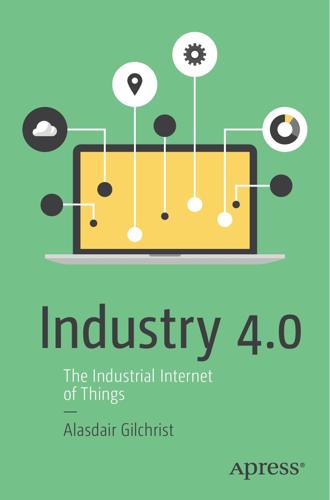
Industry 4.0: The Industrial Internet of Things
by
Alasdair Gilchrist
Published 27 Jun 2016
For example, the Godzilla Attack is a perfect example of a potential industrial Internet-type security exploit on a smart city traffic system where the attacker gained access to the traffic lights and digital overhead messaging system. In May 2014, the overhead traffic signs on San Francisco’s Van Ness Avenue were photographed by a passerby showing the flashing traffic warning “Godzilla Attack! Turn Back”. This humorous attack highlights just one of many traffic light hacks that have come about, but it could have serious implications for traffic management systems, in the context of smart cities. If traffic lights are vulnerable and an attacker can easily exploit them, it is only a matter of time before a malicious attacker can take advantage of the vulnerability to bring about massive traffic congestion or create potentially dangerous traffic flows that could lead to injury or even death.
…
As a typical use of Big Data processing is to extract meaning from unstructured data so that it can be input as structural data into an application and this requires cleaning it up. Sensor data is notoriously dirty as timestamps are often missing or lost in communications and therefore requires considerable tidying up before processing. An example of this real-time insight into Big Data handling of sensor data is found in Smart City projects. For example, if a traffic monitoring system detects congestion or an accident from its roadside sensors, it can instantaneously send control feedback to change traffic lights, thereby easing traffic flows to reduce congestion. Industry 4.0 Veracity The problems with Big Data appear when we go beyond collecting and storing vast amounts of data and analyze the data stores using the 3 Vs and consider, is the data actually true.
…
If traffic lights are vulnerable and an attacker can easily exploit them, it is only a matter of time before a malicious attacker can take advantage of the vulnerability to bring about massive traffic congestion or create potentially dangerous traffic flows that could lead to injury or even death. It is not just smart cities, and industrial companies and facilities that are appetizing targets. Sometimes the products are so intelligent that they themselves become the object of research and potential exploitation, as both Chrysler and Boeing discovered with the now-famous Jeep and aircraft hacks. Both of these celebrated attacks came about on systems thought to be unsusceptible to cyber-attacks.
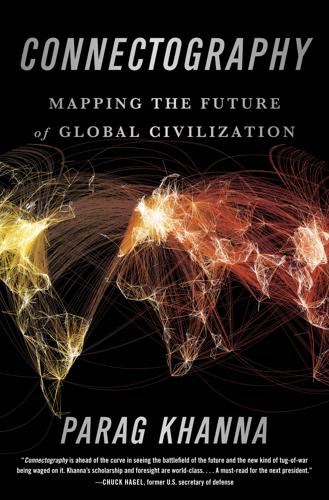
Connectography: Mapping the Future of Global Civilization
by
Parag Khanna
Published 18 Apr 2016
From Tianjin Eco-city to Guangzhou Knowledge City, thank you to the many dozens of officials who have hosted me at “smart cities” and special economic zones in China. I am similarly grateful to the managers of many other new urban developments on all continents for sharing their ambitious plans with me. Your projects are not yet on the map but surely will be thanks to your tireless efforts. Thanks also to Tony Reynard and Lincoln Ng of the Singapore Freeport for an insightful tour and conversation. At the Barcelona Smart City Expo 2014, I’d like to thank Ugo Valenti, Álvaro Nicolás, and Folc Lecha Mora. I appreciate learning about the inner workings of the City of London and its global strategy from Mark Boleat, Giles French, Anita Nandi, and Andrew Naylor.
…
It is yet another sign of the shift from a political to a supply chain world that cities are increasingly named not after people or scenery—think Jefferson or Ocean View—but instead for what role they play in the global economy: Dubai Internet City, Bangladesh Export Processing Zones Authority, Cayman Enterprise City, Guangzhou Knowledge City, Malaysian Multimedia Super Corridor, and about four thousand more. According to conventional maps, I’ve spent the past half decade visiting dozens of places that don’t exist. Whether industrial parks or “smart cities,” these supply chain nodes are popping up so quickly that most are not yet on our maps. Such zones used to be places where people just went to work; now they are communities in which people live. For hundreds of millions of workers and their dependents, the supply chain has become a way of life, an all-encompassing existence in the service of the global economy and their society’s desire to be connected to it.
…
(Indeed, much of the substance of European diplomacy with China today is direct interactions between the business associations of major cities and the trade in commercial technology that increases China’s efficiency and sustainability.) To learn how to get arguably the world’s top priority of sustainable urbanization right, you go to the World Cities Summit in Singapore or the Smart City World Congress in Barcelona—or visit the many online portals where experts, activists, and managers from hundreds of cities share information—not the UN General Assembly. “Diplomacity” is already embodied in organizations such as the United Cities and Local Governments and more than two hundred other inter-city learning networks that together already outnumber all the international organizations in the world.11 Because cities define themselves in part by their connectedness rather than their sovereignty, one can imagine a global society emerging much more readily from intercity relations than international relations
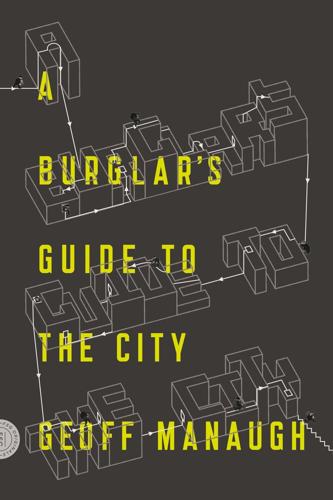
A Burglar's Guide to the City
by
Geoff Manaugh
Published 17 Mar 2015
Despite these hacks and spoofs, the power to control a city’s traffic usually lies firmly in the hands of the police, with their arsenal of blockades, traffic stops, and road closures. Police powers are increasingly woven deep into the fabric of the built environment and will only grow more pervasive as “smart city” technology becomes widespread. Cantankerous Belorussian technology critic Evgeny Morozov has written that the surveillance powers of the state are so dramatically amplified by the ubiquitous sensors, cameras, and remote-control technology associated with the smart city that urban space risks becoming little more than an inhabitable police barricade. “As both cars and roads get ‘smart,’” Morozov wrote in a 2014 op-ed for The Observer, “they promise nearly perfect, real-time law enforcement.
…
However, if all cities already contain the crimes that will occur there, then, taken to its logical conclusion, this suggests there might be a kind of Moby-Dick of crime, a White Whale of urban burglary: a town or city so badly designed that the entire place can be robbed in one go. The stakes would be massive. I spoke to an urban information technology adviser, for example, who has worked on several new “smart city” projects under construction around the world, primarily in northeast Asia. When I asked him what burglary might look like in these cities of the future, his answer was shocking. Requesting that he remain anonymous due to the nature of his answer, he explained that the operating system of New Songdo City, Korea—or what he described more specifically as the software that supports the technical fabric of the city, allowing communications between buildings, urban infrastructure, and portable devices—was legally required to be backed up and held in a safe-deposit box (alas, he would not tell me where).
…
De la Reynie’s plan ordered that lanterns be hung over the streets every sixty feet—with the unintended side effect that Paris soon gained its popular moniker, the City of Light. The world’s most romantic city takes its nickname from a police operation. Morozov warns that we are living through a kind of digital upgrade of Haussmann’s universal street-control project: the inauguration of a smart city that will be able to anticipate—and, more important, interrupt or preempt—certain behaviors, whether that means speeding, committing a burglary, or violating curfew. So-called predictive policing has been much discussed over the past few years, whereby authorities use detailed statistics and algorithms—a city’s criminal patterns and rhythms—to “predict” when and where a crime is most likely to occur.
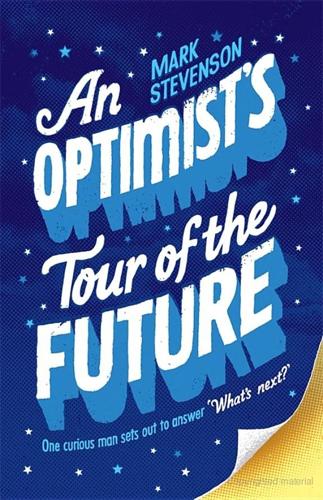
An Optimist's Tour of the Future
by
Mark Stevenson
Published 4 Dec 2010
We have skills and abilities that range from the aesthetic to the highly technical and scientific. That’s unusual and it means we can answer questions that other labs find hard.’ It’s a fair point. Where else, I wonder, will you find research groups with titles like Affective Computing, Biomechatonics, eRationality, Information Ecology, Lifelong Kindergarten, Smart Cities, and, sharing the same lab space as Cynthia’s Personal Robotics Group, Opera of the Future (this last looks at ‘how musical composition, performance, and instrumentation can lead to innovative forms of expression, learning, and health’), all nestled up against one another? It’s bonkers, in all the right ways.
…
The days of an electricity system dominated by centrally-generated power are coming to an end, that solar could do for electricity what synthetic biofuels might achieve for gasoline: create a world where our energy sources are hyper-local. While I was at MIT talking to roboticist Cynthia Breazeal I’d taken the opportunity to meet with Bill Mitchell, head of the Smart Cities Group there. ‘We’re clearly going to see a movement away from old-fashioned centralised electrical grids to a much more decentralised system that looks a lot like the Internet,’ he’d said. It’s a nice idea, but there’s still a huge distance to cover. Solar power remains expensive and there’s a lot of inertia in our existing infrastructure.
…
Cynthia tends not to give face-to-face interviews so I’m particularly grateful to her for agreeing to meet and introducing me to her sociable robots and the ideas they unleash. I still think her lab needs a tidy up, though. Do a search for ‘Leo Robot’ on YouTube and be amazed. (Thanks too to Dan Stiehl for showing me the cuddly machines.) While I was at the Media Lab I also spent a fascinating hour and half with Bill Mitchell of the Smart Cities group, a true outback kid now heading up one of the most interesting labs in America. Thanks Bill. Hod Lipson couldn’t have been friendlier, and took it upon himself to keep me up-to-date with his work long after I’d been to see him at Cornell University. His curiosity about curiosity is invigorating.
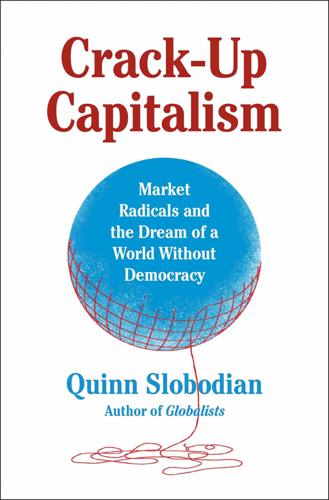
Crack-Up Capitalism: Market Radicals and the Dream of a World Without Democracy
by
Quinn Slobodian
Published 4 Apr 2023
See also container ships shopping malls, as models Shriver, Lionel Sierra Leone Silicon Oasis Silicon Valley colonialism Singapore China and City of London and as city-state Confucian-communitarian values in democracy in elections in “good governance” and growth model of “Housing for the People” program in index of economic freedom inequality in Intelligent Island initiative Japan and location of as microstate as model nation branding and noncitizens in opium economy and political freedom in popular legitimacy and public housing in real estate in resources in riot in Little India role of state in Singapore Solution as “smart city” success of underclass in United States and Sino-British Joint Declaration of 1984 Skidmore, Owings & Merrill Skype small states, viability of “smart cities” smuggling networks social conservatism social contract metaphor of mutation of social democracy, movement away from social housing projects after World War I elimination of socialism China’s abandonment of failure of liberalism and social justice social media social security social services Society for Creative Anachronism (SCA) sociological federalism “soft authoritarianism” soft secession Solomon Islands Somalia.
…
In 1965, Gordon Moore, one of the founders of Fairchild Semiconductor, observed that the number of transistors that could fit on a microchip was doubling every two years. What became known as Moore’s law meant that hardware was shrinking every year even as the amount of data it could handle ballooned. Singapore was at the vanguard—the perfect nation for the age of the microchip. The first place to call itself a “smart city,” Singapore attempted to wire the country with broadband and put a computer in every home with the Intelligent Island initiative in the 1990s.64 Not only did the country produce the literal hardware at its semiconductor foundries, but its laws, when exported to places like coastal China, were referred to as “software.”65 Singapore chimed with the idea of cut and paste, the notion that a government’s operating system could be duplicated and realized elsewhere.
…
New homeowners included “Afghan warlords and the political elite from countries like Nigeria, Syria and Lebanon, all searching for a safe place to park their savings.”49 Zones are everywhere, but contrary to the rhetoric of boosters, they do not seem to be creating islands of liberation from the state. Rather, states are using them as tools to advance their own purposes. NEOM is a telling example. Saudi Arabia, an economy owned and operated by a royal family, is contracting with the Chinese company Huawei to wire its agglomeration in the desert as a “smart city.”50 As one consultant conceded, zones have proceeded through government-enabled confiscation, running roughshod over basic libertarian principles of property rights.51 Creating a land market in rural China, for example, was projected to leave 110 million villagers without land by 2030.52 Zones are not turning the world into a patchwork of a thousand private polities in dynamic competition.
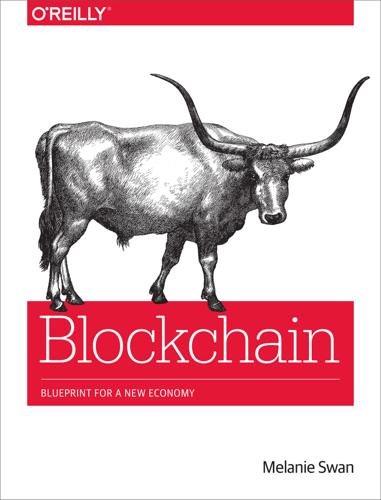
Blockchain: Blueprint for a New Economy
by
Melanie Swan
Published 22 Jan 2014
The connected world could usefully include blockchain technology as the economic overlay to what is increasingly becoming a seamlessly connected world of multidevice computing that includes wearable computing, Internet-of-Things (IoT) sensors, smartphones, tablets, laptops, quantified self-tracking devices (i.e., Fitbit), smart home, smart car, and smart city. The economy that the blockchain enables is not merely the movement of money, however; it is the transfer of information and the effective allocation of resources that money has enabled in the human- and corporate-scale economy. With revolutionary potential equal to that of the Internet, blockchain technology could be deployed and adopted much more quickly than the Internet was, given the network effects of current widespread global Internet and cellular connectivity.
…
There is also an opportunity to link blockchain development environments out to other major segments like the machine-to-machine (M2M) communication and Internet-of-Things (IoT) networks infrastructure for rapid application development. An example of an advanced integrated application of this kind envisioned for the farther future could be a smartwatch that can interact with smart-city traffic-sensor data to automatically reserve and pay for lane space with a Bitcoin-denominated smart contract. Blockchain Ecosystem: Decentralized Storage, Communication, and Computation There is a need for a decentralized ecosystem surrounding the blockchain itself for full-solution operations.
…
An example of personalized governance services might be that one resident pays for a higher-tier waste removal service that includes composting, whereas a neighbor pays for a better school package. Personalization in government services, instead of the current one-size-fits-all paradigm, could be orchestrated and delivered via the blockchain. One example of more granular government services could be a situation in which smart cities issue Roadcoin to compensate passing-by drivers for lost #QualityofLife in road construction projects. Likewise, there could be Accidentcoin that those involved in an accident pay to similarly compensate passing-by drivers for lost #QualityofLife; payment could be immediate, and shifted later as insurance companies assess blame.
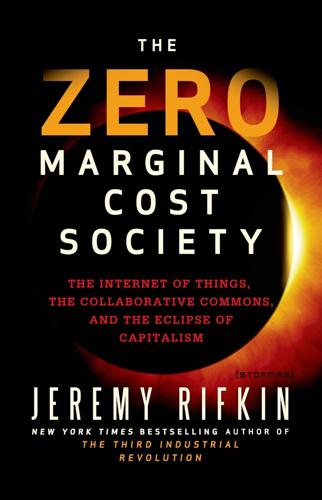
The Zero Marginal Cost Society: The Internet of Things, the Collaborative Commons, and the Eclipse of Capitalism
by
Jeremy Rifkin
Published 31 Mar 2014
George, 242 The Descent of Man (Darwin), 63 Deutsche Telekom, 54, 101, 198 Dini, Erico, 97 DIY culture, 90, 94–95, 99–100 Dobb, Maurice, 40 Doctorow, Cory, 95 dominance of social media, 201 see also Facebook; Friendster; Myspace; Twitter driverless vehicle(s), 126, 230–231 Drucker, Peter, 264 Duffy, John, 137 eBay becoming an online monopoly, 201–205 cuts out the middlemen, 232 and free currency, 262 as a profit-seeking enterprise, 252 ecological footprint, 107, 274–276, 284, 286, 302 Econofly, 145 economic need for greener/cleaner energy, 10 “Economic Policy for the Information Economy” (Summers and DeLong), 7–9 “Economic Possibilities for Our Grandchildren” (Keynes), 6–7 The Economist, 5, 77–78, 121–122, 251, 259, 265 economy of abundance, 297–303 and a biosphere lifestyle, 297–303 circular, idea of a, 236–237 and the sustainable cornucopia, 273–296 education, higher. see massive open online courses (MOOCs) edX, 115–116 Eisenstein, Elizabeth, 179 electricity importance of, 51–53 liberates women, 285 Electric Power Research Institute (EPRI), 142, 293–294 electromagnetic spectrum, 148, 165, 167, 185, 189–190 electronic healthcare records, 13, 130, 244 Elkington, John, 264 The Empathetic Civilization (Hegel), 301 employment, new kinds of, 266–269 Enclosure Movement, 17, 31, 169 The End of Work (Rifkin), 121–122 energy adaptive computing, 85 Commons, 205–206 cooperatives, 215–217 costs at data centers, 84–86 and economics, 10–11 and fossil fuel(s). see fossil fuel(s) free, 81–84 and Germany. see Germany infrastructure is vulnerable to climate change, 290 IT. see Cleanweb Movement use, proactive rather than reactive, 143 Energy Watch Group, 83–84 entrepreneurialism, strengthened by Protestant theologians, 59 entropy, definition of, 10 Entropy: A New World View (Rifkin), 100 environmentalist(s), 170–172, 187–188 Environmental Movement, 173, 182, 185 era of transparency, 75–77 Etsy, 91, 262 European Bioinformatics Institute, 86 European Commission, 11, 76–77 European enclosures, and birth of the market economy, 29–38 exponential curves, 79– 81 “extreme productivity,” 3, 70–73 ExxonMobil, 49, 54 the Fab Lab, 70, 94–95, 310 Facebook becoming an online monopoly, 201–205 changes the concept of privacy, 76 as communication, 151, 234, 248, 250, 302 exploiting the Commons for commercial ends, 199–200, 310 and freedom, 226 and GM’s decision to yank ads from, 251 as a podium for activism, 189 revenue and market share, 201 and the “Social Energy App,” 147 and Spotify, 145 and Yerdle, 237 and Zuckerberg, 145 Farber, Amy, 241–242 Federal Communications Commission (FCC), 147–151, 194, 198–199 Ferris, Cameron, 246 fertility rate, falling, 285 Filabot, 96 “fit-lifters,” 127 Flickr, 180, 234, 250 forager/hunter society(ies), 298–302 Ford, Henry, 52–54, 71, 98, 105, 123, 308 Fortune 500 companies, 22, 114, 175, 310 fossil fuel(s) costs of, 69, 87, 91, 140, 142 and cyberattacks, 294 location of, 22–23 reliance on, 54, 194–195 stalwart supporters of, 86–87 versus renewables, 69–72, 81–87, 216–217, 267, 283 see also oil “free” energy, 81–84 as a marketing device, 5 in price and free from scarcity, 273 Free Culture Movement, 173–188, 202 Freecycle Network (TFN), 236 “free-riders dilemma,” 156, 258 Free Software Foundation, 174–175 Free Software Movement, 100, 170, 174–179 free wi-fi, 147–149 feudal commons, 16–17, 29–32, 36–37, 58–61, 132, 155–156, 167, 269 Foundation on Economic Trends (FOET), 165–167, 182 Friendster, 200, 204 Frischmann, Brett M., 193–194 Frydman, Gilles, 242 Gaia hypothesis, 184 Gandhi, Mahatma, 104–108 Gates, Bill, 171, 174 GDP, 17, 20–22, 54, 74, 123, 129, 240, 266 General Electric (GE), 13, 14, 54, 73–74, 165, 210, 234 General Motors, 53, 54, 228–230 General Public Licenses (GPL), 94, 175–176 Germany and cooperatives, 213–216 flood in, 287 and Google, 201 and renewable energy, 82–83, 101, 141, 253, 257 and 3D printing, 101–102 Gershenfeld, Neil, 94 Gillespie, Tarleton, 203 Girsky, Stephen, 228–229 globalization versus reopening the global commons, 187–192 GM, teams up with RelayRides, 228–229 GNU operating system, 174–176 God of oil. see Hall, Andy Google cashes in on selling Big Data, 199–200 and control of the U.S. media market, 54 and driverless vehicles, 230 energy usage, 85 favors free Wi-Fi connection, 148 market share and revenue generated by, 201 as natural monopoly, 202–205 Ngram Viewer, 18 primary revenue stream is weakening, 251 as tracking tool, 245 Gore, Al, 219 Gorenflo, Neal, 238 Gou, Terry, 124 “The Governing of the Commons” (Ostrom), 158–162 Gram Power, 103–104 Green Button initiative, 146 Great Chain of Being, 30, 58–59, 61 Great Recession, 20, 122–129, 233, 255–262, 281–282 green feed-in tariff(s), 139, 206 Guardian, 104, 116 guilds by trade, 36–37 Gutenberg, Johannes, 35–37 hacker(s) connotations of the term, 93 and cyberterrorists, 291–292 and environmentalist(s), 170–172, 187–188 and the Free Culture Movement, 173–174 and the Makers Movement, 99–104 and 3D printing, 95 Hall, Andy, 87 Hansen, James, 287 Happiness: Lessons from a New Science (Layard), 277 Haque, Umair, 253 Hardin, Garrett, 155–159 Hazen, Paul, 213 healthcare, 13, 74, 130, 240–247 hedonistic treadmill, 276 Hegel, Georg Friedrich, 279, 301 Heilbroner, Robert, 5, 105 Herr, Bill, 129 higher education. see massive open online courses (MOOCs) The High Price of Materialism (Kasser), 277 high-tech Armageddon. see cyber attacks/cyberterrorism Hoch, Dan, 243–244 Hotelling, Harold, 136–137, 150, 206–211 how best to judge economic success, 20–21 Hoyt, Robert, 58 human race empathetic sensibility of, 278–286, 301 and Enlightenment, 60–65 and human nature through a capitalist lens, 57–65 liberating the, 7, 70 and ostracism, 163 rethinking salvation, 58–59 what makes us happy, 276–285 Hume, David, 62, 308 hybrid economy. see capitalism; Collaborative Commons IBM, 13, 14, 80, 130, 234, 250 infofacture vs. manufacture, 90 Infrastructure: The Social Value of Shared Resources (Frischmann), 193–194 Integrated Transportation Provider Services (ITPS), 228 Intel, 79, 148 Internet Corporation for Assigned Names and Numbers (ICANN), 195–196 the Internet of Everything, 14, 73 the Internet generation, 132, 145, 179, 226, 230 the Internet of Things (IoT), 11–16, 65 and Big Data. see Big Data and the chief productivity officer (CPO), 15 as a double-edged sword, 78, 267 and healthcare. see healthcare made up of, 11, 14–15 and near zero marginal cost society, 73–78 negatives associated with, 14 obstacles that slowed the deployment of, 74 and smart cities. see smart cities as source of employment, 267–268 and use of sensors, 11–13, 73–74, 143, 219, 230 Internet of Things European Research Cluster, 11 infrastructure, requirements of, 14 Izz ad-Din al-Qassam Cyber Fighters, 292 Jakubowski, Marcin, 102–103 James, William, 279–280 Jennings, Ken, 130 Jobs, Steve, 305, 308 Jumpstart Our Business Start Ups Act, 257 Kaku, Michio, 79 Kasser, Tim, 277 Keynes, John Maynard, 5–7, 105, 268 Khoshnevis, Dr.
…
Other sensors track the whereabouts of products shipped to retailers and consumers and keep tabs on the amount of waste being recycled and processed for reuse. The Big Data is analyzed 24/7 to recalibrate supply chain inventories, production and distribution processes, and to initiate new business practices to increase thermodynamic efficiencies and productivity across the value chain. The IoT is also beginning to be used to create smart cities. Sensors measure vibrations and material conditions in buildings, bridges, roads, and other infrastructure to assess the structural health of the built environment and when to make needed repairs. Other sensors track noise pollution from neighborhood to neighborhood, monitor traffic congestion on streets, and pedestrian density on sidewalks to optimize driving and walking routes.
…
The coming together of the Communications Internet, the Energy Internet, and the Logistics Internet in an Internet of Things provides the cognitive nervous system and physical means to integrate all of humanity in an interconnected global Commons that extends across the entirety of society. This is what we mean when we talk about smart cities, smart regions, smart continents, and a smart planet. The linking up of every human activity in an intelligent global network is giving birth to a wholly new economic being. The old being of the First and Second Industrial Revolutions relied on a communication/energy matrix and logistics grid that required huge sums of capital, and therefore had to be organized in vertically integrated enterprises under centralized command and control to achieve economies of scale.
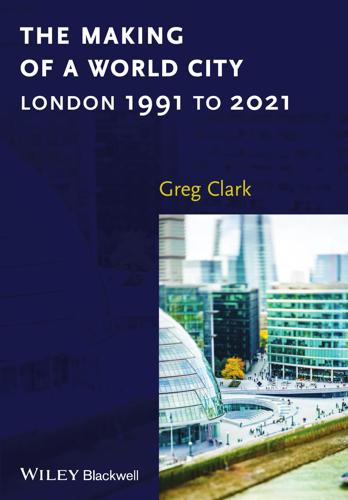
The Making of a World City: London 1991 to 2021
by
Greg Clark
Published 31 Dec 2014
Initiatives (or lack thereof) in the areas of heritage, pollution, sustainable development and carbon footprint are increasingly visible, and will affect the living choices of more knowledge workers and location decisions of NGOs and other public institutions. The financial crisis has also accelerated a new debate on the prospects of smart cities. New partnerships and projects with multinational technology firms offer world cities the opportunity to make urban transport, security, telecommunications, banking and energy systems more joined-up and interoperable. Smart city initiatives can, in principle, lower city operating expenses and make the urban environment more seamless and productive for citizens and workers. In the next generation, global cities will seek to build these intelligent systems and facilitate the long-term embedding of innovation. 8.
…
The board aims to harness technology and data to solve city system challenges – across transport, utilities, housing, trade networks and labour markets. Chaired by Imperial College Professor David Gann and reporting to the Mayor, its delivery arm brings together infrastructure organisations with entrepreneur solutions to shape London’s path as a smart city and create a pipeline of projects for potential investment. Smart London constitutes the “first time London is leading with a coherent, holistic and highly ambitious plan” to employ data as a city service (Gann, 2013: 3). It perhaps signals a stepchange in the way London’s infrastructure needs are approached – from siloed and reactive incrementalism to proactive systems integration.
…
More tax flexibility would allow the governments to use tax variables to incentivise enterprise and private investment, and negotiate individual deals with firms and sectors to assist with their development. London currently has limited ability to integrate different investment streams and flows. Its two-tier system of government exacerbates the fragmentation, making it difficult for London to follow ‘smart city’ style integration of the city’s infrastructural systems (transport, energy, telecoms, water, waste), despite the progress witnessed within individual systems such as TfL’s successful Oystercard and Barclays Bike Hire schemes. Fragmentation reduces inter-operability and opportunities for integrative co-investment into London’s ‘systems of systems’, especially relative to other, more sustainable cities.
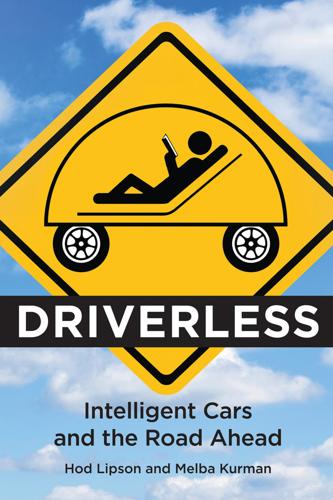
Driverless: Intelligent Cars and the Road Ahead
by
Hod Lipson
and
Melba Kurman
Published 22 Sep 2016
Perhaps in the future, a new generation of hardware devices could reduce the cost of creating intelligent highways. As the number of connected devices has exploded in the past few years, the Internet of Things has become a popular phrase in technology circles. A report by Gartner predicts that in 2016, smart cities will use 1.6 billion connected devices, a 39 percent increase from the year before. In 2018, Gartner predicts that the number of connected devices in smart cities will number 3.3 billion.12 Most of these connected devices will be used for security (e.g., cameras) or to control the indoor climate in commercial buildings and public spaces such as shopping malls, offices parks, and airports.
…
“Proposed Rules,” Federal Register 79, no. 161 (Wednesday, August 20, 2014). 11. Susan Zimmerman, Nelsie Alcoser, David Hooper, Crystal Huggins, Amber Keyser, Nancy Santucci, Terence Lam, Josh Ormond, Amy Rosewarne, and Elizabeth Wood, GAO Report. 12. Pedro Hernandez, “Smart Cities Will Drive IoT Device Demand in 2016: Gartner,” Datamation.com, http://www.datamation.com/cloud-computing/smart-cities-will-drive-iot-device-demand-in-2016-gartner.html?google_editors_picks=true 13. Tsz-Chiu Au, Shun Zhang, and Peter Stone, “Autonomous Intersection Management for Semi-Autonomous Vehicles,” Handbook of Transportation, ed. Dušan Teodorović (New York: Routledge 2015). 14.
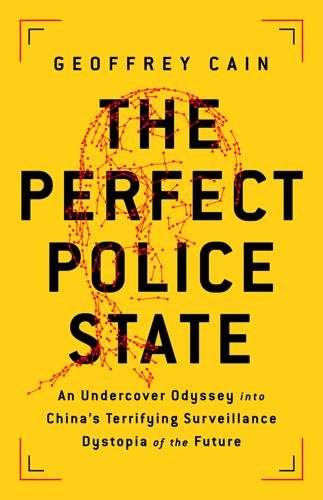
The Perfect Police State: An Undercover Odyssey Into China's Terrifying Surveillance Dystopia of the Future
by
Geoffrey Cain
Published 28 Jun 2021
Sheena Chestnut Greitens, “Dealing with Demand for China’s Global Surveillance Exports,” Brookings Institution, April 2020, https://www.brookings.edu/wp-content/uploads/2020/04/FP_20200428_china_surveillance_greitensv3.pdf. 27. Yau Tsz Yan, “Smart Cities or Surveillance? Huawei in Central Asia,” Diplomat, August 7, 2019, https://thediplomat.com/2019/08/smart-cities-or-surveillance-huawei-in-central-asia/ 28. Joe Parkinson, Nichola Bariyo, and Josh Chin, “Huawei Technicians Helped African Governments Spy on Political Opponents,” Wall Street Journal, August 15, 2019, https://www.wsj.com/articles/huawei-technicians-helped-african-governments-spy-on-political-opponents-11565793017. 29.
…
In 2013, Sinovation Ventures, the AI-focused venture capital firm set up by Kai-fu Lee, backed the growing facial recognition platform Megvii (“Mega Vision”) with an undisclosed sum.12 Then SenseTime (Megvii’s competitor, founded in Hong Kong in 2014) released the first algorithm that under certain conditions could detect people more accurately than the human eye—and claimed it beat Facebook, a landmark in the AI industry.13 “Public security” applications, SenseTime’s product development head and Microsoft alumnus Yang Fan admitted, were a lucrative market. “There’s a strong, hard demand driven by smart cities and surveillance,” he told Forbes Asia.14 But facial recognition software needed cutting-edge semiconductors that could power the AI. Where would they come from? SenseTime and other Chinese AI companies turned to US companies for the semiconductors to power their software. And American companies, it turned out, were interested in the applications of Chinese software technologies for mobile apps and law enforcement.
…
For most countries, the centerpiece of this decision was determined by which company they wanted to build their nation’s next-generation data network. A government could hire Huawei to build a 5G network, or hire a Western company like Finland’s tech company Nokia or Sweden’s tech giant Ericsson. The 5G network promised a high-speed network with blazing-fast data speeds that could sustain AI, smart manufacturing, smart cities, and other emerging technologies. It was the twenty-first century equivalent to building the railroads and airlines of the past—a boon for the economy, the engine and symbol of national economic progress. “Widespread 5G connectivity will eliminate information islands, boost the prosperity of a digitalized sharing economy, promote changes to existing production methods and lifestyles, and finally improve people’s quality of life,” Huawei wrote in a white paper.16 By the middle of 2018, the United States and its allies expressed their reservations over granting a 5G contract to Huawei.
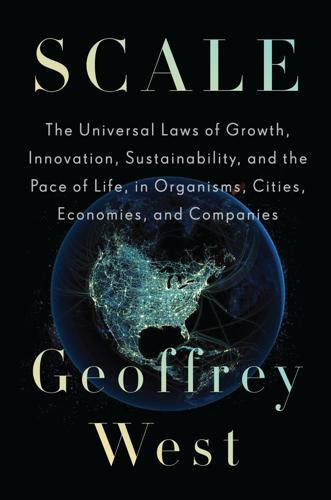
Scale: The Universal Laws of Growth, Innovation, Sustainability, and the Pace of Life in Organisms, Cities, Economies, and Companies
by
Geoffrey West
Published 15 May 2017
Just within academia itself there is a dizzying array of separate departments, centers, and institutes representing a broad spectrum of alternative ways of perceiving cities: urban geography, urban economics, urban planning, urban studies, urbanomics, architectural studies, and many more, each with its own culture, paradigm, and agenda, though rarely interacting with one another. The situation is rapidly changing as new developments are being initiated, many stimulated by the advent of big data and the vision of smart cities, both somewhat naively touted as panaceas for solving all of our urban problems. But tellingly, there are as yet no explicit departments of “urban science” or “urban physics.” These represent a new frontier as the urgency to understand cities from a more scientific perspective emerges. This is the context of what I am presenting here, namely using scale as a powerful tool for opening a window onto the development of a quantitative conceptual integrated systemic framework for understanding cities.
…
Many of the thinner segments, the “capillaries,” represent noninterstate roads whereas the thicker segments, the main “arteries,” are larger roads. Compare this with the cardiovascular blood transport system shown in chapter 3. Unfortunately, no one has performed a similar analysis within cities, primarily because we don’t have the detailed statistics on traffic flow for every street in the city. The advent of smart cities with the promise of countless detectors on every street corner monitoring traffic will eventually provide sufficient data to carry out similar analyses on all cities to reveal the dynamical structure of their transportation system, much like the map here. This would provide a detailed quantitative valuation of traffic patterns and the attractiveness of specific locations as well as other metrics that are crucial for planning purposes such as in successfully developing new areas of a city or deciding on the placement of new malls or stadiums.
…
So analyzing massive data sets of cell phone calls can potentially provide us with new and testable quantitative insight into the structure and dynamics of social networks and the spatial relationships between place and people and, by extension, into the structure and dynamics of cities. This unforeseen consequence of mobile phones and other IT devices has ushered in the era of big data and smart cities with the somewhat hyperbolic promise that these will provide the tools for solving all of our problems. And not just the infrastructural challenges in cities: the promise extends to all aspects of life from health and pollution to crime and entertainment. This is just one manifestation of the rapid emergence of “smart” industries based on the availability of enormous amounts of data that we ourselves unwittingly generate, whether through our mobile devices, our mobility, or our health records.
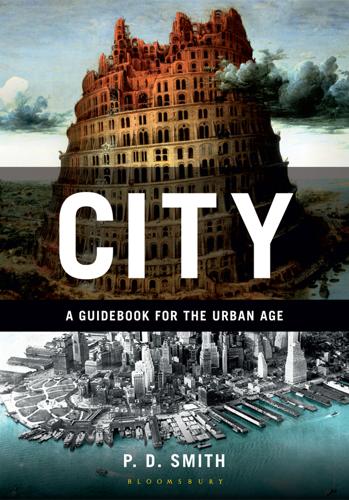
City: A Guidebook for the Urban Age
by
P. D. Smith
Published 19 Jun 2012
Just as the Industrial Revolution transformed cities and the lives of their inhabitants, so, too, the information revolution will undoubtedly change urban environments and require existing infrastructure to be radically updated. For the old cities of Europe, retrofitting these new technologies will take time and the cost may well force planners to reconsider how infrastructure is designed so that cities can quickly adapt to change in the future.8 Increasingly, the infrastructure of tomorrow’s smart cities will be controlled by computers. Already some of the largest technology and computing companies, such as Cisco and IBM, are designing software that will integrate all the vital systems that ensure cities run smoothly. By bringing these disparate systems together, IBM claims it will allow cities to ‘operate like living organisms, sensing and responding quickly to potential problems before they occur to protect citizens, save resources and reduce energy consumption and carbon emissions’.9 Cities are already being built around the requirements of the new information technologies.
…
By bringing these disparate systems together, IBM claims it will allow cities to ‘operate like living organisms, sensing and responding quickly to potential problems before they occur to protect citizens, save resources and reduce energy consumption and carbon emissions’.9 Cities are already being built around the requirements of the new information technologies. In the city of New Songdo in South Korea, Cisco is implementing its vision for the smart cities of the future. Under construction since 2001, New Songdo is being built on a man-made island in the Yellow Sea, forty miles south-west of Seoul. Its ambitious plan involves creating an electronic central nervous system for the city. The city will ‘run on information’.10 A pervasive network of sensors and smart chips, spread throughout the city, will transform what is usually a collection of separate machines, buildings and networks into a single urban organism, a sentient city.
…
Every home will be equipped with TelePresence screens, which will be the citizen’s interface with the urban operating system and a communications system for everything from booking a restaurant table to talking to your doctor. The city’s data and services will be instantly available without the need to step outside your apartment. New Songdo City is due for completion in 2015. It is viewed by its developers, the New York-based Gale International, as the first of many such smart cities across the region. And who knows – as the technology improves, maybe eventually you will have an app for your city. One day the city itself may even talk to its citizens. Air Mail As well as in Paris, there were also pneumatic networks beneath the streets of American cities.
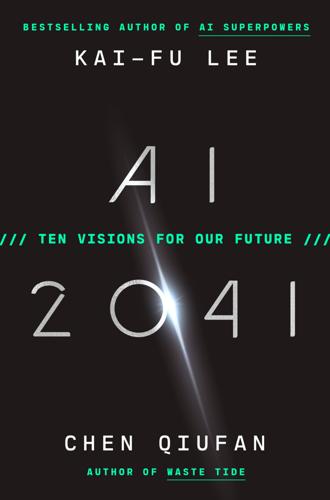
AI 2041: Ten Visions for Our Future
by
Kai-Fu Lee
and
Qiufan Chen
Published 13 Sep 2021
Classification: LCC Q335 .L423 2021 (print) | LCC Q335 (ebook) | DDC 006.3—dc23 LC record available at https://lccn.loc.gov/2021012928 LC ebook record available at https://lccn.loc.gov/2021012929 International edition ISBN 9780593240717 Ebook ISBN 9780593238301 crownpublishing.com Book design by Edwin Vazquez, adapted for ebook Cover Design: Will Staehle ep_prh_5.7.1_c0_r0 Contents Cover Title Page Copyright Epigraph Introduction by Kai-Fu Lee: The Real Story of AI Introduction by Chen Qiufan: How We Can Learn to Stop Worrying and Embrace the Future with Imagination Chapter One: The Golden Elephant Analysis: Deep Learning, Big Data, Internet/Finance Applications, AI Externalities Chapter Two: Gods Behind the Masks Analysis: Computer Vision, Convolutional Neural Networks, Deepfakes, Generative Adversarial Networks (GANs), Biometrics, AI Security Chapter Three: Twin Sparrows Analysis: Natural Language Processing, Self-Supervised Training, GPT-3, AGI and Consciousness, AI Education Chapter Four: Contactless Love Analysis: AI Healthcare, AlphaFold, Robotic Applications, COVID Automation Acceleration Chapter Five: My Haunting Idol Analysis: Virtual Reality (VR), Augmented Reality (AR), and Mixed Reality (MR), Brain-Computer Interface (BCI), Ethical and Societal Issues Chapter Six: The Holy Driver Analysis: Autonomous Vehicles, Full Autonomy and Smart Cities, Ethical and Social Issues Chapter Seven: Quantum Genocide Analysis: Quantum Computers, Bitcoin Security, Autonomous Weapons and Existential Threat Chapter Eight: The Job Savior Analysis: AI Job Displacement, Universal Basic Income (UBI), What AI Cannot Do, 3Rs as a Solution to Displacement Chapter Nine: Isle of Happiness Analysis: AI and Happiness, General Data Protection Regulation (GDPR), Personal Data, Privacy Computing Using Federated Learning and Trusted Execution Environment (TEE) Chapter Ten: Dreaming of Plenitude Analysis: Plenitude, New Economic Models, the Future of Money, Singularity Acknowledgments Other Titles About the Authors What we want is a machine that can learn from experience.
…
I projected that AI’s new applications in digital industries, finance, retail, and transportation would build unprecedented economic value, but also create problems related to the loss of human jobs and other issues. AI is an omni-use technology that will penetrate virtually all industries. Its effects are being felt in four waves, beginning with Internet applications, followed by applications in business (e.g. financial services), perception (think smart cities), and autonomous applications, like vehicles. Four waves of AI applications are disrupting virtually all industries. By the time you read this new book in late 2021 or beyond, the predictions I made in AI Superpowers will have largely become reality. We must now look ahead to new frontiers.
…
Today robotic arms can grasp, manipulate, and move rigid objects in applications like welding, assembling lines, and object picking in e-commerce distribution centers. These robots will gradually become more capable. Computer vision using cameras and other sensors (such as LiDAR) will be an integral part of smart cities and autonomous vehicles. Mobile platforms will be able to navigate indoors and outdoors and work in swarms with great efficiency and speed, and legged robots will be able to go anywhere. Robotic vision, manipulation, and movement will be coordinated and combined in increasingly complex applications.
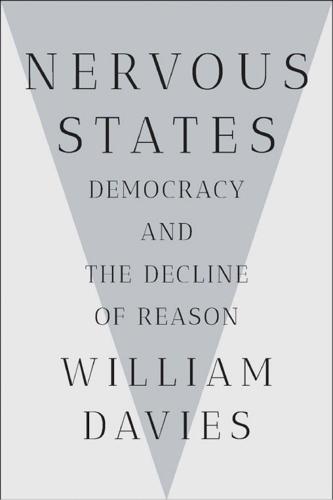
Nervous States: Democracy and the Decline of Reason
by
William Davies
Published 26 Feb 2019
You can study the number of mobile-phone signals in a given place at a given time, or equip urban infrastructure (such as street lights) with smart sensory devices, but the data that is captured remains fleeting in nature. It’s good for sensing surges of activity and movement, which is what such “smart city” interventions are principally designed for, but a crowd remains an intrinsically difficult thing to grasp objectively. As absurd as the statements of Trump, Spicer, and Conway may have sounded, there is something telling about the fact that this inaugural spat arose around this particular topic: a matter of great emotional significance, but where experts are comparatively powerless to resolve differences.
…
The analyst’s value lies in pruning vast quantities of useless data, leaving only that which deserves our attention.16 But if they lack any intrinsic interest in the topic at hand (other than the mathematics), they also have no view of their own regarding what “something meaningful” means—they are therefore in the service of a client. Alternatively, their biases and assumptions creep in, without being consciously reflected on or criticized.17 The clients for data science are multiplying all the time. “Quants” can make big money working for Wall Street banks and hedge funds, building algorithms to analyze price movements. “Smart city” projects depend on data scientists to extract patterns of activity from the frenetic movements of urban populations, resources, and transport. Firms such as Peter Thiel’s Palantir help security services identify potential security threats, by isolating dangerous patterns of behavior. And then there are the murky cases of consultancies, such as Cambridge Analytica, who worked for political clients to help tailor messaging to particular voters.
…
Companies such as Facebook have hired academics to analyze their data, and many of these experts are still permitted to publish in academic journals. But these developments remain hindered by the ambiguities of public–private partnerships. For example, the IT infrastructure used to build e-government projects or “smart cities” comes from the commercial sector, and the companies that provide it often retain control over the data that results. The US government outsources IT services in areas of the greatest importance to national security, with Amazon Web Services hosting classified systems for the CIA for example. Among the things we don’t know is quite how effective platforms are in influencing our behavior, emotions, and preferences.
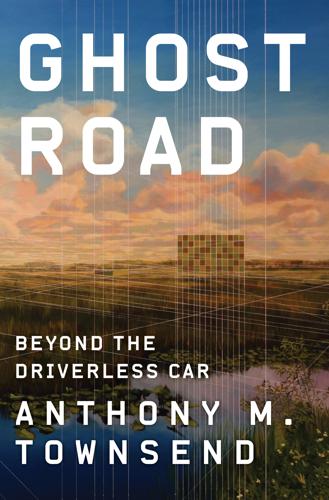
Ghost Road: Beyond the Driverless Car
by
Anthony M. Townsend
Published 15 Jun 2020
Fitted with the right kinds of air-quality sensors, ushers could give cities a much clearer picture of the problem. But if ushers were not operated by government, ownership and reuse of their multiple data streams would be difficult to control and controversial. Either way, ushers would be less Big Brother-like than the current default approach to “smart cities”—blanketing entire territories with a panopticon web of pole-mounted sensors. In Japan, Hitachi has demonstrated an experimental penguin-like “patrol robot.” This adorable droid trundles along footpaths, greets schoolkids and seniors by name, provides auxiliary street lighting at night, and flaps its flipper-like arms while summoning paramedics wirelessly when it detects a medical emergency.
…
Bloomberg, May 7, 2018, https://www.bloomberg.com/news/features/2018-05-07/who-s-winning-the-self-driving-car-race. 95more than one billion taxibots: Author’s calculation using estimates from UBS, Longer Term Investments: Smart Mobility (Chief Investment Office Americas, October 19, 2017). 95SilverRide targets senior citizens: Mitchell Hartman, “Wanted: Elder Transportation Solutions,” Marketplace, January 30, 2019, https://www.marketplace.org/2019/01/30/business/wanted-elder-transportation-solutions. 95“transported everything from leopards”: Ted Trauter, “Pet Chauffeur Tried to Adapt to Tough Economy,” You’re the Boss (blog), New York Times, August 26, 2011, https://boss.blogs.nytimes.com/2011/08/26/pet-chauffeur-tries-to-adapt-to-tough-economy. 96no-cost rides to prenatal-care appointments and grocery stores: Laura Bliss, “In Columbus, Expectant Moms Will Get On-Demand Rides to the Doctor,” CityLab, December 27, 2018, https://www.citylab.com/transportation/2018/12/smart-city-columbus-prenatal-ride-hailing/579082/. 97the company could soon be serving up to a million passengers: Alexis Madrigal, “Finally, the Self-Driving Car,” The Atlantic, December 5, 2018, https://www.theatlantic.com/technology/archive/2018/12/test-ride-waymos-self-driving-car/577378/. 97Singapore could make do with half: MIT Senseable City Lab, “Unparking,” Massachusetts Institute of Technology, accessed 20 February 2019, http://senseable.mit.edu/unparking/. 97could swap one private self-driving cab for every six: International Transport Board of the OECD, Urban Mobility System Upgrade. 98eliminate upwards of 75 percent of its yellow cabs: Javier Alonso-Mora et al., “On-Demand High-Capacity Ride-Sharing via Dynamic Trip-Vehicle Assignment,” Proceedings of the National Academy of Sciences of the United States of America 114, no. 3 (2017): 462–67. 98high cost of remote human safety monitors: Ashley Nunes and Kristen Hernandez, “The Cost of Self-Driving Cars Will Be the Biggest Barrier to Their Adoption,” Harvard Business Review, January 31, 2019, https://hbr.org/2019/01/the-cost-of-self-driving-cars-will-be-the-biggest-barrier-to-their-adoption. 98“We are going to also offer third-party”: “Full Video and Transcript: Uber CEO Dara Khosrowshahi at Code 2018,” Recode, June 4, 2018, https://www.recode.net/2018/5/31/17397186/full-transcript-uber-dara-khosrowshahi-code-2018. 99flubbed their geometry too: For more, see Jarett Walker, “Does Elon Musk Understand Urban Geometry?”
…
Sinozic, “Autonomous, Connected, Electric Shared Vehicles (ACES) and Public Finance: An Explorative Analysis,” Transportation Research Interdisciplinary Perspectives, published ahead of print, September 28, 2019, http://dx.doi.org/10.1016/j.trip.2019.100038. 222“This likely represents the lower bound”: International Transport Board of the OECD, The Shared-Use City: Managing the Curb, ITF Corporate Partnership Board Report, 2018, 58. 222“The American city is wasting”: Henry Grabar, “Give the Curb Your Enthusiasm,” Slate Metropolis, July 19, 2018, https://slate.com/business/2018/07/curb-space-is-way-too-valuable-for-cities-to-waste-on-parked-cars.html. 222“Cashing In on the Curb”: Stephen Goldsmith, “Cashing In on the Curb,” Governing, July 24, 2018, http://www.governing.com/blogs/bfc/col-smart-cities-data-curb-sidewalk-mobility-value.html. 223“It’s the most valuable space that a city owns”: Aarian Marshall, “To See the Future of Cities, Watch the Curb. Yes, the Curb,” Wired, November 22, 2017, https://www.wired.com/story/city-planning-curbs/. 10. Pushing Code 225“The ghosts swarm”: Rae Amantrout, “Unbidden,” in Versed (Middletown, CT: Wesleyan University Press, 2009). 229“if it is legible”: Kevin A.
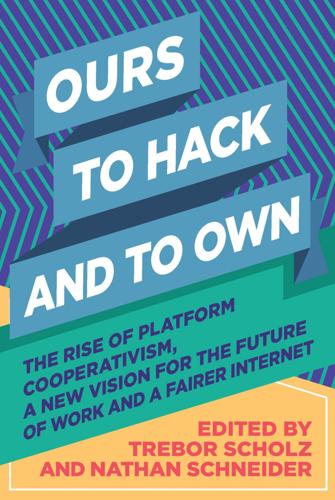
Ours to Hack and to Own: The Rise of Platform Cooperativism, a New Vision for the Future of Work and a Fairer Internet
by
Trebor Scholz
and
Nathan Schneider
Published 14 Aug 2017
In the absence of rigorous democratic debates, online labor behemoths are producing their version of the future of work right in front of us. We have to move quickly. Together with cities like Berlin, Barcelona, Paris, and Rio de Janeiro, which have already pushed back against Uber and Airbnb, we ought to refine the discourse around “smart cities” and machine ownership. We need incubators, small experiments, step-by-step walkthroughs, best practices, and legal templates that online co-ops can use. Developers will script a WordPress for platform co-ops, a free-software labor platform that local developers can customize. Ultimately, platform cooperativism is not merely about countering destructive visions of the future, it is about the marriage of technology and cooperativism and what it can do for our children, our children’s children, and their children into the future. 5.
…
The builders of emerging online platforms aim to become pervasive across all productive sectors, and to permeate every level of society: the level of the individual (with smartphones and wearable technology, lenses, glasses); the level of the home (“smart homes,” smart power meters and Internet-connected sensors); and the level of “smart cities” (driverless cars, networked transportation services; energy grids, drones, ubiquitous digital services). Platforms are reshaping not just the Internet but the economy as a whole, and governments have a responsibility to ensure that this new economy serves more than the platform-builders’ profits.
…
The new government is also promoting new policies to foster a collaborative economy that generates social benefits locally. Besides these types of initiatives, Ada Colau has also promised a shift toward re-municipalization of infrastructure and public services. This is grounded in a very critical understanding of the neoliberal, surveillance-driven “smart city” model being promoted by big tech corporations. The ambition, instead, is for a shift to a democratic, green, and commons-based digital city built from bottom up. This vision of re-municipalization of critical public services and network infrastructures is of growing global appeal, leading to a new alliance between public utilities and cooperative online platforms.
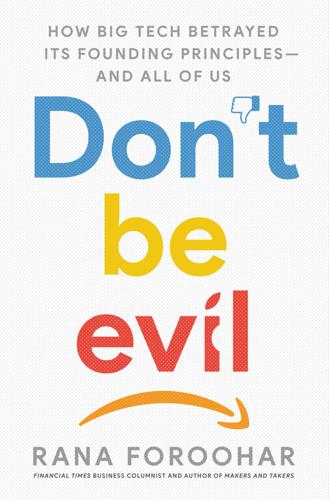
Don't Be Evil: How Big Tech Betrayed Its Founding Principles--And All of US
by
Rana Foroohar
Published 5 Nov 2019
He feared the risk of “alliances between authoritarian states and these large, data-rich IT monopolies that would bring together nascent systems of corporate surveillance with an already developed system of state-sponsored surveillance.”15 He’s right to be fearful. China has its own FAANGs, known as the “BATs”—Baidu, Alibaba, and Tencent—that routinely monitor the Chinese people in “smart cities,” a deceptively innocent moniker for 24/7 surveillance areas that are wired up with sensors (in fact, Soros gave his 2019 Davos speech on the dangers posed by the Chinese surveillance state).16 And the technology that powers these cities, it’s worth noting, is produced and installed not only by Chinese firms such as Huawei, but also by American companies like Cisco.
…
Consider the Alphabet Sidewalk Labs project in Toronto. The Google parent’s “urban innovation” arm, known as Sidewalk Labs, which works with local governments to place sensors and other technologies around cities (ostensibly to improve city services, but also, of course, to garner data for Google), is working on creating a “smart city” in the Canadian city. The high-tech neighborhood, which is being created from scratch along twelve acres of the city’s waterfront, will have sensors to detect noise and pollution, as well as heated driveways for smart cars. Robots will deliver mail through underground corridors, and all materials used in the city will be green.27 Whether you find such an idea intriguing or creepy, the planning of the entire project has been opaque.
…
Robots will deliver mail through underground corridors, and all materials used in the city will be green.27 Whether you find such an idea intriguing or creepy, the planning of the entire project has been opaque. Neither the city nor Google released all the details of the project immediately; rather, they’ve been leaked by investigative journalists. A February 2019 Toronto Star piece revealed that the plans for the smart city were much broader than the public had first thought: Google was actually planning to build its own mass transit line to the area, in exchange for a share of the property taxes, development fees, and increased land value that would ordinarily go into the city coffers.28 Think about that for a minute: One of the richest companies in the world is asking a city government, the sort of entity that it regularly petitions for better infrastructure, education, and services, to give up the money that would help it provide exactly that.
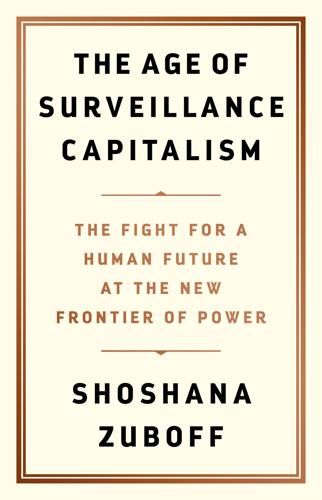
The Age of Surveillance Capitalism
by
Shoshana Zuboff
Published 15 Jan 2019
Many articles on health monitoring continue to emphasize its utility for the elderly, but the conversation has decisively moved on from this earlier state of grace. Some researchers anticipate the fusion of “smart cities” and what’s now called “m-health” to produce “smart health,” defined as “the provision of health services by using the context-aware network and sensing infrastructure of smart cities.”45 Toward that end, there are now reliable sensors for rendering an increasing range of physiological processes as behavioral data, including body temperature, heart rate, brain activity, muscle motion, blood pressure, sweat rate, energy expenditure, and body and limb motion.
…
Jessica E. Lessin, “Alphabet’s Sidewalk Preps Proposal for Digital District,” I nformation, April 14, 2016, https://www.theinformation.com/sidewalk-labs-preps-proposal-for-digital-district. 86. Eliot Brown, “Alphabet’s Next Big Thing: Building a ‘Smart’ City,” Wall Street Journal, April 27, 2016, http://www.wsj.com/articles/alphabets-next-big-thing-building-a-smart-city-1461688156. 87. Shane Dingman, “With Toronto, Alphabet Looks to Revolutionize City-Building,” Globe and Mail, October 17, 2017, https://beta.theglobeandmail.com/report-on-business/with-toronto-alphabet-looks-to-revolutionize-city-build ing/article36634779.
…
To the Ground Campaign Google’s declarations; surveillance capitalism’s dominance over the division of learning in society and its laws of motion; ubiquitous architectures of extraction and execution; MacKay’s penetration of inaccessible regions while observing unrestrained animals with methods that elude their awareness; the uncontract and its displacement of society; Paradiso’s ubiquitous sensate environment; dark data; the inevitabilism evangelists: there is one place where all these elements come together and transform a shared public space built for human engagement into a petri dish for the reality business of surveillance capitalism. That place is the city. Cisco has 120 “smart cities” globally, some of which have embraced Cisco Kinetic, which as Jahangir Mohammed, the company’s vice president and general manager of IoT, explains in a blog post, “is a cloud-based platform that helps customers extract, compute, and move data from connected things to IoT applications to deliver better outcomes.… Cisco Kinetic gets the right data to the right applications at the right time… while executing policies to enforce data ownership, privacy, security and even data sovereignty laws.”73 But, as is so often the case, the most audacious effort to transform the urban commons into the surveillance capitalist’s equivalent of Paradiso’s 250-acre marsh comes from Google, which has introduced and legitimated the concept of the “for-profit city.”
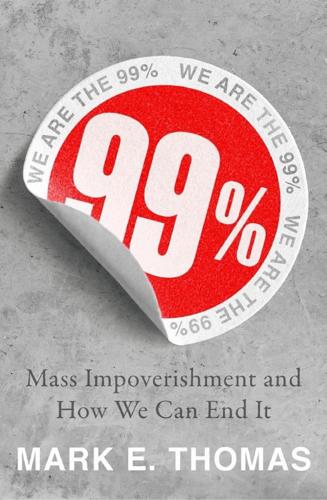
99%: Mass Impoverishment and How We Can End It
by
Mark Thomas
Published 7 Aug 2019
These new technologies also enable a wide range of services to be automated – from care of the elderly16 to manning the telephones in call-centres.17 In Japan, there is already a hotel staffed almost entirely by robots.18 Perhaps even more importantly, new business models become possible. Smart cities, for example, which aim, in the words of the Smart Cities Council, to improve: 1. Liveability: Cities that provide clean, healthy living conditions without pollution and congestion. With a digital infrastructure that makes city services instantly and conveniently available anytime, anywhere. 2. Workability: Cities that provide the enabling infrastructure – energy, connectivity, computing, essential services – to compete globally for high-quality jobs. 3.
…
Appendix I – What Current Policies Would Mean for 2050 (Supporting analysis for Chapter 1) Appendix II – Comparison of Golden Age and Market Capitalism (Supporting analysis for Chapter 2) Appendix III – Mass Impoverishment (Supporting analysis for Chapter 3) Appendix IV – The Impact of Poverty Appendix V – Automation (Supporting analysis for Chapter 5) Appendix VI – How Current Policy Sustains Mass Impoverishment (Supporting analysis for Chapter 7) Appendix VII – Myth Busting (Supporting analysis for Chapters 9 to 12) Appendix VIII – What Makes a Happy Society (Supporting analysis for Chapter 13) Appendix IX – Two Stories of Value Creation Appendix X – Bibliography (Full details and website links for data and citations) Endnotes How This Book Came About 1 McKinsey Global Institute, 2016 2 Tatlow, 2017 3 Wearden & Fletcher, 2017 4 Monaghan, 2017 5 Bulman, 2017 Chapter 0: Economics – The Five Things You Need to Know 1 Wren-Lewis, 2014 2 Ghizoni, 1971 3 McLeay, Radia, & Thomas, 2014 4 If you are curious, the paper by McLeay, Radia, & Thomas does an excellent job of explaining it 5 ONS, 2015 6 Credit Suisse, 2015 7 OECD, 2015 8 OECD, 2015 Part 1: The Burning Platform 1 Machiavelli, Niccolò, The Prince, 1532 2 Conner, 2012 Chapter 1: The Age of Anxiety 1 Benarde, 1973 2 Stanley, 2017 3 CNBC, 2014 4 Shelter, 2016 5 Centres for Disease Control and Prevention, 2017 6 Jivanda, 2014 7 Centre for Poverty Research, University of California, Davis, 2018 8 Centre for Poverty Research, University of California, Davis, 2018 9 US Census Bureau, 2018 10 Deaton, 2018 11 Again, Appendix I contains the basis for these estimates 12 US Census Bureau, 2018 13 O’Brien, 2014 Chapter 2: A Tale of Two Systems 1 Dickens, Charles, A Tale of Two Cities, London, 1859 2 Macrotrends, 2018 3 Spence, 2018 4 Lawson, 1992 5 Duncan, 2010 6 BBC, 2009 7 Pfanner, 2008 8 Financial Crisis Inquiry Commission, 2011 9 Evans, 2018 10 Campbell, Denis, ‘Hidden toll of ambulance delays at A&E revealed’, The Guardian, 2 April 2018 11 Campbell, Denis , Marsh, Sarah and Helm, Toby, ‘NHS in crisis as cancer operations cancelled due to lack of beds’, The Guardian, 14 January 2017 12 Bureau of Economic Analysis, 2015 / St Louis Federal Reserve Bank, 2015 Chapter 3: Mass Impoverishment – Coming to a Street Near You 1 Córdoba & Verdier , 2007 2 Robbins, 1935 3 Mankiw, 2009 4 Federal Reserve Bank of St Louis, 2018 5 St Louis Federal Reserve, 2016 6 Anderson & Pizzigati, 2018 7 Bureau of Labor Statistics, 2015 8 Food and Agriculture Organization of the United Nations, 2017 9 World Hunger, 2016 10 Sen, 2001 11 Federal Reserve Bank of St Louis, 2018 12 Statista, 2018 13 See the full analysis in Appendix III 14 May, We can make Britain a country that works for everyone, 2016 15 World Bank, 2018 16 OECD, 2018 17 Glasmeier, 2015 18 Centre for Research in Social Policy, 2015 19 Tiplady, 2017 20 Buffett, 2015 21 OECD, 2015 Chapter 4: An Alternative Morality 1 Wilde, Oscar, Lady Windemere’s Fan; London, 1893 2 Oxford Dictionaries, 2018 3 Soros, George, The Crisis of Global Capitalism: Open Society Endangered, New York, 1998 4 Melin, 2017 5 Ziprecruiter.com, 2018 6 Morningstar.com, 2018 7 Davidson, James Dale and Rees-Mogg, William, The Sovereign Individual (London, 1997), p. 131 8 Sohn, 2014 9 Romney, Full Transcript Mitt Romney, 2012 10 Davidson, James Dale and Rees-Mogg, William, The Sovereign Individual (London, 1997), p. 310 11 Davidson, James Dale and Rees-Mogg, William, The Sovereign Individual (London, 1997), p. 393 12 Thiel, 2009 13 Davidson, James Dale and Rees-Mogg, William, The Sovereign Individual (London, 1997), p. 140 14 Cowen, 2013 15 Mason, Rowena, ‘Benefit freeze to stay for working people costing typical family £300 a year’, The Guardian, 27 November 2017. 16 Tighe & Rovnick, 2018 17 Morley N., 2017 18 Greenfield & Marsh, 2018 19 Fleming, 2018 20 Wikipedia, 2018 Wikipedia, 2018 21 Mayer, 2016 22 Freedland, 2017 Chapter 5: The Fork in the Road 1 Carney, Mark, ‘Keeping the patient alive: Monetary policy in a time of great disruption’, World Economic Forum, 6 December 2016 2 Miller, 2014 3 US Census Bureau, 2015 4 Rigby, 2016 5 Royal Academy of Engineering, 2013 6 University of Manchester, 2016 7 Walsh, 2016 8 Kirkpatrick & Light, 2015 9 Driverless car market watch, 2016 10 Yadron, 2016 11 Bostrom, Superintelligence: paths, dangers, strategies, 2014 12 United Nations, 2016 13 ITER, 2016 14 Culham Centre for Fusion Energy, 2016 15 Noakes, 2016 16 Hudson, 2013 17 Murgia, 2016 18 Rajesh, 2015 19 Smart Cities Council, 2016 20 The Ellen MacArthur Foundation, 2016 21 Andersen, 2006 22 Allen R. C., Capital Accumulation, Technological Change, and the Distribution of Income During the British Industrial Revolution, 2005 23 Allen R. C., Pessimism Preserved: Real wages in the British Industrial Revolution, 2007 24 Schwab, 2015 25 Bureau of Labor Statistics, 2015 26 Frey & Osborne, 2013 27 Faroohar, 2018 28 Manyika, et al., 2017 29 Heath, 2018 30 Cowen, 2013 31 Murphey, 1999 Chapter 6: Wealth, Power and Freedom 1 Chaggaris, 2012 2 Churchill, 1947 3 Piketty, Capital in the 21st century, 2014 4 Stein, 2006 5 Humanities Texas, 1963 6 Rucker, 2008 7 Lawler, 2015 8 Lewis S. , 2013 9 Jones, The Establishment, 2014 10 Swinford, 2014 11 Supreme Court of the United States, 2010 12 Greenhouse, 2012 13 NASA, 2016 14 Ipsos MORI, 2014 15 Brulle, 2013 16 Fischer, 2013 17 Mayer, 2016 18 Jones, The Establishment, 2014 19 Rosenberg, 2018 20 Supreme Court of the United States, 2010 21 Roosevelt, Franklin D., State Of The Union Address, 1941 22 Berlin, 2018 23 OECD, 2010 24 Office for National Statistics, 2015 25 Wolff, 2012 26 The Economist, 2014 27 Stein, 2006 28 Bigman, 2015 29 Tudor Jones, 2015 30 Soros, George, ‘Billionaire George Soros: I Should Pay More In Taxes’, ThinkProgress, 13 February 2012 31 Freeland, 2014 Chapter 7: Eight Scenarios 1 Bank of England, 2016 2 Allen, Monaghan, & Inman , 2017 3 Thomas N. , 2016 4 Corlett, Finch, Gardiner, & Whittaker, 2016 5 Institute on Taxation and Economic Policy, 2017 Part 2: Why We Don’t Act 1 Alston, 2018 Chapter 8: Going Post-Fact 1 Moynihan, n.d. 2 Noble & Lockett, 2016 3 Goebbels, 1928 4 History.com, 2009 5 ONS, 2015 6 Political Science Resources, 2016 7 The Conservative Party Archive / Getty, 2009 8 Godley, Seven unsustainable processes, 1999 9 Baker, 2002 10 Rodrik, 1997 11 Greenspan, 2008 12 Alford, 2010 13 King, 2003 14 Brown, 1999 15 BBC, 2009 16 Bernanke, 2007 17 Greenspan, 2008 18 Cassidy, 2010 19 Wallace, 2015 20 Goff & Parker, 2011 21 Connolly, 2016 22 Pariser, 2011 23 Kuchler, 2016 24 BBC, 2016 25 Dilnot, 2016 26 OECD, 2014 27 Nickell & Saleheen, 2015 28 Lewis H. , 2016 29 Benton, 2016 30 Boczkowski, 2016 31 Carney, Mark, ‘Keeping the patient alive: Monetary policy in a time of great disruption’, World Economic Forum, 6 December 2016 32 Agerholm, 2016 33 BBC, 2016 34 Harris & Eddy, 2016 35 Spiegelhalter, 2016 36 Harris & Eddy, 2016 37 Phys.org 2016 38 Yeats, 1920 39 Suskind, 2004 40 Nyhan & Reifler, 2006 Chapter 9: Myths and Metaphors 1 Popper, 1953 2 OECD, 2019 3 Library of Congress, 2015 4 OECD, 2010 5 Cowen, 2013 6 Blanchard & Leigh, Growth Forecast Errors and Fiscal Multipliers, 2013 7 Batini, Eyraud, & Weber, 2014 8 Cameron, Economy: There is no alternative TINA is back, 2013 9 Bank of England, 2015 10 Sky News, 2009 11 McLeay, Radia, & Thomas, 2014 12 Merkel, 2008 13 Federal Reserve Bank of St Louis, 2019 14 Office for National Statistics, 2016 15 Bennett, 2016 16 Rothwell, 2014 17 Payscale.com 2018 18 Smith, 1776 19 Chang, 2010 20 Hughes, 2017 21 Say, 1821 22 Kumar, 2015 23 Nalebuff & Bradenburger, 1996 24 Edward S.
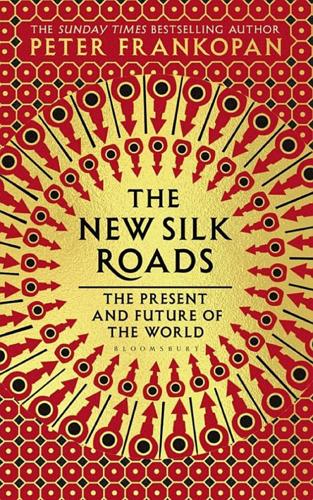
The New Silk Roads: The Present and Future of the World
by
Peter Frankopan
Published 14 Jun 2018
Building infrastructure to support booming populations is logistically difficult, expensive to do and requires not just advance planning but a considerable degree of luck in being able to anticipate what the future will look like in terms of what energy, technology and transport needs might be. Ironically, therefore, building smart cities from scratch can be easier than upgrading existing urban centres. In Bangalore, for example, difficulties caused by rapid urbanisation and the success of the city’s IT sector has put an extraordinary strain on water resources. While the city’s water board has prepared detailed proposals that they claim can not only improve supply for the current population of around 8 million but also a population that is forecast to more than double by 2050, some senior officials have spoken about the need to have a plan to evacuate the city before ‘Day Zero’ – the day that all taps run dry – which might come as early as 2025.52 Bangalore is an extreme case, but it is illustrative of the wider challenges facing urban growth as well as economic, demographic and even political stability in the future.
…
Talk of the Silk Roads of the past is helpful in providing a common narrative that binds peoples and cultures together; but so too are the practical steps to create the Silk Roads of the future. These include initiatives that seek to use artificial intelligence, nanotechnology and quantum computing to help create smart cities, part of an effort to find solutions to the challenges presented by the high densities of urban populations in Asia; using big data and satellite imagery to measure air pollutants and gases multiple times daily; and work on disaster-risk reduction across the centre of Asia, which is prone to regular earthquakes and natural disasters.
…
R. here Macron, Emmanuel here, here Maio, Luigi di here Major, John here Malaysia here, here, here, here Maldives here, here Mandela, Nelson here Mao Zedong here, here Mattis, James here, here, here, here, here May, Theresa here Milanović, Branko here Mirziyoyev, Shavkat here Mittal, Lakshmi here Mnuchin, Steve here, here Modi, Narendra here Mohammad bin Salman, Prince here, here, here Mohammadi, Ebrahim here Moshiri, Farhad here Mugabe, Robert here Mumbai terrorist attacks here Myanmar here, here, here, here, here, here Nabilllina, Elvira here Nagel, Yaakov here Nakasone, Lt General Paul here nanotechnology here NATO here, here, here, here Navarro, Peter here, here al Nayhan, Abdullah bin Zayed here al Nayhan, Mansour bin Zayed here Nazarbayev, Nursultan here, here Netanyahu, Benjamin here New Zealand here, here, here, here, here Nicholson, General John here Nike here, here North Korea here, here, here, here, here Northern Powerhouse here Nye, Joseph here Obama, Barack here, here, here Obasanjo, Olusegun here oil and gas prices here, here, here, here oil reserves here Oman here, here opium poppies here Orbán, Viktor here Ottoman Empire here Pakistan China and here, here, here, here, here, here intimidation of journalists here military exercises here relations with China here relations with India here, here relations with Russia here retail market here water resources here see also TAPI pipeline Panama here, here Paris Climate Accord here Parrikar, Manohar here Pence, Mike here, here Peru here Philippines, China and here Piraeus port here Pohiva, Akalisi here Poland, judicial reforms here Polimeks here Pompeo, Mike here, here, here, here, here, here Porter, Lisa here Prabal Dostyk exercises here press freedom here property prices here Putin, Vladimir here, here, here, here, here, here, here, here, here, here, here, here meeting with Trump here Pyne, Christopher here Qatar, relations with Saudi Arabia here Qatar Airways here, here quantum computing here Radiohead here Rahmon, Emomali here rare earths here Ravat, General Bipin here Regional Comprehensive Economic Partnership here Rice, Susan here Richthofen, Ferdinand von here RIMPAC exercise here robotics here Rosneft here, here Ross, Wilbur here Rouhani, Hassan here, here, here, here, here, here rules-based international order here, here Russia annexation of Crimea here, here, here, here crackdown on corruption here and Djibouti here intervention in Ukraine here, here, here, here military exercises here, here relations with China here, here relations with India here relations with Iran here relations with Saudi Arabia here relations with Turkey here, here technology development here and UK foreign policy here US intelligence and here and US foreign policy here Rwanda here S-500 air defence system here Safari, Mehrdad here Salman, King here São Tomé e Príncipe here Sarajevo here Saudi Arabia and Djibouti here reforms and arrests here relations with China here relations with Iran here relations with Israel here and US foreign policy here Vision 2030 plan here Seely, Bob here Senkaku Islands here Serbia here Sessions, Jeff here Shanghai Cooperation Organisation here, here, here Sherzai, Gul Agha here silicon here Siliguri Corridor here Silk Roads (the term) here Singapore here smart cities here Sochi Winter Olympics here Soleimani, Major General Qasem here, here Solomon Islands here Somalia here, here, here South China Sea here, here, here, here, here, here South Korea here Soviet Union here, here, here, here, here, here Soylu, Suleyman here space race here Space-X here Srebrenica massacre here Stalingrad, Battle of here Starr, S.
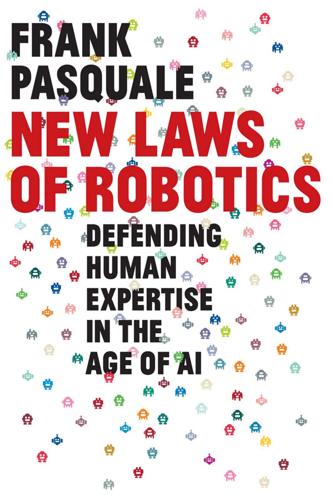
New Laws of Robotics: Defending Human Expertise in the Age of AI
by
Frank Pasquale
Published 14 May 2020
If not, please exit the door you came in through, and the kiosk will have further instructions.” That scenario may seem ridiculously sci-fi—Franz Kafka meets Philip K. Dick.6 And yet it reflects three current trends in social control. The first is ubiquitous surveillance—the ability to record and analyze every moment of a person’s day. The second is a quest for smart cities, which could dynamically adjust penalties and rewards for forbidden and recommended behavior. Futurists envision outcome-based policing that ditches old-fashioned law for more flexible evaluations of neighborhood order. In this ideal of order without law, if a loud party draws enough complaints, it’s illegal; if not, it can go on.
…
James Vincent, “All of These Faces Are Fake Celebrities Spawned by AI,” Verge, October 30, 2017, https://www.theverge.com/2017/10/30/16569402/ai-generate-fake-faces-celebs-nvidia-gan 6. Daniel J. Solove, “Privacy and Power: Computer Databases and Metaphors for Information Privacy,” Stanford Law Review 53 (2001): 1393–1462; Philip K. Dick, Ubik (New York: Doubleday, 1969). 7. Jathan Sadowski and Frank Pasquale, “The Spectrum of Control: A Social Theory of the Smart City,” First Monday 20, no. 7 (2015), https://doi.org/10.5210/fm.v20i7.5903. 8. For a discussion of computer scientists using inefficiency in design to “make space for human values,” see Paul Ohm and Jonathan Frankel, “Desirable Inefficiency,” Florida Law Review 70, no. 4 (2018): 777–838. For a discussion of how design inefficiency contradicts this urge of coders, see Clive Thompson, “Coders’ Primal Urge to Kill Inefficiency—Everywhere,” Wired, March 19, 2019, https://www.wired.com/story/coders-efficiency-is-beautiful/?
…
Nathan Vanderklippe, “Chinese Blacklist an Early Glimpse of Sweeping New Social-Credit Control,” Globe and Mail, January 3, 2018, updated January 18, 2018, https://www.theglobeandmail.com/news/world/chinese-blacklist-an-early-glimpse-of-sweeping-new-social-credit-control/article37493300/; Frank Pasquale and Danielle Keats Citron, “Promoting Innovation while Preventing Discrimination: Policy Goals for the Scored Society,” Washington Law Review 89 (2014): 1413–1424; Danielle Keats Citron and Frank Pasquale, “The Scored Society.” 77. Dan McQuillan, “Algorithmic States of Exception,” European Journal of Cultural Studies 18 (2015): 564–576. 78. Jathan Sadowski and Frank Pasquale, “The Spectrum of Control: A Social Theory of the Smart City,” First Monday 20, no. 7 (July 6, 2015), https://firstmonday.org/article/view/5903/4660. 79. Violet Blue, “Your Online Activity Is Now Effectively a Social ‘Credit Score,’ ” https://www.engadget.com/2020/01/17/your-online-activity-effectively-social-credit-score-airbnb/. 80. Audrey Watters, “Education Technology and the New Behaviorism,” HackEducation (blog), December 23, 2017, http://hackeducation.com/2017/12/23/top-ed-tech-trends-social-emotional-learning. 81.
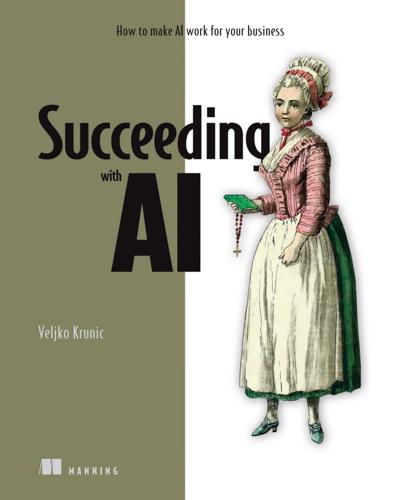
Succeeding With AI: How to Make AI Work for Your Business
by
Veljko Krunic
Published 29 Mar 2020
Available from: https://www.bbc.co.uk/news/resources/idt-sh/boeing_two _deadly_crashes Wikimedia Foundation. Boeing 737 MAX groundings. Wikipedia. [Cited 2020 Jan 8.] Available from: https://en.wikipedia.org/w/index.php?title=Boeing_737 _MAX_groundings&oldid=934819447 Wikimedia Foundation. Smart city. Wikipedia. [Cited 2019 Sep 10.] Available from: https://en.wikipedia.org/wiki/Smart_city Tesla Autopilot—Review including full self-driving for 2019. AutoPilot Review. 2019 Apr 23 [cited 2019 Sep 7]. Available from: https://www.autopilotreview .com/tesla-autopilot-features-review/ Papernot N, McDaniel P, Goodfellow I, Jha S, Celik ZB, Swami A.
…
The Sense/Analyze/React loop is widely applicable The Sense/Analyze/React loop is applicable across many scales. It could be applied on the level of a single device (as in the case of smart thermometers like Nest [36] and ecobee [37]), a business process, multiple departments, the whole enterprise, a smart city, or an even larger geographical area. I believe that the Sense/Analyze/ React pattern loop will, in the future, be applied to the level of whole societies, in systems such as disaster relief and the tracking and prevention of epidemics. The Sense/Analyze/React pattern isn’t limited to the domain of big data and data science.
…
In addition, multiple individual IoT devices, such as smart lights and smart locks, can participate in workflows like “Turn on my smart lights automatically when my smart lock unlocks the door.” IoT and AI naturally fit together because AI can provide additional functionality to the device. One example of such a system in which IoT devices benefit from AI is a smart alarm system (for example, the one discussed in section 5.1.5). On a larger scale, smart cities [143] use IoT sensors to collect data, then they use AI to manage assets and resources more effectively. Creating IoT devices requires a broad range of expertise. Depending on the type of device, a development team might need expertise in software, electrical, and mechanical engineering. You also need to arrange for the manufacture of such devices and manage suppliers and distribution chains.
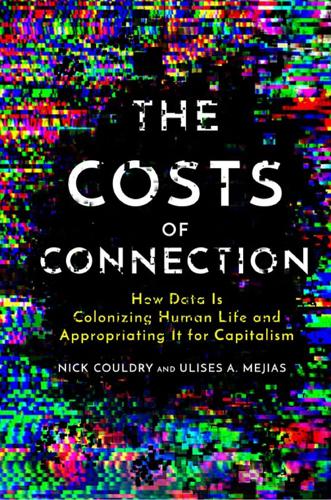
The Costs of Connection: How Data Is Colonizing Human Life and Appropriating It for Capitalism
by
Nick Couldry
and
Ulises A. Mejias
Published 19 Aug 2019
“Google’s Sidewalk Labs Signs Deal for ‘Smart City’ Makeover of Toronto’s Waterfront.” The Globe and Mail, October 17, 2017. Bradley, Joseph, Joel Barbier and Doug Handler. “Embracing the Internet of Everything to Capture Your Share of $14.4 trillion.” Cisco, 2013. https://www.cisco.com/c/dam/en_us/about/ac79/docs/innov/IoE_Economy.pdf. Brake, David. Sharing Our Lives Online. Basingstoke, UK: Palgrave MacMillan, 2014. Bratton, Benjamin H. The Stack: On Software and Sovereignty. Cambridge, MA: MIT Press, 2016. Brauneis, Robert, and Ellen Goodman. “Algorithmic Transparency for the Smart City.” Social Science Research Network, April 15, 2018. https://doi.org/10.2139/ssrn.3012499.
…
Human beings cannot remain unaffected since, in the words of Thomas Davenport, a leading US analyst of the data business, “Human beings are increasingly sensored,” and “sensor data is here to stay.”11 Sensors can sense all relevant data at or around the point in space where they are installed. “Sensing” is becoming a general model for knowledge in any domain, for example, in the much-vaunted “smart city.”12 Sensors never work in isolation but are connected in wider networks that cover ever more of the globe. All business relations get reorganized in the process, and new types of business (for selling and controlling data flows and for managing the new infrastructure of data processing and data storage) become powerful.
…
If no resistance is forthcoming, the capitalization of life is destined to reconstruct Hobbes’s “state of nature”—a battle of all against all—via an algorithmic simulation that preserves, indeed stimulates, social appearances while regrounding them in capitalism’s general drive to profitable extraction. The process will be heavily disguised. Popular narratives of “smartness” (for instance, the smart city) are an example: in the smart landscape, there are only connected individuals, natural and willing targets of commercial messaging and sources of commercially useful data, functioning within the larger cycle of capitalized life.200 Everyone else is by definition invisible. As smartness starts to drive urban regeneration, it will become harder to hold on to the forms of knowledge lost through the capitalization of life.

Cloudmoney: Cash, Cards, Crypto, and the War for Our Wallets
by
Brett Scott
Published 4 Jul 2022
The same message comes out of the mouth of a local politician on TV in South Africa – my home country – as he tells us to prepare for the ‘Fourth Industrial Revolution’. My dad is a former soldier from rural Zimbabwe, and uses a twelve-year-old computer, but this background noise coming out of the TV tells him to prepare for a vast complex of drones, robotics, smart cities, biotechnology and AI: all things he has never asked for. But from where does my local politician get his message? The official story propagates from high-tech centres in powerful regions where huge amounts of profit are at stake. One such centre is 16,000 kilometres away from South Africa, in Silicon Valley, where people are raising money from investors and planning marketing campaigns to get us hooked on their platforms.
…
The twenty-first-century leviathans, though, want to transform the bars of the iron cage into a fine transnational digital mesh. This is what we are currently experiencing in the creep of automated surveillance capitalism, which is given different names depending on where it creeps: in cities it is called ‘smart cities’, in our homes ‘smart homes’, in our bodies ‘self-tracking’, and in developing countries, ‘digital inclusion’. A transnational mesh of contradiction How should one feel about the complex web of relations underpinning this growing digital mesh that surrounds us? I have already suggested that for many people it may be psychologically easier to go with the flow and see the rising techno-leviathans as a source of great progress.
…
Morgan, 8, 96, 150, 156, 227, 232 Jamaica, 42 Japan, 18, 35, 135, 215, 248 Johannesburg, South Africa, 129 Johnson, Alexander Boris, 38 Kazakhstan, 11, 227–9, 233, 247 Keep Cash UK, 262 Kelly, Kevin, 12 Kentridge, William, 144 Kenya, 47, 75, 129, 130–31, 169, 178, 179 Kerouac, Jack, 173, 175 Keynesianism, 80 ‘Kindness is Cashless’, 40 Kiva, 238 Kowloon Walled City, Hong Kong, 216, 219, 220, 226 Kuala Lumpur, Malaysia, 60, 74 Kurzweil, Ray, 153, 252–3 Kyoto, Japan, 135 La Guardia Airport, New York, 128 learning methodology, 163–4 left-wing politics, 7, 184, 191, 211–12, 215 Lehman Brothers, 17–18 Lenddo, 169 Level 39, Canary Wharf, 17, 20, 27, 41, 143 Leviathan (Hobbes), 177 leviathans, 177–84, 215–16 libertarianism, 7, 14, 42, 155, 156, 184 cryptocurrency and, 191, 212, 215–16, 225–6 Libra, 236–41, 245 Litecoin, 218 Lloyds, 72–3, 144, 146 loans, 70–71, 107, 159 artificial intelligence and, 167–8, 172 London, England, 128, 247, 248 Brixton Market, 177 Camberwell, 128 Canary Wharf, 17–18, 20, 41, 62, 211 City of London, 6, 135 Mayor’s Fund, 38 Somali diaspora, 116, 179 Stock Exchange, 24 Underground, 11, 37–8, 86, 87 longevity derivatives, 160 Lonsdale, Joe, 155 Lord of the Rings, The (Tolkien), 19, 155 Los Angeles, California, 101 Luther, Martin, 212 M-Pesa, 79, 109 machine-learning systems, 163–4 Macon, USS, 153 Mafia, 163 Main Incubator, 143 Malaysia, 7, 45, 60, 74 Malick, Badal, 127–8 malware, 32 manifest destiny, 212 ‘Manifesto for Cashlessness’ (Emili), 37 Maputo, Mozambique, 96 Marcus, David, 237, 241 Maréchal, Nathalie, 113 marijuana industry, 101–3 market price, 29, 171 markets, 65, 124–6, 176–80 choice and, 124–6 giant parable, 54 informal, 176–9 oligopolies and, 124–5 payments companies and, 29, 30, 31, 32–3 Marxism, 155, 262 Massachusetts, United States, 46 Massachusetts Institute of Technology (MIT), 7 Mastercard, 30, 37, 39, 77, 91 automatic payments, 149 data, 109, 111 financial inclusion and, 131–2 Wikileaks blockade, 116 Masters, Blythe, 232 Matrix, The (1999 film), 226 Mayfair, London, 6 McDonald’s, 145, 153 Medici family, 135 Melanesia, 255–6 Mercy Corps, 131, 132 Mexico, 42 Microsoft, 7 Azure cloud, 233 Word, 32, 156 middle class, 86, 128, 129 Mighty Ducks, The (1992 film), 234 Military Spouse, 153 millennials, 86, 140 Minority Report (2002 film), 10 mis-categorisations, 167 mist, 30–33 MIT Media Lab, 7 Modi, Narendra, 43, 93 Moffett airfield, California, 153 Monetarism, 80 money creation, 59–63, 67–72, 202 Money Heist (2017 series), 61 money laundering, 42, 116 money users vs. issuers, 50–52 money-passers, 30, 32–3 Monzo, 113, 142 Moon Express Inc., 153 mortgages, 26–7, 94 motor cortex, 248 Mountain View, Silicon Valley, 153 Moynihan, Brian, 38 Mr Robot, 184 Mubarak, Hosni, 116 Mugabe, Robert, 239–41 Mumbai, India, 96 Musk, Elon, 15, 212, 257 mutual credit systems, 259–60 N26, 142 Nairobi, Kenya, 129, 179 Nakamoto, Satoshi, 13, 184–5, 187, 191, 204 NASDAQ, 157, 233 National Aeronautics and Space Administration (NASA), 153 National Arts Festival, 144 National Retail Federation, 86 National Security Agency (NSA), 112, 155 Nationwide, 145–6 Natural Language Processing (NLP), 146 natural market order, 192 Nazarbayev, Nursultan, 227 Neener Analytics, 169 neo-Nazism, 226 nervous system, 20–22, 57, 80, 81, 240, 247–8, 251–2 Nestlé, 24, 28 Netflix, 61 Netherlands, 48, 49, 128–9 Nets Union Clearing Corp, 115 Network Computing, 78 New Age spiritualism, 7, 14, 193, 226 New Jersey, United States, 46 New Scientist, 137 New World Order, 261 New York City, New York, 18, 91–2, 128, 248 La Guardia Airport, 128 Wall Street, 6, 178–9 Nigeria, 43 No Cash Day, 37 no-file clients, 169 Nobel Prize, 93 nomadism, 228 non-seepage, 73 Norway, 35 nudging, 39, 93, 114 Nur-Sultan, Kazakhstan, 11, 227–9 O’Gieblyn, Meghan, 154 Oakdale, California, 101 Occupy movement (2011–12), 211, 215 Office of National Statistics, 83 oil industry, 6, 22–4 oligopolies, 2, 12, 15, 89, 124–5, 142, 151, 180–83, 191 cryptocurrencies and, 229–33, 246 On the Road (Kerouac), 173, 175 OpenBazaar, 229 OpenOil, 24 operating system, 141–2 Oracle, 109 Oxford English Dictionary, 144 Pakistan, 61 Palantir, 155, 157, 226 Panama Papers leak (2016), 81 panopticon effect, 118–19, 172 Papua New Guinea, 191 passive process, 125–6 PATRIOT Act (2001), 111, 179 payments companies, 30, 32–3, 39–41, 77–8, 79 automatic payments, 149 data, 108–9 interpellation, 86–7 plug-ins, 79, 115, 141–2 PayPal, 50, 79, 109, 155, 226, 233–7, 243 New Money campaign (2016), 86–7 Wikileaks blockade, 116 Payter, 31–2 Paytm, 44, 79, 150 Peercoin, 218 Penny for London, 37–8 pension funds, 7, 23 People’s Bank of China, 79, 242 periphery, 28, 248 Peru, 129–30, 176 Peter Diamandis, 153 Philadelphia, Pennsylvania, 41, 133 Pierce, Brock, 234 Piercy, Marge, 150 Pisac, Peru, 129 point-of-sales devices, 40, 77, 130 points of presence, 148 poker games, 91 Poland, 37, 91 police, trust in, 93 Politics of Bitcoin, The (Golumbia), 225 posture, 49 pre-capitalist societies, 55, 215, 251 Premier League, 231 primary system, 50–64 Privacy International, 168 privacy, 2, 43, 44, 46, 47, 104–19 private blockchains, 229, 231 Prohibition (1920–33), 102 promises, 50, 52, 58–9, 61, 70–72, 205–6, 259–60 casino chips, 68–9 deposits as, 69 digital money, 70–72 giant parable, 52–6, 63–4, 188 loans, 70–71, 107, 159 mutual credit systems, 259–60 Promontory Financial Group, 38 Protestantism, 212, 255 psilocybin, 226 psychometric testing, 169 pub quizzes, 91 Pucallpa, Peru, 130, 176, 249 Puerto Rico, 234 Quakers, 135 Quechuan people, 129 Quorum, 232 R3, 233 RAND Corporation, 105 re-localisation, 259 re-skinning, 16, 135–51, 171, 175 Red Crescent, 131 refugees, 131–2 Reinventing Money conference (2016), 31 remittances, 105, 116 Revolut, 140, 142 right-wing politics, 7, 14, 184, 191–3, 211–12, 215, 225–6, 261 rippling credit, 260 risk-adjusted profit, 94 Robert Koch Institute, 34 robotics, 11 Rogoff, Kenneth, 47, 92–3 rolling blackouts, 247 Roman Empire (27 BCE–395 CE), 55–6 Romeo and Juliet (Shakespeare), 29, 30, 32 Rowe, Paulette, 38 Royal Bank of Canada, 158 Royal Bank of Scotland, 62 Russia, 6, 42, 48, 140, 227 Samsung, 11 San Francisco, California, 35, 46, 119, 133, 179, 247 Sān people, 4 Santander, 38 Sardex system, 259 Satoshi’s Vision Conference, 215 Save the Children, 131 savers, 25 Scott, James, 228 seasteading, 156, 216 secondary system, 50, 63–4 self-service, 145–6 SEPA, 80 September 11 attacks (2001), 111 Serbia, 7 sex workers, 96 Shakespeare, William, 29 Shanghai, China, 18, 115, 248 Shazam, 180 Sherlock Holmes series (Doyle), 114, 162, 165, 166 Shiba Inu, 13 Shipibo-Conibo people, 130 Sikoba, 260 Silicon Valley, 7, 9, 139–41, 148, 153, 180, 221 Libra, 237 Singularity, 154–6, 252–3 Silk Road, 227, 229 Singapore, 11, 18, 168, 248 Singularity, 153–6, 226, 252, 252–3 Singularity University, 153–6, 252–3 six degrees of separation theory, 260 skyscrapers, 17–20, 27, 253 slow-boiling frogs, 104 smart cities, 11, 180 smart contracts, 220–24, 258 smart homes, 180 smartphones, 4, 28 financial inclusion and, 95 posture and, 49 Smith, Adam, 251 smoking, 181 Snow Crash (Stephenson), 10 social class, 91–9, 113, 128, 129, 155, 167 Somalia, 116, 179 South Africa, 3–4, 11, 28, 55, 62, 128, 175–6 apartheid, 95 hut tax, 55 National Arts Festival, 144 rolling blackouts, 247 syncretism in, 175–6 South Sudan, 105 Spiegel, Der, 112 Spotify, 166 spread-betting companies, 26 stablecoins, 233–41, 245–6, 255 Standard Bank, 95, 144 states, 42–5, 50–64, 176–85, 215 anti-statism, 42, 184, 215–16 base money, 69 centralisation of power, 15, 180–83 cryptocurrency and, 215 data surveillance, 110–12, 114–15, 155, 168 digital currencies, 242–5 expansion and contraction, 57–8 giant parable, 52–6, 63–4 markets and, 176–80 money issuance, 58–9 primary system, 50, 51, 63 Stockholm syndrome, 121, 131 sub-currencies, 72–3 sub-prime mortgages, 26–7, 94 subsidiary companies, 24, 26–7 Sufism, 91 suits, 124 Sunset Boulevard, Los Angeles, 101 Super Bowl, 8, 261 super-system, 3 supply, 29 surveillance, 2, 7, 8, 10, 15, 33, 39, 42, 72, 104–19, 153–72, 180, 250 artificial intelligence and, 153–72 banking sector and, 108–9 Big Brother, 113–15 CBDCs and, 244, 245 panopticon effect, 118–19, 172 payments censorship, 116–18 predictive systems, 105 states and, 110–12, 114–15, 168 Suspicious Activity Reports (SARs), 111 Sweden, 35, 43, 48, 84, 121 Sweetgreen, 91, 93 SWIFT, 32, 75–6, 80, 108, 112 Switzerland, 35, 108 Symbiosis Gathering, 101 syncing, 195–7, 200–202, 231 syncretism, 175–6 systems failures, 32, 34, 48 Szabo, Nick, 220 Taiwan, 234, 235 Tala, 169 taxation, 55, 57, 110 evasion, 42, 43, 45, 46 TechCrunch Disrupt, 130 Tencent, 2, 7, 114, 178 terrorism, 42, 48, 112, 127 Tether, 234–5, 241 Thaler, Richard, 93 Thatcher, Margaret, 193 Thiel, Peter, 155, 226 thin-file clients, 169 timelines, 197–200 Times of India, 44 tobacco, 181 Tokyo, Japan, 18, 215, 248 Tracfin, 112 transfers, 74–8 transhumanism, 180 Transport for London, 11, 37–8, 86, 87 Transylvania, 65 Trustlines, 260 Twitter, 167, 198 Uber, 2, 149, 177, 179, 237 Uganda, 168 unbanked, 35, 94, 181, 238 underdog, support for, 106 Unilever, 99, 131 United Kingdom American Revolutionary War (1775–83), 60 banking oligopoly, 230 Canary Wharf, 17–18, 20, 41, 62, 211 cash use in, 249 City of London, 6, 135 colonialism, 55, 97, 175–6, 178, 239 digital money system in, 72 GCHQ, 112 HMRC, 110 Premier League, 231 Royal Mint, 60 Somali diaspora, 116, 179 Taylor Review (2016–17), 110 Transport for London, 11, 37–8, 86, 87 United Nations, 14 blockchain research, 222 Capital Development Fund, 37 World Food Programme, 132 United States cash use in, 41, 46, 133 CBDCs and, 244–5, 254 Central Intelligence Agency (CIA), 155 China, relations with, 74–5, 245, 255 data surveillance, 111–12, 155 dollar system, 80, 182, 210, 233–6, 239, 240 Federal Bureau of Investigation (FBI), 111, 155 Federal Reserve, 32, 35, 36, 234 Financial Crimes Enforcement Network, 111 hurricanes in, 36 leviathan complex, 178 marijuana industry, 101–3 NASA, 153 National Security Agency (NSA), 112, 155 Occupy movement (2011–12), 211, 215 PATRIOT Act (2001), 111, 179 Prohibition (1920–33), 102 Revolutionary War (1775–83), 60 Senate, 105–6 September 11 attacks (2001), 111 Singularity University, 153–6 Super Bowl, 8, 261 Wall Street, 6, 178–9 Uruguay, 42 USAID, 45, 127, 178, 179, 245 vending machines, 31–2, 220 Venmo, 79, 243 Ver, Roger, 212, 214, 215 Vienna, Austria, 7 virtual reality, 10 Visa, 15, 30, 31, 37, 39, 40, 41, 44, 77, 80, 127, 174, 255 automatic payments, 149 data, 108, 109, 111, 112 plug-ins, 142 USAID and, 128, 178, 245 Wikileaks blockade, 116 VisaNet, 77 Wall Street, New York City, 6, 178–9 Occupy movement (2011–12), 211, 215 Wall Street (1987 film), 8 Wall Street Journal, 133 Warner, Malcolm, 106 WarOnCash, 37 Weber, Max, 179 WeChat, 79, 109, 114–15, 150 welfare, 43, 113, 118 Wells Fargo, 109, 234, 235 WhatsApp, 75, 198, 237–8, 244, 255 Wikileaks, 116, 183 Wilson, Cody, 216 Winton Motor Carriage Company, 87, 90 Wired, 12 World Economic Forum, 11 World Food Programme, 132 World Health Organisation (WHO), 34 World of Warcraft (2004 game), 234 Xhosa people, 175–6 YouTube, 163, 166, 167, 170 Zambia, 131 Zimbabwe, 11, 239–41, 245 Zuckerberg, Mark, 241 About the Author BRETT SCOTT is an economic anthropologist, financial activist, and former broker.
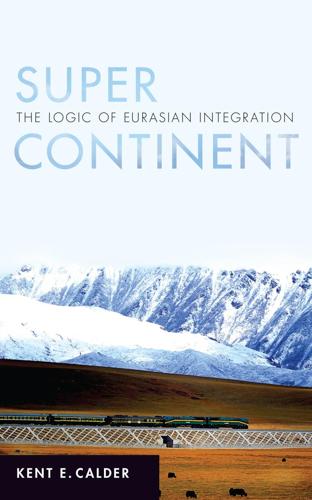
Super Continent: The Logic of Eurasian Integration
by
Kent E. Calder
Published 28 Apr 2019
The Chinese terminology for the two has never changed, although the original English express (“One Belt One Road”), a literal translation of the Chinese, was changed to “Belt and Road Initiative” in English during 2015. 67. On these synergistic relationships between the Belt and the Road, see, for example, Kent E. Calder, Singapore: Smart City, Smart State (Washington, DC: Brookings Institution, 2016); and Jacopo Maria Pepe, Continental Drift: Germany and China’s Inroads in the “German-Central Eastern European Manufacturing Core”: Geopolitical Chances and Risks (Washington, DC: Edwin O. Reischauer Center for East Asian Studies, 2017). 68.
…
Rail freight, however, was growing at a faster pace (10.7 percent annually) than highway traffic (10.1 percent). See “China’s Freight Growth Steady in 2017, “China Daily, February 1, 2018, http://www.chinadaily.com.cn/a /201802/01/ WS5a72a540a3106e7dcc13a316.html. 52. For details, see Kent E. Calder, Singapore: Smart City, Smart State (Washington, DC: Brookings Institution Press, 2016), 155 –56. 53. Jacopo Maria Pepe, Beyond Energy: Trade and Transport in a Reconnecting Asia (Wiesbaden, Germany: Springer, 2018), 279. Data from Manin Askar’s presentation at the Seventh 1520 Business Forum, June 2012. 54. Ibid. 55.
…
Yenni Kwok, “The Memory of Savage Anticommunist Killings Still Haunts Indonesia, 50 Years On,” Time, September 29, 2015, http://time.com/4055185/indonesia -anticommunist-massacre-holocaust-killings-1965/. 9. On Singapore’s approach to relations with China, and its historical background, see Kent E. Calder, Singapore: Smart City, Smart State (Washington, DC: Brookings Institution Press, 2016), 13 –14. 10. On these issues, see ibid., 151–56. 11. Official figures are conflicting, but reliable estimates indicate at least seven thousand Chinese military deaths and at least ten thousand Vietnamese civilian fatalities, plus Vietnamese military casualties.

Aerotropolis
by
John D. Kasarda
and
Greg Lindsay
Published 2 Jan 2009
New Songdo has to be much better, because there’s a lot more riding on it than whether Gale can repay his loans. It has been hailed since conception as the experimental prototype community of tomorrow. A green city, it was LEED certified from the get-go, designed to emit a third of the greenhouse gases of a typical metropolis its size. It’s supposed to be a “smart city” studded with chips talking to one another, running the place by remote control. Its architects borrowed blueprints from Paris, Sydney, Venice, and London, sketching what might become the prettiest square mile in Korea. (Nearby Seoul is a forest of colossally ugly apartment blocks.) New Songdo isn’t so much a Korean city as a Western one floating offshore.
…
And when he gazes upon his creation, he sees potentially dozens of new cities, each next to a dot on that map. “There’s a pattern here, repeatable,” he said that summer, stunning his partners with plans to roll out cities across China, using New Songdo as his template. Each will be built faster, better, and more cheaply than the ones that came before. “It’s going to be a cool city, a smart city!” he promised. “We start from here and then we are going to build twenty new cities like this one, using this blueprint. Green! Growth! Export!” Their jaws dropped. “China alone needs five hundred cities the size of New Songdo,” Gale told me, and he is planning to break ground on the next two. How many will be umbilically connected to the nearest airport?
…
If all goes according to plan, New Songdo’s carbon footprint will be a third of a city its size—a big step toward the reductions needed to halt global warming. There is, of course, the environmental absurdity of erecting a sustainable city on former wetlands, but Jamie von Klemperer would counter it’s a better alternative than clear-cutting mountains. Not content to be green and an aerotropolis, it’s meant to be a “smart city” too. As preached by technology companies such as IBM and Cisco, the Internet will be the next big utility, tying the others together. If you hook cities up to the right mix of sensors and software, their thinking goes, who knows what efficiencies might be revealed? When buildings, power lines, gas lines, roadways, cell phones, residential systems, and so on are able to talk to one another, that information can expose hidden patterns of waste and ways to avoid it.
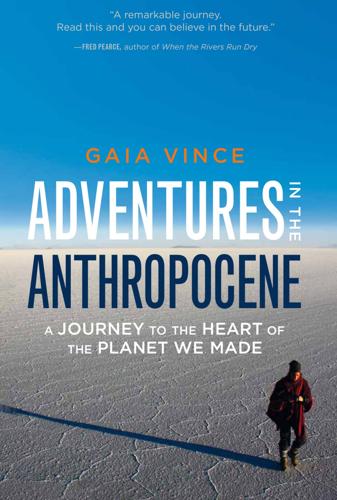
Adventures in the Anthropocene: A Journey to the Heart of the Planet We Made
by
Gaia Vince
Published 19 Oct 2014
Distributed energy and water systems are just some of the ways that citizens of the Anthropocene will interact with their urban environment. Rather than being passive users of municipal services, citizens – and the city itself – will generate real-time responses from providers, who can make continual adjustments to improve efficiency, minimise waste and generate a more intuitive personalised operation. So-called ‘smart cities’ communicate through sensors embedded in infrastructure, or information sent by individuals that is either automatically generated or deliberately sent. These networked cities – including New Songdo City currently being built in South Korea, and PlanIT Valley in Portugal – generate intelligent adjustments to everything from street lighting to mass transit routes and times, based on real-time feedbacks.
…
Masdar plans to be carbon neutral and is powered by an enormous solar station and wind farms, with buildings that incorporate smart shading, solar panels and architecture to maximise cooling breezes. The city, which aims to be completed by 2020, is car-free with above- and below-ground driverless electric transport pods that operate like a personal rapid transit system. The human network is key to next-generation smart cities, to reducing energy consumption and more effective use of the city in all ways. Crowd-sourcing and collaborative mapping are two such techniques that over the past few years have revolutionised information creation on the Internet without the need for massive infrastructure projects to plant sensors across cities.
…
They identify problem areas, such as buildings in danger of collapse or landslides, sanitation or garbage issues, or hazardous powerlines, and take images with GPS-enabled smartphones, prompting intervention. Rigging cities with sensors is just a first step, though. The designers and engineers planning smart cities a decade ago could not have predicted the way humanity would become an integral part of the network. Now that the technology exists for individuals to communicate instantly with companies, government departments, to broadcast to millions or to specific groups over the Internet, the city has gained an entirely new dimension.
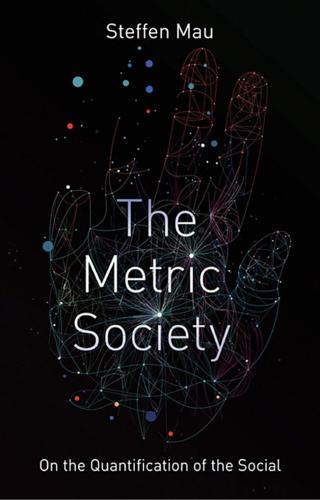
The Metric Society: On the Quantification of the Social
by
Steffen Mau
Published 12 Jun 2017
Data have advanced to become the ultimate raw material of the information and knowledge economy, and the increasing datafication of society is causing ever new business areas to spring up now that the relevant information can be used to win customers, determine people's commercial utility or steer their decisions. Even the most private things, such as hobbies, family relationships, emotional states or behavioural habits have suddenly become measurable. In ‘smart cities’ and ‘smart homes’, social environments are merging with digital technologies; emotion scanners tell us how we are feeling; digitally equipped fitness studios store our training data in the cloud; locative media pinpoint our location and track our every move; algorithms calculate our trustworthiness and intelligence based on digital photos, and so on.
…
Index ‘20-70-10’ rule 155 academics 139 and altmetrics 77–8 and h-index 75–6, 139, 144 self-documentation and self-presentation 76–7 status markers 74–8 accountability 3, 91, 115, 120, 134, 147, 159 accounting, rise of modern 17 activism alliance with statistics 127 Acxiom 164–5 ADM (automated decision-making) 63 Aenta 108 Airbnb 88 airlines and status miles 71–2 algorithms 7, 64, 127, 167 and nomination power 123–5, 126, 141–2 AlgorithmWatch 127 altmetrics 77–8 Amazon 96, 150, 156 American Consumers Union 167 apps 99, 105, 150 finance 66–7 fitness and health 68, 102–3, 104, 107 Moven 65–6 Asian crisis (1997) 57 audit society 24–5 automated decision-making (ADM) 63 averages, regime of 155–7 Barlösius, Eva 113 Baty, Phil 48 Bauman, Zygmunt 143 behavioural reactivity 131 benchmarks, regime of 155–7 Berlin, television tower 40 Better Life Index 20 Big Data 2, 79, 123 biopolitics 19 of the market 70 biopower 19 Boam, Eric 104 body images, regime of 156–7 Boltanzki, Luc 125–6 border controls 73–4 borders, smart 74 Bourdieu, Pierre 111, 114, 115, 162 BP 108 Bude, Heinz 37 bureaucracy 18 calculative practices 11, 124 expansion of 11, 115 and the market 15–17 Campbell, Donald T. 130–1 Campbell's Law 130–1 capitalism 15, 54, 55 digital 150 capitalists of the self 163 Carter, Allan 48 Chiapello, Ève 125–6 Chief Financial Officer (CFO) 17 China Sesame Credit 67 Social Credit System 1, 166 choice revolution 118–19 class and status 33 class conflict switch to individual competition 168–70 classification 60–80 see also scoring; screening collective body 104–6 collective of non-equals 166–8 commensurability 31–3, 44, 159 Committee of Inquiry on ‘Growth, Wealth and Quality of Life’ (Germany) 127 commodification 163, 164 Community (sitcom) 96 companies 16–17 comparison 7, 26–39, 159 and commensurability/incommensurability 31–3 and competition 28 dispositive(s) of 7, 28–31, 159, 169 new horizons of 33–5 part of everyday life 27 prerequisites for social 35–6 registers of 135–9 and self-esteem 30 shifts in class structure of 33 and status 29–30, 36–7 universalization of 27–8 COMPAS (Correctional Offender Management Profiling or Alternative Sanctions) 79 competition 6, 7, 115–19, 159–60 and comparison 28 increasing glorification of 159 and neoliberalism 23 and performance measurement 115–19 and quantification 116–17 and rankings 45 switch from class conflict to individual 168–70 competitive singularities 169 consumer generated content (CGC) 85–6 control datafication and increased 143, 147, 169 individualization of social 143 levers of social 144 relationship between quantification and 78 conventionalization 128 Cordray, Julia 97 Correctional Offender Management Profiling or Alternative Sanctions (COMPAS) 79 Corruption Perceptions Index 26 cosmetic indicators 135 Couchsurfing 88 credit risk colonialization 64 credit scoring 63–7 and social status 67 criminal recidivism, scoring and assessment of 62–3, 79 criteria reductionism 22 cumulative advantages, theory of 174 CureTogether 106 customer reviews 82–6, 87, 88 Dacadoo 68 Daily Telegraph 149 darknet 87 data behaviourism 171 data leaks 152 data literacy 21 data mining 4, 22, 163 data protection 72, 142 data repositories 62, 73–4 data storage 22, 73, 135 data voluntarism 4, 152, 153, 159 dating markets and health scores 70 de Botton, Alain 30 decoupling 133, 136, 174–5 democratization and digitalization 166 difference 2 visibilization and the creation of 40–3 ‘difference revolution’ digitalization giving rise to 166–7 digital capitalism 150 digital disenfranchisement of citizens 151 digital health plans 70 digital medical records 67 digitalization 2, 7, 21–2, 25, 63, 73, 80, 111, 123, 180 and democratization 166 giving rise to ‘difference revolution’ 166–7 as ‘great leveller’ 166 quantitative bias of 124 disembedding 13 distance, technology of 23–4 diversity versus monoculture 137–40 doctors, evaluation of by patients 92–3 Doganova, Liliana 5–6 double-entry bookkeeping 15, 163 e-recruitment 61 eBay 87 economic valuation theory 5 economization 22–4, 38, 115, 117 and rise of rankings 46 education and evaluation 89–91 evaluation of tutors by students 89–90 law schools 44, 138–9 output indicators and resource allocation in higher 132 and Pisa system 122, 145–6 Eggers, Dave The Circle 41, 82–3 employer review sites 83 entrepreneurial self 3, 154 epistemic communities 121 equivalence 16, 27 Espeland, Wendy 44, 139 esteem 29, 30 and estimation 15, 38 see also self-esteem Etzioni, Amitai The Active Society 20 European Union 122 evaluation 81–98 connection with recognition 38 cult and spread of 7, 97–8, 134 education sector 89–91 loss of time and energy 136 and medical sector 91–3 peer-to-peer ratings 87–8 portals as selectors 84–6 pressure exerted by reviews 147–8 and professions 89–93 qualitative 117 satisfaction surveys 82–4 and social media 93–8 of tutors by students 89–90 evidence-basing 3 exercise and self-tracking 101–4 expert systems 7 transnational 121–2 experts, nomination power of 119–23, 126 Facebook 94 FanSlave 95 Federal Foreign Office (Germany) 53 feedback power of 147–8 and social media 93–4 Fertik, Michael 66 Fitch 56 fitness apps 68, 102–3, 104, 107 Floridi, Luciano 105 Foucault, Michel 19 Fourcade, Marion 163–4 Franck, Georg 29 fraud 137 Frey, Bruno ‘Publishing as Prostitution’ 146 ‘gaming the system’ 132 GDP (gross domestic product) 14 dispute over alternatives to 127–8 General Electric 155 Germany Excellence Initiative 51 higher education institutes 52–3 Gerstner, Louis V. 130 Glassdoor.com 83 global governance 122 globalization 34, 73 governance 12 self- 19, 37, 105 state as data manager 17–20 ‘government at a distance’ 145 governmentality 112 GPS systems 150 Granovetter, Mark ‘The strength of weak ties’ 147 gross domestic product see GDP h-index 75–6, 139, 144 halo effect 90 Han, Byung-Chul 154 Hanoi, rat infestation of 130 happiness and comparison 30 Hawthorne effect 107 health and self-tracking 101–4 health apps 68, 102–3, 104, 107 health scores 67–71 health status, quantified 67–71 Healy, Kieran 163–4 Heintz, Bettina 14, 33, 34 hierarchization/hierarchies 1, 5, 6, 11, 33, 39, 40–59, 174 and rankings 41–2, 43, 44, 48 higher education, output indicators and resource allocation 132 Hirsch, Jorge E. 75 home nursing care 135–6 hospitals and performance indicators 131 Human Development Index 14 hyperindividualization 167–8 identity theory 29 incommensurability 31–3 indicators 2, 3, 5, 20, 23–4, 34, 114, 159 and competition 116–17 and concept of reactive measurements 129–33 cosmetic 135 economic 7 governance by 24 politics of 14 status 35, 75 see also performance indicators individualization of social control 143 industrial revolution 19 inequality 6, 8, 158–76 collectives of non-equals 166–8 establishment of worth 160–2 inescapability and status fluidity 170–4 reputation management 162–6 switch from class conflict to individual competition 168–70 inescapability of status 170–4 information economy 2 information transmission interfaces, between social subsystems 165–6 institutional theory 113 insurance companies 72, 108, 151, 152, 167 International Labour Organization 122 investive status work 36–7 Italian Job, The (film) 138 justice 126 Kaube, Jürgen 2 Kula, Witold 16 Latour, Bruno 34 law schools 44, 138–9 league tables 35, 43, 46, 47, 51, 52, 53, 91, 138, 139, 146, 162, 175 legitimate test, concept of 125–6 Lenin, Vladimir 116 lifelogging 99, 109, 153 Luhmann, Niklas 166 Lyon, David 142 McClusky, Mark 101 McCullough, Nicole 97 Mann, Steve 153 market(s) calculative practices of 15–17 and neoliberalism 23 and rating agencies 55–6 Marron, Donncha 65 Matthew effect 174–5 measurement, meaning 10 media reporting 33 medical sector and evaluation 91–3 hospitals and performance indicators 131–2 MedXSafe 70 meritocracy 23, 161 Merton, Robert K. 161, 174 ‘metric revolution’ 16 Miller, Peter 112 mobility 71–4 border controls 73 digital monitoring of 72 and scoring 71–4 smart cars 72 and status miles 71–2 money as means of exchange 16 monoculture versus diversity 137–40 mood, self-tracking of 101–4 Moody's 56 motivation 106–10 and rankings 45 Moven 65–6 Münch, Richard 145 Nachtwey, Oliver 150 naturalization 113 neoliberalism 3, 12, 23, 25 basic tenets of 23 New Public Management 3, 117, 136, 155 NHS (National Health Service) 118 nomination power 111–28 and algorithms 123–5, 126, 141–2 critique of 125–8 and economization 115 of experts 119–23, 126 performance measurement and the framing of competition 115–19 and the state 112–15 non-equals, collectives of 166–8 normative pressure 144–6 North Korea 144 ‘number rush’ 2 numbers 13–14, 15 numerical medium 8, 14, 16, 18, 28, 33, 113, 160, 166 objectivization 35, 154, 160 OECD 122 Offe, Claus 175 Old Testament 17 omnimetrics 9 O’Neil, Cathy Weapons of Math Destruction 79 optimization 12, 25 Oral Roberts University (Oklahoma) 108 Peeple app 96–7 peer-to-peer ratings 87–8 Pentland, Alex 151 people analytics 150–1 performance enhancement 12 performance indicators 12, 38, 53, 74, 118, 119, 120, 129, 155 and hospitals 131–2 performance measurement 23, 38, 115–19 performance-oriented funding allocation 22 performance paradox 132 performance targets 4 Personicx 165 Pisa system 122, 145–6 politicians 14, 120 politics 114 portals 84–6, 88, 90–1 power of nomination see nomination power prestige 8, 29, 67, 144 principal–agent problem 147–8 private consultancy services 117 professional control, loss of 133–4 professionalization 19, 133 professions and evaluation 89–93 publicity 33 QS ranking 52 qualitative evaluation 117 quantification advantages of 8 engines of 21–5 history 11 impact and consequences of 5, 6 meaning 10, 12–15 risks and side-effects 7, 129–40 role of 35 quantified self 99–110 Quantified Self (network) 99–100 quantitative evaluation see evaluation quantitative mentality 11–12 quasi-markets 116, 118–19 race and assessment of criminal recidivism risk 79 rankings 47–53, 58–9, 60, 144 and competition 45 and compliance 44 differences between ratings and 42–3 disadvantage of 43–4 economization and rise of 46 and evaluation portals 84–6 and hierarchies 41–2, 43, 44, 48 and image fetishization 47 and motivation 45 as objectivity generators 41 performance-enhancing role 46 popularity of 41 as positional goods 45 purpose of 45 and reputation 48, 49, 50, 52 as social ushers 42 and status anxiety 46–7 university 6, 7, 43, 47–53, 144, 175 Welch's forced 155–6 rating agencies, market power of 53–9 ratings 41–3, 53–9, 60 definition 54 differences between rankings and 42–3 and evaluation portals 84–6 as objectivity generators 41 peer-to-peer 87–8 as social ushers 42 rationalization 5, 11, 12, 14, 15, 16, 19, 105, 110, 154, 163 Raz, Joseph 31–2 reactive measurements 129–33 recommendation marketing 85 recruitment, e- 61 reference group theory 29 reputation 29, 39, 66, 74, 121 academic 75–6 cultivating good 47 and rankings 48, 49, 50, 52 rating of 87–8 signal value of 87 social media and like-based 93–8 reputation management 4, 50, 162–6 reputation scoring 87–8 research community 146 and evaluation system 146 and review system 146–7 ResearchGate 77 reviews 136 customer 82–6, 87, 88 doctor 92 high demand for 136 lecturers/tutors 90 performance 25, 149 pressure exerted by popular 147 Riesman, David 37 risks of quantification 129–40 loss of professional control 133–5 loss of time and energy 135–7 monoculture versus diversity 137–40 reactive measurements 129–33 Rosa, Hartmut 94, 173 Rose, Nikolas 112 Rousseau, Jean-Jacques 28–9 running apps 107 Runtastic app 107 satisfaction surveys 82–4 Sauder, Michael 44, 139 Schimank, Uwe 134 Schirrmacher, Frank 152 Schmidt, Eric 147 schools and choice 118–19 evaluation of 90–1 league tables 46 and Pisa system 122, 145–6 scoring 7, 60, 61, 78–80 academic status markers 74–8 and assessment of criminal recidivism 62–3 credit 63–7 health 67–71 mobility value 71–4 pitfalls 79 screening 7, 60–1, 78–9 border controls 73–4 e-recruitment 61–2 function 60–1 smart cars 72 self-direction 105, 121, 143 self-documentation 153 and academic world 76–7 self-enhancement 3, 137 self-esteem 29, 37, 170 and comparison 29, 30 rankings and university staff 50–1 self-governance 19, 37, 105 self-image 37, 47, 50, 89 self-management 3, 20, 25 self-observation 25, 42 quantified 99–110 self-optimization 3, 19, 104, 109, 163 self-quantification/quantifiers 4, 13, 25, 101, 154–5, 156 self-reification 105 self-responsibility 25, 110 self-tracking 4, 7, 99, 100, 106, 109–10 collective body 104–6 as duty or social expectation 108 emotions provoked 109 health, exercise and mood 101–4 and motivation 106–10 problems with wearable technologies 103–4 running and fitness apps 68, 102–3, 104, 107 and sousveillance 153 as third-party tracking 154 self-worth 29, 36, 38, 47, 51, 170 and market value 67 Sesame Credit (China) 67 Shanghai ranking 47 ‘shared body’ 105 shared data 142, 152–3 Simmel, Georg 28 ‘small improvement argument’ 32 smart borders 74 smart cars 72 smart cities 21 smart homes 21 ‘social accounts’ 20 Social Credit System (China) 1, 166 social engineering 20 social management 20 social media 93–8, 153, 166 drivers of activity 93 and feedback 93–4 forms of connection 93 likes 93–5 and online disinhibition 153 and reputation building 95 resonance generated by 94 and running/fitness apps 107 social research 19–20 social security systems 19 social status see status social worth see worth socio-psychological rank theory 46 sociometrics/sociometers 2, 5, 36, 74, 141, 150–1 Sombart, Werner Modern Capitalism 15–16 sousveillance 153 sport 33 rise of world 35 Staab, Philipp 149–50 Stalder, Felix 124 Standard & Poor's 54, 56 statactivism 127 state as data manager 17–20 nomination power of the 112–15 statistics 14 origins of word 17 status and class 33 and comparison 29–30, 36–7 and credit scoring 67 inescapability from 170–4 and life satisfaction 30 seeking of 36 status anxiety 30 and rankings 46–7 status competition 26–39 status data 2, 80, 159, 161–2, 169, 174 functioning as symbolic data 8, 162 status fluidity 170–4 status insecurity 4 status miles 71–2 status sets 161–2 status symbols 158 status work 4, 36–7, 174 Stiglitz-Sen-Fitoussi Commission (France) 127 Streeck, Wolfgang 171–2 subprime crisis (2007) 57, 64 surveillance 8, 142, 152 interdependence of self- and external 153–5 and neoliberalism 23 workplace and technological 149–51 surveys, satisfaction 82–4 symbolic capital 174 status data as 8, 162 target setting 22 tariff models 152–3 technological surveillance, in the workplace 149–51 technologies of the self 25 tertium comparationis 32 Thomas theorem 59 Thompson, David C. 66 Times Higher Education ranking 47, 48, 53 tourism portals 85 tracking as double-edged sword 142 see also self-tracking trade relations 16 transnational expert systems 121–2 transparency 3, 91, 141–3, 144, 147 Transparency International 26 ‘transparent body’ 105 TripAdvisor 85 Trustpilot 86 Turkey 54 tutors evaluation of by students 89–90 Uber 156 űbercapital 163–4 UN Sustainable Development Goals 20 United Nations 122 university lecturers evaluation of 89–90 object of online reviews 90 university rankings 6, 7, 43, 47–53, 144, 175 valorization 5, 58, 124, 161 valuation 5–6 value registration 161 Vietnam War 131 visibilization, and the creation of difference 40–3 Webb, Jarrett 104 Weber, Max 15, 16, 154 Weiß, Manfred 119 Welch, Jack 155 ‘winner-take-all society’ 136 Wolf, Gary 99–100 Woolgar, Steve 34 workplace technological surveillance in the 149–51 World Bank 122 worth 5–6, 7, 11, 78–80, 170 assessments of 27 establishment of 160–2 orders of 11, 15, 29 self- 29, 36, 38, 47, 51, 67, 170 Young, Michael 161 The Rise of Meritocracy 23, 161 Zillien, Nicole 105 Zuckerberg, Mark 158 POLITY END USER LICENSE AGREEMENT Go to www.politybooks.com/eula to access Polity's ebook EULA.
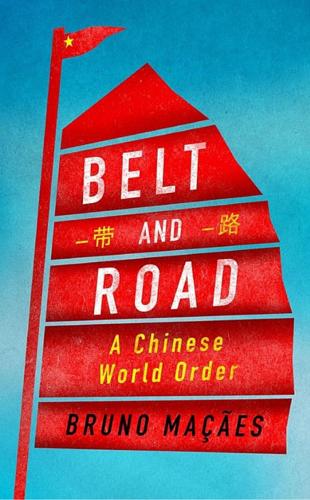
Belt and Road: A Chinese World Order
by
Bruno Maçães
Published 1 Feb 2019
The mobile technology is so important that it was highlighted in the Government Work Report delivered by Premier Li Keqiang during the National People’s Congress session in March 2017 and a report by the China Academy of Information and Communications Technology predicted that 5G will drive 6.3 trillion yuan of economic output in the country by 2030. Massive overseas investment fits with China’s ambition to boost key technologies in artificial intelligence, big data, smart cities, the industrial internet and cloud computing. An early benefit will come from new opportunities for its e-commerce companies. Many of the Belt and Road countries are yet to experience a thriving e-commerce sector due to a lack of good digital infrastructure. Partly as a result of the initiative, Chinese online retail giants such as Alibaba will be spearheading the development of a truly global e-commerce market.
…
INDEX Abbasi, Zafar Mahmood, 126 Abe, Shinzo, 118, 137 Addis Ababa, Ethiopia, 68 Aden Gulf, 72 Adil, Umer, 60 Advancing the Development of the One Belt, One Road Leading Group, 39 aerospace, 88, 103 Afghanistan, 53, 107, 127, 128, 129, 135, 172 Africa, 3, 8, 25, 44, 124, 163 Djibouti, 4, 12, 46, 63, 67–8, 101, 117 Ethiopia, 46, 68, 154, 170, 186 manufacturing, 68, 77 Maritime Silk Road, 23, 26, 45, 62 oil, 64 Partnership for Quality Infrastructure, 138 piracy, 72 telecommunications, 101, 170–71 aging population, 75 Agricultural Bank of China, 48 agriculture, 11, 61, 76, 99–100, 103 Ahmedabad, Gujarat, 138 aircraft, 81, 91, 103 Akto, Xinjiang, 60 Aktogay, East Kazakhstan, 103 Alibaba, 44 Allison, Graham, 7–8 Alps, 189 aluminum, 17, 20, 88 Andalusia, Spain, 189 Andijan, Uzbekistan, 54 anti-dumping, 92, 113 Antwerp, Flanders, 65 Apollo program, 9 aquaculture, 71 Arabian Sea, 72, 106 Arctic, 4, 62, 66, 188 artificial intelligence (AI), 44, 75, 88 Arunachal Pradesh, India, 111 Asian Development Bank, 45, 137 Asian Financial Forum, 49 Asian Infrastructure Investment Bank, 48 Association of Southeast Asian Nations (ASEAN), 122 Astana International Exchange, 56 Astana, Kazakhstan, 25–6, 39, 56, 58 asteroids, 187 Athens, 8 Atlantic Ocean, 3, 115, 119, 138, 139 Atushi, Xinjiang, 60 Australia, 5, 12, 25, 119, 121, 122, 132–3, 135 automated vehicles, 88, 90, 186, 187, 190 automobile industry, 74, 81, 86, 90–91, 97, 104 Autor, David, 177 aviation, 81, 91, 103 Azad Jammu and Kashmir (AJK), 60 Azerbaijan, 186 Badakhshan, Afghanistan, 128 Baidu, 188 Baldwin, Richard, 74, 80 Balkans, 8, 12, 140 Balochistan, Pakistan, 60, 105 Gwadar port, 46, 59, 61–2, 63, 64, 99–100, 101, 105–7, 117 separatism and terrorism, 106, 127, 128 Baltic Sea, 51 Bangkok, Thailand, 65, 136–7 Bangladesh, 48, 53, 64, 109, 134, 136, 138, 150, 189 Bangladesh-China-India-Myanmar Economic Corridor (BCIM-EC), 52, 62 Bank of China, 48 banking, 46–51 bargaining theory, 152–3 Bay of Bengal, 22, 64, 72, 119 Beijing, China, 20, 28, 48, 126, 165 Beijing University, 183, 188 Belgium, 56, 65 Belgrade, Serbia, 143 Belt, see Silk Road Economic Belt Belt and Road Advancing the Development of the One Belt, One Road Leading Group, 39 backlash against, 12, 108, 121–4, 130–46, 155 bridges, 40, 54, 156, 173, 186 Buddhism, 112 cities, 11, 43, 44, 48, 149–52, 187–8 ‘community of shared destiny’, 26–9, 33, 36, 43, 45, 170 connectivity (wu tong), 42, 43, 52–3, 127, 158, 167 currency integration, 26 data, 44 debt, 12, 46, 47, 108, 109, 124, 126, 130, 132, 153–62 digital infrastructure, 43–4, 59, 86 e-commerce, 44, 59 economic corridors, 2, 11, 51–4, 55, 62 economic policy coordination, 28 energy, 11, 17, 19, 20–23, 40, 46, 48, 49, 52, 61, 64, 86, 92, 188 financing, 11, 36, 46–51, 54, 108–9, 124, 126, 130, 132, 138, 141, 153–64 Forum for International Cooperation (2017), 12, 108, 143, 152 impatience, 152–3 inauguration (2013), 11, 17, 23 industrial capacity cooperation, 85–8 industrial parks, 10, 43, 55, 61, 67, 99, 102 infrastructure, see infrastructure internal discontent, 163 international court, 28, 190 loans, 11, 36, 46–7, 54, 108–9, 124, 126, 130, 132, 138, 141, 153–62, 163 maps, 2–6, 24, 41, 64, 69 Maritime Silk Road, 24, 26, 28, 39, 41 market integration, 41 military bases, 12, 67, 71, 72, 101, 117, 126–7 overcapacity, 19 ports, see ports railways, 9–10, 11, 12, 18, 43, 46, 52, 53–4, 68, 86, 122, 130 roads, 9, 19, 40, 43, 52, 54 security, 127–9 Silk Road, 2, 9–10, 23–6, 45, 82, 138 Silk Road Economic Belt, 24, 25–6, 28, 39, 51–62, 83 success, definition of, 164, 174 telecommunications, 43–4, 52, 86, 101, 170–71 timeline, 10 TIR Convention, 55 transnational industrial policy, 81, 84 transport infrastructure, 9–10, 11, 18, 19, 25, 26, 40, 48, 49, 53–4, 83 urban development, 11, 43, 44, 48, 149–52 Vision and Actions document (2015), 40, 41, 45, 49, 50, 52, 62, 67, 78 Vision for Maritime Cooperation (2017), 62 Bering Strait, 66 Bharatiya Janata Party (BJP), 110 Bhat, Vinayak, 107 Bhutan, 107–8 big data, 44 Bishkek, Kyrgyzstan, 127 Blackwater, 128 blue economic passage, 62 Boao Forum for Asia (2015), 27, 32 Brahmaputra river, 136 Brazil, 174 Brewster, David, 63 BRIC (Brazil, Russia, India and China), 19, 174 bridges, 40, 54, 156, 173, 186 British Broadcasting Corporation (BBC), 188 Budapest, Hungary, 143 Buddhism, 111–12 Bush, George Walker, 169 California, United States, 64 Cambodia, 52, 54, 70, 129, 132, 155 Cameroon, 68, 187 Canada, 136 car industry, see automobile industry Caribbean, 25 Carr, Robert ‘Bob’, 122 Cartagena, Spain, 92 Caspian Sea, 186 Caucasus, 20, 129 CDMA (code-division multiple access), 89 cement, 17, 49–50, 83 Center for Strategic and International Studies, 19, 123 center of gravity, 115 Central African Republic, 186 Central Asia, 9, 20, 25, 51, 52, 82–3, 188 energy, 22, 106 Eurasian Economic Union (EEU), 57–9 India, trade with, 107 industrial capacity cooperation, 104 Islamism, 127 Russia, relations with, 57–9, 129, 133 steel industry, 82–3 terrorism, 127 textile industry, 101 transport infrastructure, 9, 54 Central Huijin Investment, 49, 50 Central Military Commission, 166 century of humiliation (1839–1949), 165, 186 Chabahar, Sistan-Baluchistan, 106–7 Chalay Thay Saath, 60 Chao Phraya River, 65 ChemChina, 48 Chengdu Economic Daily, 129 China Abbasi’s visit (2018), 126 Academy of Information and Communications Technology, 44 aging population, 75 Banking and Insurance Regulatory Commission, 50 Bishkek Embassy bombing (2016), 127 Boao Forum for Asia (2015), 27, 32 Buddhism, 111–12 century of humiliation (1839–1949), 165, 186 Doklam plateau dispute, 107–8, 113 energy, see energy EU-China summit (2015), 138 five-year plan (2016–20), 41 Food and Drug Administration, 114 Foreign Policy Center of the Central Party School, 7 Gants Mod crossing closure (2016), 36 General Navigation Office, 69 ‘Going Out’ strategy, 86 Guangxi Nonferrous Metals Group bankruptcy (2016), 16 Guiding Opinion on Promoting International Industrial Capacity (2015), 86 Guiding Opinion on Standardizing the Direction of Overseas Investment (2017), 86 incremental approach, 7 Indian Dilemma, 21 Institute of International Studies, 92 International Trust and Investment Corporation, 132 Investment Corporation, 48 keeping a low profile (tao guang yang hui), 15, 18, 32 labour shortages, 75 Macron’s visit (2018), 146–7 Made in China 2025 strategy, 85, 87, 90–92, 93 Malacca Dilemma, 21–2, 64, 131 Merchants, 68–9 middle-income trap, 75–7, 85 migrant workers, 75 military, 12, 13, 59, 67, 71, 72, 101, 117, 126–7 minimum wage, 75 Ministry of Commerce, 21, 40, 93 Ministry of Communications, 69 Ministry of Finance, 49 Ministry of Foreign Affairs, 40 Ministry of Industry and Information Technology, 19 Ministry of Transportation, 14 Modi–Xi summit (2018), 135 National Bureau of Statistics, 75 National Congress, 28, 29, 44, 165, 181 National Cybersecurity Work Conference (2018), 84 National Development and Reform Commission, 40, 98 National Health Commission, 114 Opium War, First (1839–1842), 165 overcapacity, 16, 19–20, 88 Overseas Chinese Affairs Office, 19 Overseas Investment Industrial Guiding Policy, 86 People’s Navigation Company, 69 Ports-Park-City model, 67 presidential term limits repeal (2018), 164, 174 real estate market, 16, 75 reform and opening up, 13–15, 73 renminbi, 22–3, 159 responsible stakeholder, 169 shipbuilding, 14, 17 soft power, 111, 170 Soviet Union, relations with, 13, 14, 15 State Administration of Foreign Exchange, 48 State Council, 19, 39, 40, 49, 66, 86 state-owned companies, 42, 153, 160–61, 189 steel industry, 16–17, 18, 20, 82–4, 86, 88 striving for achievement, 18 Swaraj’s visit (2018), 135 Taiwan, relations with, 14, 26, 142 technology transfers, 85–92, 97, 177–8 Thucydides’ trap, 8 Tianxia, 26–7, 29, 31–5, 78, 79, 192–3 TIR Convention, 55 Trump’s visit (2017), 124 ‘two heads abroad’ (liangtou zai haiwai), 17 United States, relations with, see Sino–US relations Working Conference on Neighborhood Policy (2013), 17–18 China Construction Bank, 48 China Development Bank, 16, 48, 49, 97, 98, 99, 103, 160 China Export & Credit Insurance Corp, 104 China Export-Import Bank, 46, 47, 48, 49, 103, 154 China Fantasy, The (Mann), 177 China Global Television Network, 188 China Nonferrous Metals Industry Group, 103 China Three Gorges Corp, 48 China-Indian Ocean-Africa-Mediterranean Sea Blue Economic Passage, 62 China-Indochina Peninsula Economic Corridor, 51, 52, 54, 62 China-Oceania-South Pacific, 62 China-Pakistan Economic Corridor (CPEC), 52, 59, 60, 62, 105–7, 108 Chinese Communist Party Advancing the Development of the One Belt, One Road Leading Group, 39 and Australia, 133 Constitution, 41, 164 founding of (1921), 165 National Congress, 18th (2012), 28 National Congress, 19th (2017), 29, 44, 165, 181 and New Zealand, 132 Politburo, 39, 40, 165 reform and opening up, 13–15 and steel industry, 16 Third Plenum of the 18th Party Central Committee (2013), 39 Chongyang Institute for Financial Studies, 106 Christianity, 128 Churchill, Winston, 183 cities, 11, 43, 44, 48, 149–52, 187–8 climate change, 4, 66, 85, 171 Clinton, William ‘Bill’, 177 cloud computing, 44 CloudWalk Technology, 44 Club Med, 189 CNN, 188 cobalt, 81, 104 Cold War, 2, 14, 21–2, 36, 40, 125, 171 Colombo, Sri Lanka, 156, 162 colonialism, 120, 162 ‘community of shared destiny’, 26–9, 33, 36, 43, 45, 135, 170 Confucianism, 31, 34 Congo, Democratic Republic of, 81, 104 connectivity, 42, 43, 52–3, 109, 122, 127, 146, 158, 167 Connectivity Platform, 139 construction, 18, 75, 86, 98 convergence, 4, 14, 166, 167, 169, 174, 177 copper, 103, 104 corridors, see economic corridors corruption, 133, 155–6, 158, 187 cosmopolitan neighborhoods, 4 Country Garden, 151 Cowboys and Indians, 188 cultural exchanges, 42, 43, 56–7 currency, 22–3, 26, 159–60 customs cooperation, 55, 57, 59, 63 Cyprus, 140 Dalai Lama, 36, 112 Dalian, Liaoning, 55, 93 Daming Palace, Xi’an, 147 Dangal, 111 data, 44 Davidson, Phillip, 125–6 Davos, Switzerland, 168 Dawn of Eurasia, The (Maçães), 185, 191 Dawood, Abdul Razak, 158 debt, 12, 16, 46, 47, 108, 109, 124, 126, 130, 132, 153–62 democracy, 125, 133, 166, 171, 172, 174, 175, 176, 181–3 Democratic Republic of Congo, 81, 104 Deng Xiaoping, 13–15, 18, 31, 32, 69, 73, 183 Diaoyu Islands, 187 digital infrastructure, 43–4 division of labor, 53, 78, 79, 80 Djibouti, 4, 12, 46, 63, 67–8, 101, 117, 186 Doklam plateau, 107–8, 113 Doraleh, Djibouti, 63, 67–8 DP World, 68 dry ports, 57 Dubai, UAE, 62, 68, 160 Dudher Zinc project, 127 Duterte, Rodrigo, 156 DVD (digital versatile disc), 89 e-commerce, 44, 59 East China Sea, 118 economic corridors, 2, 11, 51–4, 55 economic nationalism, 102 economic policy coordination, 28 Economist, The, 190 Egypt, 101 electric cars, 81, 104 electricity, 40, 46, 49, 52, 61, 98, 156, 188 end of history, 36 energy, 4, 11, 17, 19, 20–23, 48, 49, 82, 86, 92, 188 electricity, 40, 46, 49, 52, 61, 98, 156, 188 gas, 21, 22, 40, 52, 64, 72, 106 hydropower, 48 oil, 21, 22, 23, 40, 52, 64, 72, 106 renewable, 21, 187, 188 English language, 111, 188 Enhanced Mobile Broadband coding scheme, 89 Enlightenment, 193 environmental sustainability, 75 Erenhot, Inner Mongolia, 55 Ethiopia, 46, 68, 154, 170, 186 Eurasia, 1–5, 11, 20, 26, 45, 52, 57, 63, 120, 121, 138 Eurasian Economic Union (EEU), 57–9 Eurasian Resources Group, 103 European Commission, 143, 145 European empires, 120–21 European Union (EU), 5, 29, 57, 58, 138–47, 159, 176, 179 and Belt and Road, 10, 12, 30, 138–47 Connecting Europe and Asia strategy (2018), 145–6 and Djibouti, 67 economic policy coordination, 28 5G mobile networks, 43 immigration, 187 steel industry, 17 tariffs, 83 technology transfers, 87–8, 178 transnational framework, 81 Turkey, relations with, 4 Export-Import Bank of China, 46, 47, 48, 49, 103, 154 exports, 15, 17, 19, 79 Facebook, 188 facial recognition, 44, 190 fashion industry, 101 fate, 34 Fergana Valley, 54 fertilizers, 19 fibre-optic connectivity, 101 fifth generation (5G) mobile networks, 43–4, 89 finance, 11, 36, 46–51, 54, 126, 138, 141, 153–64 Financial Times, 10, 63, 143, 154, 157, 158, 159 five-year plan (2016–20), 41 Folding Beijing (Hao), 150 food imports, 76 foreign direct investment, 46, 144–6 foreign exchange, 16, 94, 153 Forest City, Johor, 149–51, 155 France, 11, 96, 129, 141, 144, 146–7, 189 free and open order, 125 free-trade zones, 11, 42, 55–6, 71 freedoms of speech, 172, 189 French Foreign Legion, 129 French, Howard, 13 Frontier Services Group, 128–9 Fu Chen, 129 Fu Ying, 140 Fukuyama, Francis, 184–5 Gabon, 96 Gabriel, Sigmar, 142 Gang of Four, 14 Gants Mod crossing closure (2016), 36 gas, 21, 22, 40, 52, 64, 72, 106 General Navigation Office, 69 generic drugs, 114 Genghis Khan, 2, 25 Georgia, 58 Germany, 11, 65, 80, 87–8, 90, 100, 141–2, 144, 189 ghost ships, 186 Gibraltar, 92 Gilgit-Baltistan, Pakistan, 54, 60, 108 Gland Pharma, 113 glass, 17, 83 Global Energy Interconnection, 188 global financial crisis (2008), 16–17, 85, 161, 178 Global Infrastructure Center, 190 Global Times, 67, 109, 131 global value chain revolution, 74 global warming, 4, 66, 85 globalization, 19, 28, 66, 78, 102, 124, 144, 168, 174, 192 ‘Going Out’ strategy, 86 good governance, 183–4 Google, 152, 188 Goubet, Djibouti, 67 government procurement, 12, 59 Grand Palace, Bangkok, 65 Grand Trunk Road, 53 Greece, 30, 31, 65, 140, 141, 142 GSM (Global System for Mobile communications), 89 Guangdong, China, 28, 75, 151 Guangxi Beibu Gulf International Port Group, 67 Guangxi Nonferrous Metals Group, 16 Guiding Opinion on Promoting International Industrial Capacity (2015), 86 Guiding Opinion on Standardizing the Direction of Overseas Investment (2017), 86 Guo Chu, 33 Gwadar, Balochistan, 46, 59, 61–2, 63, 64, 99–100, 101, 105–7, 117 Hainan, China, 71 Hambantota, Sri Lanka, 46–7, 63, 64, 68, 117, 162 Hamburg, Germany, 65 Hamilton, Clive, 133 Han Empire (206 BC–220 AD), 25 Hao Jingfang, 150 ‘harmonious world’, 33, 36 Havelian, Khyber Pakhtunkhwa, 54 He Yafei, 19, 168 heavy industry, 75, 82 Hebei, China, 83 Heilongjiang, China, 55 Hesteel, 83 high-speed railways, 18, 53–4, 83, 89, 98, 122, 130, 137, 138, 143, 186–7 highways, see roads Hillman, Jonathan, 8 Hobbes, Thomas, 27 Holslag, Jonathan, 189 Hong Kong, 49, 103 Hongshi Holding Group, 49 Horgos, Xinjiang, 55, 55–6, 57 Horn of Africa, 3 Hu Huaibang, 49, 97 Hu Jintao, 21, 33, 70 Hu Xiaolian, 154 Huang Libin, 19 Huangyan Island, 187 Huawei, 89–90, 101, 171 Hub, Balochistan, 127 hukou (household registration), 76 human rights, 141–2, 170, 171, 189 Hun Sen, 155 Hungary, 30, 140, 141, 142, 143, 144 Huntington, Samuel, 184 Hussain, Chaudhry Fawad, 157 hydropower, 48 Ibrahim Ismail, Sultan of Johor, 151 immigration, 187 impatience, 152–3 imports, 17, 19, 22, 79–84 India and the Indian Ocean (Panikkar), 118 India, 3, 5, 64, 105–25, 134–6, 174, 179 Bangladesh Liberation War (1971), 109 and Belt and Road, 11, 12, 52, 72, 105–15, 130, 133 Belt and Road Forum for International Cooperation (2017), 12, 108 British Raj (1858–1947), 107 Buddhism, 111–12 cosmopolitan neighborhoods, 4 cultural mission to China (1952), 113 Doklam plateau dispute, 107–8, 113 economic autarchy, 110, 117 free and open order, 125 Grand Trunk Road, 53 imports, 113–14 and Indian Ocean, 3, 116–19 Indo-Pacific, 116–23, 125 Japan, relations with, 118 Kashmir dispute, 108–9, 117 Malabar naval exercises (2018), 135 and maritime hegemony, 72 migrant workers, 150 military bases, 3, 131 Modi–Xi summit (2018), 135 Mumbai-Ahmedabad high-speed railway, 138 nuclear tests (1998), 109 Pakistan, relations with, 105–7, 108–9, 117, 134 pharmaceuticals, 113, 114 Quadrilateral Security Dialogue, 121–2 Research and Analysis Wing (R&AW), 105–6 and Sabang Island, 131 Siliguri Corridor, 107–8 Southeast Asia, 113, 117–18 Swaraj’s visit to China (2018), 135 Tibet, relations with, 111–12, 117, 136 United States, relations with, 119, 121–2, 134, 135 Indian Dilemma, 21 Indian Ocean, 3, 8, 9, 26, 51, 62, 63, 66, 68, 71–2, 116–19 Indo-Pacific, 116–23, 125, 126 and Japan, 4 Kra Isthmus canal proposal, 65, 186 meticulous selection, 72 Myanmar oil and gas pipeline, 64, 72 oil, 21, 64 and Pakistan, 59, 61, 64 individualism, 27, 189 Indo-Pacific, 116–23, 125, 126 Indo-Pacific Business Forum, 122 Indo-Pacific Command, US, 126 Indochina, 51, 52, 54, 62 Indonesia, 2, 5, 18, 26, 39, 48, 83, 117, 131 Industrial and Commercial Bank of China, 48, 49, 103 industrial capacity cooperation, 85–8, 98, 102–4 industrial internet, 44 industrial parks, 10, 43, 55, 61, 67, 99, 102 Industrial Revolution, 84 information technology, 43–4, 74, 81, 86, 90, 94, 111, 170–71, 190 infrastructure, 3, 23, 26, 30, 40–45, 48, 50, 55, 58, 63, 86, 88, 124, 139, 141, 162, 167, 186 Afghanistan, 135 communications, 81, 118 digital, 43–4 European Union, 10, 141, 145 India, 64, 118, 135 Japan, 4, 136–8 Maritime Silk Road, 66, 67 Mediterranean, 65 Pakistan, 54, 62, 99, 105 Quadrilateral Security Dialogue, 121–2 Southeast Asia, 18–19, 70, 117, 130, 132 steel industry, 18 transportation, see transportation value chains, 96 Xinjiang, 20, 54 Inner Mongolia, China, 55 innovation, 76 Institute for International Finance, 153 intellectual property, 59, 88–9, 91, 97, 180, 190 international courts, 28, 190 international industrial capacity cooperation, 85–8, 98, 102–4 International Monetary Fund (IMF), 15, 156–7, 158–9, 172 Internet, 43–4, 86, 170–71 internet of things, 90, 94 Iran, 4, 22, 105–6 Iraq, 24 Irkeshtam, Xinjiang, 55 iron, 17 Islamabad, Pakistan, 60, 99, 101, 127, 157 Islamic State, 128 Islamism, 127–9 Istanbul, Turkey, 4, 24, 65 Italy, 48, 65, 140, 189 Izumi, Hiroto, 137 Jadhav, Kulbhushan, 105–6 Jakarta, Indonesia, 2, 5, 26, 39 Japan, 1, 5, 22, 123, 133, 136–8, 145, 165, 166, 169, 189 Buddhism, 111 Cold War, 21–2 India, relations with, 118 Indian Ocean, 4 infrastructure development, 4, 136–8 Quadrilateral Security Dialogue, 121–2 Second World War (1937–45), 119, 165 Javaid, Nadeem, 46 Jiang Qing, 14 Jiang Shigong, 183–4 Jiang Zemin, 15 Jiangsu Delong, 83 Jin Qi, 98 Jinnah Town, Quetta, 128 Johor, Malaysia, 149–51 Joint Statement on Cooperation on EEU and Silk Road Projects (2015), 57–8 joint ventures, 97 Journey to the West, 186, 188 Juncker, Jean-Claude, 138 Kaeser, Joe 170 Karachi, Sindh, 59, 100, 105, 106, 127 Karakoram Highway, 54, 60, 64 Kashgar, Xinjiang, 54, 59, 60, 64, 101 Kashmir, 60, 108–9, 117 Katanga, Democratic Republic of Congo, 104 Kaz Minerals 103 Kazakhstan, 8, 55–9, 129, 189 Astana International Exchange, 56 China–EEU free-trade agreement signing (2018), 58 and Eurasian Economic Union, 57 gateway to Europe, 56 Horgos International Cooperation Center, 55–6 industrial capacity cooperation, 103–4 railways, 54 Xi’s speech (2013), 23, 25–6, 39 Kazakhstan Aluminum, 103 keeping a low profile (tao guang yang hui), 15, 18, 32 Kenya, 101, 138, 171 Khan, Imran, 157–8 Khawar, Hasaan, 53 Khunjerab Pass, 101 Khyber Pakhtunkhwa, Pakistan, 54, 60, 100 Kizilsu Kirghiz, Xinjiang, 60 knowledge, 74, 76, 87 Kolkata, West Bengal, 64 Kortunov, Andrey, 135 kowtow, 35 Kra Isthmus, Thailand, 65, 186 Kuala Linggi Port, Malacca, 63 Kuala Lumpur, Malaysia, 130 Kuantan, Pahang, 63, 67 Kudaibergen, Dimash, 57 Kunming, Yunnan, 188 Kyaukpyu, Rakhine, 63, 64, 132, 154 Kyrgyzstan, 53, 54, 55, 103, 127 labor costs, 74, 83, 85, 99 labor shortages, 75 Lagarde, Christine, 158–9 Lahore, Punjab, 100, 157 Laos, 50, 52, 54, 129, 132 Latin America, 25, 187, 188 Leifeld Metal Spinning AG, 88 Lenin, Vladimir, 6, 78 Lenovo, 89–90 Li Hongzhang, 69 Li Keqiang, 44 Li Ruogu, 47 Liaoning, China, 55 liberal values, 123, 125, 133, 170 liberal world order, 141, 144, 167–86, 190, 192 Lighthizer, Robert, 91 lignite, 61 liquefied natural gas (LNG), 48, 66 Lisbon, Portugal, 2, 5 lithium-ion batteries, 81 Liu Chuanzhi, 89–90 Liu He, 92 loans, 11, 36, 46–7, 54, 108–9, 124, 126, 130, 132, 138, 141, 153–63, 190 London, England, 65, 160 Lord of the Rings, The (Tolkien), 1 Lou Jiwei, 76 Luo Jianbo, 7 Machiavelli, Niccolò, 31–4 machinery, 81, 90, 98, 156 Mackinder, Halford, 120 Macron, Emmanuel, 146–7 Made in China 2025 strategy, 85, 87, 90–92, 93 Mahan, Alfred, 120 Mahathir Mohamad, 130–31, 151, 155 Malabar naval exercises (2018), 135 Malacca, Malaysia, 3, 63 Malacca Strait, 21–2, 64, 65, 72, 117, 131 Malay Mail, 155 Malaysia, 3, 70, 117, 130–31, 154 debt, 154 Forest City, 149–51, 155 high-speed railways, 54, 130 Mahathir government (2018–), 130–31, 151, 155 1Malaysia Development Berhad scandal (2015–), 155 ports, 63, 67 Maldives, 134, 155 Mali, 129 Malik, Ashok, 109 Malta, 140 Mandarin, 107, 149, 188 Manila, Philippines, 122 Mann, James, 177 manufacturing, 11, 19, 68, 77, 85, 99 outsourcing, 68, 99 value chains, 3, 43, 64, 73–4, 79–82, 84–5, 94–104, 141 Manzhouli, Inner Mongolia, 55 Mao Zedong, 13–14, 31, 183 maps, 2–6, 24, 41, 64, 69 Maritime Silk Road, 24, 26, 28, 39, 41, 53, 62–72, 117 market integration, 41 Mars, 187 Marshall Plan, 40 Marx, Karl, 6 Marxism, 78 Massachusetts Institute of Technology (MIT), 177 Matarbari port, Bangladesh, 138 matchmaking services, 11 Mattis, James, 124 McMahon Line, 111 Mediterranean Sea, 4, 51, 62, 65, 119 Mei Xinyu, 21 Mekong Delta, 8 mergers and acquisitions, 42 Merkel, Angela, 88, 141, 144 meticulous selection, 72 Middle East, 4, 6, 22, 64, 120, 129, 163, 171 middle-income trap, 75–7, 85 migrant workers, 75 Milanovic, Branko, 173 military, 3, 12, 67, 71, 72, 101, 117, 126–7 Ming Empire (1368–1644), 163 Ming Hao, 30 minimum wage, 75 Ministry of Commerce, 21, 40, 93 Ministry of Communications, 69 Ministry of Finance, 49 Ministry of Foreign Affairs, 40 Ministry of Industry and Information Technology, 19 Ministry of Transportation, 14 Minmetals International Trust Co, 16 mobile payments, 193 Modi, Narendra, 106, 135–6 Mohan, Raja, 3, 121 Mombasa, Kenya, 138 Mongol Empire (1206–1368), 2, 25 Mongolia, 8, 36, 52, 55, 111 Moon, 187 Moraes, Frank, 112–13 Moscow, Russia, 4 Most Favored Nation status, 15 Mozambique, 138 multinationals, 74, 88–9 multipolar world system, 179 Mumbai, Maharashtra, 4, 105, 138 Myanmar, 52, 54, 63, 64, 72, 129, 132, 138, 154 Nacala, Nampula, 138 narcotics trade, 127 Nathan, Andrew, 159 National Aeronautics and Space Administration (NASA), 9 National Bureau of Statistics, 75 National Congress 18th (2012), 28 19th (2017), 29 National Cybersecurity Work Conference (2018), 84 National Development and Reform Commission, 40, 98 National Health Commission, 114 National League for Democracy, Myanmar, 132 National Museum of China, Beijing, 165, 166 National Party of New Zealand, 132 National People’s Congress, 44 National Rescue Party of Cambodia, 155 Nazarbayev University, 25–6 Nehru, Jawaharlal, 113 Nepal, 134, 135, 150 Netherlands, 56, 65 New Zealand, 132–3 Nigeria, 68 Ning Jizhe, 137 Nordin, Astrid, 42 Northern Sea Route, 66 Northwest Passage, 66 NPK fertilizer, 99 nuclear power/weapons, 21, 83, 88, 109, 166, 187 oil, 21, 22, 23, 40, 52, 64, 72, 106 1Malaysia Development Berhad scandal (2015–), 155 One China policy, 142 Open Times, 183 Opium War, First (1839–1842), 165 Organisation for Economic Co-operation and Development (OECD), 79 Osh, Kyrgyzstan, 54 overcapacity, 16, 19–20, 88 Overseas Chinese Affairs Office, 19 Overseas Investment Industrial Guiding Policy, 86 Pacific Command, US, 125–6 Pacific Journal, 71 Pacific Ocean, 3, 5, 9, 26, 45, 62, 116, 117, 125–6, 139 Indo-Pacific, 116–23, 125, 126 Pakistan, 12, 20, 46, 48, 52, 59–62, 64, 98–102, 105, 126–9, 133–4, 155, 156–8 Abbasi’s Beijing visit (2018), 126 agriculture, 99–100 balance of payments crisis, 156–8 Economic Corridor, 52, 59, 60, 62, 105, 108, 156–8 electricity production, 61 fibre-optic connectivity, 101 gateway to the Indian Ocean, 59 Grand Trunk Road, 53 Gwadar port, 46, 59, 61–2, 63, 64, 99–100, 101, 105–7, 117 hydropower, 48 IMF loans, 156–7 India, relations with, 105–7, 108–9, 117, 134 investment, 48 Jadhav arrest (2016), 105–6 Karakoram Highway, 54, 60, 64 Kashmir dispute, 108–9 loans, 46, 54, 156–8 manufacturing, 99 safe city project, 101 Tehreek-e-Insaf, 157–8 television, 101 terrorism, 106, 127–8, 135 textiles, 100 Thar desert, 61 value chains, 98–102 Pakistan-East Africa Cable Express, 101 Pandjaitan, Luhut, 131 Panikkar, Kavalam Madhava, 118 Pantucci, Raffaello, 134 Partnership for Quality Infrastructure, 137–8 patents, 88–9, 190 Pavlodar, Kazakhstan, 103 Peak Pegasus, 93 Pearl River Delta, China, 152 Peking University, 183, 188 Penang, Malaysia, 63 People’s Daily, 57 People’s Liberation Army (PLA), 32, 169 People’s Navigation Company, 69 Pericles, 8 Persian Gulf, 51, 64, 72 Peshawar, Khyber Pakhtunkhwa, 100 petcoke, 103 Petrochina, 103 pharmaceuticals, 113, 114 Phaya Thai Station, Bangkok, 137 Philippines, 19, 70, 117, 122, 156 philosophy, 40, 183 Phnom Penh, Cambodia, 70 phosphate, 19 piracy, 72 Piraeus, Greece, 65 Pirelli, 48 Plato, 150 Poland, 58, 140 Polar Silk Road, 66 Politburo, 39, 40, 165 political correctness, 182 Polo, Marco, 2, 10 Polonnaruwa, Sri Lanka, 156 Pompeo, Michael, 122–3, 157 ports, 9, 10, 12, 19, 36, 40, 46–7, 57, 63–5, 67–9, 96 Chabahar, Iran, 106–7 Doraleh, Djibouti, 63, 67–8 Gwadar, Pakistan, 46, 59, 61–2, 63, 64, 99–100, 101, 117 Hambantota, Sri Lanka, 46–7, 63, 64, 68, 117, 162 Kuala Linggi, Malaysia, 63 Kuantan, Malaysia, 63, 67 Kyaukpyu, Myanmar, 63, 64, 132, 154 Mediterranean, 65 Mombasa, Kenya, 138 Nacala, Mozambique, 138 Penang, Malaysia, 63 Ports-Park-City model, 67 Portugal, 2, 3, 5, 140, 163 power, see energy Prince, Erik, 128–9 property bubbles, 75 protectionism, 102, 114 public procurement, 12, 59 Punjab, Pakistan, 60, 99, 100, 157 Putin, Vladimir, 3, 57 Pyrenees, 189 Qing Empire (1636–1912), 107, 178 Quadrilateral Security Dialogue, 121–2 Qualcomm, 89 Quetta, Balochistan, 128 Raikot, Gilgit-Baltistan, 54 railways, 9–10, 11, 12, 18, 43, 52, 53–4, 57, 68, 83, 86, 89, 98, 100, 135 Addis Ababa–Djibouti, 46, 68 Bangkok–Chiang Mai, 137 Belgrade–Budapest, 143 Djibouti–Yaoundé, 68, 186–7 Islamabad–Gwadar, 60 Kashgar–Andijan, 54 Kuala Lumpur–Singapore, 130 Lahore overhead, 157 Mumbai–Ahmedabad, 138 United States, 122 Yunnan–Southeast Asia, 54 Rawat, Bipin, 108 RB Eden, 92 real estate market, 16, 75 reciprocity, 178–80 Red Sea, 72 reform and opening up, 13–15, 73 Ren Zhengfei, 90 Renaissance, 7 renewable energy, 21, 187, 188 Renmin University, 106 renminbi, 22–3, 159 Rennie, David, 190 Republic (Plato), 150 Research and Analysis Wing (R&AW), 105–6 responsible stakeholder, 169 Rio Tinto, 36 Road Towards Renewal exhibition (2012), 165 Road, see Maritime Silk Road roads, 9, 19, 40, 43, 52, 54, 55, 57, 67, 107–8 robotics, 75, 88, 90 Rogin, Josh, 122 Rolland, Nadège, 188, 190 Ross, Wilbur, 92 Rotterdam, South Holland, 65 Ruan Zongze, 92 rule of law, 28, 109, 111, 183–4 Russia, 5, 51, 52, 55, 133, 134, 139, 174, 175–6, 180, 181 and Central Asia, 57–9, 129, 133 energy, 22, 23 Eurasian Economic Union, 57–9 Eurasianism, 3–4 Joint Statement on Cooperation on EEU and Silk Road Projects (2015), 57–8 Pacific Fleet, 118 and renminbi internationalization, 23 Soviet era, see under Soviet Union steel industry, 82 Ukraine crisis (2013–), 176 Western values, rejection of, 175, 180, 181 Yamal LNG project, 48, 66 Sabang, Indonesia, 131 safe cities, 101, 171 salt, 67, 71 San Francisco, California, 151–2 Saravan, Sistan-Baluchistan, 105 Sargsyan, Tigran, 59 Sassanian Empire (224–651), 4 satellites, 187 second unbundling, 74 Second World War (1939–45), 165 self-driving vehicles, 88, 90, 186, 187, 190 Serbia, 83, 143 Set Aung, U, 132 Shandong University, 163 Shanghai, China, 2, 20, 92 Shanghai Cooperation Organization, 136 Shanghai Fosun Pharmaceutical, 113 Shanghai Pudong Development Bank, 16 Shanghai Stock Exchange, 50, 56, 103 Sharif, Nawaz, 133–4 sharp power, 170 sheet glass, 17, 83 Shenwan Hongyuan Securities, 16 Shenzhen, Guangdong, 28, 151 shipbuilding, 14, 17, 81, 186 Sichuan, China, 149 Siemens, 170 silicon dioxide, 103 Siliguri Corridor, India, 107–8 Silk Road, 2, 9–10, 23–6, 45, 53, 82, 138 Silk Road Economic Belt, 24, 25–6, 28, 39, 51–62, 83 Silk Road Fund, 48, 56, 98 silk, 23–4 Sindh, Pakistan, 59, 60, 99, 100, 101, 105, 106, 127 Singapore, 54, 77, 92, 119, 130, 150, 151, 160 Sino–Myanmar oil and gas pipeline, 64, 72 Sino–US relations, 116, 119, 121–6, 136, 179–80 and Belt and Road, 5–6, 11, 12, 15, 72, 121–4, 130, 136, 168 and Cold War, 14 and foreign exchange reserves, 16 and Indo-Pacific, 116, 119, 121–3, 125, 126 and Kra Isthmus canal proposal, 65 and Malacca Dilemma, 21–2, 64 and maritime hegemony, 70, 72 and Most Favored Nation status, 15 and Pakistan, 157 and reciprocity, 179–80 and reform and opening up, 14–15 and renminbi internationalization, 23 and South China Sea, 70 and steel, 17 Strategic and Economic Dialogue, 39 and Taiwan, 14 and tariffs, 83, 90–94 and technology transfers, 90–92, 178 Thucydides’ trap, 8 and trade deficit, 90, 92 trade war, 92–4, 173 war, potential for, 5, 8, 13, 14 Yangtze River patrols (1854–1937), 165 and ZTE, 94 Sirisena, Maithripala, 155–6 Sistan-Baluchistan, Iran, 105, 106–7 SLJ900/32, 54 Small, Andrew, 59, 158 smart cities, 44, 151–2 Smederevo, Serbia, 83 soft power, 111, 170 solar power, 187, 188 Somalia, 72 Somersault Cloud, 186 sorghum, 92 South Africa, 101 South America, 25, 187, 188 South China Sea, 21, 62, 65, 69–71, 118, 142, 170, 179 South Korea, 1, 77, 96, 97, 128 South Sudan, 186 Southeast Asia, 6, 8, 12, 18, 100, 131–2, 189 Buddhism, 111 China-Indochina Peninsula Economic Corridor, 51, 52, 54, 62 Indo–Chinese relations, 113, 117–18 Kra Isthmus canal proposal, 65, 186 Maritime Silk Road, 26 phosphate market, 19 South China Sea dispute, 21, 69–71, 142, 170, 179 textile industry, 100 Soviet Union, 1, 13, 14, 15, 21–2, 57, 104 soybeans, 90, 93 space travel, 187 Spain, 92, 140, 189 Sparta, 8 Sri Lanka, 12, 46–7, 63, 64, 68, 89, 117, 134, 155–6, 162 Hambantota port, 46–7, 63, 64, 68, 117, 162 Sirisena’s grant announcement (2018), 156 standards, 89–90 State Administration of Foreign Exchange, 48 State Council, 19, 39, 40, 49, 66, 86 state-owned companies, 42, 153, 160–61, 189 steamships, 69 steel industry, 16–17, 18, 20, 67, 82–4, 86, 88 striving for achievement, 18 Stuenkel, Oliver, 167 subprime mortgage crisis (2007–10), 153 Suez Canal, 3, 66, 68, 72, 119 Suifenhe Port, Heilongjiang, 55 Sukkur, Sindh, 99, 101 Sulawesi, Indonesia, 83 Sumatra, Indonesia, 3 Sun Pharmaceuticals, 114 Sun Wenguang, 163 Surkov, Vladislav, 3–4 surveillance, 44, 101, 171, 187, 190 Suvarnabhumi Airport, Bangkok, 137 Swamy, Subramanian, 110 Swaraj, Sushma, 135 Switzerland, 160, 168 Syria, 24 Tadjoura gulf, Djibouti, 67 taikonauts, 187 Taiwan, 14, 142 Tajikistan, 48, 127 Tanjung Pelepas Johor, 150 Tanzania, 138 tao guang yang hui, 15, 18, 32 Taoism, 11, 51 tariffs, 17, 56, 58, 79, 82, 83, 179 Tawang Monastery, Arunachal Pradesh, 111 tax holidays, 61 TBM Slurry, 54 technology transfers, 85–92, 97, 118, 177–8 Tehreek-e-Insaf, 157–8 telecommunications, 43–4, 52, 86, 89–90, 98, 101, 170–71 television, 101 terrorism, 106, 127–9, 135, 171 Texas, United States, 92 textiles, 86, 100–101 Thailand, 18, 54, 65, 83, 89, 129, 132, 136–7, 186 Thakot, Khyber Pakhtunkhwa, 54 Thar desert, 61 Thein Sein, 132 Thilawa special economic zone, Myanmar, 138 throw-money diplomacy, 163 Thucydides’ trap, 8 Tianjin, China, 129 Tianxia, 26–7, 29, 31–5, 78, 79, 192–3 Tibet, 36, 111–12, 117, 136, 189 Tibetan Academy of Buddhism, 112 Tillerson, Rex, 11, 123, 125 timber, 96 Times of India, 109 Tinbergen, Jan, 20 TIR (Transports Internationaux Routiers) Convention, 55 titanium dioxide, 103 Tokyo, Japan, 137 Tolkien, John Ronald Reuel, 1 tourism, 10, 11, 61, 71 trade wars, 92–4, 113–14, 173 trains, 9–10, 11, 12, 18, 43, 46 Trans-Siberian railway, 10 Transatlantic trade, 3, 139 transnational industrial policy, 81, 84 Transpacific trade, 3, 139 transparency, 12, 28, 109, 143, 144, 146, 157, 173, 193 Transpolar Route, 66 transportation, 9–10, 19, 25–6, 48–9, 52–4, 63–4, 81–3, 99, 103, 104, 118, 143, 162, 186 maritime, 63 railways, see railways roads, 9, 19, 40, 43, 52, 54, 55, 57, 67, 107–8 tributary system, 34–5 Trieste, Italy, 65 Trump, Donald, 83, 91, 93, 122, 124, 167, 179 Tsinghua University, 76, 163 Tsingshan Group Holdings, 83 Tumshuq, Xinjiang, 60 Turkey, 4, 24, 65, 82 Turkmenistan, 186 Twitter, 188 ‘two heads abroad’ (liangtou zai haiwai), 17 Ukraine, 11, 82, 176 United Arab Emirates, 62, 68, 160 United Kingdom, 2, 3, 17, 43, 65, 107, 112, 160, 165, 189, 193 United Nations, 29, 55, 72, 142, 172 United States, 1–2, 5–7, 8, 11, 12, 121–6, 161, 166–9, 176, 185–6 Apollo program, 9 Bush administration (2001–9), 169 Camp Lemonnier Djibouti, 68 China, relations with, see Sino–US relations Clinton administration (1992–2001), 177 Cold War, 14 immigration, 187 India, relations with, 119, 121–2, 134, 135 industrial output per person, 193 and International Monetary Fund (IMF), 157 Marshall Plan, 40 midterm elections (2018), 12–13 National Defense Strategy (2018), 116 National Security Strategy (2017), 179–80 Pacific Command, 125–6 Quadrilateral Security Dialogue, 121–2 Senate Armed Services Committee, 124 State Department, 123–4 steel industry, 17 subprime mortgage crisis (2007–10), 153 Taiwan, relations with, 14 Trump administration (2017–), 83, 90–94, 122–4, 167, 179 universal values, 175, 181, 184 Urdu, 128 Urumqi, Xinjiang, 20, 101, 188 Uyghurs, 20 Uzbekistan, 53, 54, 129 value chains, 3, 43, 64, 73–4, 79–82, 84–5, 94–104, 141 vanadium pentoxide, 103 Venice, Veneto, 65 Vietnam, 19, 54, 70, 100, 117, 132 Vision and Actions document (2015), 40, 41, 45, 49, 50, 52, 67, 78 Vision for Maritime Cooperation (2017), 62 Vladivostok, Primorsky Krai, 118 Wakhan corridor, Afghanistan, 128 Wallerstein, Immanuel, 78 Wang Changyu, 112 Wang Huning, 40 Wang Jisi, 31, 76 Wang Yang, 39 Wang Yi, 40, 60, 123 Wang Yingyao, 50–51 Wang Yiwei, 26 Wang Zhaoxing, 50 Warsaw, Poland, 140 Washington Post, 122 Wei Fenghe, 126 Weibo, 188 Weissmann, Mikael, 42 Wenzhou, Zhejiang, 83 West Asia corridor, 51, 52 West Germany (1949–90), 22, 166 Western world, 5, 30, 31, 165–86, 190–93 Asia-Pacific region, 13 Cold War, 1, 2 cultural imperialism, 28 democracy, 125, 133, 166, 171, 172, 174, 176, 181–3 end of history, 36 global financial crisis (2008), 16–17, 161 individualism, 27, 189 liberal world order, 141, 144, 167–86, 190, 192 Machiavellianism, 31–4 market economies, 16 Marxism, 78 polis, 31 rule of law, 183 rules-based order, 11, 35, 179 separation of powers, 182 soft power, 111 standards, 89 technology, 15, 87, 177–8 telecommunications, 101 and Tianxia, 30–34, 78, 192 value chains, 95, 96, 100, 104 values, 123, 125, 133, 167, 175, 177–8 white elephants, 51 Wickremesinghe, Ranil, 47 win-win, 27–8, 33, 37 wind power, 188 Witness to an Era (Moraes), 113 Working Conference on Neighborhood Policy (2013), 17–18 World Bank, 15, 172 World Economic Forum, 168 World Trade Organization, 170, 177 world-systems theory, 78 Wright, Thomas, 174 Xi Jinping, 11, 183 Astana speech (2013), 23, 25–6, 39 Belt and Road Forum for International Cooperation (2017), 152 Boao Forum for Asia speech (2015), 27, 32 and Constitution, 164 Davos speech (2017), 168 Duterte, relationship with, 156 Jakarta speech (2013), 23, 26, 39 Joint Statement on Cooperation on EEU and Silk Road Projects (2015), 57 London visit (2015), 43 Mahathir’s letter (2018), 130–31 Modi, summit with (2018), 135 National Congress, 19th (2017), 29, 181 National Cybersecurity Work Conference (2018), 84 presidential term limits repeal (2018), 164, 174 Road Towards Renewal exhibition (2012), 165 Sirisena, grant to (2018), 156 and state-owned companies, 42, 153 Sun Wenguang’s letter (2018), 163 telecommunications, 43 Trump’s visit (2017), 124 and value chains, 94 Wang Huning, relationship with, 40 and Western democracy, 166, 181 Working Conference on Neighborhood Policy (2013), 17–18 Xi’an, Shaanxi, 24, 28, 147, 188 Xinhua, 24, 41, 64 Xinjiang, 20, 54, 55, 56, 59, 60, 100–101, 128–9, 188, 189 Xiong Guangkai, 32 Xu Jin, 33 Xu Zhangrun, 163–4 Yamal LNG project, 48, 66 Yang Jian, 132 Yang Jiechi, 39, 171 Yang Jing, 40 Yangtze River, 165 Yao Yunzhu, 169–70 Ye Peijian, 187 yuan, see renminbi Yunnan, China, 54, 129, 149, 188 Zeng Jinghan, 181 zero-sum, 27 Zhang Gaoli, 39 Zhang Qian, 25 Zhang Weiwei, 182–3, 184 Zhao Tingyang, 27 Zheng He, 162–3 Zhi Zhenfeng, 84 Zimbabwe, 12, 44 Zoellick, Robert, 169 ZTE, 94, 170–71 Zurich, Switzerland, 160 First published in the United Kingdom in 2018 by C.
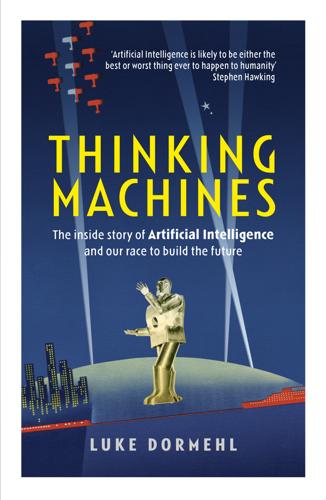
Thinking Machines: The Inside Story of Artificial Intelligence and Our Race to Build the Future
by
Luke Dormehl
Published 10 Aug 2016
Over time, Nest’s revenue from deals with utility companies will dwarf the amount it makes from sales of its thermostats. The company’s smart devices are still serving their master; it’s just a different master to the one we may have expected. Related challenges may be faced as user data is gathered by smart devices and used to shape cities. Instead of smart cities becoming increasingly cohesive, they could be made more divided, depending on how AI is employed. One deep learning project created at MIT’s Computer Science and Artificial Intelligence Laboratory (CSAIL) found that it could predict the crime rate in an area simply by looking at an image. Trained on 4 million images from Google Street View in addition to aggregated crime data from organisations like San Francisco CrimeSpotting, the deep neural net focused less on what was present in a particular image and more on inferences.
…
Grey Walter Biographical Sketch’, Encyclopedia of Cognitive Science (Berkeley: University of California Press, 2003): sulcus.berkeley.edu/wjf/CJ_W_Grey_Walter.pdf 9 Wooldridge, Michael, An Introduction to Multi-Agent Systems (Chichester: John Wiley & Sons, 2009). 10 blog.ifttt.com/post/2316021241/ifttt-the-beginning 11 Clark, Liat, ‘Speech Algorithm Detects Early Parkinson’s Symptoms’, Wired, 26 June 2012: wired.co.uk/news/archive/2012–06/26/parkinsons-voice-diagnosis 12 Townsend, Anthony, Smart Cities: Big Data, Civic Hackers, and the Quest for a New Utopia (New York: W. W. Norton & Company, 2013). 13 http://www.seasteading.org/2011/03/walking-city-archigram/ 14 Stockton, Nick, ‘Boston Is Partnering with Waze to Make its Roads Less of a Nightmare’, Wired, 20 February 2015: wired.com/2015/02/boston-partnering-waze-make-roads-less-nightmare/ 15 Weiser, Mark, ‘The Computer for the 21st Century’, Scientific American, September 1991: ics.uci.edu/~corps/phaseii/Weiser-Computer21stCentury-SciAm.pdf 16 http://www.antiquetech.com/?
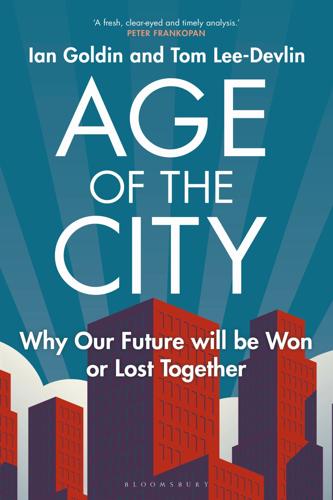
Age of the City: Why Our Future Will Be Won or Lost Together
by
Ian Goldin
and
Tom Lee-Devlin
Published 21 Jun 2023
An experimental investigation of algorithm effects on political polarization’, Journal of Broadcasting & Electronic Media, Vol. 64, No. 2. 25 Nordbrandt, M., 2021, ‘Affective polarization in the digital age: testing the direction of the relationship between social media and users’ feelings for out-group parties’, New Media & Society. 26 Rathje, S., et al., 2020, ‘Out-group animosity drives engagement on social media’, Proceedings of the National Academy of Sciences, Vol. 118, No. 26. 27 Haidt, ‘Why the past 10 years of American life have been uniquely stupid’. 28 Ibid. 29 Oldenburg, R., 1989, The Great Good Place (De Capo Press). 30 Cited in Meltzer, M., 2002, Mark Twain Himself: A Pictorial Biography (University of Missouri Press), p. 82. 31 Wirth, L., 1938, ‘Urbanism as a way of life’, American Journal of Sociology, Vol. 44, No. 1. 32 Ibid., pp. 1 and 13. 33 Fischer, C., 1982, To Dwell Among Friends (University of Chicago Press). 34 Mumford, L., 1938, The Culture of Cities (reprint by Open Road Media, 2016, accessed online at Perlego.com). 35 Putnam, Bowling Alone. 36 Woetzel, J., et al., 2018, ‘Smart cities: digital solutions for a more livable future’, McKinsey Global Institute (mckinsey.com). 37 Yeung, P., 2022, ‘“It’s a beautiful thing”: how one Paris district rediscovered conviviality’, Guardian. Chapter 7 – Beyond the Rich World 1 Reza, P., 2016, ‘Old photos bring back sweet memories of Bangladesh’s capital Dhaka’, Global Voices (globalvoices.org). 2 World Population Review, 2023, ‘Dhaka Population 2023’ (worldpopulationreview.com). 3 Jedwab, R. and Vollrath, D., 2015, ‘Urbanization without growth in historical perspective’, Explorations in Economic History, Vol. 58. 4 Authors’ calculations based on Oxford Economics data. 5 Bairoch, Cities and Economic Development, p. 347. 6 Authors’ calculations based on United Nations data. 7 Authors’ calculations based on Maddison Project database. 8 Roser, M., Ortiz-Ospina, E. and Ritchie, H. 2019, ‘Life expectancy’, Our World in Data (ourworldindata.org). 9 United Nations, 1969, ‘Growth of the world’s urban and rural population, 1920–2000’ (un.org). 10 Ritchie and Roser, ‘Urbanization’. 11 Victor, H., 1861, The Sack of the Summer Palace, Fondation Napoleon (napoleon.org). 12 Jedwab and Vollrath, ‘Urbanization without growth in historical perspective’. 13 World Population Review, 2022, ‘World city populations 2022’ (worldpopulationreview.com). 14 Ibid. 15 For a summary, see Ritchie and Roser, ‘Urbanization’. 16 Authors’ calculations based on Maddison Project database. 17 Ibid. 18 Jain, ‘Case study on territorial development in Japan’. 19 Yokoyama, M., 1991, ‘Abortion policy in Japan: analysis from the framework of interest groups’, Kokugakuin Journal of Law and Politics, Vol. 29, No. 1. 20 Institute for International Cooperation, Japan International Cooperation Agency, 2005, ‘Japan’s experiences in public health and medical systems’ (openjicareport.jica.go.jp). 21 O’Neill, A., 2022, ‘Total fertility rate in Japan from 1800 to 2020’, Statista (statista.com). 22 Authors’ calculations based on Maddison Project database. 23 Kim, K., 1995, ‘The Korean miracle (1962–80) revisited: myths and realities in strategy and development’, in Stein, H.
…
Winck, B., 2021, ‘4 charts show how fast everyone is flocking back to big cities’, Business Insider. Wirth, L., 1938, ‘Urbanism as a way of life’, American Journal of Sociology. Witthaus, J., 2022, ‘From Los Angeles to New York, underused office buildings become apartments amid housing shortage’, CoStar (costar.com). Woetzel,, J. et al., 2018, ‘Smart cities: digital solutions for a more livable future’, McKinsey Global Institute (mckinsey.com). Wood, M., 2020, The Story of China (Simon & Schuster). World Bank, 2022, ‘Four decades of poverty reduction in China’ (worldbank.org). World Bank Data, 2018, ‘Population living in slums (% of urban population)’ (data.worldbank.org)

The Patient Will See You Now: The Future of Medicine Is in Your Hands
by
Eric Topol
Published 6 Jan 2015
They could be paralyzed by hackers, or by bugs in labyrinthine software.”38 Likewise, in Dave Eggers’s The Circle,40 a fictitious Silicon Valley company representing an evil hybrid of Facebook, Google, and Apple, pulls together personal e-mails, banking information, purchases, social networking, and a universal operating system to portray what extreme loss of privacy can induce, such as placing chips in children to prevent kidnappings.41,42 Anthony Townsend has a more sanguine view in Smart Cities: Big Data, Civic Hackers, and the Quest for a New Utopia.43 He believes the electronic surveillance is great and that we’re reinventing cities with a smartphone platform. With all the data flowing, there’s big business following. The “data brokers” are the companies that collect and analyze our personal information and sell it without our knowledge.44 Acxiom, using twenty-three thousand computer servers and processing more than fifty trillion data transactions per year, is the largest company in this multibillion dollar industry.
…
Atwood, “When Privacy Is Theft,” New York Review of Books, November 21, 2013, http://www.nybooks.com/articles/archives/2013/nov/21/eggers-circle-when-privacy-is-theft/?pagination=false&printpage=true. 42. J. Nocera, “A World Without Privacy,” New York Times, October 15, 2013, http://www.nytimes.com/2013/10/15/opinion/nocera-a-world-without-privacy.html. 43. A. Townsend, Smart Cities: Big Data, Civic Hackers, and the Quest for a New Utopia (New York, NY: W. W. Norton & Co., 2013). 44. S. Kroft, “The Data Brokers: Selling Your Personal Information,” CBS News, March 9, 2014, http://www.cbsnews.com/news/the-data-brokers-selling-your-personal-information/. 45. A. E. Marwick, “How Your Data Are Being Deeply Mined,” New York Review of Books, January 9, 2014, http://www.nybooks.com/articles/archives/2014/jan/09/how-your-data-are-being-deeply-mined/?
…
See also Imaging; Scans Radiation Right campaign, 116 Ramamurthy, Lakshman, 65–66 RAND Corporation, 125(quote), 130–131 Reconstructive surgery after double mastectomy, 58–59 Records, medical Blue Button Initiative, 129–130 human phenome, 82–83 hype in health information technology, 130–132 OpenNotes project, 127–129 patient access to DNA data, 22 patient ownership, 125–126 See also entries beginning with Data Regulatory procedures, 288–289 Reinhardt, Uwe, 139(quote), 142 Religion, 13–14, 17–18, 50, 52 Relman, Arnold “Bud,” 176 Research, personal, 17 Respect, culture of, 20–21, 27–30 Revolution 2.0 (Ghonim), 13 Revolutions, social networks contributing to, 43–44 Rheumatoid arthritis, 144–145, 204 Rifkin, Jeremy, 49 Risk calculation Global Burden of Disease, 258–261 ionized radiation tests, 113–116 leading causes of disease and risk factors for death and disability, 260(table) predictive analysis, 249–250 TBI and gene variants, 94–95 traditional epidemiology, 70–71 RNA, 86, 98, 255–256 Roche, 215 Rosenberg, Tina, 139(quote) Rosenthal, Elisabeth, 140, 142, 148 Rubenstein, David, 37 Rush, Benjamin, 20 Ruthven, David, 189 Sabar, Ariel, 105(quote) Sage Bionetworks, 199–200 Sayfer, Steven, 190–191 Scans alternatives to radiation, 116 miniaturization of, 118–120 MOOMs, 204–205 patient access to test results, 120–121 portable devices for, 118–120 See also Imaging; Lab tests Schekman, Randy, 209–210 Schwamm, Lee, 167–168 Science, modern, 44–46 Seife, Charles, 71–72 Seigler, Mark, 20 Seinfeld (television program), 4 Semmelweis, Ignaz, 275 Sensor Project, 269 The Shallows (Carr), 40 Sharing Clinical Reports Project, 75 Shenkin, Budd, 127 Shortage of physicians, 173(fig.), 270–271 Side effects of drugs, 100–101 Sidereus Nuncius (Galilei), 44–45 The Signal and the Noise (Silver), 40 The Silent World of Doctor and Patient (Katz), 18–19 Silver, Nate, 40 Simon, Elena, 9, 10(fig.), 212 Siri, 164–165, 244 Smart Cities: Big Data, Civic Hackers, and the Quest for a New Utopia (Townsend), 223 Smart patients, 8–10 Smartphones attachment scopes, 122 biosensors, 83 boredom and, 48–49 compared to printing press, 40 conducting a full physical exam with, 121–123 data archiving, 48 declining cost of, 273(fig.)
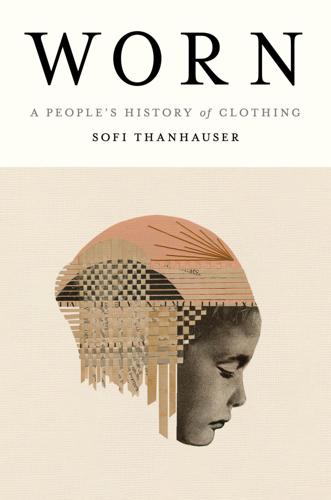
Worn: A People's History of Clothing
by
Sofi Thanhauser
Published 25 Jan 2022
Meanwhile, average citizens struggle to find safety or security, and extralegal violence is sponsored by the police. The EPZ does not make a city “bustle.” It is an extraction unit, just like the banana plantation, bauxite mine, and sugar plantation it replaced. The office of the Honduran Manufacturers Association is located on the Altia tower’s eighth floor, inside the Altia “Smart City,” a gated enclave just around a bend in the highway from a squatter settlement on the Río Blanco. The glittering glass tower forms a marked contrast to the appearance of the rest of the city. The tower houses call centers rented out to businesses by the owner, Yusuf Amdani, the president of Grupo Karim’s, a major presence in textiles and real estate in Honduras.
…
A young Honduran like Allan could spend his entire life within Amdani’s suzerainty. Indeed, Allan almost had. Amdani owns UNITEC, Allan’s alma mater, which gives a discount to students who work in the call centers of the tower he also owns. Students and call center workers on their lunch break can shop at Altera, a mall within the Smart City, also owned by Amdani. When they graduate, they can find full-time work at the call centers, or in one of his many manufacturing facilities in Choloma. There, his holdings include spinning mills, fabric plants, and garment factories. Past the Altia tower, Yusuf Amdani’s own house is easily recognizable from a distance because it is built higher up in the hills than any other structure in the city, set flagrantly above the line above which it is technically illegal to build.
…
A B C D E F G H I J K L M N O P Q R S T U V W X Y Z A Abenaki peoples, 12–13 abuse of workers, see exploitation, labor Accord on Fire and Building Safety, 221 accountability, lack of, xvii, 220–21 acrylic, 189, 190, 191, 192, 219 Adams, John, 122 advertising language of clothes in, 292 origins of, 137–38 for ready-to-wear clothing, 137–38, 140, 149–50 for sewing machines, 36–37, 136 for synthetics, 189–90 AFL (American Federation of Labor), 163, 163n African slave trade, cotton in, 60 Agee, James, 46–47 agriculture capitalistic, 11, 254–56 Chinese silk and, 104–7, 111, 112 cotton, xv, 87 (see also cotton) exploitation of laborers in, 45–47, 52–53, 53n, 63–65, 70–72, 85–86, 231–32, 254–55 flax, 3–4, 7, 8 long-range thinking in, 263–64 risk of injury in, 53n for wool (see sheep industry) Akan peoples of Ghana, 293n Albers, Anni, 276 Albers, Josef, 276 Alliance for Bangladesh Worker Safety, 221 Altia Smart City (Honduras), 214–15 Alvarado, Alfredo, 215–16 Amdani, Yusuf, 214–15 American Cotton Manufacturers Institute, 186, 188 American denimheads, 237–42 American Fabrics and Fashions, 194, 195–96 American Federation of Labor (AFL), 163, 163n American Standards Association (ASA), 173, 173n, 182 American Textile History Museum, 246 American Viscose Company, 156, 173 Amoskeag Falls, 13, 18, 20 Amoskeag Mill, 19, 20 Amoskeag Millyard Museum, 19–20 Amu Darya (river), 86 aniline dye, 191–92, 275 animal skins, 5, 99 Ann Taylor Labor Allocation System (ATLAS), 219 apparel, see garment industry Applebome, Peter, 180 Aral Sea, 86, 87–88 archeological records, clothing and cloth in, xv, 5–8, 99–100, 252–53 Ardai, Jay, xvii, 232–33, 234–37 Arkwright, Richard, 62 art and culture as right of workers, 173–74, 176, 200 artificial silk, see rayon production artisans vs. factories for textile production, xi–xii, 64 vs. ready-to-wear clothing, 134, 143–46 see also crafts, fiber art vs. function in Navajo weaving, 276–78, 282, 288 ASA (American Standards Association), 173, 173n, 182 Asante peoples, 293–94, 293n Asheboro, N.C., 243, 245–46 Asian firms in Caribbean and Central America, 205–6, 207 Asian Miracles, 187 “Attack of Nerves, An” (Chekhov), 38–39 auctions, cotton, 69, 71–72 B Badger Sportswear, 93 Bangladesh, xvii, 220–21 Barber, Elizabeth Wayland, 5, 6, 7, 13, 267 Bayer, 51–52, 70 Bayeux Tapestry, 257–58 Beal, Fred E., 165, 166, 169 bedsheets, 22–23, 24 Beguay, Mary, 282–83 Belt and Road Initiative, 95–96 Bemberg Corporation, 162, 162n Bequelin, Nicholas, 91 Berkeley, Busby, 144 Beyoncé, 133 Bien Hoa Industrial Zone, 197–98, 208n Biosyn-Vegetabil-Wurst, 154, 181 Birth of a Nation, The (Griffith), 56 Blacks attacks in Texas against, 54–56 as slaves and sharecroppers, 46–47 in unions in 1920s, 169 women in nineteenth century, 29 Black Thunder Mine, 228–29, 230 Blanc, Paul David, 160 Bland, Simon, 262–64 blankets, wool, 266–67, 271, 273, 277, 282 bleaching of linen, 25 Blinken, Antony, 94 boarding schools for Navajo children, 269–70, 285 boll weevils, 45 Bosque Redondo, 274–75, 276, 281 Boston Medical and Surgical Journal, 158–59 Bourgeois Gentilhomme, Le (Molière), 118–19, 121 Boursault, Edme, 125 Bowing, Emily, 180–81 Braasch, Gary, 228 Bramwell feeder, carding with, 235 brands, U.S. clothing Asian production of, 197–201, 204, 205–6, 207, 220–21 Caribbean and Central American production of, 203–8, 212, 214 and designer labels, 133, 134, 140–43, 145–48, 190, 206 exploitative complicity by, 92–96, 196, 203–4, 206, 207–8, 216–21 fast fashion, 218 global sourcing by, 218–22 with polluting microfibers, 217–18 Bray, Francesca, 110 Bread and Roses Strike, 162–63 breeds of sheep, see sheep, breeds of British East India Company, 59, 60–61, 69, 88, 114, 118 British islands, sheep in, 250, 251–57, 261–62, 264, 292–93 brocade weave, 108–9, 113, 116 Brownson, Orestes Augustus, 20–21 Bryn Mawr College, 171 Bt cotton, 54, 70–71, 72 Bucyrus 257 WS Dragline, 230, 237 Burch, Tory, 200 Burns, Robert Homer, 227 byssus (sea silk), 299–300 C Canahuati, Juan, 212 capitalism agriculture of, 11, 254–56 and clothing design, 142–44 consumerism and, 139–40, 145–46 carbon disulfide as chemical weapon, 181 discovery and first uses of, 157–58 inadequate worker protection against, 156–57, 161, 172n, 173, 173n, 182 in rayon production, 156–57, 160–61 in rubber production, 157–60 scientific research on dangers of, 157–58, 158–59, 160, 170–73 symptoms of exposure to, 156–58, 160–61, 170–73, 180–82 carbon emissions, xii, 231, 237 carbon sequestration, 250–51, 264 carding wool, 233, 235, 284 career wear, 194 Caribbean Basin Initiative (CBI), 204–7, 218–19 Carnegie Endowment for International Peace report, 214 Carothers, Wallace Hume, 183 Carson, Christopher “Kit,” 274 Carter, Jimmy, 227–28 Cartwright, Edmund, 62 catalogs, shopping from, 138, 248 Cattlemart building (Woolfest), 259 Çayönü, Turkey, 7 Central America, 205, 207, 211–12 see also Honduras Central Asia, 82–86 Chacon, Raven, 275 Chambers, Lucinda, 146 Chambre Syndicale de la Haute Couture, 190 Chari, Sharad, 79 Chayes, Sarah, 214 Cherokee removal, 45–46 Cherry Valley, N.Y., 247 children’s clothing, 129 China American denim in, 242 as communist threat, 185 cotton production in, 44, 83, 89–91, 92–96 designer knockoffs in, 147 forced labor of Uyghurs in, 92–96 rayon production in, 182 silk production in, 102–4, 105, 115 (see also silk fabric, Chinese) surveillance of citizens in, 92 see also Xinjiang China National Silk Museum, 113 chinoiserie, 117–18 Chiquola Mill, 177–80 Choloma, Honduras, 208–9, 212, 215, 216 Chrisman-Campbell, Kimberly, 121 Civil War, U.S., 46, 63, 85, 114 cleanliness, linen and, 24–26 climate change, 87, 229, 230–31, 237 Clinton, Bill, 208 Clinton, Hillary Rodham, 212–13 cloth in archeological records, xv, 5–8, 99–100, 252–53 cutting vs. stitching, 127 fibers for (see fibers) homemade, 9–10, 14, 58, 65–66, 85, 268, 295 making (see fiber production, revival of small-scale; textile production, factories for; weavers; weaving) metaphors related to, 295 as necessary for clothing, xiv reading, 293–94 storytelling and, 257–59, 288–89, 290–91, 292–94 clothing colonial control with, 269–70 colors, significance of, 192 consequences of manufacturing of (see environmental degradation; exploitation, labor) decline of durability of, x, 245 declining prices of, x–xi, 219, 245 diversity vs. uniformity of, xi–xii, 142–44 of early humans, 5–8, 229–30 of fictional utopias, 299 making (see garment industry; sewing) mass production of (see ready-to-wear clothing) of Navajo, 269–70, 277 political implications of, 143–45 solutions, small opportunities as, 295–300 U.S. retailers of (see brands, U.S. clothing) writing and, 297–98 coal, textiles and, 228–29, 230–31 Cockermouth, Cumbria, 251, 259 cocoons, silkworm, 102–3, 104, 105, 112 Cohn, Adele, 171 Coimbatore, India, 67–68, 74, 77 Coimbatore Spinning and Weaving Mills, 67–68, 74, 77 Colbert, Jean-Baptiste, 120–23 colonization of Central Asia by Russia, 84–86 cotton cloth and slave trade in, 40, 60 of India by Britain, 59, 60–66 of Navajo in U.S., 269–70, 273–74 of Xinjiang by China’s XPCC, 88, 91 “Color Riot: How Color Changed Navajo Textiles” (Heard Museum), 275–76 colors clothing, significance of, 192 in Navajo weaving, 271, 274–75, 280, 281, 282–83 see also dyeing, fabric communism clothing design and, 142–44 vs. consumerism, 139–40 perceived threat of, 185–87, 204 Cone Mills (Greensboro), 239, 242–44 cordage, 6–7 corduroy, cheapening of, 244–45 “Corporate Responsibility Code,” 220–21 corporations, U.S. and transnational, xii, 155–56, 198–99, 203–4, 210, 220–21 corsets, 30 cotton agriculture overview of, xv, 87 description of, 43 for earliest Navajo weavings, 273 as subsistence crop, 58 cotton gins, 18, 45, 56–57, 62, 72–73 cotton in India, 44, 58–80 at auction, 69, 71–72 British control of, 59, 60–65 chemicals used on, 70, 71 dyeing industry for, 77–78 ginning of, 72–73 home rule and, 65–66 industrialization of, 66–68, 73–74, 76–77 knitwear from, 74, 77–80 labor exploitation in, 63–64n, 63–65, 70–72 pre-1900s trading of, 58–61, 63–64n, 63–65 seed varieties for, 69–71, 72, 300 small-scale spinning of, 300 spinning mills for, 74, 75–77 water shortages and, 69–70, 72, 74–75, 80–81 cotton production in China (Xinjiang), 44, 83, 89–91, 92–96 environmental degradation from, 45–46, 48–49, 63, 78, 86–87, 89, 90, 94 first New England mills for, 18–19 global rates of, 44, 93, 188, 188n in India (see cotton in India) in Japan, post–WWII, 185 with labor by government force, 63–64n, 63–65, 85–86, 89, 92–96 in Russia/Soviet Union, 84–86 in Southern U.S., 46, 62–63, 85, 114 subsidies in U.S. for, 54, 185 U.S. trade policies for, post–WWII, 185–86, 188 water demands of, 87 cotton production in Texas, 44–56 Bt cottonseed for, 54 chemicals used in, 44, 48, 50–54 environmental degradation from, 45–46, 48–49 and ginning, 56–57 harvesting in, 43–45 labor exploitation in, 45–47, 52–53 origins of, 45–46 overseas markets for, 216 racism in, 47, 54–56 subsidies for, 54 cotton strippers, 43–44, 45 coverture, 27, 27n crafts, fiber communal nature of, 260, 268 in guilds vs. home production, 9–10 health benefits of, 267–68 humane infrastructure for, 295 internet presence of, 234 revival of, 232–34, 248, 259–60 Crompton and Knowles looms, 238, 246, 247, 249 Cumbria, England, 250, 251, 254, 256, 262–64 D Dacrons, 189, 190, 191 Davis, Edward Everett, 47 Davis, Lanny, 212 Davis, Luke, 240–41 debt, cotton farmers and, 46, 70–72, 85 Delaware Rayon, 180–81 Delpech, Auguste, 157–58 denimheads, 237–42 denim revival, 237–43 department stores, 137–38, 218 Derbyshire, England, 11, 62 designer knockoffs, 146–47 designer labels, 134, 140–43, 145–48, 190, 206 designers, 141–43, 190, 192, 197, 199, 206 Dhaka, Bangladesh, xvii, 220–21 d’Harnoncourt, René, 277 Dior, Christian, 141, 190, 207 disasters, factory, xvii, 175, 176, 220–21 domestication of sheep, 229–30 domestic code for women, 28, 29 Donghua University (Shanghai), 116 double knits (flat knits), 192 Draper looms, 238, 239, 242 drawers (knickers), 23–24, 39 Dumptique, ix–x duopoly market, 155–56 DuPont marketing by, 189–90 nylon creation and production at, 183, 189 rayon production by, 156, 173n, 189 synthetic fibers by, 189, 193 dyeing, fabric with aniline, 191–92, 275 in China, 113 in India, 77–78 Japanese indigo for, 239 in Navajo weaving, 271, 274–75, 282–83 with synthetics, 191–92 E East India Company, 59, 60–61, 69, 88, 114, 118 Eastland Bill (1948), 185 East Turkestan Islamic Movement (ETIM), 91 Egypt, Ancient, 7, 7n, 8 electricity, 67, 74, 76, 103, 230–31 Elizabethton, Tenn., 161–64 El Salvador, 207, 210 embroidery, 111, 257 enclosure, resistance to, 11, 254 Enclosure Acts (England), 11 endangered breeds of sheep, 236, 250, 257, 261–63, 264 endosulfan, 71 Engels, Friedrich, 29 England control of Indian cotton by, 59, 60–65 effect of factories in, 64 history of sheep in, 252–54, 256 environmental degradation of carbon emissions, xii, 231, 237 from cotton production, 45–46, 48–49, 63, 78, 86–87, 89, 90, 94 from dyeing fabric, 191–92 effects on silk production, 104–6, 113, 114–15 from microfibers, 217–18 from rayon production, 168 see also water Environmental Protection Agency (EPA), 51–52 EPZs, see export processing zones Erskine, Lillian, 172 Erskine-Hamilton study (1938), 172 ethephon, 44 ethics debates about, 291–92 U.S. silence on, xvii, 220–21 ETIM (East Turkestan Islamic Movement), 91 Europe Asian influence in, 117–18, 145 corporate accountability in, xvii, 220–21 fashion in, 120, 122 history of cotton in, 59–63, 81 history of linen in, xv, 8–9, 14, 25, 59 history of wool in, 252–56 rayon production in, 154, 160, 162 see also specific countries European Age of Reason, 10–11 Ewen, Stuart, 39, 139 exhibitions of Navajo weaving, 275–76, 277–78 exploitation, labor in cotton production, 45–47, 52–53, 63–64n, 63–65, 70–72, 85–86, 92–96 in garment industry, xv–xvi, xvii, 92–96, 173–75, 187–88, 196, 200, 203–8, 210–17, 219–21, 293 lack of accountability for, 220–21 persistence of, 293 in rayon and rubber production, 154, 156–61, 170–73, 180–82 of seamstresses, 30–31, 34, 37–38, 136, 196, 293 in sheep industry, 231–32, 254–55 in textile factories, 17–18, 20–21, 28–30, 73–74, 75, 76–77, 162, 162n, 166–69, 167n, 186 export processing zones (EPZs) Caribbean Basin Initiative, 204–7, 218–19 company contracts with, 198–99 description of, 197–98, 208–9 as extraction zones, 214 in Honduras, 202, 203–6, 207–16 local infrastructure and, 205 local manufacturing in, 206–7 poverty surrounding, 209–10, 214 F Fables d’Esope, Les (Boursault), 125 fabric, see cloth; fibers factories, see garment industry; textile production, factories for fakes, designer, 146–47 family, bourgeois ideal for, 28 farming, see agriculture fashion designers, 141–43, 190, 192, 197, 199, 206 origins and seasons of, 121, 125 Paris and, 122, 132–33 publications, 121–22, 125–26, 146 see also France, prerevolutionary fashion in Fashion Garments Limited, 197, 198–99 Fashion Institute of Technology, 296–97 fashion plates, 122 fast fashion, xii–xiii, 218 Federici, Silvia, 11 feminists, industrial vs. neoliberal, 173–74, 200 fertilizer, wool for, 263 fiber crafts, see crafts, fiber fiber production, revival of small-scale by denimheads, 237–43 mechanized, 232–33, 234–37, 243–49 wool for, xvi, 232–33, 234–37 (see also Woolfest) fibers from animals, xiv, 5, 230 (see also silk fabric; wool) petroleum-based, xiv, xv, 183, 188–94 (see also synthetic fabrics) from plants, xiv, 6–7, 230 (see also cotton; linen) see also rayon Fibershed, 268 filatures, silk, 102–4, 105, 114–15 Fingerlakes Woolen Mill, 232–33, 234–37 fisheries, collapse of, 86 flax in archeological records, 6 domestication of, 7 for linen, 3–4 in preindustrial Europe, 8 in preindustrial New England, 12 tow cloth from, 12 Flügel, J.
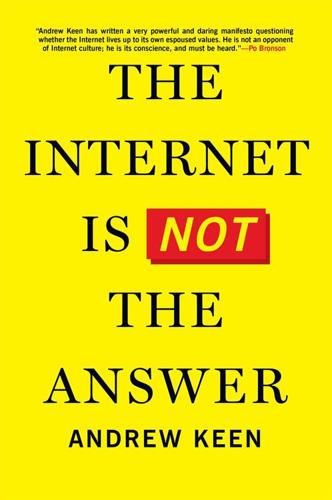
The Internet Is Not the Answer
by
Andrew Keen
Published 5 Jan 2015
Internet companies like Google and Facebook know us particularly well—even more intimately, so they boast, than we know ourselves. No wonder Xochi Birch offers her privileged, wealthy members “privacy” from the data-infested world outside the Battery. In an “Internet of Everything” shadowed by the constant surveillance of an increasingly intelligent network—in a future of smart cars, smart clothing, smart cities, and smart intelligence networks—I’m afraid that the Battery members may be the only people who will be able to afford to escape living in a brightly lit village where nothing is ever hidden or forgotten and where, as data expert Julia Angwin argues, online privacy is already becoming a “luxury good.”23 Winston Churchill was right.
…
“The primary business model of the Internet is built on mass surveillance,” notes Bruce Schneier, a leading computer security expert, “and our government’s intelligence-gathering agencies have become addicted to this data.”62 So rather than an aberration, Silicon Valley’s involvement with the NSA’s Prism surveillance program conforms with the Internet’s core identity. Data, as the EU’s Meglena Kuneva reminds us, is the new oil of the digital economy. So whether it’s Google’s attempt to embed tiny cameras in networked contact lenses63 or the networked home with its detailed knowledge of our comings and goings,64 or smart cities that track everything from our driving to our shopping habits,65 surveillance remains the Internet’s main business model. “Cities are our paradises of anonymity, a place for self-erasure and self-invention,” the veteran technology reporter Quentin Hardy reminds us.66 So what becomes of self-erasure and self-invention in today’s digital panopticon, with products like the aptly named Panono ball camera that films everything it sees?
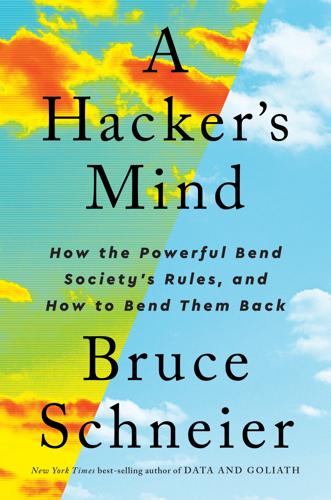
A Hacker's Mind: How the Powerful Bend Society's Rules, and How to Bend Them Back
by
Bruce Schneier
Published 7 Feb 2023
Renee DiResta (11 Apr 2018), “Up next: A better recommendation system,” Wired, https://www.wired.com/story/creating-ethical-recommendation-engines. 237can also benefit the defense: One example: Gregory Falco et al. (28 Aug 2018), “A master attack methodology for an AI-based automated attack planner for smart cities,” IEEE Access 6, https://ieeexplore.ieee.org/document/8449268. 59. A FUTURE OF AI HACKERS 242novel and completely unexpected hacks: Hedge funds and investment firms are already using AI to inform investment decisions. Luke Halpin and Doug Dannemiller (2019), “Artificial intelligence: The next frontier for investment management firms,” Deloitte, https://www2.deloitte.com/content/dam/Deloitte/global/Documents/Financial-Services/fsi-artificial-intelligence-investment-mgmt.pdf.
…
Peter Salvage (March 2019), “Artificial intelligence sweeps hedge funds,” BNY Mellon, https://www.bnymellon.com/us/en/insights/all-insights/artificial-intelligence-sweeps-hedge-funds.html. 244the precautionary principle: Maciej Kuziemski (1 May 2018), “A precautionary approach to artificial intelligence,” Project Syndicate, https://www.project-syndicate.org/commentary/precautionary-principle-for-artificial-intelligence-by-maciej-kuziemski-2018-05. 60. GOVERNANCE SYSTEMS FOR HACKING 245AI technologists and industry leaders: Nick Grossman (8 Apr 2015), “Regulation, the internet way,” Data-Smart City Solutions, Harvard University, https://datasmart.ash.harvard.edu/news/article/white-paper-regulation-the-internet-way-660. 246The Collingridge dilemma: Adam Thierer (16 Aug 2018), “The pacing problem, the Collingridge dilemma and technological determinism,” Technology Liberation Front, https://techliberation.com/2018/08/16/the-pacing-problem-the-collingridge-dilemma-technological-determinism. 247its processes and rulings: Stephan Grimmelikhuijsen et al.

On Bicycles: A 200-Year History of Cycling in New York City
by
Evan Friss
Published 6 May 2019
“Catherine Potter Obituary,” Charlottesville Daily Progress, May 12, 2013, http://www.legacy.com/Obituaries.asp?Page=LifeStory&PersonId=164739194. 2. Sidewalk Labs, accessed June 14, 2018, https://www.sidewalklabs.com/; Elizabeth Woyke, “A Smarter Smart City,” MIT Technology Review, February 21, 2018, https://www.technologyreview.com/s/610249/a-smarter-smart-city/. 3. New York City Press Office, “Mayor de Blasio and NYPD Announce Plans to Crack Down on Improper Use of Electric Bikes,” October 19, 2017, http://www1.nyc.gov/office-of-the-mayor/news/666-17/mayor-de-blasio-nypd-plans-crack-down-improper-use-electric-bikes#/0; Brad Aaron, “Shameful Scenes from de Blasio’s Crackdown on Delivery Workers Who Use Electric Bikes,” StreetsblogNYC, January 16, 2018, https://nyc.streetsblog.org/2018/01/16/shameful-scenes-from-de-blasios-crackdown-on-delivery-workers-who-use-electric-bikes/; New York City Press Office, “Mayor de Blasio Announces New Framework to Clarify Legality of Pedal-Assist Bicycles,” April 3, 2018, https://www1.nyc.gov/office-of-the-mayor/news/165-18/mayor-de-blasio-new-framework-clarify-legality-pedal-assist-bicycles.
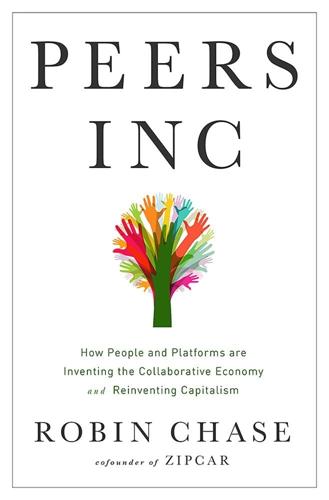
Peers Inc: How People and Platforms Are Inventing the Collaborative Economy and Reinventing Capitalism
by
Robin Chase
Published 14 May 2015
People who are watching their weight, improving their sleep and exercise regimens, and following doctor’s orders will contribute their personal data via sophisticated and user-friendly devices, as is already happening today. Some of that will be anonymized and become part of large population databases that will transform public health and the delivery of health care. Smart health, smart cities, and big data (together becoming the Internet of Things) are in fact all grounded in Peers Inc: repurposed data that is collected by all kinds of peers and organized and analyzed by various Incs, empowering individuals and cities to make better decisions, learn faster, evolve more quickly, and have a different relationship with our environment.
…
Guifi.net website, https://guifi.net/en. 29. Veniam, the company I most recently co-founded, is building the networking fabric for the Internet of Moving Things. Combining cellular, Wi-Fi and vehicle-to-vehicle communications, Veniam turns every vehicle into a hotspot, as well as collector and conveyor of sensor data for smart cities and ports. 30. Noam Cohen, “Red Hook’s Cutting-Edge Wireless Network,” New York Times, August 22, 2014. 31. Ibid. CHAPTER 11: WHAT HAPPENS NEXT? 1. Bill Joy, Linus Torvalds, and Eric Raymond have all been given credit for this observation. 2. Nicholas Gruen articulated this idea to me. 3.
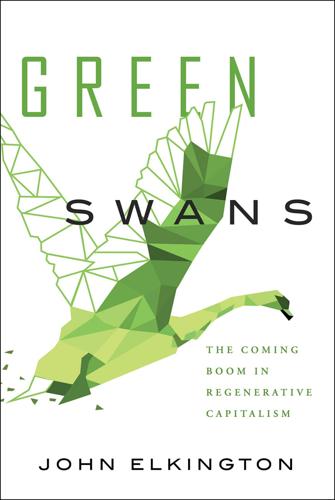
Green Swans: The Coming Boom in Regenerative Capitalism
by
John Elkington
Published 6 Apr 2020
But both Gray and Black Swan challenges will erupt, including shocking job losses, scandalously unethical use of data, and pernicious embedded blind spots reflecting blind spots in the minds and experience of those designing such systems. We already see growing concerns about wrongful exclusion and arrest, privacy, cars that are happy to run over black people, and the surveillance state. •The Internet of Things, Robotics, and Smart Cities: There are now more connected devices in the world than there are people. Collectively dubbed the Internet of Things (IoT), they range “from smart building technologies that monitor and manage energy usage, to connected vehicles that help anticipate and avoid potential collision.” The number of IoT devices is projected to exceed 20 billion by 2022, owing both to “continued technological advances and the plummeting costs of computing, storage and connectivity.”
…
J., 81–84 River Thames, 43 Roadshow, Green Swan, 242–247 Robèrt, Karl-Henrik, 151 Roberts, Russ, 80 Robins, Nick, 208, 243 robotics, 177 Rockefeller Foundation, 138 Romanovitch, Sacha, 125 Roosevelt, Franklin D., 16, 235 Rose, Charlie, 183 Rosling, Hans, 28 Roundup herbicide, 68 Russia, 113–114 Ruxton, Jo, 92 S Sackler family, 13 Sagan, Carl, 183 Samsung, 126 Scharmer, Otto, 37 Schneider, Mark, 96 Schumpeter, Joseph, 203 Schwarzenegger, Arnold, 77–78 science, 83–84, 121–123, 183–184, 217–218 Scientific American (magazine), 65, 98–99 Seba, Tony, 241 737 Max 8 aircraft, Boeing, 194–197 Shanghai, China, 108–109 shared natural resources, 204 shared value, 59–60, 149f shareholder primacy, 14, 205 shareholder value, 149f Sharpe, Bill, 37 Shell, 119, 214 Siemens, 216 Silent Spring (Carson), 193 Singularity University (SU), 35–36, 83, 186–187, 188, 237–238 Slope of Enlightenment stage, Gartner Hype Cycle, 175 smart cities, 177 Smit, Tim, 215, 216, 218, 237 Smith, Adam, 18, 25, 80, 85 social media, Black Swan thinking in, 53 Social Stock Exchange, 218 Societal Needs, in GGC approach, 187 society climate-induced collapse, 8, 10 in Future-Fit change approach, 149, 149f, 150, 150f, 151, 152f Green Swans in, 42 leading-edge business models and, 52 Novo Nordisk engagement with, 156, 157–158 Sonar, 140–141 Sørensen, Lars Rebien, 155–158 Sorrell, Martin, 124–125 Soskice, David, 211–212 space junk, 111–116 SpaceX, 115 SPARK 2019 conference, 244–245 sponge cities, 136, 255 Stalin, Joseph, 203 State of New York, 128–129 Steele, Tanya, 200, 224 Steffen, Alex, 67 Stelzer, Irwin, 5, 15, 196 Stiglitz, Joseph, 60, 204 stock exchanges, tracking wicked problems in, 90–91 Stockdale, James, 229 Stoermer, Eugene, 87 Stormer, Susanne, 159 stranded assets, 48, 71–73, 243 The Structure of Scientific Revolutions (Kuhn), 121–122, 191, 230 subsidies for fossil fuels industry, 67 Suez Western Australia, 134 The Sun Also Rises (Hemingway), 79 super wicked problems, 84–86 Superbugs exhibit, London Science Museum, 106–107 Superfund legislation, US, 136 Susskind, Jamie, 224 sustainability.
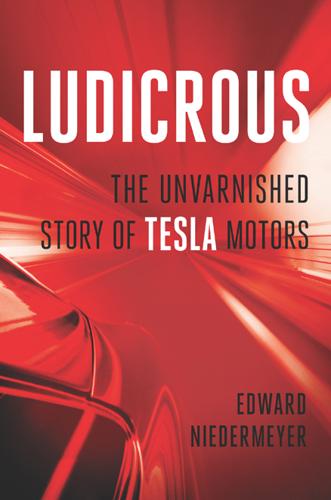
Ludicrous: The Unvarnished Story of Tesla Motors
by
Edward Niedermeyer
Published 14 Sep 2019
Other automakers had also approached Tesla to explore the possibility of buying its battery packs, and Eberhard had assigned his old friend and board member Bernard Tse to establish a new division for this business called “Tesla Energy Group.” One of the interested parties was the German automaker Daimler, which was interested in the possibility of an electric version of its Smart city car, and Tesla had set about building a prototype. But when Eberhard was ousted and Marks took over with a mandate to focus the company on Roadster production, Tesla Energy Group was shuttered. By the time Musk took over as CEO in late 2008, Think Global had moved on to a new battery supplier, and another customer had to be found to revive the Tesla Energy Group business.
…
With just one electric platform, VW Group could bracket Tesla’s premium products from every side, potentially splitting Tesla’s market into buyers who prefer Audi’s high-tech minimalism, Porsche’s real-world performance, Bentley’s bespoke luxury, and Lamborghini’s over-the-top performance and design. Nor is Volkswagen the only automaker remaking itself in the image of Tesla. Daimler has committed $23 billion for EV batteries through 2023, is converting its Smart city car lineup to 100 percent electric power, and is launching ten new pure electric vehicles under a new “EQ” brand, all based off its own recently introduced modular electric platform. BMW rounds out the major German automakers with twelve fully electric vehicles—from a subcompact MINI Cooper to a massive Rolls-Royce—planned by 2025.
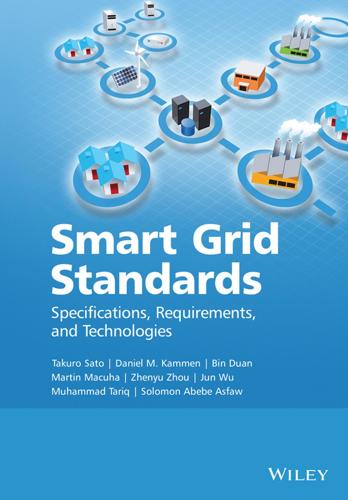
Smart Grid Standards
by
Takuro Sato
Published 17 Nov 2015
The SRA 2035 describes the research topics and priorities that will be necessary for further development of the electricity system from 2020 to 2035 and beyond. The European Union promotes low-carbon related technology, bio energy, carbon capture and storage, power grid, hydrogen and fuel cells, nuclear power, smart city, solar power, and wind power based on the European Strategic Energy Technologies (SETs) Plan. In June 2012, the European Union founded the European Network of Transmission System Operators for Electricity (ENTSO-E) to represent all electric Transmission Smart Grid Standards 22 System Operators (TSOs) in the European Union.
…
As for the Smart Grid, one particular reason for favoring fiber optics against some other broadband technologies like LTE (Long-Term Evolution), WiMAX (Worldwide Interoperability for Microwave Access), or distributed radio frequency (RF) Mesh, is the aggregate data bandwidth for two-way communication for Smart Grid-related data in large cities and dense populations. When serving hundreds of thousands of households or even more, the aggregate bandwidth rises to several gigabytes per second [24]. Other use cases, when fiber-optic network deployment is of particular interest, are smart city deployments and multiservice solutions (e.g., community-owned utilities, combining various services including voice, video Internet, and Smart Grid services by service or utility providers)[25]. Another aspect and advantage of fiber optics is its very high bandwidth that can accommodate various bandwidth-demanding applications in the future without the need for replacement or upgradation of the infrastructure.
…
It is based on the Fast FHSS (Frequency Hopping Spread Spectrum) with data interleaving and forward error correction. The ultralow power consumption is realized by an MAC layer, and a network layer supports IPv6 as well as RPL protocol for routing. The main target market segments for WAVE2M open standard is AMI-to-AMI communication, home and building automation, and smart cities. 6.4.3.6 Weightless Weightless in another long-range technology designed for M2M communication. This technology standard is maintained by the Weightless Special Interest Group (SIG) and although the standard is available, the patents are licensed only to qualified devices, thus this technology can be considered as a proprietary solution.
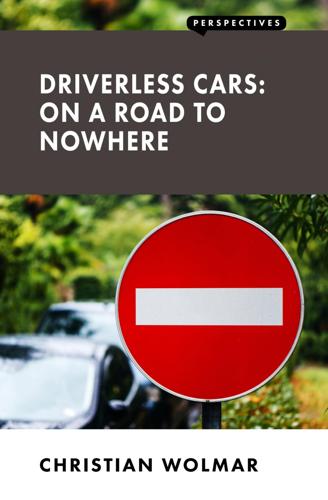
Driverless Cars: On a Road to Nowhere
by
Christian Wolmar
Published 18 Jan 2018
Some even assumed that the advent of driverless cars was imminent and that transport policies therefore needed to be adapted urgently. The driverless car revolution was upon us, and those who ignored it were simply doing the three monkeys trick. They were Luddites, losers. Had not the PC, the smartphone and the internet already changed our lives? ‘Smart cities’ were all the rage and driverless cars were one of their obvious key building blocks. Judging by my response to Deborah’s email, I had clearly swallowed this line too. But then my brain started to engage. It was precisely that tone of inevitability which began to make me wonder whether this revolution in transport would really soon be upon us.
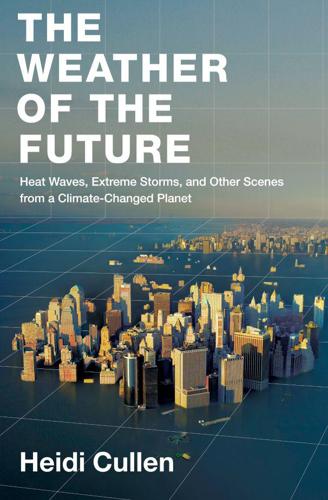
The Weather of the Future
by
Heidi Cullen
Published 2 Aug 2010
Nearly one-third of locally produced particulate matter in our air comes from heating fuel. Public health can improve quickly as a result of efforts that improve air quality and building efficiency. New York may be looking to learn from others, but it’s also hoping to serve as an example of best practices. Steve Hammer also serves as an adviser to the Energy Smart Cities mayoral training program being developed by the Joint U.S.–China Cooperation on Clean Energy, a nonprofit with offices in Shanghai and Beijing. The training program is a three-year initiative that will introduce Chinese mayors to the best practices of the West, with the goal of helping cities reduce their energy intensity by 20 percent by 2010.
…
See Central Valley, California; Sacramento–San Joaquin Delta Delta fish, 122–24, 131–32 Delta levees, 117–21, 125–27, 140, 146–47 Delta Plan (Delta Works), 238–39 deMenocal, Peter, 263 Denver, hot days in, 293 Desertec-Africa, 85–87 desertification, 67–68 desiccation, 66–67 Detroit, hot days in, 290 deuterium, 187 DeVantier, Lyndon, 91 Dhaka, Bangladesh, 197–225 adaptation strategies, 214–19 climate migration, 204–8 flood forecasting, 200–204, 222–23 forty-year forecast, 219–25 global warming and, 203, 211–14 map, 196 rising sea levels, 208, 211–14 water at the heart of problems, 208–19 Diamond, Jared, 269 dipoles, 198 drought mechanisms, 69–71 droughts, 54–55, 89, 210–11 Central Valley, 137–47 Mesopotamia, 264 New York City, 244–45 Sahel region, 66–68, 69–72 earthquakes, 121–27, 133–34, 146–47 Earth-system Models of Intermediate Complexity (EMIC), 266 Easter Island, 268–69 Eddy, David, 227–28 Eemian, 181–83, 185–87 Egede, Hans, 176, 178 El Niño (EN), xiv–xv, 197, 249 Andes Mountains, 159–60 California, 134, 138–40 Great Barrier Reef, 96, 97, 111 Sahel region, 71 El Niño Advisory, 138–39 emissions reductions (mitigation), 58, 109, 235–36 Energy Smart Cities, 246 equations, 32–33, 35–36, 38–39 equilibrium runs, 39–40, 42 Erik the Red, 173, 175–76 European Centre for Medium-Range Weather Forecasts (ECMWF), 201–2 European heat wave of 2003, 51–53, 281 evolution, 64–66 extinction, 17, 65, 66 Delta fish, 122–23, 132 extreme weather, 50–56 Great Barrier Reef, 98–99 New York City, 233–34 Exxon Mobil, 177 famine, 78–79, 81–87, 204–5 farmer-managed natural regeneration (FMNR), 77–78 feedback, 21–22 Finding Nemo (movie), 103 Flood Forecasting Warning Center (FFWC), 202–3 floods (flooding), 54–55, 121–22, 221 Bangladesh, 197–204, 208–13, 219–25 Central Valley, 121–22, 124–30 New Orleans, 121–22, 133–34, 249 New York City, 236–44, 255–56, 258 Red River, 3–5, 10 Food Mail, 157 forcings, 21–22, 38, 44–49.
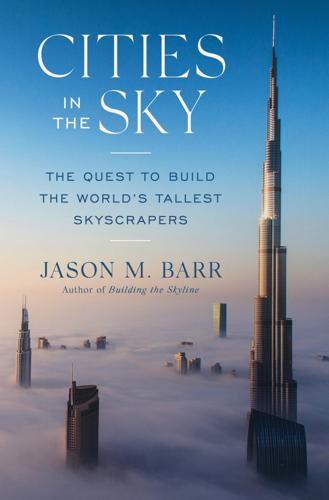
Cities in the Sky: The Quest to Build the World's Tallest Skyscrapers
by
Jason M. Barr
Published 13 May 2024
Alone Together: A History of New York’s Early Apartments. Cornell University Press, 1990. Cronon, William. Nature’s Metropolis: Chicago and the Great West. W. W. Norton, 1992. Dai, Sarah. “President Xi’s Dream City of Xiongan Pushes Ahead with Smart City Infrastructure Aimed at Covering All Areas.” South China Morning Post, September 16, 2019. https://www.scmp.com/tech/innovation/article/3027415/president-xis-dream-city-xiongan-pushes-ahead-smart-city. Davies, John, James Lui, Jack Pappin, K. K. Yin, and C. W. Law. “The Foundation Design for Two Super High-Rise Buildings in Hong Kong.” Proceedings: CTBUH 2004 Seoul Conference (2004): 10–13. Daily Mail.
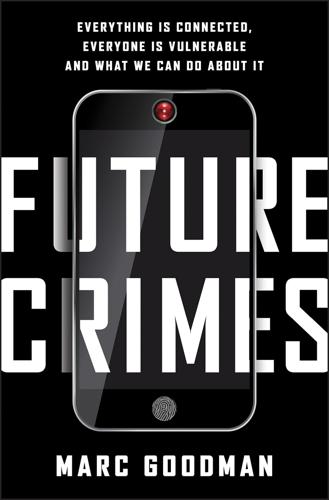
Future Crimes: Everything Is Connected, Everyone Is Vulnerable and What We Can Do About It
by
Marc Goodman
Published 24 Feb 2015
—the Org Chart The Lean (Criminal) Start-Up A Sophisticated Matrix of Crime Honor Among Thieves: The Criminal Code of Ethics Crime U Innovation from the Underworld From Crowdsourcing to Crime Sourcing CHAPTER 11: INSIDE THE DIGITAL UNDERGROUND Passport to the Dark Web A Journey into the Abyss Dark Coins Crime as a Service Crimeazon.com The Malware-Industrial Complex Net of the Living Dead: When Botnet Zombies Attack Committing Crime Automagically CHAPTER 12: WHEN ALL THINGS ARE HACKABLE Where the Wireless Things Are Imagining the Internet of Things Connecting Everything—Insecurely Obliterating Privacy Hacking Hardware More Connections, More Vulnerabilities CHAPTER 13: HOME HACKED HOME Candid Camera From Carjacking to Car Hacking Home Hacked Home What the Outlet Knows Business Attacks and Building Hacks The Smart City Operating System CHAPTER 14: HACKING YOU “We Are All Cyborgs Now” More Than Meets the Eye: The World of Wearable Computing You’re Breaking My Heart: The Dangers of Implantable Computers When Steve Austin and Jaime Sommers Get a Virus Identity Crisis: Hacking Biometrics Fingers Crossed (and Hacked) Your Password?
…
Make no mistake, there are deep geopolitical implications to the Internet of Things, and those nations capable of leveraging these technologies to their fullest will have access to unparalleled intelligence and strategic advantage. As the Chinese premier, Wen Jiabao, noted in a speech in August 2009 in the city of Wuxi, “Internet + Internet of Things = Wisdom of the Earth.” The Smart City Operating System Those skilled in war are able to subdue the enemy’s army without battle. They capture his cities without assaulting them and overthrow the state without protracted operations. SUN TZU In 1964, Marshall McLuhan presciently predicted that by “means of electric media … all previous technologies … including cities …[would] be translated into information systems.”
…
It might have taken fifty years, but his forecast was spot-on. The Internet of Things has the full potential to transform cities into living, breathing ecosystems of ambient intelligence and connected sensors, vastly improving the quality of life for their inhabitants. In the utopian vision of smart cities, trash cans with embedded sensors will notify the rubbish collectors when they are full, immediately dispatching the closest GPS-equipped garbage truck to whisk them away. The growing numbers of “municipal sensor networks” can measure the pollution produced by individual buildings, the air quality on a particular block, or the number of pedestrians walking on a given street, creating the first-ever “Fitbit for the city.”
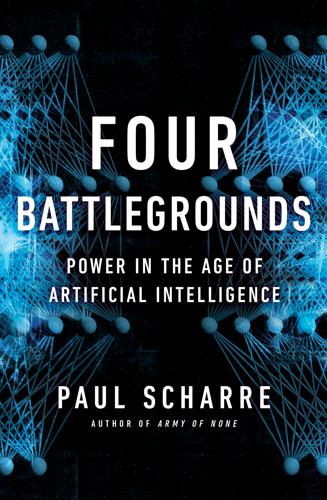
Four Battlegrounds
by
Paul Scharre
Published 18 Jan 2023
Spending estimates vary, but China has likely spent hundreds of billions of dollars in overseas construction and investment. The Digital Silk Road is the digital tech component of Belt and Road, encompassing technologies such as AI, safe cities, cloud computing, 5G wireless networks, and other “smart city” initiatives to help build modern, connected urban areas. The motivation for these efforts is expanding China’s political and economic influence, and part of doing so is exporting China’s model of governance. One of Beijing’s foreign policy goals is to secure Chinese Communist Party power by making “a world safe for autocracy,” according to Cornell professor Jessica Chen Weiss.
…
Army) Surveillance cameras blanket a light pole in front of the Monument to the People’s Heroes in Tiananmen Square, China. The Chinese Communist Party is in the process of constructing a massive surveillance apparatus to monitor its citizens. Over half of the world’s estimated one billion surveillance cameras are in China. (Courtesy Paul Scharre) Example of a smart city operations center on display at Huawei company offices in Beijing. According to Huawei, its safe city technology is used in more than 100 countries. Many countries around the world are adopting Chinese-style surveillance technology, laws, and practices to monitor their citizens, threatening to undermine freedoms around the world.
…
After their 2019 Entity List designation, SenseTime released a statement on their website: “We are deeply disappointed with this decision by the US Department of Commerce. We will work closely with all relevant authorities to fully understand and resolve the situation. SenseTime is focused on computer vision and deep learning. We work with customers all over the world to leverage AI technology for a range of applications, including education, medical diagnosis, smart city, transportation, communications and entertainment, among many others. We abide by all relevant laws and regulations of the jurisdictions in which we operate. We have been actively developing our AI code of ethics to ensure our technologies are used in a responsible way. In the meantime, we remain focused on protecting the interests of our customers, partners, investors and employees.”
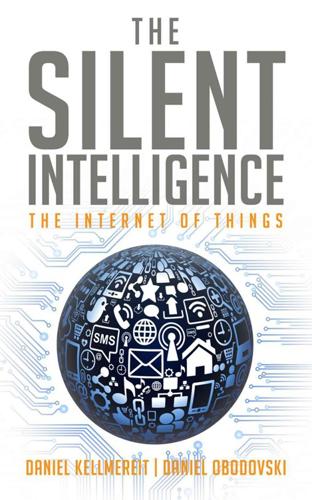
The Silent Intelligence: The Internet of Things
by
Daniel Kellmereit
and
Daniel Obodovski
Published 19 Sep 2013
Fortunately, thanks to consistently improving Machine-to-Machine technologies, our cities are becoming smarter, too. Sensors and real-time wireless communication allow for better energy management, traffic optimization, and building automation. Anthony Flint22 wrote on the website The Atlantic Cities that smart cities are not just about helping people find a place to park; they are also designed to help cities in the developing world better manage population growth as it affects energy management, transportation, water supply management, and sanitation services. Says Assaf Biderman: The city is becoming like a computer in the open air.
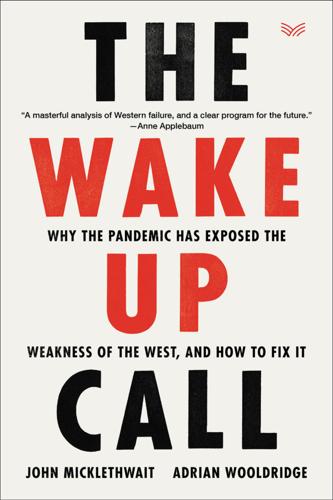
The Wake-Up Call: Why the Pandemic Has Exposed the Weakness of the West, and How to Fix It
by
John Micklethwait
and
Adrian Wooldridge
Published 1 Sep 2020
Should they restrict access to the teaching profession to people with teaching certificates? If video consultation for doctors worked so well during the crisis, why not embrace it in normal times? Should governments pay for students to go to university, when the gains from higher education go overwhelmingly to the privileged? Why hasn’t the West invested in smart cities in the same way that Asia has? Leviathan everywhere could be simplified and improved just by pragmatic modernization. You can get a long way just by repair work, room by room. But Covid gives us a chance to rethink the overall design, something which has not happened for decades. Here the argument changes from pragmatism to ideology, and technological improvement to political theory.
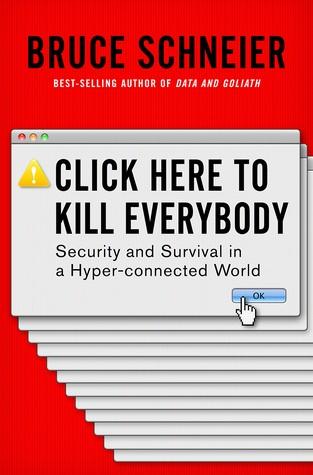
Click Here to Kill Everybody: Security and Survival in a Hyper-Connected World
by
Bruce Schneier
Published 3 Sep 2018
Smart scales are it,” Atlanta Journal-Constitution, http://www.ajc.com/news/health-med-fit-science/want-scale-that-tells-more-than-your-weight-smart-scales-are/XHpLELYnLgn8cQtBtsay6J. 4a smart toilet: Alina Bradford (1 Feb 2016), “Why smart toilets might actually be worth the upgrade,” CNET, http://www.cnet.com/how-to/smart-toilets-make-your-bathroom-high-tech. 4smart light bulbs: Alex Colon and Timothy Torres (30 May 2017), “The best smart light bulbs of 2017,” PC Magazine, https://www.pcmag.com/article2/0,2817,2483488,00.asp. 4a smart door lock: Eugene Kim and Christina Farr (10 Oct 2017), “Amazon is exploring ways to deliver items to your car trunk and the inside of your home,” CNBC, https://www.cnbc.com/2017/10/10/amazon-is-in-talks-with-phrame-and-is-working-on-a-smart-doorbell.html. 4a smart bed: Adam Gabbatt (5 Jan 2017), “Don’t lose your snooze: The technology that’s promising a better night’s sleep,” Guardian, https://www.theguardian.com/technology/2017/jan/05/sleep-technology-ces-2017-las-vegas-new-products. 4Cities are starting to embed smart sensors: Matt Hamblen (1 Oct 2015), “Just what IS a smart city?” Computerworld, https://www.computerworld.com/article/2986403/internet-of-things/just-what-is-a-smart-city.html. 4Smart billboards will recognize you: Tim Johnson (20 Sep 2017), “Smart billboards are checking you out—and making judgments,” Miami Herald, http://www.miamiherald.com/news/nation-world/national/article174197441.html. 5Those spatial metaphors don’t make sense: This is why I am still using the uppercase “Internet” in this book, even though most style guides now prefer lowercase.
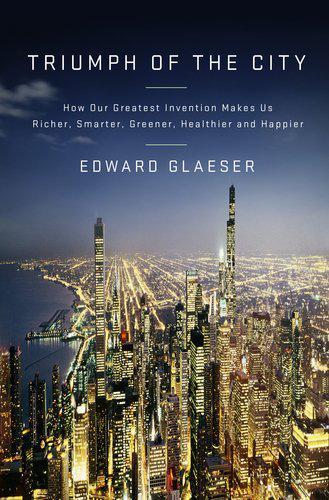
Triumph of the City: How Our Greatest Invention Makes Us Richer, Smarter, Greener, Healthier, and Happier
by
Edward L. Glaeser
Published 1 Jan 2011
No one is going to confuse Gaborone with Paris, but it is a striking success among African cities, primarily because its government is effective. In the world’s poorest places, success above all reflects decent political institutions and investment in education, and that’s what has made Gaborone a well-functioning city. The Smart City: Boston, Minneapolis, and Milan Singapore and Gaborone are imperfect models for cities that are neither independent states nor national capitals. They also can’t serve as examples for places in regions where decent economic policies are the norm. Singapore succeeded, in part, by investing in education and by choosing economic policies that would positively differentiate itself from its neighbors.
…
Our schools must focus on getting—and keeping—teachers of those skills, like numeracy, that are increasingly critical for success. For cities, investing in schooling yields two payoffs. Students acquire more skills, which eventually makes the place more productive. Better schools also attract better-educated parents, who make the place more productive right away. The single best way to create a smart city is to create schools that attract and train able people. Help Poor People, Not Poor Places The dearth of education in many postindustrial cities helps explain why these places have had such trouble reinventing themselves. They’ve also suffered because their model of having vast firms in a single industry stunts entrepreneurship and innovation.
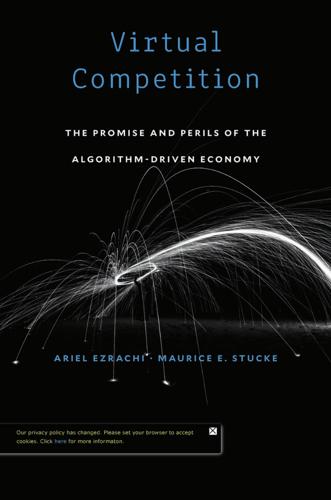
Virtual Competition
by
Ariel Ezrachi
and
Maurice E. Stucke
Published 30 Nov 2016
Eden Medina, “Designing Freedom, Regulating a Nation: Socialist Cybernetics in Allende’s Chile,” Journal of Latin American Studies 38 (2006): 328 25. 26. 27. 28. 29. 30. 31. 32. 33. 34. 35. 36. 37. 38. Notes to Pages 213–215 571–606, http://www.informatics.indiana.edu/edenm/EdenMedinaJLAS August2006.pdf. Laura Tam, “Smart Cities, Limited Resources,” SPUR (October 10, 2012), http://www.spur.org/publications/article/2012-10-10/smart-cities-limited -resources. Ibid. San Francisco Municipal Transportation Agency, SFpark Sensors (2016), http://sfpark.org/how-it-works/the-sensors/. San Francisco Municipal Transportation Agency, SFpark Pilot Project Evaluation Summary (June 2014), http://sfpark.org/wp-content/uploads/2014 /06/SFpark _ Eval _ Summary_ 2014.pdf.
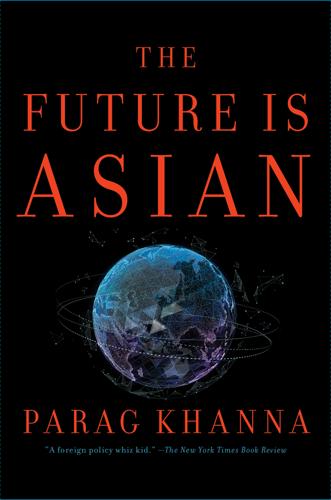
The Future Is Asian
by
Parag Khanna
Published 5 Feb 2019
Singapore offers such companies a “living lab” for demonstration projects in using sensor networks to efficiently manage everything from traffic to security for large populations. In Singapore, France’s Dassault Systèmes has created the world’s most advanced 3D geodata platform, where it designs customizable and energy-efficient bridges that it hopes to sell across Asia. Western know-how is therefore accelerating Asia’s claim to be home to the “smart cities” of the future. The Los Angeles–based AECOM, one of the world’s top engineering and design firms, has three thousand staff in China, another three thousand across Southeast Asia, and a growing number in India, with Saudi Arabia and the UAE its fastest-growing offices. The legendary Chicago architecture firm Skidmore, Owings & Merrill designed Dubai’s Burj Khalifa, while Gensler of San Francisco designed the Shanghai Tower, currently the world’s second tallest building.
…
After South Korea and Japan, India is the next major economy poised to sign a free trade agreement with the European Union. At the 2017 India-EU Summit, the European Investment Bank (EIB) made its largest commitments ever to flagship Indian initiatives such as Skill India and Digital India, with contracts given to European companies to promote Indian “smart cities” through renewable energy projects. At the same time, both Germany and France are selling military hardware such as new submarines to India. Fresh on the heels of British prime minister Theresa May’s visit to India in 2017, London mayor Sadiq Khan followed with a large delegation to both India and Pakistan.
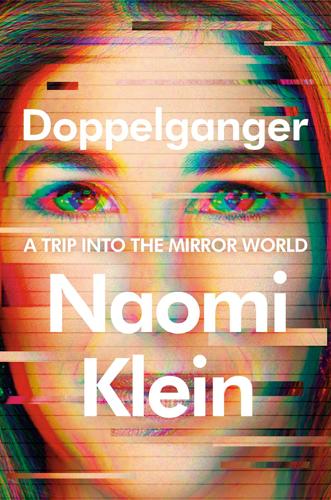
Doppelganger: A Trip Into the Mirror World
by
Naomi Klein
Published 11 Sep 2023
But the former Google CEO Eric Schmidt and other tech billionaires seized on those stop-gap emergency measures to push for more permanent changes that would represent huge profit-making opportunities for their sector—everything from moving large parts of education permanently online to creating so-called smart cities, which would radically increase the surveillance of daily life. The future they were seeing in the crisis was one in which not only our homes are never again exclusively personal spaces but also, via high-speed digital connectivity, our schools, our doctor’s offices, our gyms, and, if determined by the state, our jails.
…
Seventeen sex Seymour, Richard “Shadow, The” (Andersen) Shadow Lands Shakespeare, William Sheffer, Edith shock, shock doctrine; Covid and Shock Doctrine, The (Klein) shootings, mass Siebenkās (Jean Paul) Silberman, Steve Silicon Valley; see also tech companies Simmons, Russell Simpson, Leanne Betasamosake Sinclair, Murray Singh, Lilly Sister Outsider (Lorde) 60 Minutes Slate slavery “slavery forever” video Slobodian, Quinn smallpox Smalls, Chris smart cities Smith, Adam Smith, Zadie Snowden, Edward social credit systems Social Democrats socialism; Jewish attraction to social media; avatars on; content moderators and; Covid and; digital doubles on; enclosure process and; Facebook; hacking of accounts on; influencers on; Instagram; Twitter, see Twitter; vaccine-autism myth on; YouTube, see YouTube social networks Social Security societies Son, John Sonalker, Anuja Soros, George souls South Africa South Korea Soviet Union Spain Spanish Inquisition Spartacus League Spectator, The speechlessness spyware Stalin, Joseph Starbucks State Department Status Update (Marwick) Steer Tech Stepford Wives, The sterilization, forced Stevenson, Robert Louis Stone, I.
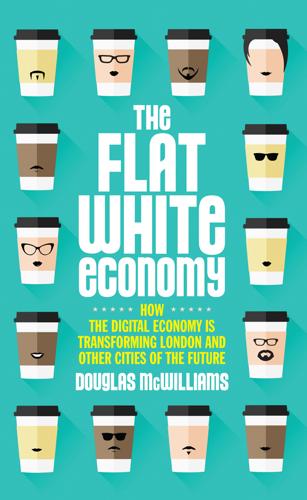
The Flat White Economy
by
Douglas McWilliams
Published 15 Feb 2015
Glaeser relates this to two key factors: technology and globalisation. He argues that these have both placed a premium on ‘smartness’ and that your smartness depends on your interactions. He points out that there is a disconnect – in less skilled cities there is little correlation between city size and productivity. But in ‘smart cities’ as much as 45% of productivity is a function of the city size as the increased connections that can be made increase the creativity and economic potential of the employees. The underlying thinking is similar to that of the economics of agglomeration and of clustering. In a modern city – and this is increasingly the case – intelligence based work is improved in its quality of thinking, which is partly a function of connections, by increased numbers of interactions.
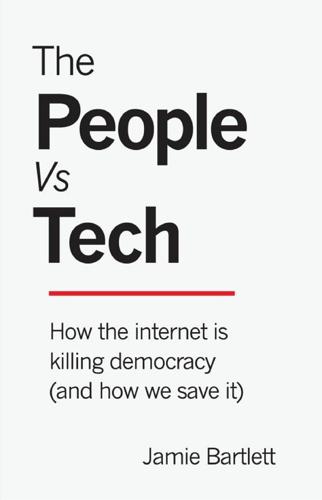
The People vs Tech: How the Internet Is Killing Democracy (And How We Save It)
by
Jamie Bartlett
Published 4 Apr 2018
An even more depressing statistic is that 30 per cent hope to become the one-in-a-million YouTuber who actually makes a career of it. Every country wants to build their own Silicon Valley, and every city has ambitions to be a tech ‘hub’. Read any political manifesto from across the spectrum and you’ll find yourself lost in a world of smart cities, lean governments and flexible workers. To seriously criticise any of this puts you at risk of being labelled a Luddite who doesn’t ‘get it’. And to whom do we look in order to solve our collective social problems? It’s no longer the state, but the modern tech-geek superhero. Space travel and climate change has fallen to Elon Musk.
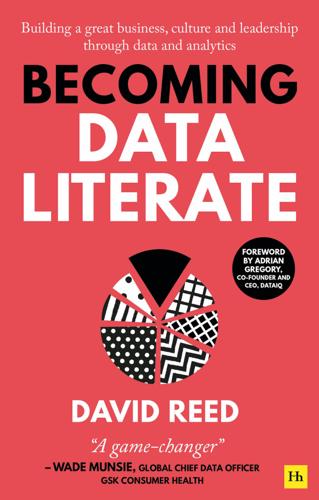
Becoming Data Literate: Building a great business, culture and leadership through data and analytics
by
David Reed
Published 31 Aug 2021
A new marketplace is also opening up around non-personal data types which are therefore not subject to regulation (provided they cannot be used to identify an individual such as through a specific device at a given time and location), but which also have potentially significant value to users. Internet of Things’ data is one example where very high volumes are being generated from sensors and devices which may have value beyond the specific needs of those machines, such as to drive services in smart cities. Already, data exchanges exist within platforms like AWS where real-time data can be licensed and embed via APIs into external systems. Data leaders need to consider the possibility of exploiting such revenue streams when working out investment cases. Alongside this, data ecosystems will become essential to support many innovative services where sole tenant data is not sufficient.
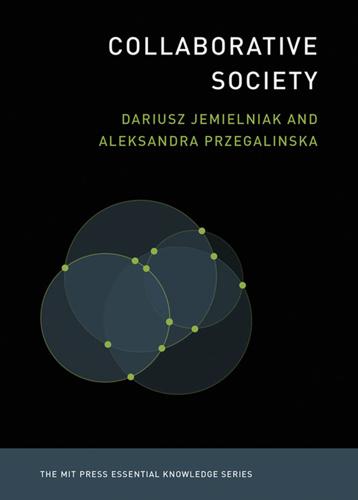
Collaborative Society
by
Dariusz Jemielniak
and
Aleksandra Przegalinska
Published 18 Feb 2020
Memes in Digital Culture, Limor Shifman Metadata, Jeffrey Pomerantz The Mind–Body Problem, Jonathan Westphal MOOCs, Jonathan Haber Neuroplasticity, Moheb Costandi Nihilism, Nolen Gertz Open Access, Peter Suber Paradox, Margaret Cuonzo Post-Truth, Lee McIntyre Quantum Entanglement, Jed Brody Recycling, Finn Arne Jørgensen Robots, John Jordan School Choice, David R. Garcia Self-Tracking, Gina Neff and Dawn Nafus Sexual Consent, Milena Popova Smart Cities, Germaine R. Halegoua Spaceflight, Michael J. Neufeld Spatial Computing, Shashi Shekhar and Pamela Vold Sustainability, Kent E. Portney Synesthesia, Richard E. Cytowic The Technological Singularity, Murray Shanahan 3D Printing, John Jordan Understanding Beliefs, Nils J. Nilsson Virtual Reality, Samuel Greengard Waves, Frederic Raichlen Dariusz Jemielniak is Professor of Management at Kozminski University, Poland, where he heads the Management in Networked and Digital Societies (MINDS) Department, and the author of Common Knowledge?
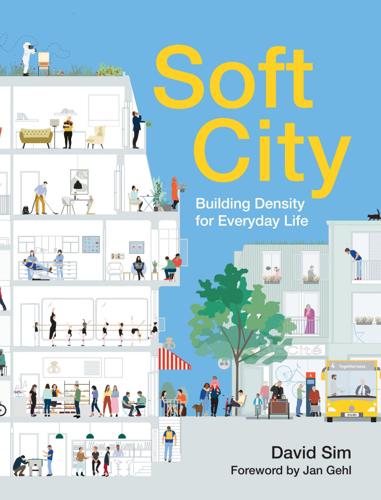
Soft City: Building Density for Everyday Life
by
David Sim
Published 19 Aug 2019
For decades, so much of urban planning has been focused on devising ways to reorganize human activity into distinct silos, to separate people and things and, by so doing, reduce the risk of conflict. I would like, instead, to focus on how potentially conflicting aspects of everyday existence can be brought together and connected to deliver better quality of life. Perhaps soft city can be considered a counterpoint or even a complement to “smart” city. Rather than looking to complex new technologies to solve the challenges of increasing urbanization, we can instead look to simple, small-scale, low-tech, low-cost, human-centered, gentle solutions that help make urban life easier, more attractive, and more comfortable. Softer may be smarter. This book presents observations about some basic aspects of urban form and urban design that can contribute to more sustainable and resilient communities and healthier and happier lives for the people who live in them.
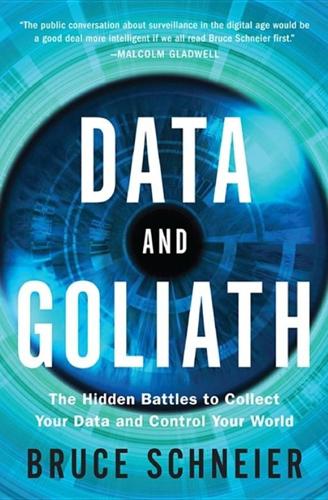
Data and Goliath: The Hidden Battles to Collect Your Data and Control Your World
by
Bruce Schneier
Published 2 Mar 2015
Google Glass is the first wearable device that has this potential, but others are not far behind. These are examples of the Internet of Things. Environmental sensors will detect pollution levels. Smart inventory and control systems will reduce waste and save money. Internet-connected computers will be in everything—smart cities, smart toothbrushes, smart lightbulbs, smart sidewalk squares, smart pill bottles, smart clothing—because why not? Estimates put the current number of Internet-connected devices at 10 billion. That’s already more than the number of people on the planet, and I’ve seen predictions that it will reach 30 billion by 2020.
…
Google Glass is the first wearable device: Jenna Wortham (8 Mar 2013), “Meet Memoto, the lifelogging camera,” New York Times Blogs, http://bits.blogs.nytimes.com/2013/03/08/meet-memoto-the-lifelogging-camera. Internet of Things: Ken Hess (10 Jan 2014), “The Internet of Things outlook for 2014: Everything connected and communicating,” ZDNet, http://www.zdnet.com/the-internet-of-things-outlook-for-2014-everything-connected-and-communicating-7000024930. smart cities: Georgina Stylianou (29 Apr 2013), “Idea to have sensors track everything in city,” Press (Christchurch), http://www.stuff.co.nz/the-press/business/the-rebuild/8606956/Idea-to-have-sensors-track-everything-in-city. Victoria Turk (Jul 2013), “City sensors: the Internet of Things is taking over our cities,” Wired, http://www.wired.co.uk/magazine/archive/2013/07/everything-is-connected/city-sensors.
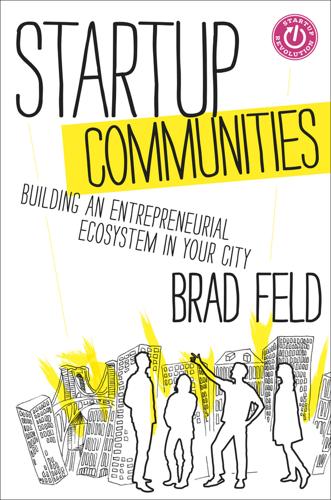
Startup Communities: Building an Entrepreneurial Ecosystem in Your City
by
Brad Feld
Published 8 Oct 2012
BOULDER AS A LABORATORY Boulder is a small city; as of 2012, there are less than 100,000 actual residents with 250,000 people in the extended metro area, which includes the neighboring towns of Superior, Broomfield, Lafayette, Longmont, and Lyons. Boulder is small enough that you can get your mind around the whole place but big enough to be interesting. As a result, I’ve come to think of Boulder as my laboratory for thinking about startup communities. Boulder is a smart city. The University of Colorado Boulder is located right in the middle of town, and students, faculty, and staff comprise about 30 percent of the population of Boulder. The presence of several national research labs, including the National Oceanic and Atmospheric Administration (NOAA), the National Center for Atmospheric Research (NCAR), and the National Institute of Standards and Technology (NIST) add nicely to the number of PhDs around.
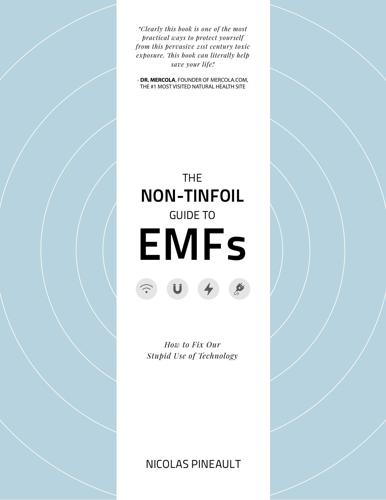
The Non-Tinfoil Guide to EMFs
by
Nicolas Pineault
Published 6 Dec 2017
At this point, I’ll see that he’s clearly had enough doom and gloom for today — and won’t even talk about the fact that things will likely get way worse in the next few years. © 2017 N&G Media Inc. 195 I won’t even tell him that while the imminent rollout of the next-generation 5G cellular network will enable incredible technological advances like self-driving cars,526 smart cities filled with billions of sensors forming what’s called “The Internet Of Things” (IoT)527 and make clean energy cheaper than coal528 — it’s also going to increase the levels of EMF radiation we’re exposed to by orders of magnitude.529 I won’t tell him that while users will be busy enjoying the incredible download speeds 5G will bring to the table (up to 50X faster than the current 4G/LTE), and while the industry will make trillions in profits, 5G technology will also require installing millions of new cellular antennas — possibly one at every street corner,530 and on most traffic light poles.531 And I won’t even tell him that most people working for any industry closely benefiting from a quick rollout of 5G will likely send me hate mail for having the insolence to “slow down human progress”, and accuse me of being a quack — staying completely blind even when faced with the almost-overwhelming scientific evidence showing that non-ionizing radiation is making people sick.
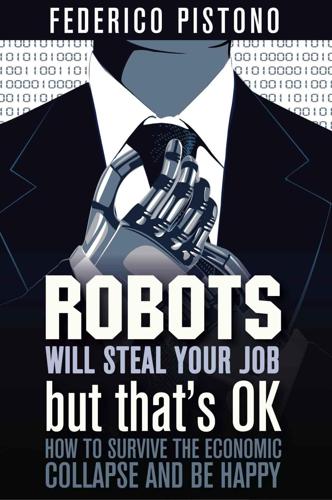
Robots Will Steal Your Job, But That's OK: How to Survive the Economic Collapse and Be Happy
by
Pistono, Federico
Published 14 Oct 2012
Watson could be fully capable of performing this task if there was ever the intention of doing so, and even then we would be using only a tiny fraction of its immense power. This is just the beginning. Watson-like technologies could be used for virtually anything: legal advice, city planning (IBM and Cisco are already working on smart cities),87 and why not policy-making?88 The Internet of Things is coming, and we had better be ready. Technology is becoming so cheap and so powerful it will be integrated into everyday objects, which will help us make better decisions. With all objects in the world equipped with minuscule identifying devices, daily life on Earth would undergo a transformation.89 Companies would not run out of stock or waste products, as involved parties would know which products are required and consumed.90 Mislaid and stolen items would be easily tracked and located, as would the people who use them.
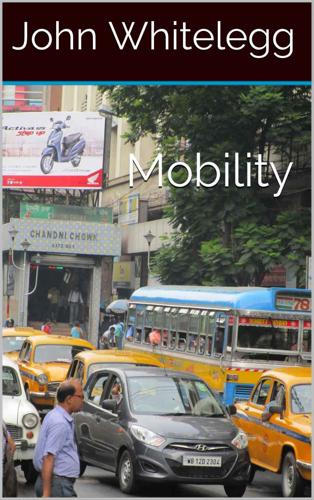
Mobility: A New Urban Design and Transport Planning Philosophy for a Sustainable Future
by
John Whitelegg
Published 1 Sep 2015
It is rather obvious that an energy policy should embrace a sector of energy consumption (transport) that is responsible for 22% of total energy use and that the opportunities offered by spatial planning and accessibility planning to reduce energy consumption as shown in the above table should be fully developed and implemented. This possibility is referred to in the European Commission (2013b, page 80) document: “The key challenges for Smart Cities and Communities are to significantly increase the overall energy efficiency of cities, to exploit better the local resource both in terms of energy supply as well as through the demand side measures.” Sadly, the enormous potential for transport policy, spatial planning and modal shift to increase energy efficiency of cities is absent in the energy policy R&D document.
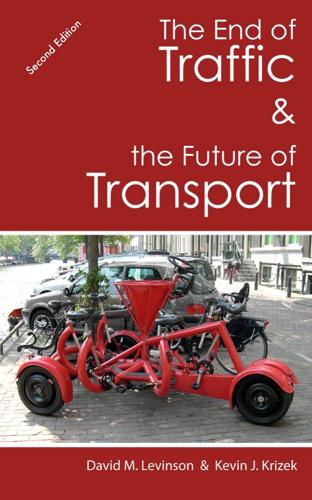
The End of Traffic and the Future of Transport: Second Edition
by
David Levinson
and
Kevin Krizek
Published 17 Aug 2015
The meta-data about your product will be as detailed as the product itself.206 Logistics firms have long used scanners to track goods through the distribution chain, with a high degree of success. That same level of knowledge is slowly percolating through public sector transport organizations. We no longer lump like things together without knowing where they came from, where they are going or who bought them. Under monikers such as 'smart cities' and 'civic hacking', the use of centrally available data has made inroads into the urban policy sphere, moving from an e-government tool that aimed to increase public sector transparency into new forms of public-private partnerships or urban laboratories that vest analysis and problem-solving in formal or informal institutional arrangements outside of city agencies.207 For many mobility options,208 we now have instantaneous knowledge of how soon a taxi or ridesharing service will provide a pick up.
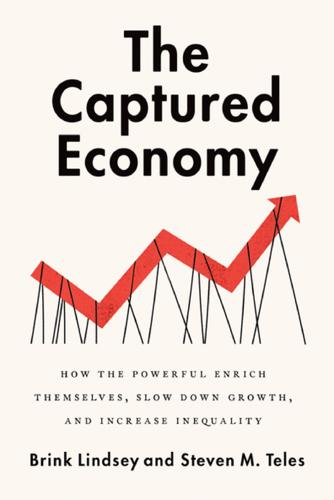
The Captured Economy: How the Powerful Enrich Themselves, Slow Down Growth, and Increase Inequality
by
Brink Lindsey
Published 12 Oct 2017
Unfortunately, these very same cities have led the way in constraining housing growth with ever more restrictive land-use regulation. Since the 1970s, college graduates have increasingly tended to congregate in particular urban areas—namely, those that started out with initially high shares of college grads. In other words, education levels in American cities have diverged over time. The smart cities get smarter while other cities fall farther and farther behind. To illustrate this phenomenon, Enrico Moretti of the University of California, Berkeley, cites the examples of Albuquerque, New Mexico, and Seattle, Washington. As it just so happens, the former metro area is where Microsoft was founded in 1975, while the latter has been the company’s headquarters since 1979 (when Bill Gates and Paul Allen made the fateful decision to move back to their hometown).
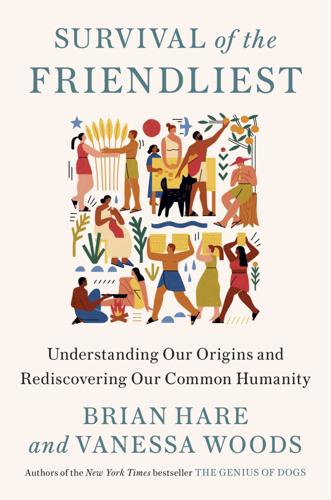
Survival of the Friendliest: Understanding Our Origins and Rediscovering Our Common Humanity
by
Brian Hare
and
Vanessa Woods
Published 13 Jul 2020
The Millennium Project75 is a think tank that ranks the fifteen biggest global challenges every year. For almost every challenge, the Millennium Project proposes solutions involving technology. Climate change causing havoc? Switch to renewable energy and retrofit fossil fuel plants to reuse CO2. Overpopulation bursting the earth at the seams? Build eco-smart cities, grow steak in a petri dish from stem cells, and genetically engineer high-yield drought-resistant crops. Need to make education universal? Develop scalable software for children anywhere in the world to teach themselves reading, writing, and math online in eighteen months flat.76 But as Tim Cook, the CEO of Apple, said, “technology alone isn’t the solution.
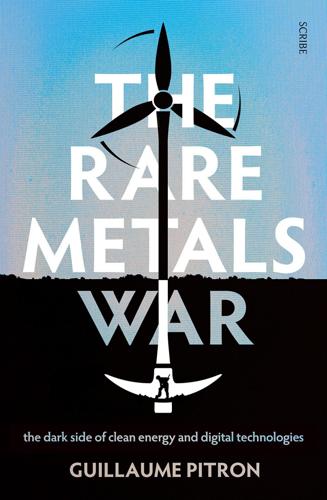
The Rare Metals War
by
Guillaume Pitron
Published 15 Feb 2020
And the once-distinct functions of green and digital technologies are beginning to converge. Indeed, increasingly sophisticated software and algorithms used in ‘smart grids’ make it possible to regulate fluctuations in the flow of electricity between producers and consumers. This is precisely what the 80 million smart meters already installed in the US are doing. In the smart cities of tomorrow, which will combine green and digital technologies, we will save up to 65 per cent of the electricity we use today, thanks to sensor-embedded streets that adjust the lighting to foot traffic, while weather-prediction software makes solar panels 30 per cent more efficient. Thus, digitalisation and the energy transition are co-dependent.
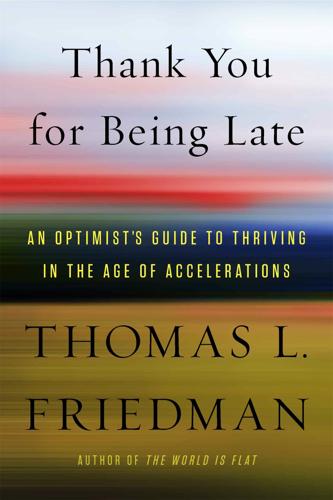
Thank You for Being Late: An Optimist's Guide to Thriving in the Age of Accelerations
by
Thomas L. Friedman
Published 22 Nov 2016
They are also portable tools that can turn AI into IA in remarkable new ways so that so many more people, no matter how educated or dexterous, can live above the average adaptability line—and even thrive there. Consider what it is to be a janitor today at the Qualcomm campus in San Diego. Hint: thanks to intelligent assistants, it’s become a knowledge worker job. Ashok Tipirneni, director of product management for Qualcomm’s Smart Cities project, explained to me why: Qualcomm has created a business in showing companies how they can retrofit wireless sensors to every part of their buildings in order to generate a real-time, nonstop sort of EKG or MRI of what is going on deep inside every one of their buildings’ systems. To create a demonstration model, Tipirneni started with six buildings at Qualcomm’s Pacific Center Campus in San Diego, which included parking garages, office spaces, and food courts; the area was about a million square feet in total and used by about 3,200 people.
…
.; Armed Services Committee of Senegal sensors; in consumer electronics; in dairy farming; definition of; locomotives and September 11, 2001, terrorist attacks Serious Man, A (film) Serra Cafema Camp, Namibia Sevareid, Eric sexism Shankar, Sadasivan Sharef, Eleonora sharing economy, trust and Sharon, Ariel Shehata, Zyad Shimizu, Diana Showtime Silver Shirts Sims, Zach Singapore Singh, Prabhjot Sirosh, Joseph skill sets: basic; college degrees and; intelligent assistance and; intelligent assistants and; social; workforce and Skype Slack (messaging app) Sleiman, Ghada Smart Cities project smart machines smartphones Smith, Lee “SMOP” problems social capital, trust as social media; constructive vs. destructive aspects; flow of information on; see also specific platforms social safety net, portability of Social Security social skills social technologies; in age of accelerations; global flows and; innovation in; technological change and; trust and software; APIs and; function of; networking and; open-source, see open-source software software innovation: big data and; collaboration and; computer memory and; integrated circuits and; Microsoft and; Moore’s law and solar energy Solidarity movement Soloway, Jill Solyndra Somalis: in Minnesota; as pirates Somé, Batamaka “Someone Like You” (song) Sony SourceForge South Africa South Carolina South China Sea Southeast Asia South Korea South Vietnam Soviet Union; collapse of space race Spano, Jake Spengler, Oswald spoofing spread spectrum stability, stasis vs.
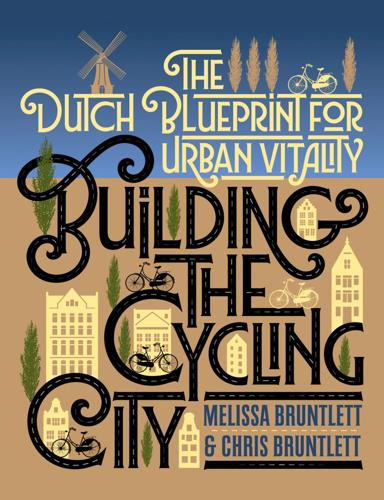
Building the Cycling City: The Dutch Blueprint for Urban Vitality
by
Melissa Bruntlett
and
Chris Bruntlett
Published 27 Aug 2018
While Dierenfield and her team were not allowed to participate directly in the election campaign, the benefits were well documented in the adopted plan, the news of which advocates were more than happy to spread far and wide. To complement their efforts, Austin mayor Steve Adler declared 2016 the “Year of Mobility,” and in the spring, he participated in a study tour of the Netherlands, Denmark, and Norway. Funded by the US Department of Transportation’s “Smart City Challenge,” Adler was joined by Austin’s transportation director Robert Spillar and US transportation secretary Anthony Foxx, who were photographed pedaling e-bikes on the streets of Amsterdam. “Most people aren’t going to get out of their cars anytime soon in Austin,” Adler reflected in a blog post.
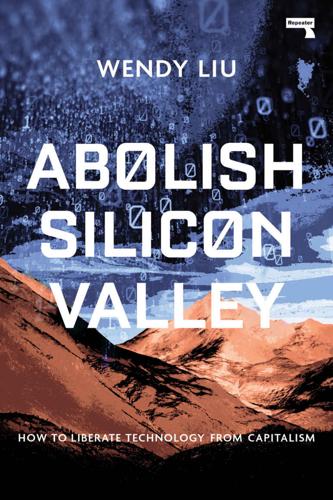
Abolish Silicon Valley: How to Liberate Technology From Capitalism
by
Wendy Liu
Published 22 Mar 2020
cntn_id=100660. 14 See https://medium.com/transit-app/welcome-to-scootopia-we-now-aggregate-all-electric-scooters-c31c7337d5e6. 15 I came across this suggestion in an interview with Aza Raskin, who co-founded the Center for Humane Technology, in issue 20 of Offscreen. 16 See, for example, “The Making of a YouTube Radical” by Kevin Roose for the New York Times, published June 8, 2019 at https://www.nytimes.com/interactive/2019/06/08/technology/youtube-radical.html. 17 See “Barcelona is Leading the Fightback Against Smart City Surveillance” by Thomas Graham for WIRED, published May 18, 2018 at https://www.wired.co.uk/article/barcelona-decidim-ada-colau-francesca-bria-decode. 18 Senator Warren published details of the plan via Medium on March 8, 2019, at https://medium.com/@teamwarren/heres-how-we-can-break-up-big-tech-9ad9e0da324c. 19 Although the underlying protocols are open, and although web browsers typically rely on open source technology, most browser usage falls under the purview of private corporations who are able to build moats through integrations with their other products.
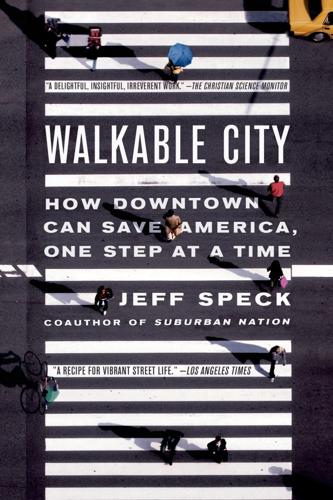
Walkable City: How Downtown Can Save America, One Step at a Time
by
Jeff Speck
Published 13 Nov 2012
After all, the corporation that dumps Philly for Indy thanks to a 5 percent tax cut will happily run off to Cincy for 7.5—and perhaps to Tijuana soon thereafter. Cities whose economic-development strategy is a corporate-capture strategy are typically those whose economic development director and planning director don’t talk to each other. The smart cities, like Lowell, hire a director of planning and development, who is first charged with creating a city where people want to be. Rather than trying to land new office tenants in a shrinking office market, this person understands that future economic growth will take place where the creative people are, and then works to lure more residents downtown.
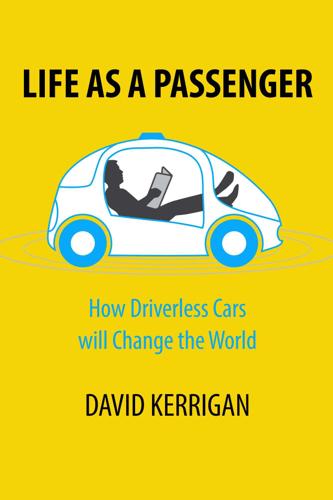
Life as a Passenger: How Driverless Cars Will Change the World
by
David Kerrigan
Published 18 Jun 2017
But in an early example of political lobbying, representatives of motoring interests held most of the leading positions on the committees that worked out the new principles of traffic and determined what would become the new normal for our streets. The Car and Urban Development “I believe mayors, planners and developers have done untold damage to cities in the name of private automobiles that we’ll still be grappling with a century from now” Anthony Townsend, Author, Smart Cities [24] By 2020, the UN estimates that 82.5 percent of Americans will live in urban areas.[25] But the human migration to being a predominantly urban species is a relatively recent phenomenon. The cities of today are a far cry from those that first greeted the car. Cities then were much smaller, largely constrained by available modes of transport - horses and walking.
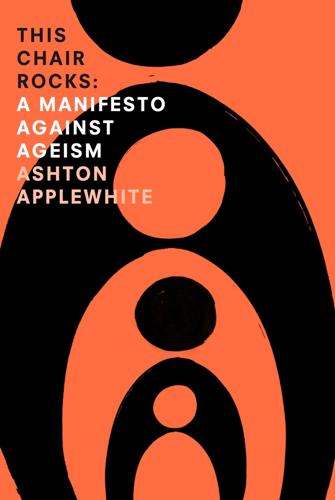
This Chair Rocks: A Manifiesto Against Ageism
by
Ashton Applewhite
Published 10 Feb 2016
Millions of people will join olders in becoming unemployable through no fault of their own. Where will the money come from to buy goods and services that are no longer produced by human labor? We need to think now about how to avert a dystopian future and develop new banking and barter systems, “smart cities,” sustainable ecosystems, and solutions that work for all of humanity. Incorporating a third generation, and even a fourth one, into the workforce is only one component of solving this problem. It’s going to require all hands on deck. CHAPTER SEVEN LONG LIFE IS A TEAM SPORT – THE INDEPENDENCE TRAP My best friend, Virginia, has two daughters.
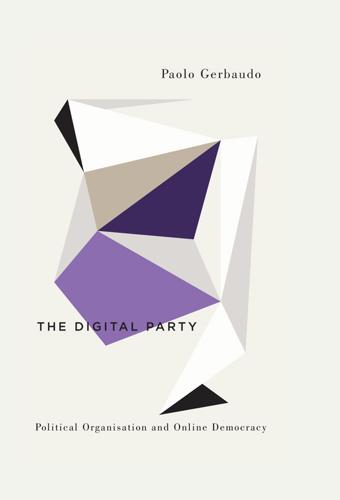
The Digital Party: Political Organisation and Online Democracy
by
Paolo Gerbaudo
Published 19 Jul 2018
In their techno-optimistic vision, Pirate Parties have often argued for a rapid diffusion of technological innovations, reforming antiquated laws on copyright and patents, providing people with free internet connection and facilitating a transformation of society with the support of digital tools. This techno-optimism is also visible in the Five Star Movement. One of the highlights of the M5S 2018 election campaign was the promise of making Italy a ‘Smart Nation’, an adaptation of the famous notion of smart cities. In this vision, Italy, one of the most technologically underdeveloped countries in the Organisation for Economic Co-operation and Development (OECD) group, will eventually shake years of inaction and sclerotisation and become attractive to digital companies of all sorts. Although not as techno-optimistic as the Pirates and the Five Star Movement, Podemos has also taken a quite positive stance on the promise of technology especially in regards to renewable energy.
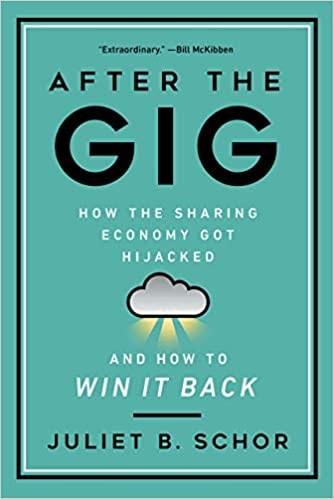
After the Gig: How the Sharing Economy Got Hijacked and How to Win It Back
by
Juliet Schor
,
William Attwood-Charles
and
Mehmet Cansoy
Published 15 Mar 2020
Working Papers 403, Princeton University, Department of Economics. https://dataspace.princeton.edu/jspui/bitstream/88435/dsp014t64gn18f/1/30a.pdf. Associated Press. 2017. “Uber to Pay $20m over Claims It Misled Drivers over How Much They Would Earn.” The Guardian, January 19, 2017. Attoh, Kafui, Katie Wells, and Declan Cullen. 2019. “ ‘We’re Building Their Data’: Labor, Alienation, and Idiocy in the Smart City.” Environment and Planning D: Society and Space, June. https://doi.org/10.1177/0263775819856626. Attwood-Charles, William. 2019a. “Dimensions of Platform Labor Control and the Experience of Gig Couriers.” Unpublished paper. Boston College. ———. 2019b. “We Are Creatives: Symbolic Inefficacy and the Decoupling of Meaning from Practice.”
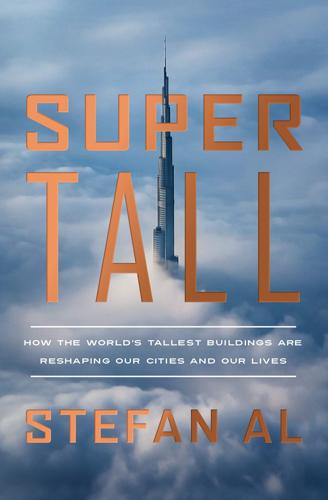
Supertall: How the World's Tallest Buildings Are Reshaping Our Cities and Our Lives
by
Stefan Al
Published 11 Apr 2022
The vast majority of buildings will become greener only if regulations both force and incentivize them to do so. Change is coming; however, there is potential for trouble. For instance, as much as outfitting buildings with sensors helps monitor and optimize energy efficiency, they are also adding prying mechanical eyes to our lives. Smart cities and buildings have the dangerous potential to invade privacy, dooming us to live in George Orwell’s 1984. Experimentation comes with risk. Yet, without new proposals, we cannot change the status quo. The story of the supertall tells us we should not let our surroundings be the sole influence on what we think is possible.
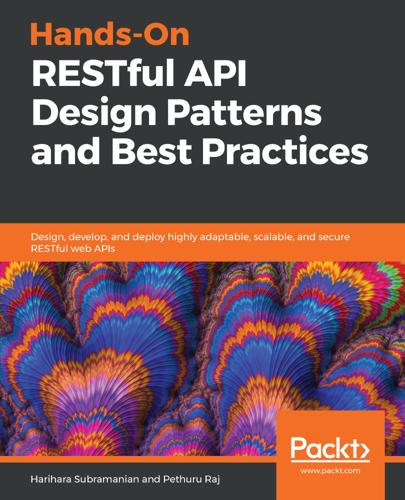
Hands-On RESTful API Design Patterns and Best Practices
by
Harihara Subramanian
Published 31 Jan 2019
The IoT idea is permeating quickly and becoming pervasive and persuasive too. With the continued spread and adoption of the IoT paradigm, the business and IT worlds are going to be bombarded with a number of premium IoT applications and services. The various industry domains, including manufacturing, retail, energy, healthcare, smart cities, government, defense, utility, and logistics, are meticulously exploring, and experimenting with, various IoT technologies and tools in order to get ahead of their competitors. A dazzling array of pioneering IoT use cases are being illustrated by the various industry segments in order to be correct and relevant to their loyal consumers.
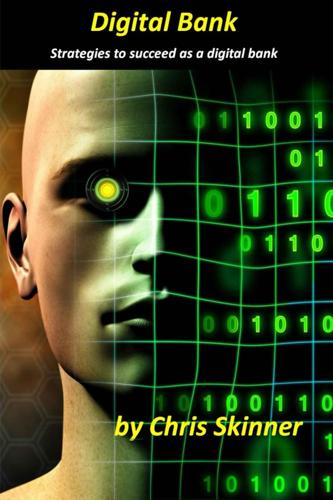
Digital Bank: Strategies for Launching or Becoming a Digital Bank
by
Chris Skinner
Published 27 Aug 2013
This Big Data will come from different sources: conversations on social networks, credit card transactions, social reputations like Klout, etc. Another trend will be the evolution of loyalty programs based on mobile, location and gamification, like the foursquare of banking. For the long term, the concept of smart cities and the internet of things will allow us to attach financial services everywhere, because everything will be connected in all metropolitan areas, making transactions easier for customers, merchants and city services. About Pol Navarro Pol Navarro is a highly qualified digital business, customer service and ecommerce strategist, and recognized thought leader, speaking internationally on several Banking, Mobile and Internet conferences.
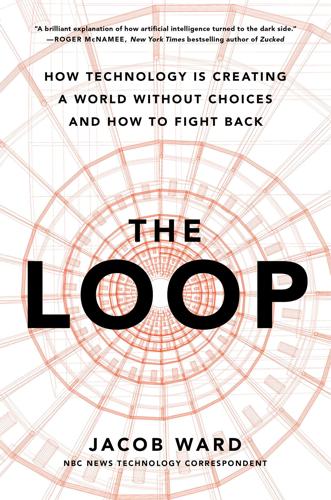
The Loop: How Technology Is Creating a World Without Choices and How to Fight Back
by
Jacob Ward
Published 25 Jan 2022
“One of the things that is so brilliant about China’s AI strategy is that they’re not just building it for themselves,” he continued. “In the same way that the soviets gave away boxes of AK-47s to other countries to get in bed with them, China is giving countries in Africa and Asia access to artificial intelligence technology that allows them to build totalitarian police states.” In 2014, China’s “smart cities” initiative began blanketing more than five hundred domestic cities in everything from traffic-monitoring sensors to cameras that feed images through police-monitored facial-recognition systems. And in the last few years, it has begun to export that technology to the capital cities of countries like Ecuador, Kazakhstan, and Nigeria.
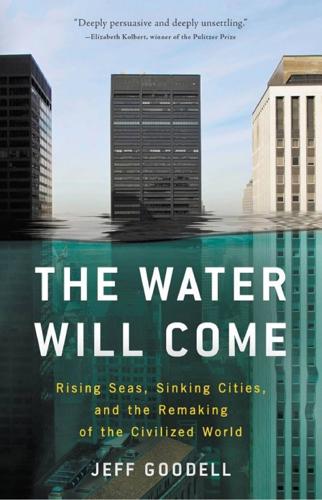
The Water Will Come: Rising Seas, Sinking Cities, and the Remaking of the Civilized World
by
Jeff Goodell
Published 23 Oct 2017
For people who live in coastal cities, dealing with sea-level rise will require a lot of difficult choices, including in which neighborhoods to invest in new infrastructure, where to build seawalls, which historic structures to save and which to let go (“You can only save so many lighthouses,” Lisa Craig, the chief of historic preservation in Annapolis, Maryland, told me). Smart cities will develop master plans, articulate long-term strategic visions, revise zoning ordinances, pass tax incentives to shift development to higher ground. But that’s just a start. Of all the hard decisions people who live on vulnerable coasts will have to face, the most difficult one is the idea of retreat.
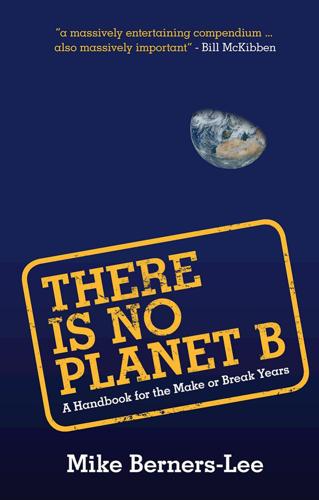
There Is No Planet B: A Handbook for the Make or Break Years
by
Mike Berners-Lee
Published 27 Feb 2019
Happily, there is room for both. E-bikes make practical a whole new range of low carbon journeys that are not possible on a conventional bike. They stand to relieve congestion, pollution and noise, and use radically less energy than all the fourwheel alternatives. They are, for example, a massive opportunity for smart city businesses. Having a fleet of these will help your staff turn up to meetings on time, uncrumpled, sweat free, and probably happier, whilst you save money on the side. One note of caution, however. There will need to be a new level of attention turned to cycle safety. At the high powered end of the scale, an e-bike could be as fast and dangerous as a motorbike, as well as harder for pedestrians to hear coming.
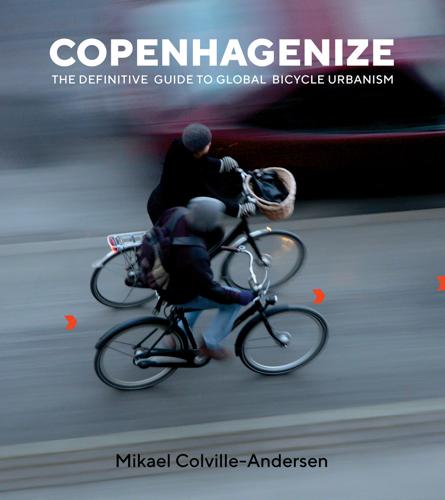
Copenhagenize: The Definitive Guide to Global Bicycle Urbanism
by
Mikael Colville-Andersen
Published 28 Mar 2018
Engineering responded to the immediate needs of the people who were living there and worked in tandem with them. Necessity was the mother of invention, as it should be. Although no longer, it would seem. We live in an overly tech-horny world where we invent things because we can, not because we actually need them. No one has been able to explain to me what the phrase “smart cities” is supposed to mean. Believe me, I have asked. It’s a fancy, seductive catchphrase but one without any specific definition. In order to plan for our urban future, we need to look closely at our urban past. A few years ago I was watching Back to the Future with my son, who was nine at the time.
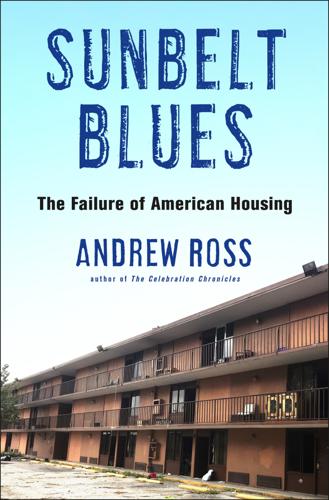
Sunbelt Blues: The Failure of American Housing
by
Andrew Ross
Published 25 Oct 2021
Just before the pandemic, the county’s courting of corporations in South Korea appeared to pay off when the electronics giant LG announced its interest in building a twenty-five-acre “smart town center” in NeoCity. But that still leaves most of the five-hundred-acre site to fill. Laura Kinsler, “Osceola Consultant Says LG’s $800M Smart City Is a Go,” GrowthSpotter, February 6, 2020, https://www.growthspotter.com/news/osceola-county-developments/gs-news-lg-neocity-report-20200206-vglicxbc35hovaolc3wgryfkuq-story.html. 37. In 2017, phase one of Tavistock’s master plan for Sunbridge had to be amended when Osceola officials concluded that its ratio of commercial to industrial land use was too high, and therefore likely to yield yet another concentration of retail or service-sector jobs.
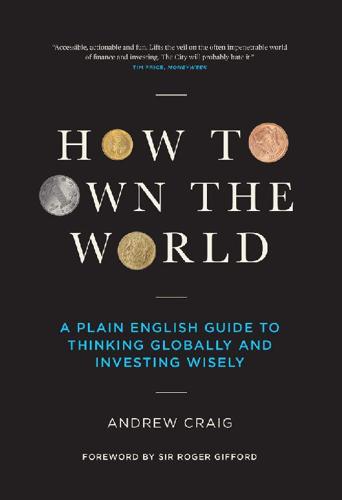
How to Own the World: A Plain English Guide to Thinking Globally and Investing Wisely
by
Andrew Craig
Published 6 Sep 2015
This means that there are relatively few who are able, or even inclined, to see the big picture – and it is truly the big picture that you need for consistent investment success. Many investment professionals are just like doctors who tell you how bad drinking and smoking are and then nip to the pub for several drinks and a few cigarettes at the end of their day. Over the years, I have lost count of the number of smart City folk I know who have all their money in the one asset class they know about, with the result that they are heavily punished during any bad year for that asset class. At the risk of being a little on the repetitive side, I must reiterate that one of the most successful investing strategies over many years is being properly diversified.
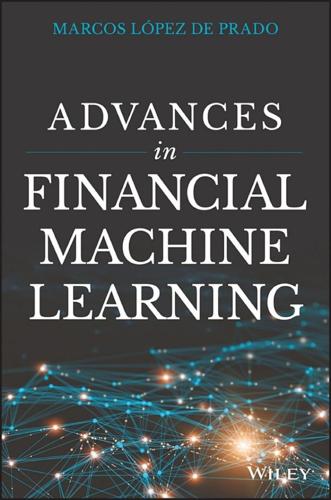
Advances in Financial Machine Learning
by
Marcos Lopez de Prado
Published 2 Feb 2018
R., et al. (2010): “Performance analysis of high performance computing applications on the Amazon Web Services Cloud. Cloud Computing Technology and Science (CloudCom). 2010 Second International Conference. IEEE. Kim, T. et al. (2015): “Extracting baseline electricity usage using gradient tree boosting.” IEEE International Conference on Smart City/SocialCom/SustainCom (SmartCity). IEEE. Kumar, V. et al. (1994): Introduction to Parallel Computing: Design and Analysis of Algorithms. Benjamin/Cummings Publishing Company. Liu, Q. et al., (2014): “Hello ADIOS: The challenges and lessons of developing leadership class I/O frameworks.” Concurrency and Computation: Practice and Experience, Volume 26, No. 7, pp. 1453–1473.
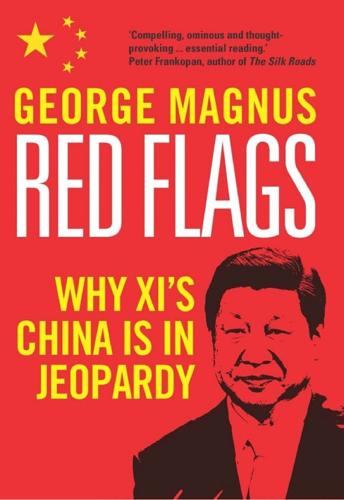
Red Flags: Why Xi's China Is in Jeopardy
by
George Magnus
Published 10 Sep 2018
Several other companies are well known internationally, such as ZTE, which is also in telecommunications, and China Telecom, China Unicom, and China Mobile in broadband and communications. Xiaomi, which designs and sells smartphones, mobile apps and laptops is a global top five company in smartphones. Alibaba, the e-commerce giant, has a cloud subsidiary that is working on smart cities. Tencent and Baidu, which are internet services companies, are exploring medical imaging and facial recognition, and autonomous vehicles, respectively. Lenovo computers, Air China, and Moutai, the beverage company, also exemplify Chinese companies that got big in China and turned their attention to foreign markets.

The Industries of the Future
by
Alec Ross
Published 2 Feb 2016
Things like knowing exactly when the train will come, being able to go online instead of standing in line to access a government service, and being able to provide real-time feedback that informs how and when city services are delivered. The capability for doing this skews toward very large cities and increasingly involves big data, according to Stephen Goldsmith, a professor and director of the Innovations in American Government Program at Harvard’s Kennedy School of Government. He directs Data-Smart City Solutions, a project “focused on government efforts to use and blend new technologies, big data analytics and community input.” As cities get tech savvy, this effectively means that global centers with lots of money and the capabilities Goldsmith describes (like New York City, Dubai, London, San Francisco, Tokyo, and Seoul) are those likely to build big data applications that are highly appealing to citizens, and this attracts the “next economy” class.
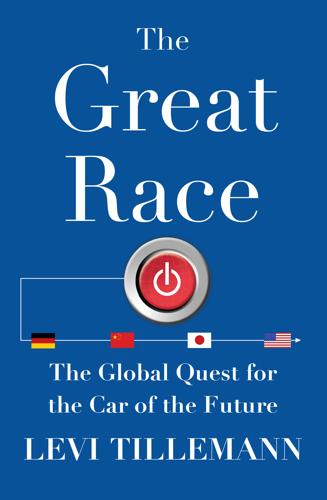
The Great Race: The Global Quest for the Car of the Future
by
Levi Tillemann
Published 20 Jan 2015
Breakthroughs in sensor technology, computer processing power, batteries, chemistry, and elsewhere have laid the groundwork for a future of cars that are smaller, faster, safer, cleaner, and dramatically more efficient; a future not only of electric vehicles, but one that is strikingly reminiscent of the GM-SAIC vision of 2030 at the Shanghai Expo in 2010 (see chapter 1). Clean, smart cities will be navigated by autonomous electric vehicles that zip to and fro while occupants spend their time as they please. It is a future where the blind will drive, mobile offices will become a part of our daily lives, and the concept of a commute will change fundamentally. There are a number of key technological and social signposts that provide clues to how this system is likely to evolve.
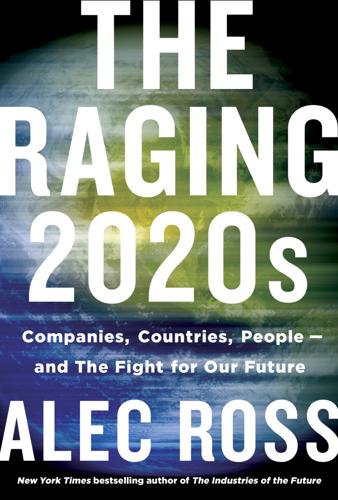
The Raging 2020s: Companies, Countries, People - and the Fight for Our Future
by
Alec Ross
Published 13 Sep 2021
Local governments started pouring funds into AI start-ups, and industry partnerships began to form. The following month, the government drafted a “national AI team,” selecting four domestic companies to take the lead in strategic AI fields including autonomous vehicles (Baidu), medical imaging (Tencent), natural language processing (iFLYTEK), and smart city technology (Alibaba). By August 2019, the team had expanded to fifteen members, each with its own area of expertise. These national champions are granted special access to government funds and databases. They collaborate with one another in a manner that does not exist in a serious way in Silicon Valley, sharing research insights and setting standards for the Chinese AI ecosystem.
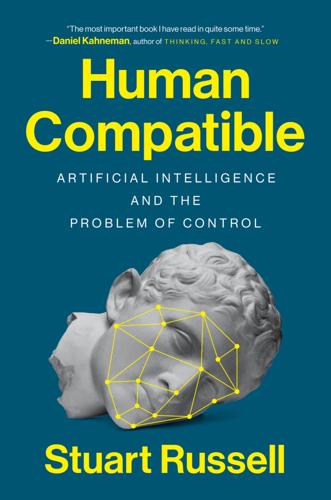
Human Compatible: Artificial Intelligence and the Problem of Control
by
Stuart Russell
Published 7 Oct 2019
For example, from global satellite data feeds, it should be possible to create detailed models for managing the global environment, predicting the effects of environmental and economic interventions, and providing the necessary analytical inputs to the UN’s sustainable development goals.26 We are already seeing “smart city” control systems that aim to optimize traffic management, transit, trash collection, road repairs, environmental maintenance, and other functions for the benefit of citizens, and these may be extended to the country level. Until recently, this degree of coordination could be achieved only by huge, inefficient, bureaucratic hierarchies of humans; inevitably, these will be replaced by mega-agents that take care of more and more aspects of our collective lives.

Age of Anger: A History of the Present
by
Pankaj Mishra
Published 26 Jan 2017
Rather, Xi Jinping, Modi, Putin and Erdogan retrofit old-style nationalism for their growing populations of uprooted citizens, who, like the Germans and Italians of the nineteenth century, have unfocused and often self-contradictory yearnings for belonging, identity and community, as well as for individual autonomy, material affluence and national power. The demagogues promise security in a radically insecure world. And so their self-legitimizing narratives are unavoidably hybrid: Mao-plus-Confucius, Holy Cow-plus-Smart Cities, Putinism-plus-Orthodox Christianity, Neo-liberalism-plus-Islam. * * * ISIS, too, offers a postmodern collage rather than a coherent doctrine. Born from the ruins of two nation states that dissolved in sectarian violence, it is a beneficiary, along with mafia groups, human traffickers and drug lords, of the failure of governments to fulfil their basic roles: to create or maintain a stable political order, protect their citizens from external turbulence, including unruly economic and migratory flows as well as foreign invaders, and maintain a monopoly on violence.
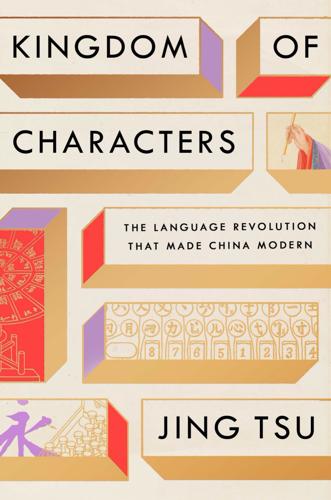
Kingdom of Characters: The Language Revolution That Made China Modern
by
Jing Tsu
Published 18 Jan 2022
Deep neural networks are being trained on China’s ever-growing volume of data. Chinese tech giant Baidu has become a leader in machine translation and natural language processing, while Tencent sits on a wealth of data gathered through WeChat and its video gaming platforms. From health care to smart cities, education to social control, the Chinese state’s priority under its current leadership is to implement, if not to perfect, its vision of global governance. The country now enjoys a level of confidence it did not have for two centuries. China is no longer trying to catch up to anyone—except the future it sees for itself.
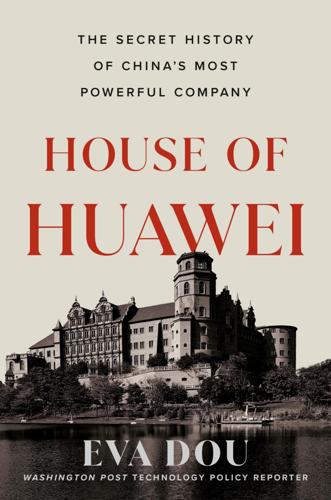
House of Huawei: The Secret History of China's Most Powerful Company
by
Eva Dou
Published 14 Jan 2025
New York and other cities are using advanced data analysis to achieve historic reductions in crime.”[20] Later on, during the Black Lives Matter protests and amid scrutiny over ingrained racial bias in policing, IBM would walk back its marketing about its technology’s ability to predict crimes. But at the time, the idea was alluring to many governments. As IBM traveled around China promoting Smarter Cities in 2009, China’s premier, Wen Jiabao, also gave the concept his seal of approval.[21] That year, Huawei launched its own versions, which it called “Smart Cities” and “Safe Cities.” * * * — In December 2011, Ren, sixty-seven, announced he was stepping back to allow younger hands to steer the company. “I increasingly don’t understand the technology, increasingly don’t understand finance, and only half understand management,” he told his staff.

Mood Machine: The Rise of Spotify and the Costs of the Perfect Playlist
by
Liz Pelly
Published 7 Jan 2025
Sanger, “Microsoft Says It Will Sell Pentagon Artificial Intelligence and Other Advanced Technology,” New York Times, October 26, 2018, https://www.nytimes.com/2018/10/26/us/politics/ai-microsoft-pentagon.html 13 Morgan Meaker, “A battlefield AI company says it’s one of the good guys,” Wired, July 20, 2023, https://www.wired.com/story/helsing-ai-military-defense-tech/; Daniel Ek and Tom Enders, “Europe’s need to catch up with software-led New Defense,” Politico, June 10, 2022, https://www.politico.eu/article/europes-need-to-catch-up-with-software-led-new-defense/; Abigail Velez, “Musicians protest at SXSW, demanding ‘no ties’ with military contractors,” CBS Austin, March 15, 2024, https://cbsaustin.com/news/local/musicians-boycotting-sxsw-host-protest-and-rally. 14 “The Future of Digital Experiences in the Smart City | BlackBerry Summit 2023,” YouTube video posted by BlackBerry, January 6, 2024, https://www.youtube.com/watch?v=Rdd3_TCLmC8. 13 The First .0035 Is the Hardest 1 Don Giovanni Records tweet: https://x.com/DonGiovanniRecs/status/1050488619247591424. 2 Spotify’s own explanation of how it pays artists: https://support.spotify.com/us/artists/article/royalties/. 3 For a summary of the UN music streaming report: https://weareumaw.org/un-report. 4 Howie Singer and Bill Rosenblatt, Key Changes: The Ten Times Technology Transformed the Music Industry (Oxford, 2023). 5 Chris Cooke, Dissecting the Digital Dollar: Third Edition (Music Managers Forum, 2020). 6 Cooke, Dissecting the Digital Dollar; Meredith Rose, “Streaming in the Dark: Where Music Listeners’ Money Goes—and Doesn’t,” Public Knowledge, May 2023, https://publicknowledge.org/policy/streaming-in-the-dark-where-music-listeners-money-goes-and-doesnt/. 7 Damon Krukowski, “Making Cents,” Pitchfork, November 14, 2012, https://pitchfork.com/features/article/8993-the-cloud/. 8 Larry Fitzmaurice, “How Indie Artists Actually Make Money in 2019,” Vulture, April 8, 2019, https://www.vulture.com/2019/04/how-indie-artists-actually-make-money-in-2019.html. 9 “The First Ever Musicians’ Census Report Launched,” September 11, 2023, https://www.helpmusicians.org.uk/about-us/news/the-first-ever-musicians-census-report-launched. 10 “Inaugural Music Industry Research Association (MIRA) Survey of Musicians Executive Summary” press release, https://psrc.princeton.edu/sites/g/files/toruqf1971/files/resource-links/report_on_mira_musician_survey.pdf. 11 “Modernizing Our Royalty System to Drive an Additional $1 Billion Toward Emerging and Professional Artists,” Spotify for Artists blog, November 21, 2023, https://artists.spotify.com/en/blog/modernizing-our-royalty-system; for the 86% stat, see: instagram.com/weareumaw/p/C5T7yIduStW/. 12 Dan Rys, “Lucian Grainge Calls for ‘Updated Model’ for Music Industry: Read His Memo to UMG Staff,” Billboard, January 11, 2023, https://www.billboard.com/pro/lucian-grainge-umg-full-staff-memo-2023-read-message/; Anna Nicolaou, “The Incredible Resilience of the Music Industry,” Financial Times, September 8, 2023, https://www.ft.com/content/b85ab5af-bd03-4da8-971a-316e7c7897dc. 13 Stuart Dredge, “UMG Boss Slams Artist-Centric Critics as ‘Merchants of Garbage,’ ” Music Ally, October 27, 2023, https://musically.com/2023/10/27/umg-boss-slams-artist-centric-critics-as-merchants-of-garbage/. 14 Paul Resnikoff, “Spotify Executive Calls Artist ‘Entitled’ for Requesting Payment of One Penny Per Stream,” Digital Music News, June 29, 2021, https://www.digitalmusicnews.com/2021/06/29/spotify-executive-entitled-pay-penny-per-stream/. 15 Spotify Investor Day 2018: https://investors.spotify.com/investor-day-2018-materials/default.aspx. 16 These numbers come from Spotify’s “Loud & Clear” report, https://loudandclear.byspotify.com/. 14 An App for a Boss 1 Taylor Swift, “For Taylor Swift, the Future of Music Is a Love Story,” Wall Street Journal, July 7, 2014, https://www.wsj.com/articles/for-taylor-swift-the-future-of-music-is-a-love-story-1404763219; Daniel Ek, “$2 Billion and Counting,” Spotify for Artists blog, November 12, 2014, https://artists.spotify.com/en/blog/2-billion-and-counting. 2 The Third Bridge Creative website includes the Spotify for Artists blog as a case study: https://www.thirdbridgecreative.com/strategy/b2c-content-marketing-for-creators. 3 Taylor Lorenz, “The Real Difference Between Creators and Influencers,” Atlantic, May 31, 2019, https://www.theatlantic.com/technology/archive/2019/05/how-creators-became-influencers/590725/. 4 Amanda Perelli, “The Creator Economy Is a $250 Billion Industry and It’s Here To Stay,” Business Insider, November 16, 2023, https://www.businessinsider.com/creator-economy-250-billion-market-and-here-to-stay-2023-11; Christine Muhlke, “For Content Creators, It’s the Wild West,” New York Times, December 6, 2023, https://www.nytimes.com/2023/12/06/business/dealbook/content-creator-economy.html. 5 Liz Pelly, “Playing in the Social Factory: An Interview with Astra Taylor,” The Media, September 11, 2015, http://www.fvckthemedia.com/issue61/astra-taylor. 6 Chris Anderson, The Long Tail: Why the Future of Business Is Selling Less of More (Hachette Books, 2006); Rupert Neate, “Daniel Ek profile: ‘Spotify will be worth tens of billions,’ ” Telegraph, February 17, 2010, https://www.telegraph.co.uk/finance/newsbysector/mediatechnologyandtelecoms/media/7259509/Daniel-Ek-profile-Spotify-will-be-worth-tens-of-billions.html; for the “one million artists making a living off of their music” quote, see Ek’s remarks at Spotify’s 2018 Investor Day: https://www.youtube.com/watch?
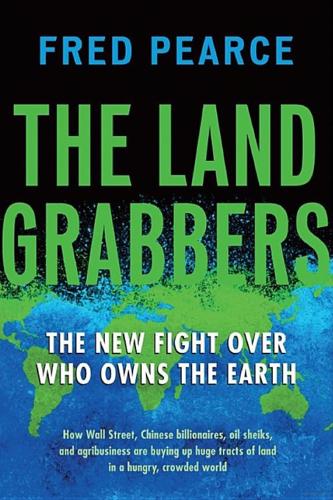
The Land Grabbers: The New Fight Over Who Owns the Earth
by
Fred Pearce
Published 28 May 2012
Or rather London and the cloud of tax havens that the last vestiges of the British Empire have bequeathed to the world: the Cayman Islands, British Virgin Islands, Isle of Man, and Channel Islands. I continued my tour of London’s land investors in a mews side street behind the rugby stadium in Twickenham, where I met the “Togo boys.” A group of smart city slickers with nice cars and stubbly chins got lucky with the West African government of tiny Togo. Togo is a generally peaceful country with what looks like elective dynastic rule. When Gnassingbe Eyadema, the victor in a 1960s military coup, died in 2005 after thirty-eight years in the job, his subjects were controversially declared to have elected his son to replace him.
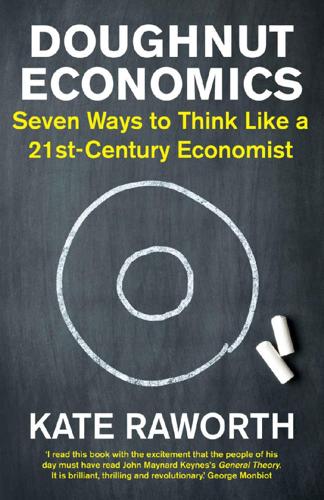
Doughnut Economics: Seven Ways to Think Like a 21st-Century Economist
by
Kate Raworth
Published 22 Mar 2017
Early pioneers include AXIOM, the open-source video camera for film makers, made by Apertuso (the ‘O’ stands for ‘open’), which uses standardised components so it can be customised, reassembled, and continually reinvented by its user community.40 Look, too, at the fast-evolving OSVehicle – the open-source future of 100% electric cars – whose parts can be quickly assembled to make an airport buggy, a golf cart, or even a smart city car.41 The OSVehicle was developed in Silicon Valley but open-source circular manufacturing is thriving in far more surprising places too. In the Togolese capital of Lomé, architect Sénamé Agbodjinou and colleagues set up Woelab in 2012, a ‘low-high tech’ workshop making its own design of open-source 3D printers using the component parts of defunct computers, printers and scanners that have been dumped in West Africa.
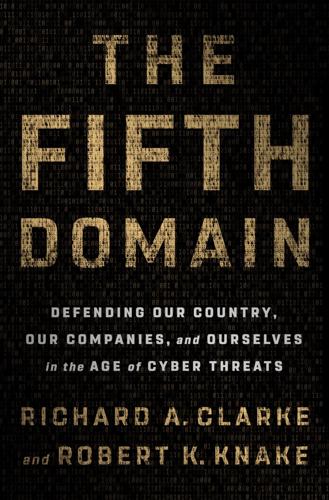
The Fifth Domain: Defending Our Country, Our Companies, and Ourselves in the Age of Cyber Threats
by
Richard A. Clarke
and
Robert K. Knake
Published 15 Jul 2019
The two Iranians wrote: “SamSam Subjects,” wanted poster, Federal Bureau of Investigation, accessed on January 15, 2019, www.fbi.gov/wanted/cyber/samsam-subjects. declined to pay the fifty-thousand-dollar demand: Chris Teale, “Atlanta Mayor Says Cyberattack Came as ‘Surprise’ to City, Residents,” Smart Cities Dive, May 11, 2018, www.smartcitiesdive.com/news/atlanta-cyberattack-surprise-Keisha-Lance-Bottoms/523323. Chapter 8: Is It Really You? “rely less and less on passwords”: Munir Kotadia, “Gates Predicts Death of the Password,” CNET, February 25, 2004, www.cnet.com/news/gates-predicts-death-of-the-password.
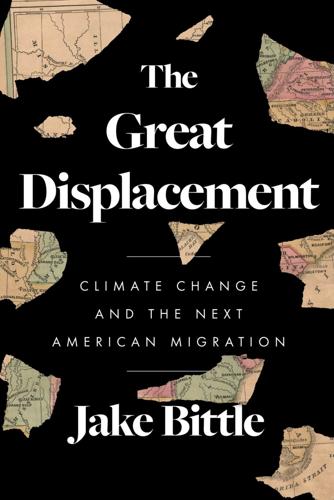
The Great Displacement: Climate Change and the Next American Migration
by
Jake Bittle
Published 21 Feb 2023
more than a foot since 1950: “Relative Sea Level Trend: 8638610 Sewells Point, Virginia,” NOAA Tides and Currents, accessed November 2021, https://tidesandcurrents.noaa.gov/sltrends/sltrends_station.shtml?id=8638610. faster than almost anywhere else in the country: Jon Loftis et al., “StormSense: A New Integrated Network of IoT Water Level Sensors in the Smart Cities of Hampton Roads, VA,” Marine Technology Society Journal 52, no. 2 (March 2018): 56–67. “park” in front of Norfolk: Dave Mayfield, “Gulf Stream Emerging as Sea Level Rise ‘Wild Card’ for Hampton Roads,” Virginian-Pilot, March 14, 2018. speckled with bug-filled swamps: Thomas Dahl and Gregory Allord, “History of Wetlands in the Conterminous United States,” from National Water Survey—Wetland Resources, US Geological Survey publication, 1996.
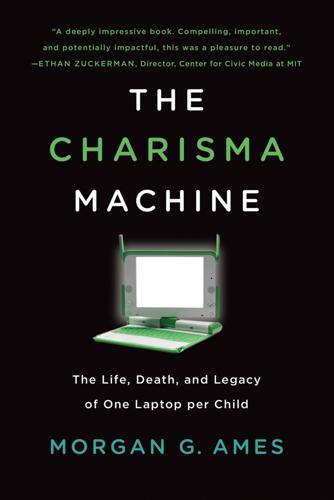
The Charisma Machine: The Life, Death, and Legacy of One Laptop Per Child
by
Morgan G. Ames
Published 19 Nov 2019
Pendleton-Jullian and John Seely Brown, Design Unbound: Designing for Emergence in a White Water World, Volume 2: Ecologies of Change Jordan Frith, A Billion Little Pieces: RFID and Infrastructures of Identification Morgan G. Ames, The Charisma Machine: The Life, Death, and Legacy of One Laptop per Child Mario Biagioli and Alexandra Lippman, eds., Gaming the Metrics: Misconduct and Manipulation in Academic Research Malcolm McCullough, Downtime on the Microgrid: Architecture, Electricity, and Smart City Islands Emmanuel Didier, translated by Priya Vari Sen, America by the Numbers: Quantification, Democracy, and the Birth of National Statistics Ryan Ellis, Letters, Power Lines, and Other Dangerous Things: The Politics of Infrastructure Security The Charisma Machine The Life, Death, and Legacy of One Laptop per Child Morgan G.
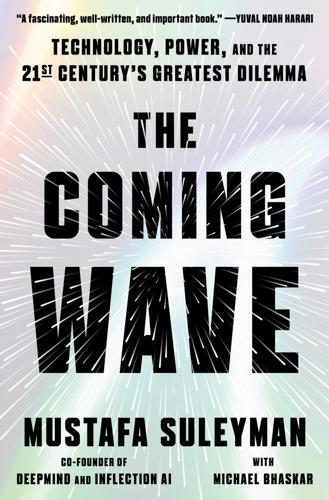
The Coming Wave: Technology, Power, and the Twenty-First Century's Greatest Dilemma
by
Mustafa Suleyman
Published 4 Sep 2023
The New Generation Artificial Intelligence Development Plan, announced just two months after Ke Jie was beaten by AlphaGo, was intended to harness government, the military, research organizations, and industry in a collective mission. “By 2030, China’s AI theories, technologies, and applications should achieve world-leading levels,” the plan declares, “making China the world’s primary AI innovation center.” From defense to smart cities, fundamental theory to new applications, China should occupy AI’s “commanding heights.” These bold declarations are not just empty posturing. As I write this, just six years after China released the plan, the United States and other Western nations no longer have an outsized lead in AI research.

Sunfall
by
Jim Al-Khalili
Published 17 Apr 2019
Eventually world governments and multinationals woke up to the desperate need for advanced cybersecurity systems, but not before the anonymous hacking of international cryptocurrency banking had brought the world markets crashing down in 2028, followed by the devastating cyberattack six months later on the AI system controlling London, one of the world’s first ‘smart cities’. That onslaught had infected many of the algorithms controlling the city’s transport, commerce and environmental infrastructures, sending ten million people back into the Stone Age for three weeks. These events prompted action and led to the development of the Sentinels, cybersecurity artificial intelligences that would continuously patrol the Cloud, hunting for anomalies, viruses and leaks.

User Friendly: How the Hidden Rules of Design Are Changing the Way We Live, Work & Play
by
Cliff Kuang
and
Robert Fabricant
Published 7 Nov 2019
Whether or not the project ultimately succeeds in its grandest goals—which extend at least another decade into the future—it is still a bellwether for design and technology, and for a world where your environment would be every bit as important as the device in your hand. The Regal Princess was nothing if not the smart city advertised endlessly by companies such as IBM—a place where the smartphone had been taken to its logical endpoint, so that impulse and desire were always available, not just on a device but in the environment all around you. With your wearable tucked away, you didn’t have to go to the casino to gamble.

Across the Airless Wilds: The Lunar Rover and the Triumph of the Final Moon Landings
by
Earl Swift
Published 5 Jul 2021
Chapter 26 Chapter 27 Chapter 28 Chapter 29 Chapter 30 Chapter 31 Chapter 32 Chapter 33 Chapter 34 Chapter 35 Chapter 36 Part Five: A Painfully Trying Task Chapter 37 Chapter 38 Chapter 39 Chapter 40 Chapter 41 Chapter 42 Chapter 43 Chapter 44 Chapter 45 Chapter 46 Chapter 47 Chapter 48 Chapter 49 Chapter 50 Chapter 51 Chapter 52 Part Six: Across the Airless Wilds Chapter 53 Chapter 54 Chapter 55 Chapter 56 Chapter 57 Chapter 58 Chapter 59 Chapter 60 Chapter 61 Chapter 62 Part Seven: Tire Tracks Chapter 63 Chapter 64 Chapter 65 Chapter 66 Acknowledgments Notes Index Photo Section About the Author Also by Earl Swift Copyright About the Publisher Part One The Difference It Made 1 THE U.S. SPACE AND ROCKET CENTER ANNOUNCES ITSELF FROM miles away, with a needle against the sky that orients, at a glance, anyone in Huntsville, Alabama: if you can see the Saturn V, you can place where you are. The rocket towers 363 feet over an especially smart precinct of a smart city in a state largely uncelebrated for its smarts. Just to the north lies a University of Alabama campus big on science and engineering. Clustered nearby are dozens of high-tech companies doing business behind locked doors and security cameras. South of the Saturn V lies the magnet for this brainpower: the George C.

Greater: Britain After the Storm
by
Penny Mordaunt
and
Chris Lewis
Published 19 May 2021
Between 1960 and 1980, economic activity was dispersing across regions, reducing inequality. Since 1980, though, the trend has been in the opposite direction. And since 1960, the number of people living in cities globally has grown from 34 per cent to 56 per cent.60 More and more people are choosing to live in these hubs of activity, and this looks set to increase as smart cities develop, making them ever more energy-efficient and sustainable.61 The places we live are becoming more distinctive. If you’re rich, your neighbours are more likely to be rich than they were in the past, and the same is true if you’re less financially stable. Poorer neighbourhoods are more cut off, though, socially and geographically, from the sources of economic prosperity, making it harder to bridge the gap.
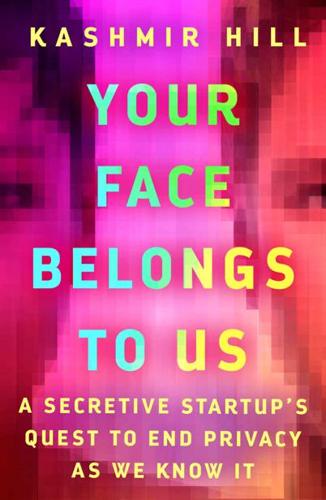
Your Face Belongs to Us: A Secretive Startup's Quest to End Privacy as We Know It
by
Kashmir Hill
Published 19 Sep 2023
The building’s housing board had not had any say in the matter, and the woman was trying to organize a movement among residents to rip out the system. Within an hour of the Times reaching out to the woman for an interview, local authorities contacted the newspaper’s office saying that they knew reporters were interested in their “smart city” initiative. They had evidently intercepted the messages. “We freaked out,” Mozur said. “We realized we didn’t have a lot of time to interview this woman. They are going to interfere with it.” To make sure he could not be tracked, Mozur turned off his phone and put it in a Faraday bag, a shielding mechanism that prevents signals being sent from or to a device inside.

Gambling Man
by
Lionel Barber
Published 3 Oct 2024
As he nursed his wounded pride, he latched on to a $50bn project to build a new capital of Indonesia, a futuristic city four times the size of Jakarta on a sparsely populated coastline on the island of Borneo. Indonesia’s President Joko Widodo, nicknamed ‘Jokowi’, was the driving force behind the new ‘smart city’. Called Nusantara after an old Javanese compound (‘outer sands’), the city would replace Jakarta, which was polluted, overpopulated and sinking into the sea because of an over-extraction of groundwater. Citizens would pay a service charge to live in the super-wired new capital, with a chunk of the money eventually ending in SoftBank’s pockets.1 Masa, an amateur sketcher and painter, fancied himself as an architect too.

Pirate Cinema
by
Cory Doctorow
Published 2 Oct 2012
Where are you? Do you need me to come and get you?" "They just sprung us. Sounds like your girlfriend's old man impressed the magistrate. After her hearing, the old darling started to ask the law some tough questions about just why we were being held. There was a fixer from the film industry there, some smart city boy lawyer, kept trying to say something, but the magistrate told him to sit down or he'd have him chucked out of the court. So we're sprung. Only one problem, son, Rabid Dog --" He breathed a deep breath, and I heard a ragged edge in it. "He's not in such good shape. I don't have money for a taxi, and I don't reckon Chester and me can get him home on our own on the bus."
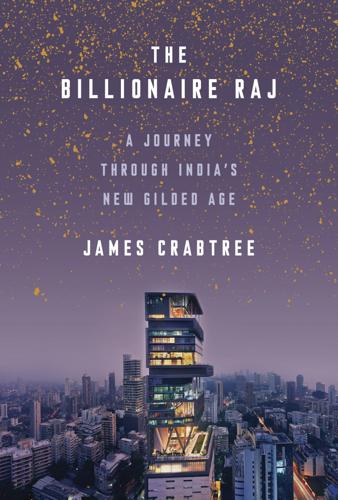
The Billionaire Raj: A Journey Through India's New Gilded Age
by
James Crabtree
Published 2 Jul 2018
Power cuts have grown rarer, foreign investment rules have been liberalized, and a few costly subsidy programs have been trimmed back. The prime minister has proved especially indefatigable in the production of initiatives: Swachh Bharat, to clean streets and build indoor toilets; “Digital India,” to boost online access; and “Skill India,” to train workers. There are to be a hundred “smart cities,” and a new $3 billion scheme to cleanse the sacred but filthy river Ganges. Most important is “Make in India,” a flashy program aiming to jump-start India’s struggling export sector by courting multinationals and fixing rules that have made it hard to run factories. A long-awaited national sales tax, the GST, has been brought in too, part of an effort to turn India into a single subcontinental economy, rather than a collection of twenty-nine separate states.
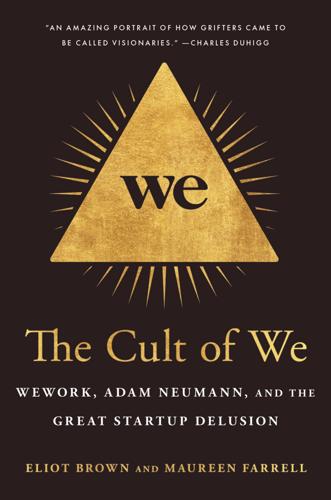
The Cult of We: WeWork, Adam Neumann, and the Great Startup Delusion
by
Eliot Brown
and
Maureen Farrell
Published 19 Jul 2021
Behind it all was a hush-hush plan to make a WeWork city within a city—an urban campus filled with WeWork office buildings, WeLive apartments, WeGrow schools, and anything else in the WeWork family. Bjarke Ingels drew up the master plan, while Roni Bahar was the main driving force for the concept. The vision was a multibillion-dollar collection of offices and apartments that would serve as a test ground of as-yet-unspecified technology, a kind of “smart city,” in which WeWork was angling to be a major player. They imagined a $7 billion development effort that would lead to space for more than thirty thousand new WeWork desks and five thousand WeLive apartments. Neumann was funding the purchases himself because, at this point, he sensed that justifying spending so much money on property for future development would be a hard sell to his investors.

The Controlled Demolition of the American Empire
by
Jeff Berwick
and
Charlie Robinson
Published 14 Apr 2020
Women, children, and babies are all subjected to heavily armed men in full combat gear, ready to tear apart families and put them on trucks to quarantine camps or worse. Fear of being grossly neglected and dying alone in hospitals. Fear of starving to death without government blackmail checks. The list goes on. INDOCTRINATION is another. Both actively by pumping the public full of patronizing nonsense, such as that a 5G city is a “smart city”, or passively, by removing any conflicting voices and calling it “conspiracy theories”. With the eruption of the race war, suddenly the public is not “in this together” anymore. Suddenly, it is every man for himself. Especially when it comes to deliberately destroying old ladies’ shops in the name of Anarchy!
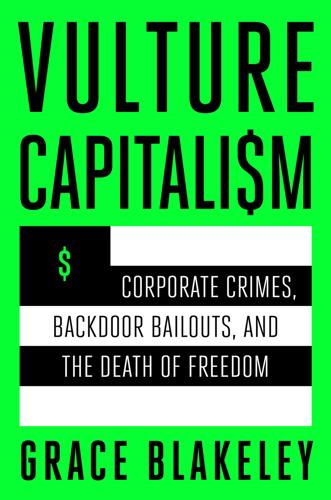
Vulture Capitalism: Corporate Crimes, Backdoor Bailouts, and the Death of Freedom
by
Grace Blakeley
Published 11 Mar 2024
In 2017 in Seattle, where the firm is based, Amazon donated $345,000 to the mayoral campaign of Jenny Durkan, whose opponent, Cary Moon, had previously spoken out against the firm’s power.39 Amazon’s candidate, meanwhile, was discussing the need to develop “partnerships” with businesses like Amazon as part of a neoliberal “smart city” agenda that seeks to integrate big tech into the veins and arteries of the city. This is all part of Amazon’s strategy to “[pit] cities against one another and [pluck] tax subsidies for facilities it already needs to build, reeling in at least £2.7 billion as of August 2019.”40 Amazon also donated $1 million to the Seattle Metro Chamber of Commerce’s pro-business political action committee, which spent nearly half a million trying to oust city councilmember Kshama Sawant, a member of the Socialist Alternative party and vocal critic of the company.41 Sawant made her name by introducing a tax on big business she dubbed the “Amazon tax” and protesting the company’s impact on living costs in the city.42 As if all that wasn’t enough, Bezos has sought to extend his grip over the media too.
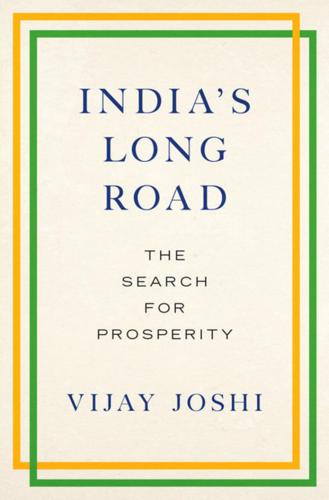
India's Long Road
by
Vijay Joshi
Published 21 Feb 2017
It is especially prevalent in the issue of permits at the retail level, the diversion of funds from the government’s transfer programmes, and ‘theft of time’ by government functionaries who are absent when they should be working. Reducing petty corruption will require various methods, including the use of technologies of e-governance. 48. See The Economist (2015). Examples of completely unrealistic targets are: Clean the river Ganges by 2019; eradicate tuberculosis and measles by 2020; build a hundred ‘smart cities’ by 2020; train 500 million people by 2022; roll out broadband in over 600,000 villages by 2017. 49. For a useful commentary on ‘Make in India’, see Sharma (2015). 50. These are very approximate numbers. See Birdsall (2015), Ninan (2015), and Pew Research Centre (2015). 51. See Kapur and Vaishnav (2014b). 52.
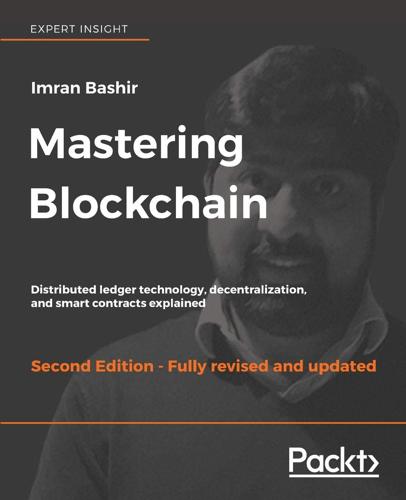
Mastering Blockchain, Second Edition
by
Imran Bashir
Published 28 Mar 2018
IoT can be defined as a network of computationally intelligent physical objects (any object such as cars, fridges, industrial sensors, and so on) that are capable of connecting to the internet, sensing real-world events or environments, reacting to those events, collecting relevant data, and communicating it over the internet. This simple definition has enormous implications and has led to exciting concepts, such as wearables, smart homes, smart grids, smart connected cars, and smart cities, that are all based on this basic concept of an IoT device. After dissecting the definition of IoT, four functions come to light as being performed by an IoT device. These include sensing, reacting, collecting, and communicating. All these functions are performed by using various components on the IoT device.
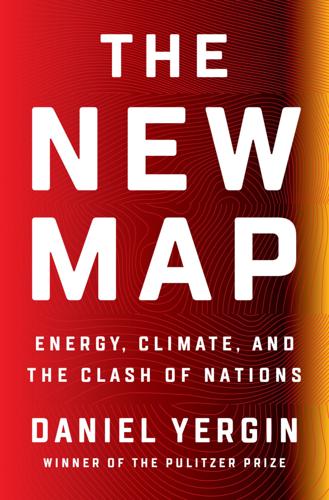
The New Map: Energy, Climate, and the Clash of Nations
by
Daniel Yergin
Published 14 Sep 2020
It is either a tool for countries to meet ambitious decarbonization goals or an opportunity for export, becoming a globally-traded commodity. Advanced manufacturing, including 3D printing, could have a major impact on energy use by reducing transportation costs. New technologies for buildings could make them much more energy efficient. Electric grid modernization and smart cities could apply digital technologies, increase resilience, and create two-way flows between energy suppliers and customers. Of critical importance will be large-scale management of carbon itself. Some dismiss carbon capture because they want a world in which there are no carbon emissions from human activity.
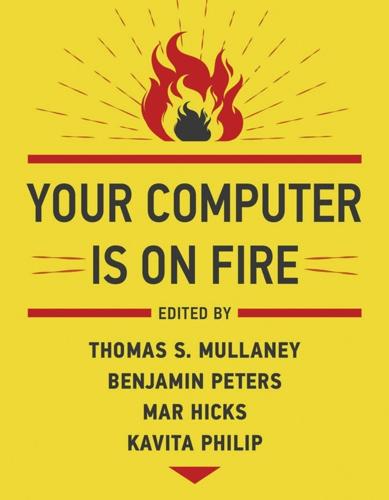
Your Computer Is on Fire
by
Thomas S. Mullaney
,
Benjamin Peters
,
Mar Hicks
and
Kavita Philip
Published 9 Mar 2021
She is known for her work on social media labor, policy, and culture, with expertise in commercial content moderation, a phenomenon she has been studying for a decade. She is cofounder, with Safiya Noble, of the UCLA Center for Critical Internet Inquiry, or C2I2. Sreela Sarkar is Associate Professor in the Department of Communication at Santa Clara University. Based on sustained ethnographic research, her publications focus on smart cities, new forms of capitalism, labor, and identities of class, caste, and gender in India’s acclaimed information economy. Corinna Schlombs is a historian of computing technology and culture with interests in gender and labor questions who works on productivity, automation, and capitalism in transatlantic relations.
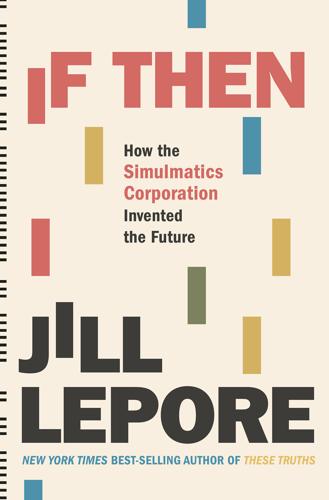
If Then: How Simulmatics Corporation Invented the Future
by
Jill Lepore
Published 14 Sep 2020
The real problem, he pointed out, was that no one was really doing what needed to be done to prevent riots, by addressing the problems that led to them.37 “I am not going to predict rioting here,” Martin Luther King Jr. told the press in Cleveland in June 1967. “This will be determined by the progress and responsiveness by those in positions of leadership.”38 But the fantasy of computer-aided riot prediction endured, as widely and passionately held as the twenty-first century’s fantasy that all urban problems can be solved by “smart cities,” and “predictive policing,” and that ongoing civil unrest and racial inequality and police brutality can be addressed by more cameras, more data, and more computers, and, above all, by predictive, what-if algorithms. The study Simulmatics conducted for the Kerner Commission consisted of two parts.

Beautiful Architecture: Leading Thinkers Reveal the Hidden Beauty in Software Design
by
Diomidis Spinellis
and
Georgios Gousios
Published 30 Dec 2008
His research interests cover object technology, programming languages, and software verification, including test, concurrency, and formal methods. He is also an active consultant and lecturer. William J. Mitchell is Alexander Dreyfoos Professor of Architecture and Media Arts and Sciences at MIT, where he directs the Smart Cities group in the MIT Media Laboratory and the MIT Design Laboratory. He previously served as Dean of the School of Architecture and Planning at MIT. His recent books include World’s Greatest Architect and Imagining MIT (both MIT Press). Derek Murray is a Ph.D. student at the University of Cambridge’s Computer Laboratory.
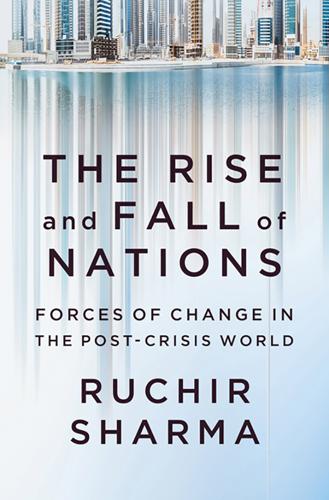
The Rise and Fall of Nations: Forces of Change in the Post-Crisis World
by
Ruchir Sharma
Published 5 Jun 2016
Economist, June 8, 2013. “The Nuclear Deal’s Other Winner.” Economist, July 25, 2015. Rickards, James. Currency Wars: The Making of the Next Global Crisis. New York: Portfolio/Penguin, 2012. “Russia Equity Strategy—Discerning Russia’s Regional Potential.” Deutsche Bank Research, October 4, 2013. Shapiro, Jesse. “Smart Cities: Quality of Life, Productivity, and the Growth Effects of Human Capital.” National Bureau of Economic Research, Working Paper no. 11615, September 2005. Sharma, Ruchir. “Europe’s Flying Geese.” Economic Times, November 19, 2007. “The Tricks of Trade: A Structural Change?” UBS Investment Research, November 13, 2013.
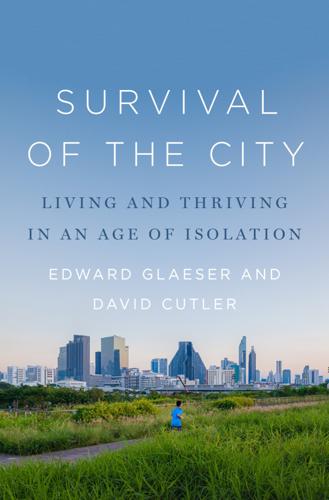
The Survival of the City: Human Flourishing in an Age of Isolation
by
Edward Glaeser
and
David Cutler
Published 14 Sep 2021
American Society for Microbiology, October 7, 2019. https://asm.org/Articles/2019/October/Eastern-Equine-Encephalitis-Virus-EEEV-the-Role-of. Echenberg, Myron. “Pestis Redux: The Initial Years of the Third Bubonic Plague Pandemic, 1894-1901.” Journal of World History 13, no. 2 (Fall 2002): 429–49. https://doi.org/10.1353/jwh.2002.0033. ECPA Urban Planning. “Case Study: The Boston Waterfront Innovation District.” Smart Cities Dive, 2017. www.smartcitiesdive.com/ex/sustainablecitiescollective/case-study-boston-waterfront-innovation-district/27649. “Ed Glaeser Slips on a Banana Peel.” Pioneer Institute, September 23, 2010. https://pioneerinstitute.org/news/ed-glaeser-slips-on-a-banana-peel. Ehrenkranz, N. Joel, and Deborah A.
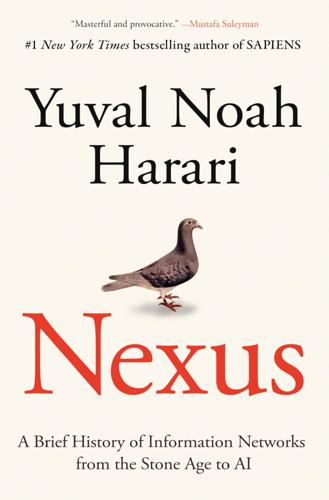
Nexus: A Brief History of Information Networks From the Stone Age to AI
by
Yuval Noah Harari
Published 9 Sep 2024
Four Children Missing for 10 Years Found at Once”, Xinhua Daily Telegraph, June 14, 2019, http://www.xinhuanet.com/politics/2019-06/14/c_1124620736.htm; Chang Qu, “Hunan Man Reunites with Son Abducted 22 Years Ago,” QQ, June 25, 2023, https://new.qq.com/rain/a/20230625A005UX00; Phoebe Zhang, “AI Reunites Son with Family but Raises Questions in China about Ethics, Privacy,” South China Morning Post, December 10, 2023, https://www.scmp.com/news/china/article/3244377/ai-reunites-son-family-raises-questions-china-about-ethics-privacy; Ding Rui, “In Hebei, AI Tech Reunites Abducted Son With Family After 25 Years,” Sixth Tone, December 4, 2023, https://www.sixthtone.com/news/1014206; Ding-Chau Wang et al., “Development of a Face Prediction System for Missing Children in a Smart City Safety Network,” Electronics 11, no. 9 (2022): Article 1440, https://doi.org/10.3390/electronics11091440; M.R. Sowmya et al., “AI-Assisted Search for Missing Children,” 2022 IEEE 2nd Mysore Sub Section International Conference (Mysuru: IEEE, 2022), 1–6. 29. Jesper Lund, “Danish DPA Approves Automated Facial Recognition,” EDRI, June 19, 2019, https://edri.org/danish-dpaapproves-automated-facial-recognition; Sidsel Overgaard, “A Soccer Team in Denmark Is Using Facial Recognition to Stop Unruly Fans,” NPR, October 21, 2019, https://www.npr.org/2019/10/21/770280447/a-soccer-team-in-denmark-is-using-facial-recognition-to-stop-unruly-fans; Yan Luo and Rui Guo, “Facial Recognition in China: Current Status, Comparative Approach and the Road Ahead,” Journal of Law and Social Change 25, no. 2 (2021): 153–179. 30.
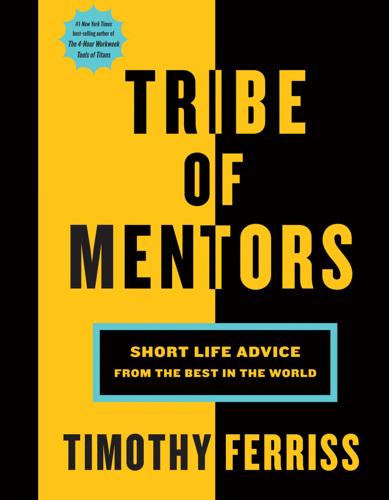
Tribe of Mentors: Short Life Advice From the Best in the World
by
Timothy Ferriss
Published 14 Jun 2017
But that worked for Uber because the laws were set locally, not nationally. That won’t be the case for most innovations in sectors like health care; if you launch a drug or medical device without getting approval, you’ll be stopped in your tracks. That will be the case with driverless cars on the roads and drones in the sky. It will be true with Smart Cities innovations. The list goes on. The bottom line is—like it or not—innovators in the Third Wave need to engage with policymakers to drive real innovation. In summary, the playbook that worked in the Second Wave, when the focus was on building software and services and driving viral adoption, generally won’t work in the Third Wave, as the Internet starts impacting some of the most fundamental aspects of our lives.
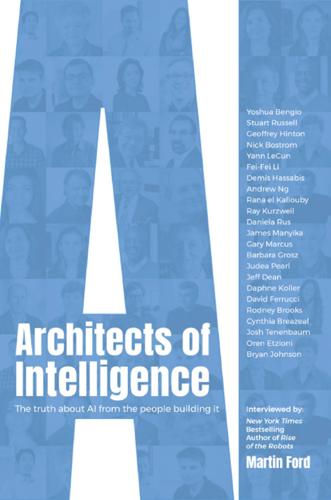
Architects of Intelligence
by
Martin Ford
Published 16 Nov 2018
Her research addresses some of the gaps between where robots are today and the promise of pervasive robots: increasing the ability of machines to reason, learn, and adapt to complex tasks in human-centered environments, developing intuitive interfaces between robots and people, and creating the tools for designing and fabricating new robots quickly and efficiently. The applications of this work are broad and include transportation, manufacturing, agriculture, construction, monitoring the environment, underwater exploration, smart cities, medicine, and in-home tasks such as cooking. Daniela serves as the Associate Director of MIT’s Quest for Intelligence Core, and as Director of the Toyota-CSAIL Joint Research Center, whose focus is the advancement of AI research and its applications to intelligent vehicles. She is a member of the Toyota Research Institute advisory board.
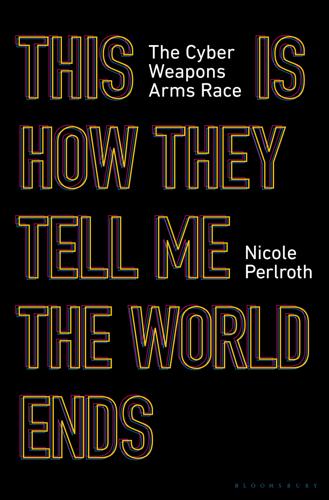
This Is How They Tell Me the World Ends: The Cyberweapons Arms Race
by
Nicole Perlroth
Published 9 Feb 2021
So he’d also taken it to Manhattan and San Francisco to prove that all were vulnerable to a cyber traffic apocalypse. I’d written about Cesar’s stunts for the Times. You would think lawmakers would do something, but they hardly blinked. Now here we were, Cesar and I, navigating potholes in Buenos Aires, where traffic lights were apparently optional. But at least they were offline! So-called smart cities were dumb. Dumb cities were smart. The whole system was backward and inside out. We made our way through Palermo, Buenos Aires’ hippest boutique-and-restaurant zone. American dollars went a long way here. The country’s official exchange rate was a complete fiction. The “blue dollar”—the unofficial exchange rate—was nearly twice the official rate of 9.5 pesos per dollar.

Deep Nutrition: Why Your Genes Need Traditional Food
by
Catherine Shanahan M. D.
Published 2 Jan 2017
Incredibly, the body is so ready and able to respond to signals that the most urgent signal of all—run for your life—produces astonishing gains in performance.562 How? Our physiology is our patient and faithful servant. And it is logical—you could say intelligent—in the way it responds. When stimulated to build more muscle, the body does exactly what a smart city planner might do in an expanding metropolitan center: it increases enzyme activity in the muscle to handle the increased workload (the equivalent of hiring more policemen, firemen, and so on), it increases blood flow to handle more nutrient and oxygen traffic, and produces more mitochondria to generate plenty of energy.

Lonely Planet Switzerland
by
Lonely Planet
Its interior is contemporary and relaxed, and the cuisine is modern European – think pasta, big salads and fish at lunchtime, creative tapas from 7pm, and brunch on weekends. Reserve in advance. 6Drinking & Nightlife Lausanne has a reputation for enjoying the good life and knowing how to party (in Swiss terms) in locations as diverse as edgy student digs, smart city cafes and refined waterfront bars. The re-imagined warehouse quarter Le Flon is the heart of the city's nightlife scene, with bars, clubs and cafes pulling big crowds for a city of this size, especially on Thursdays and weekends. Come dusk, many of the city's stylish cafe-bars and bistros morph into great places for lively tapas bars.

Scotland Travel Guide
by
Lonely Planet
Knight Residence APARTMENTS £££ ( 0131-622 8120; www.theknightresidence.co.uk; 12 Lauriston St; d apt per night £169-199, 2-bedroom apt £249-289; ) Works by contemporary artists adorn these modern one- and two-bedroom apartments (available by the night; the latter sleep up to four adults and one child), each with fully equipped kitchen and comfortable lounge with cable TV, video and stereo. It has a good central location in a quiet street only a few minutes’ walk from the Grassmarket. Smart City Hostel HOSTEL £ ( 0870 892 3000; www.smartcityhostels.com; 50 Blackfriars St; dm £9-22, tw £80; ) A big (620 beds), bright, modern hostel that feels more like a hotel, with a convivial cafe where you can buy breakfast, and mod cons such as keycard access and secure charging stations for mobile phones, MP3 players and laptops.